April showers
Howwalkingin therainboosts yourmood
The 10 best RSPB reserves to visit now


April showers
Howwalkingin therainboosts yourmood
The 10 best RSPB reserves to visit now

Walk with the ancients
Stroll into history on the Ridgeway
In Wainwright’s footsteps
How a Lake District newt inspired a genius
Si l days on the West Highland Way ectac a


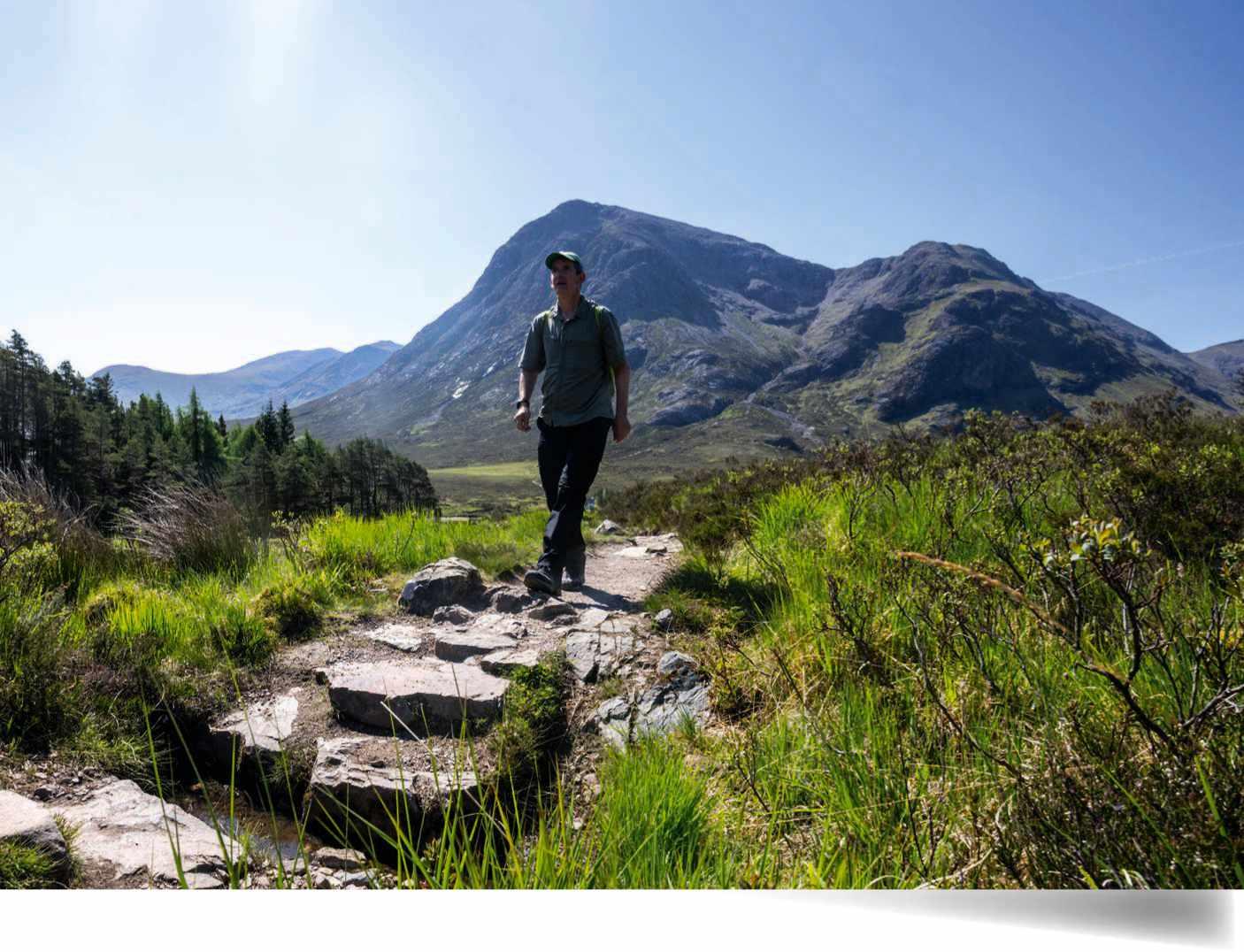

You may notice a bit of a walking theme to this issue. And why not? It is springtime now, after all, which traditionally sees people heading out into the countryside in greater number after the long winter months.
Walking in the wilds is such a tonic for my wellbeing. I’m no technophobe, but I spend so much of my time looking at a screen, both for work and hobbies, that I get a rush of euphoria when I step out into the countryside. I’m sure you know the feeling – it’s like I’ve escaped the modern world and rejoined the timeless and ageless circle of life. I’m free to do what I want, and I’m connected with the past and the future while experiencing nothing but the present.
Which brings me to two of my favourite parts of this island, both featured in this issue: the Scottish Highlands (p32) and England’s historic Ridgeway (p44). The former is a spectacularly beautiful place to roam. I recall many years ago gazing at those hills and thinking how much of a tiny blip on the Earth’s timeline I was.
But on another day, I remember draining my flask at Wayland’s Smithy and feeling connected to thousands of years of human history, a small but equally important cog in a wheel that’s been turning for thousands of years before me and will continue long after me. Enjoy your walk!
 Paul McGuinness, editor@countryfile.com
Paul McGuinness, editor@countryfile.com


Mary-Ann Ochota, ‘Walk the old way’, page 44
“The Ridgeway is a walk through the history of Britain. It’s also a walk into nature restoration – and the future.”

To subscribe or for subs enquiries:
Domestic telephone: 03330 162112
Overseas telephone: 01604 973720
Contact: www.ourmediashop.com/ contactus
Post: BBCCountryfileMagazine, PO BOX 3320, 3 Queensbridge, The Lakes, Northampton NN4 7BF
To talk to the editorial team:
Email: editor@countryfile.com
Telephone: 0117 300 8580 (answerphone; please email rather than call)
Post: BBCCountryfileMagazine, Eagle House, Bristol BS1 4ST
Advertising enquiries: 0117 300 8815
App support: http://apps.immediate.co.uk/support
Syndication and licensing enquiries (UK and international): richard.bentley@immediate.co.uk +44 (0)207 150 5168

Follow us on X (Twitter): @countryfilemag
Follow us on Instagram: @Countryfilemagazine
Like us on Facebook: www.facebook.com/ countryfilemagazine
Find us online for lots of bonus content: www.countryfile.com


Matt Gaw, ‘Rain relief’, page 98
“While we might associate wet weather with gloom and noir and misery, being out in the rain can actually boost our mood.”
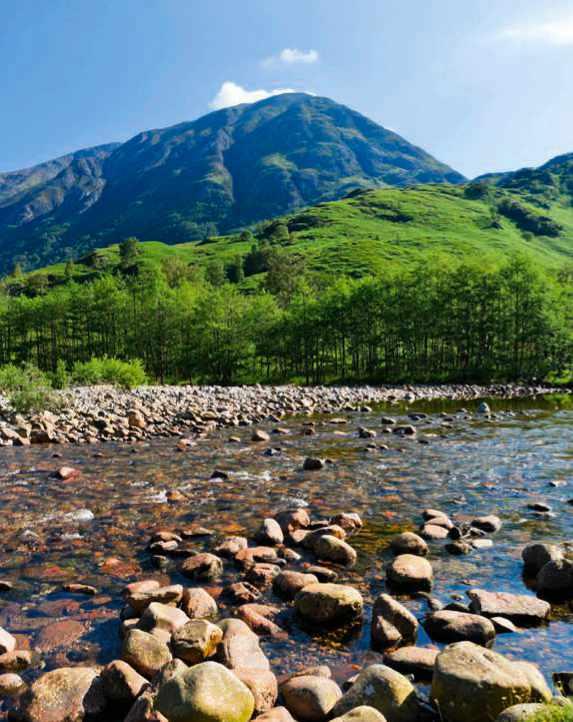
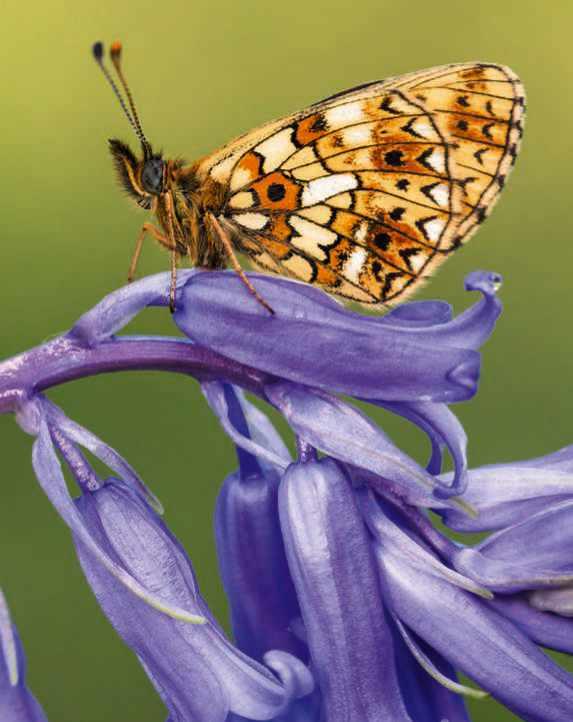
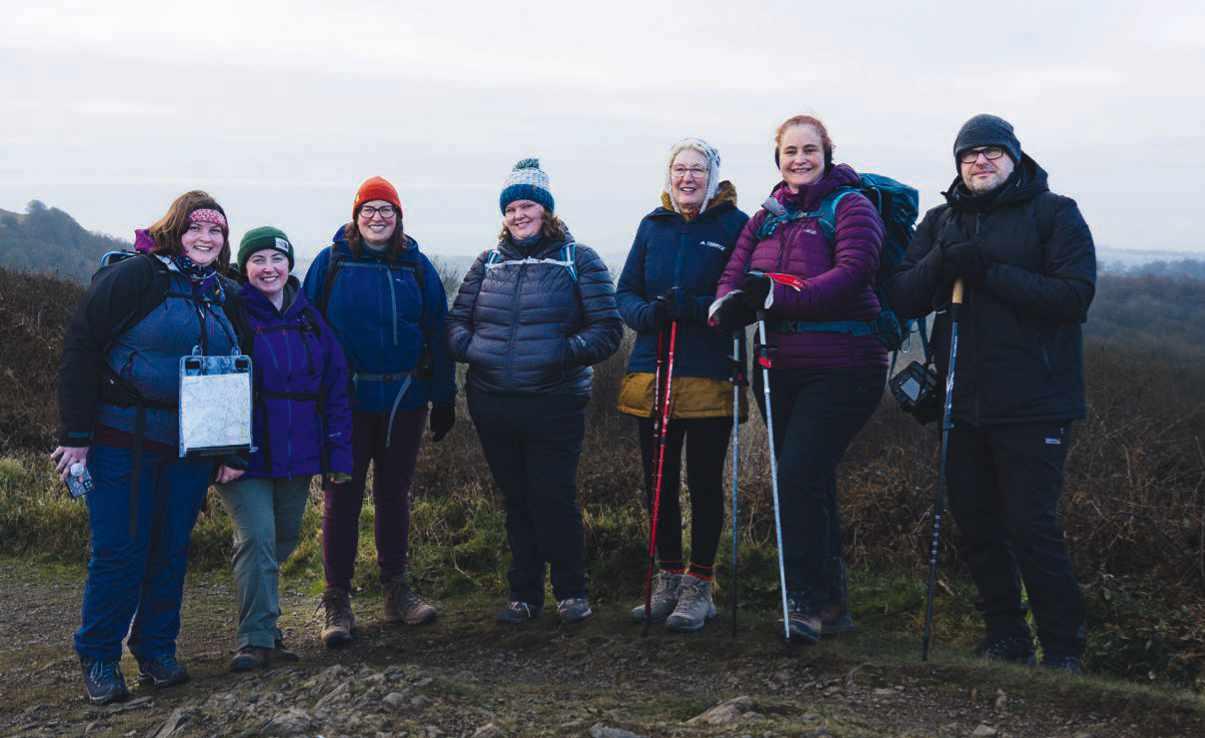
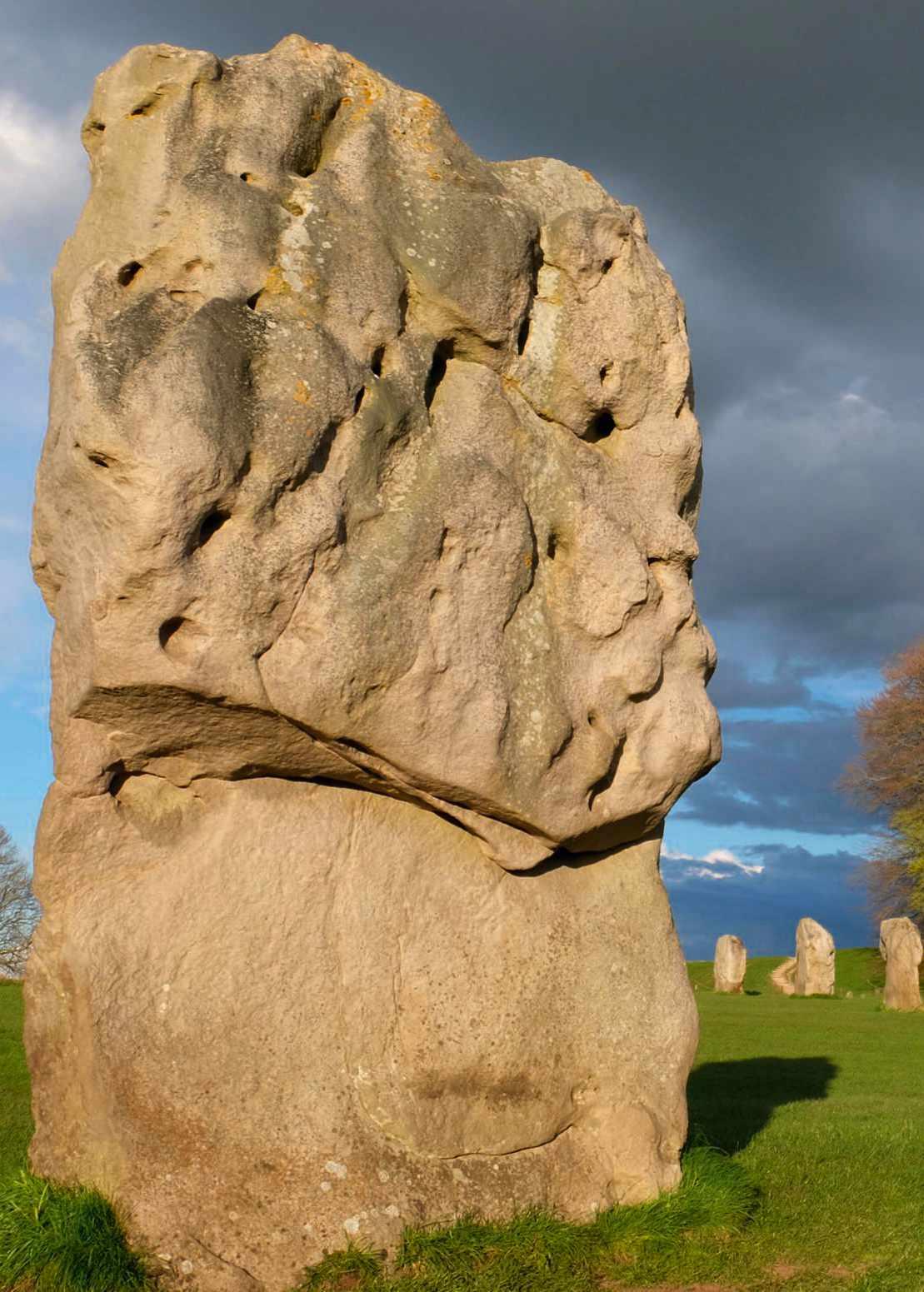
32 SCOTLAND’S GREATEST TRAIL: THE WEST HIGHLAND WAY
6–24 THIS MONTH’S HIGHLIGHTS
• Have a go at forest bathing.
• Fox cubs prepare to leave the den.
• Top chicken breeds for new keepers.
• How to forage and use wood sorrel.
• Bodnant Gardens in spring.
• High-tech maps reveal the health of England’s hedgerows.
• A spring haiku and Q&A with Poet Laureate Simon Armitage.
CS From the sparkling shores of Loch Lomond to the soaring peaks and hanging valleys of Glen Coe, discover the many wonders of the West Highland Way on a six-day adventure with Dixe Wills.
44 WALK THE RIDGEWAY
CS Stone circles, Iron Age hillforts, ancient burial mounds... author and anthropologist Mary-Ann Ochota travels along the Ridgeway through southern England’s mystery-laden chalklands.
52 PLUS-SIZE IN THE OUTDOORS
Plus-size people can face many barriers to being active outdoors – but a new group is working hard to change that.
63 TOP 10 BIRD HAVENS
CS
Witness the UK’s greatest avian spectacles this spring at our pick of the RSPB’s most remarkable reserves.
74 IN WAINWRIGHT’S FOOTSTEPS
CS Vivienne Crow scales a Lake District peak in search of the remote pond that inspired great writer Alfred Wainwright.
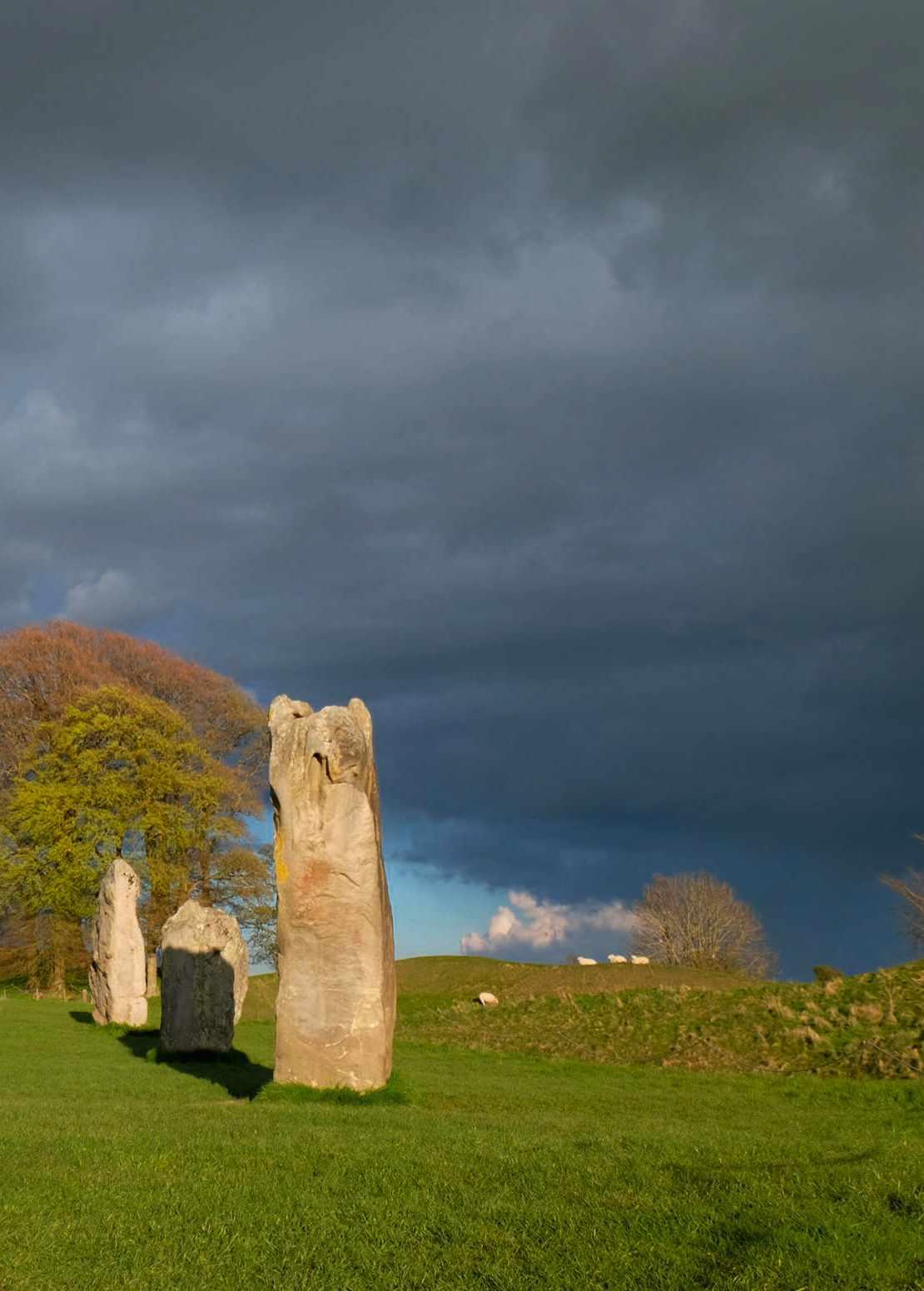
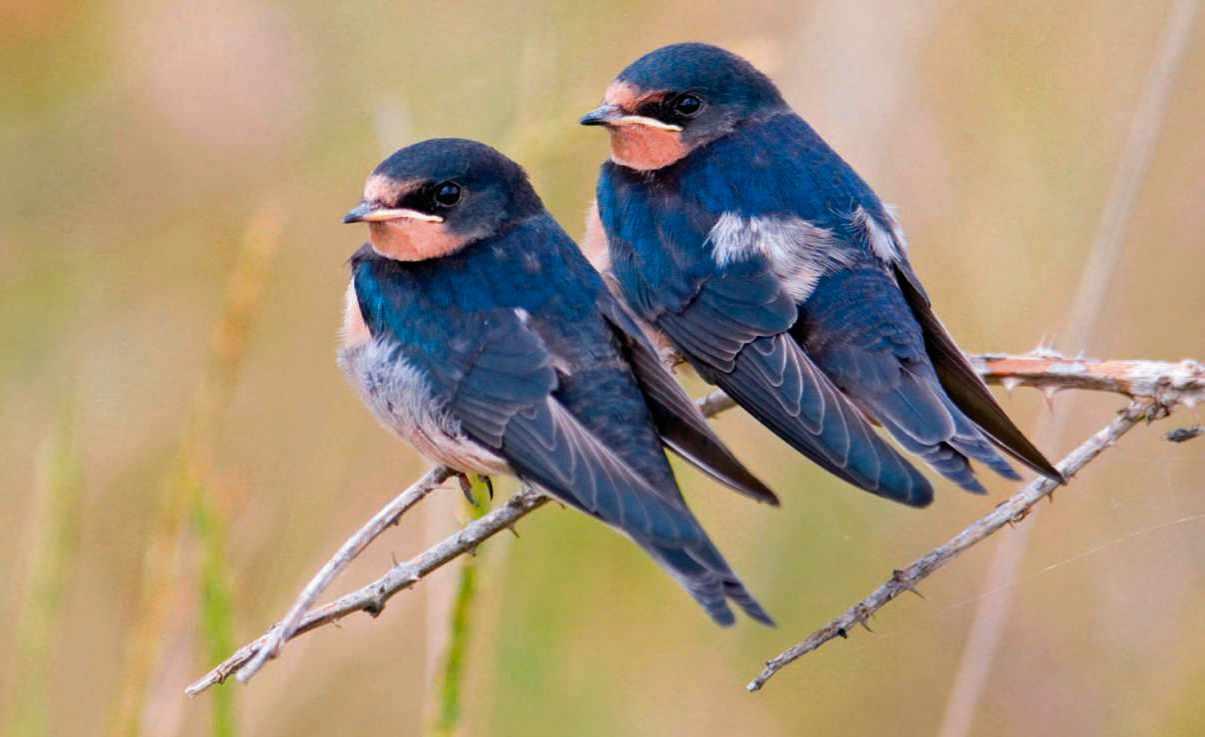
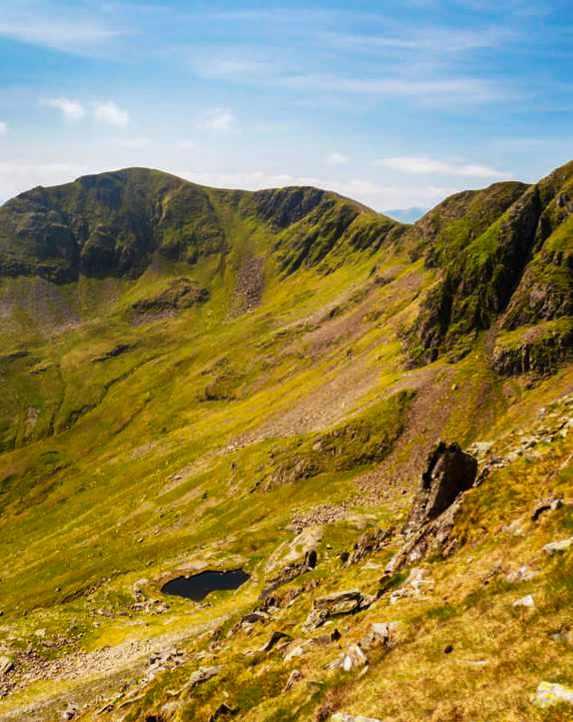
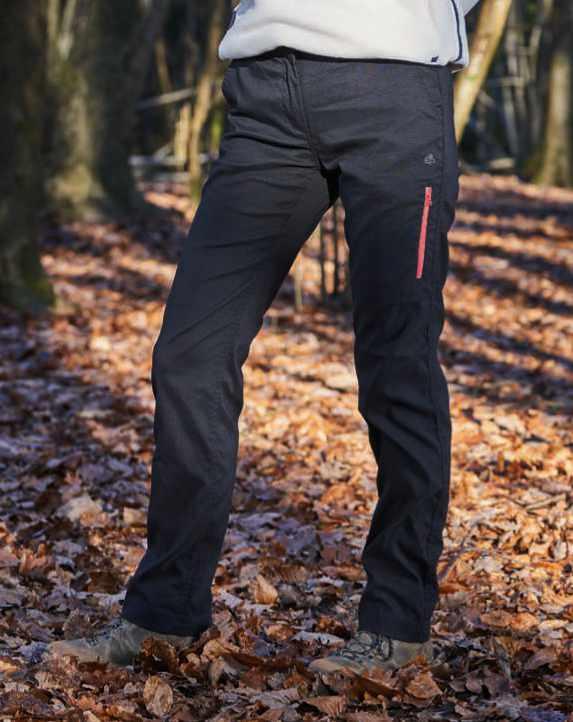
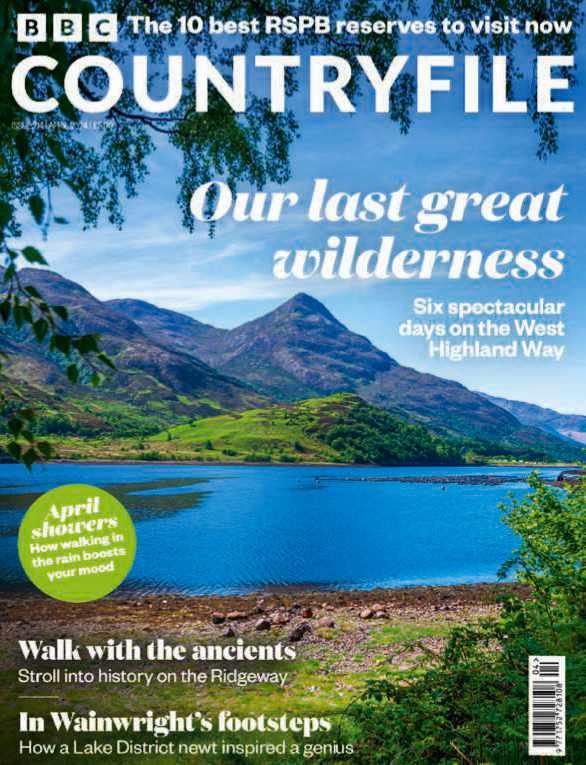
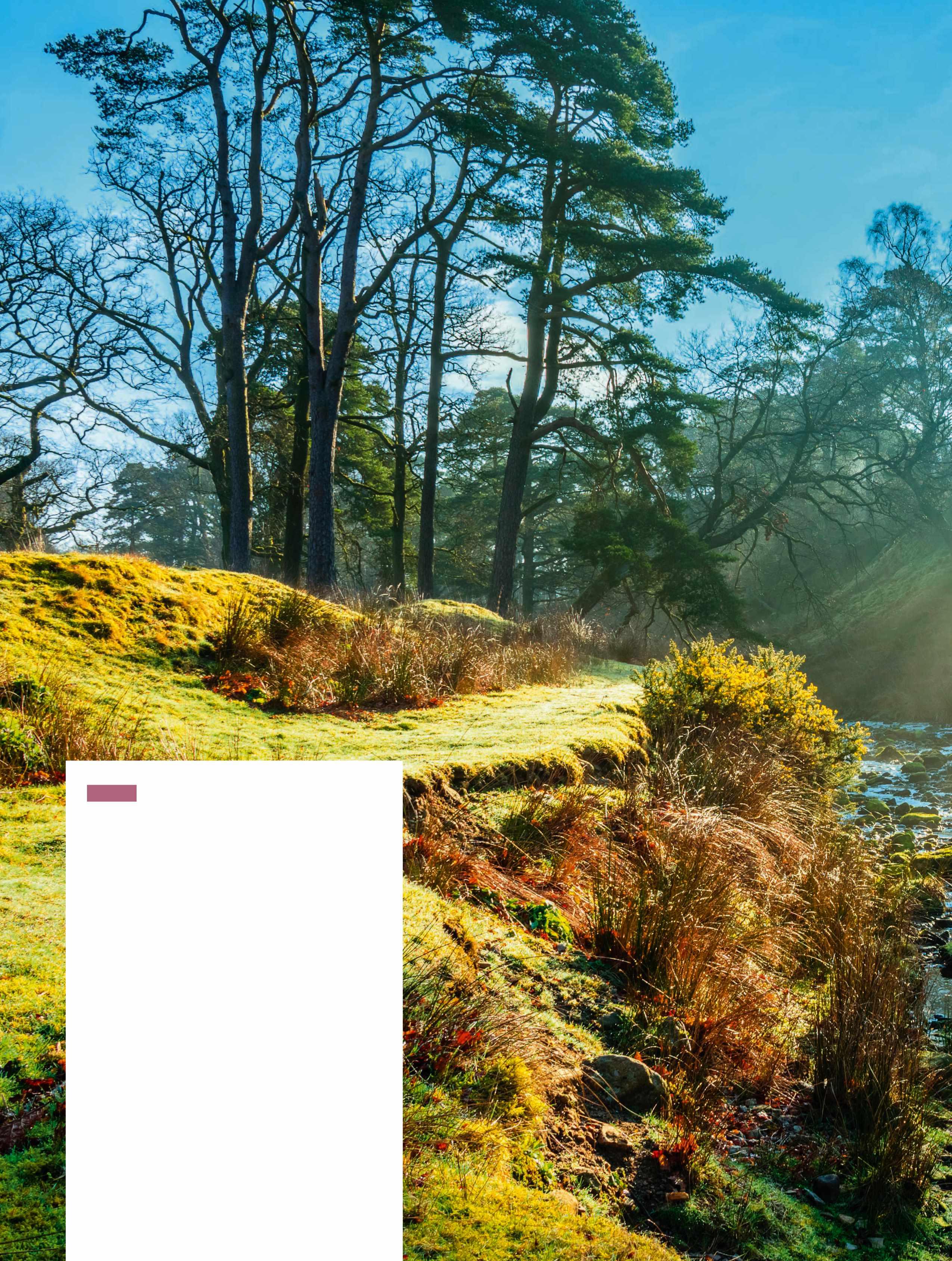
Source crystal-clear rivers with a new app – and go with the flow
For an exhilarating April day out, take an early morning walk by a beautiful river, such as the Marshaw Wyre in Lancashire.
Fresh from the spring on the Marshaw Fell in the Forest of Bowland, its clear waters tumble down to the hamlet of Abbeystead, merging to form the Wyre River. The stream’s burbling, sparkling flow is bound to boost the mood.
If you’re wondering whether your local river is as clean as this upland tributary, there’s now an easy way to find out. Environmental charity The Rivers Trust has launched a new interactive app, with information about the state of rivers all over the UK. To find out more, visit theriverstrust.org
SPOT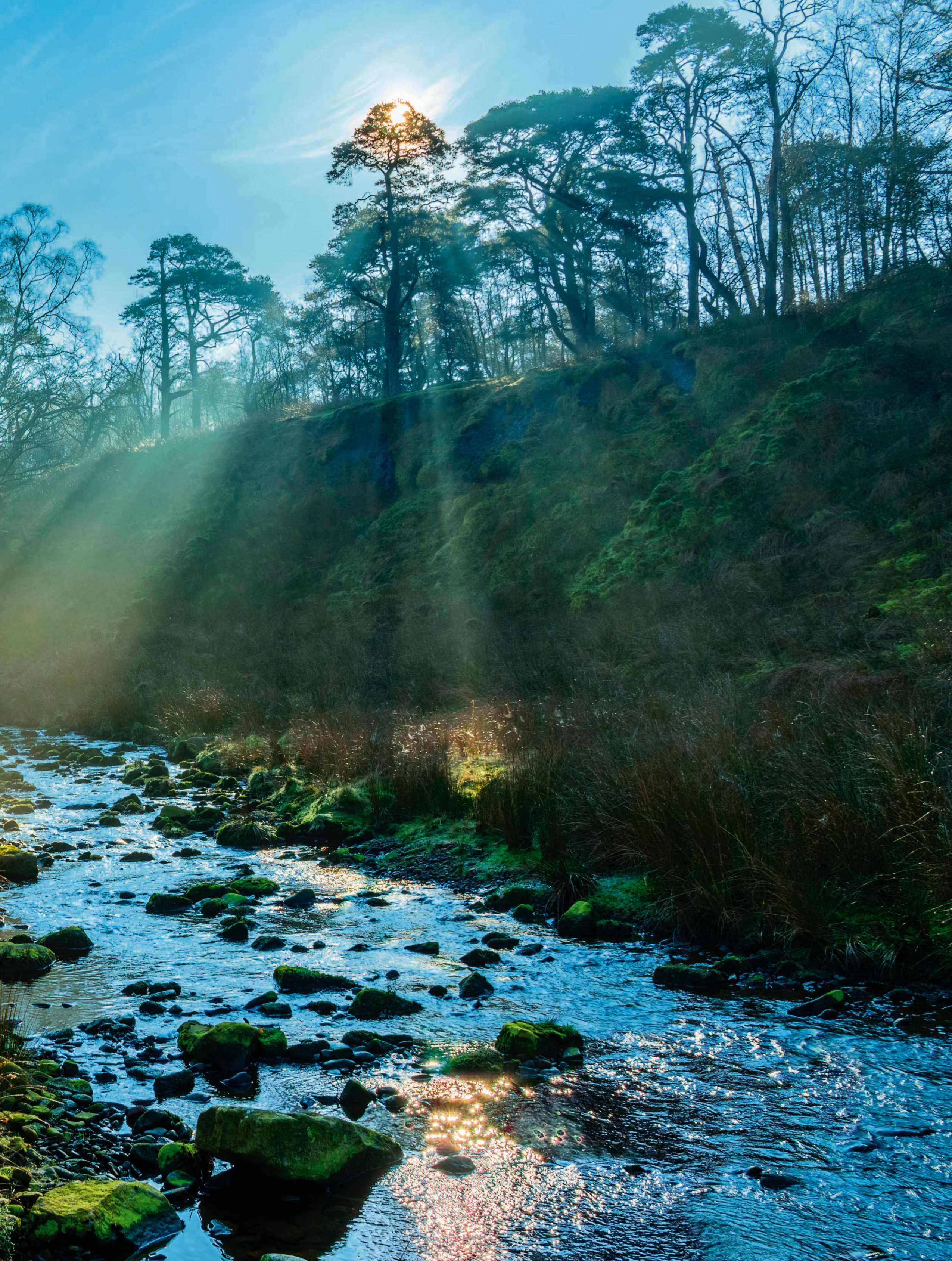

The striking bird is thriving in Scotland
The drumming of woodpeckers is echoing through more Scottish woodlands than ever this spring, according to a new report.
A major new survey of Scotland’s birds shows that greater spotted woodpeckers are among the species flourishing, with numbers up by more than 500% since 1994.
But there’s a downside to the survey by NatureScot, the body that advises Scottish ministers on natural heritage. It shows that some species are struggling, with upland birds the worst affected. Black grouse, curlew and dotterel numbers are down by more than 50%. Why? It’s a result of climate change, says NatureScot, especially the increasing summer rainfall.
SPOT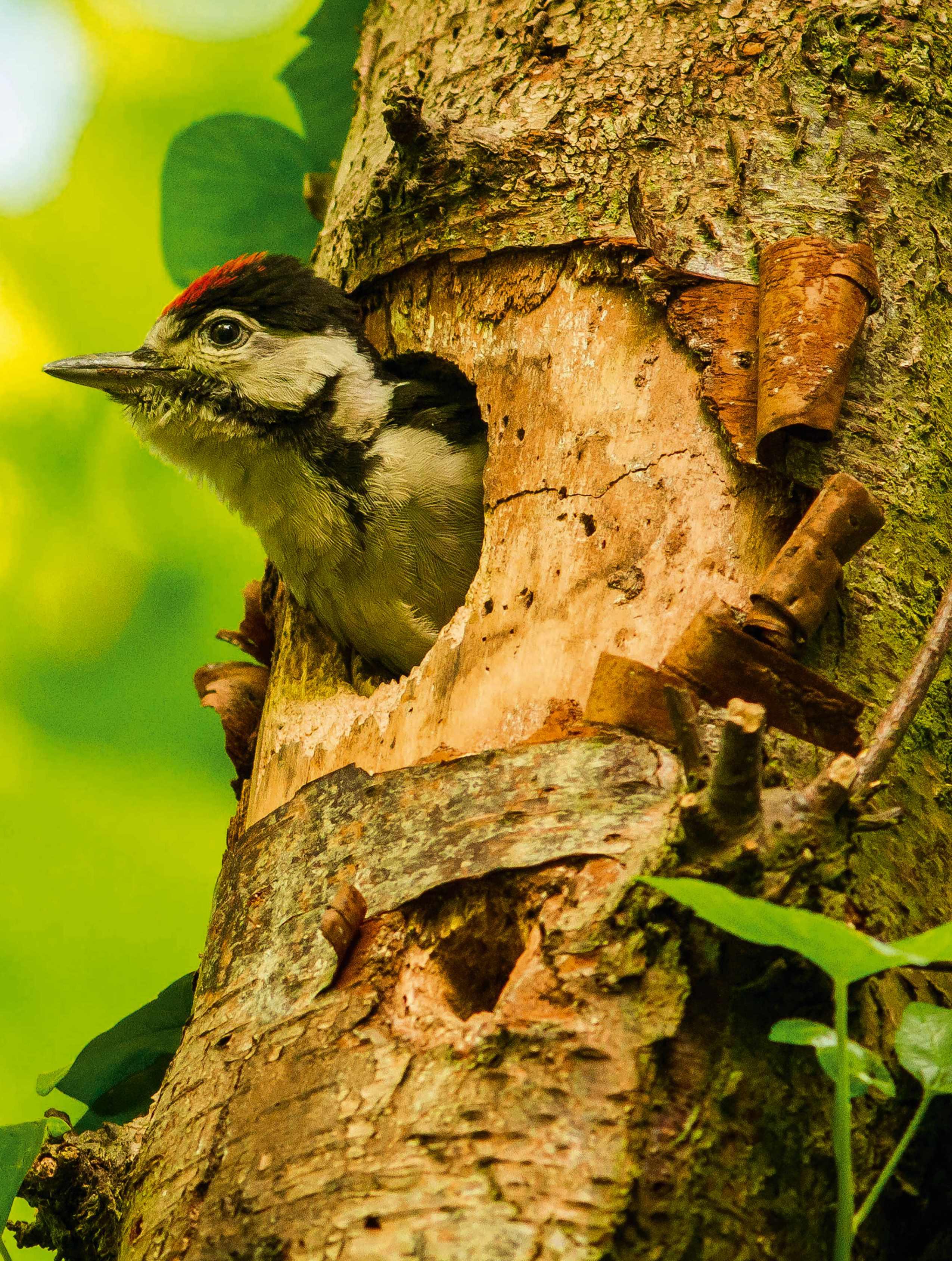
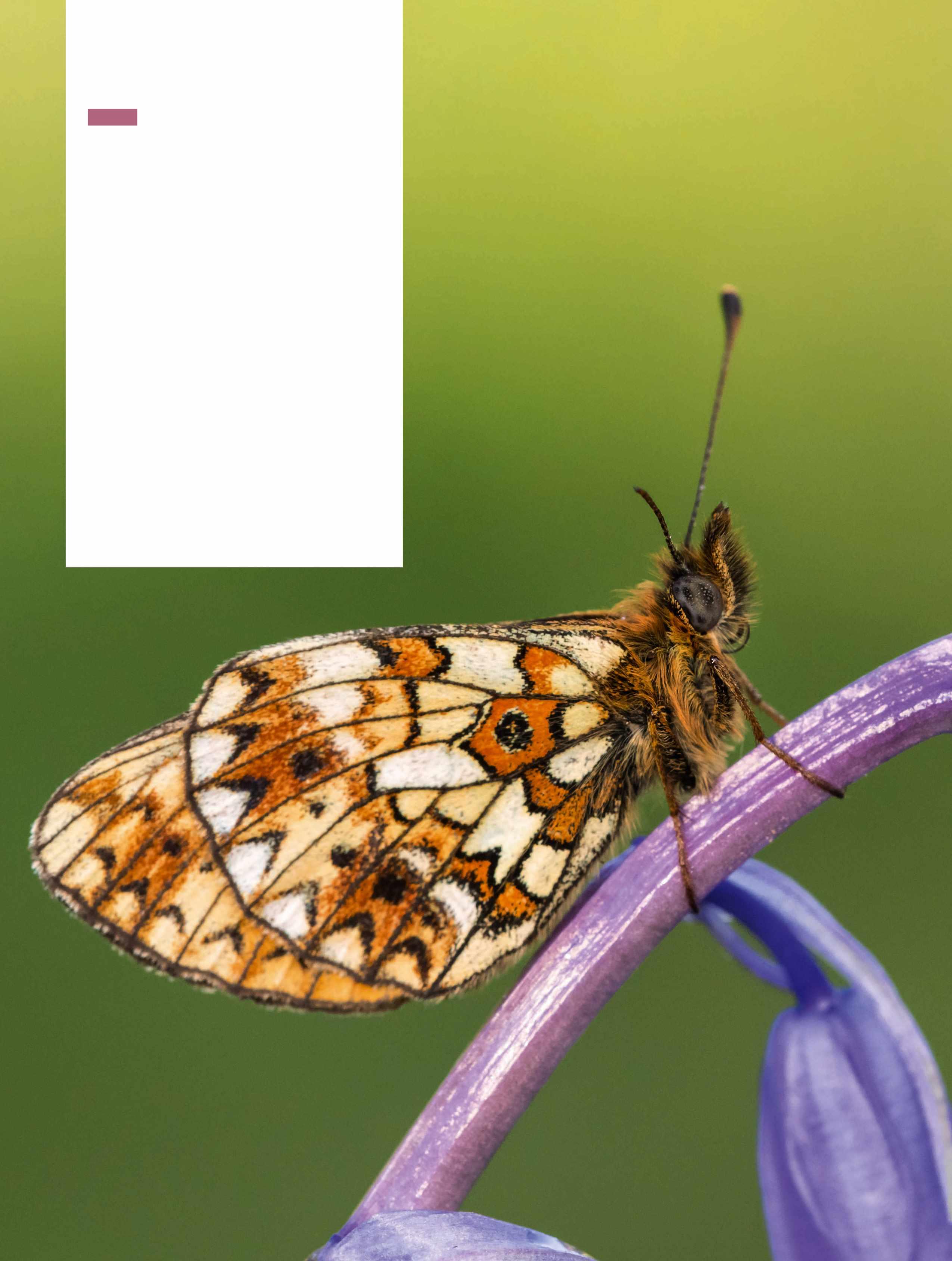
Watch the dance of fluttering insects and nodding blooms
Two small pearl-bordered fritillaries rest on a bluebell in Marsland Mouth, North Devon. These rare and delightful butterflies get their name from the ‘pearls’ that line the edge of the underside hind wings.
Emerging as early as April, small pearl-bordered fritillaries can be found in woodland clearings or bracken-clad hillsides, feeding on spring flowers such as bugle and bluebells. Billions of bluebells flourish in the UK: about half the world’s population. They flower in April and May, forming vast pools of gorgeous blue blooms on the forest floor.
Look for the blooms in ancient woodland, but also in hedgerows and open hillsides. But bear in mind the old tale: if you pick a bluebell, you will fall under a fairy spell, wandering lost forevermore.
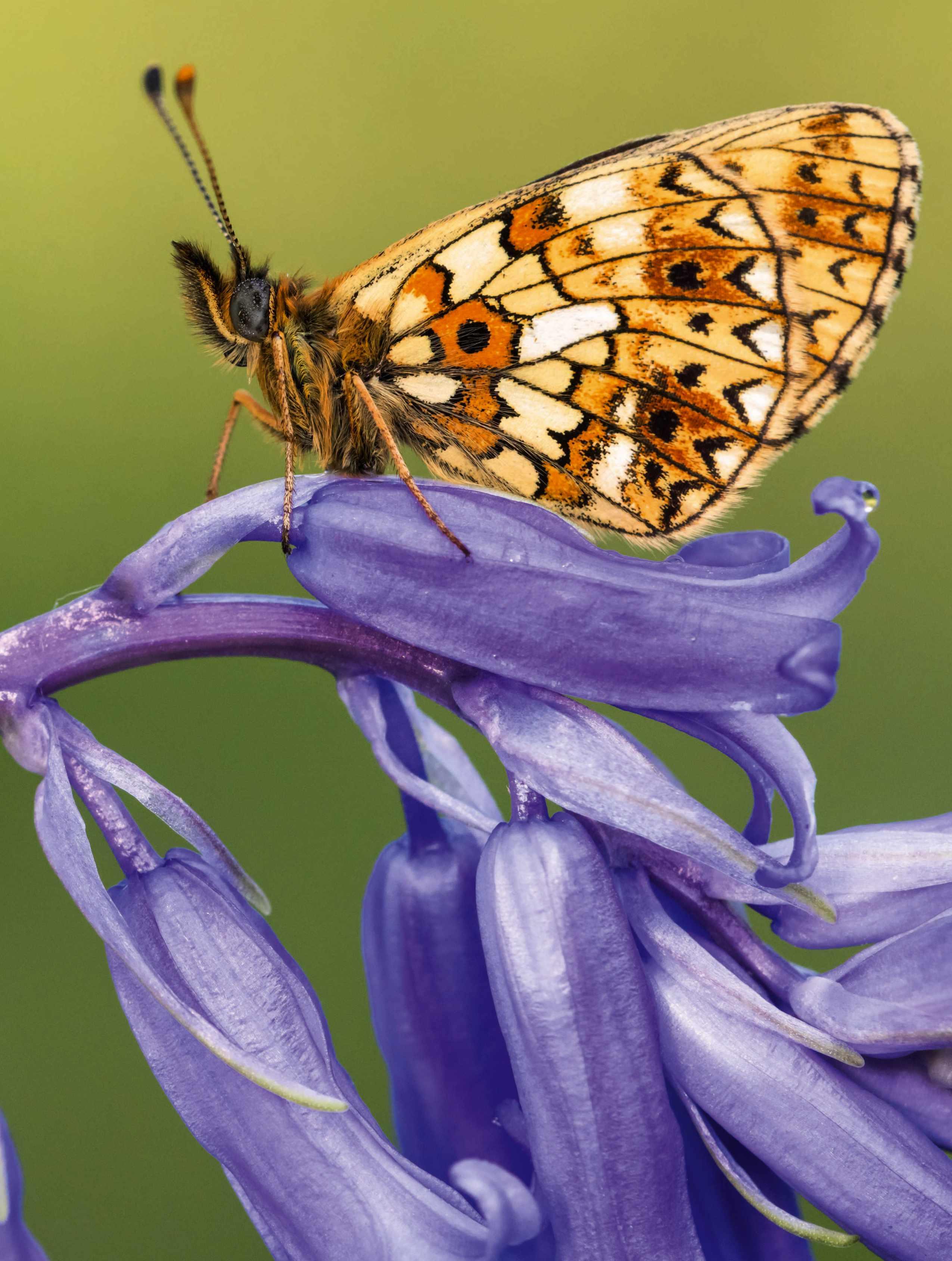
What does it take for women to live and work in the wild?
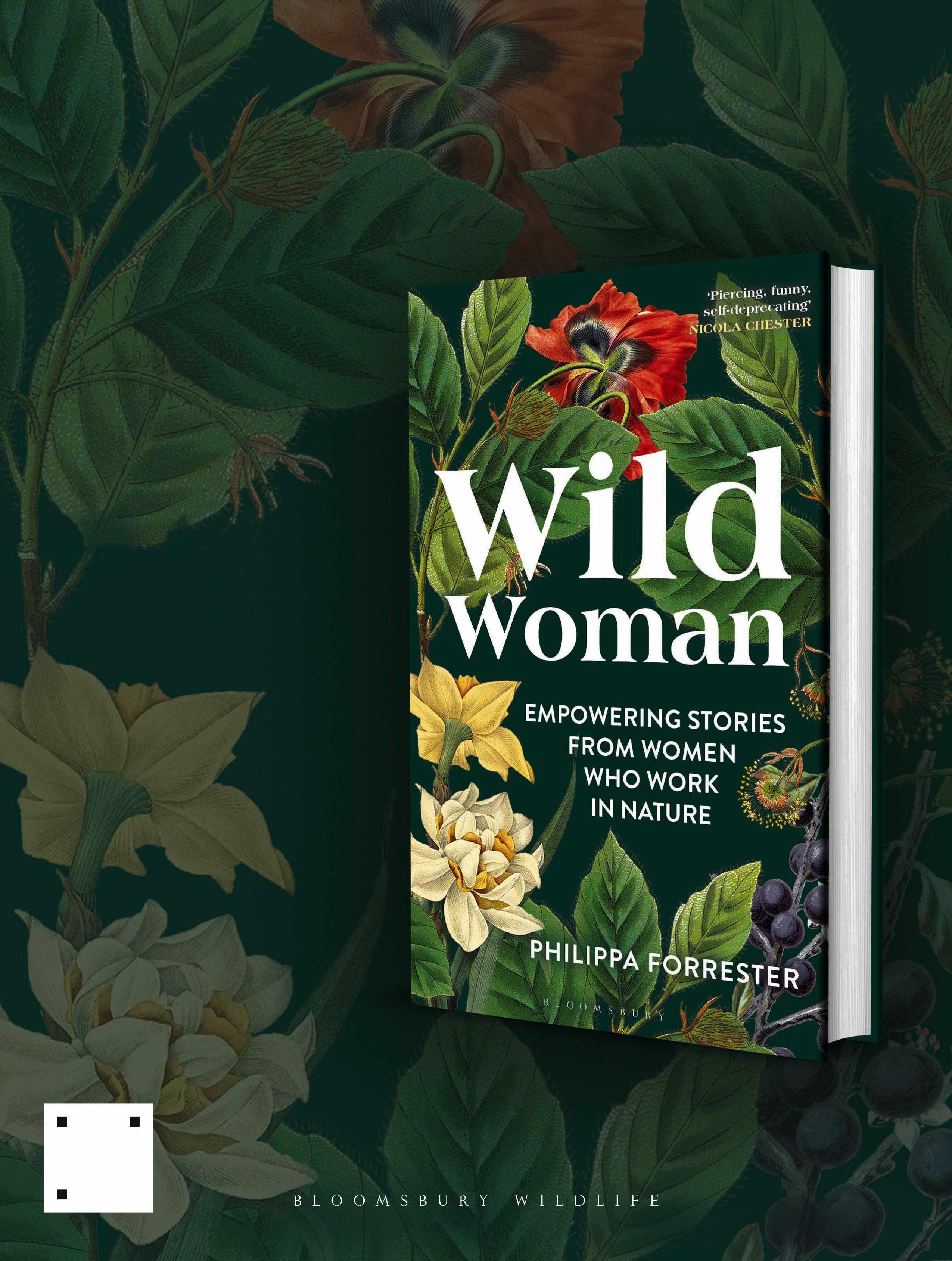
‘Piercing, funny ... delightfully brilliant’
NICOLA CHESTER
‘A timely reminder of the feminine energy behind some groundbreaking successes in global wildlife conservation’
SOPHIE PAVELLE
‘A powerful testament to why women must have a greater say’
MIKE DILGER
By late summer, ‘teenage’ cubs are lean and lanky
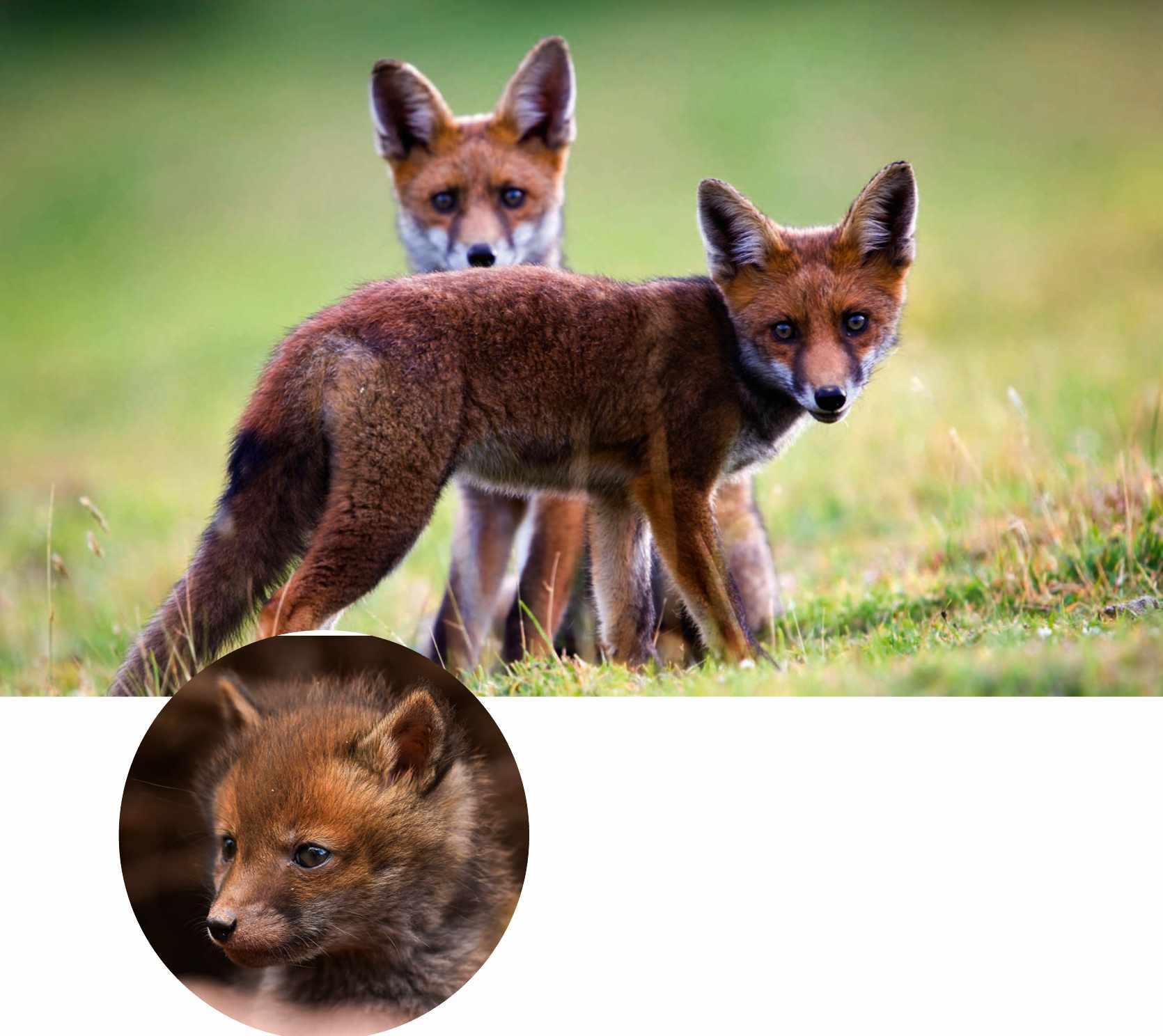
At one month old, cubs start to explore and can eat solid food
Young foxes will be emerging from their dens this month
Words by Adele Brand
Fox cubs are born in spring: their bodies are dumpy, their fur is dark chocolate, their eyes wide and blue. They would have been born somewhere under the woodland floor, or under a shed floor or below garden decking, and are deaf and blind at the beginning, weighing about 100g. Cubs grow fast on the vixen’s fatty milk, and in a few weeks will be unmistakably vulpine. They chase each other through meadows and gardens, perhaps exploring trampolines or stealing shoes. Their hunger will then be for earthworms – so important is this package of protein, iron and zinc that earthworm availability in early summer appears to affect the cub’s final body size as an adult.
If you have foxes in your garden, let cubs keep their distance. It may be tempting to hand-feed a cub, but it’s not in their interest to teach them to trust. Any apparent orphans should be referred to a wildlife rescue service; it’s essential to raise young foxes in groups to give them the skills they need to survive.

Spring sun awakens this tiny friend
Words by Adele Brand
Ladybirds awake after spending all winter in ivy, bark and stonework and spread their wings: they are hungry. We love their appetites. So effective are ladybirds at eating aphids on crops that they have been used for biological control since at least the 19th century.
Not all the UK’s 46 species are red and black. The cream-spot ladybird, for example, sports chestnut-coloured wing cases splodged with off-white patches. Ladybirds in the traditional colours are likely to be the two-spot or seven-spot species, or the non-native harlequin.
Sit down in a woodland and tune in to the sounds and smells around you
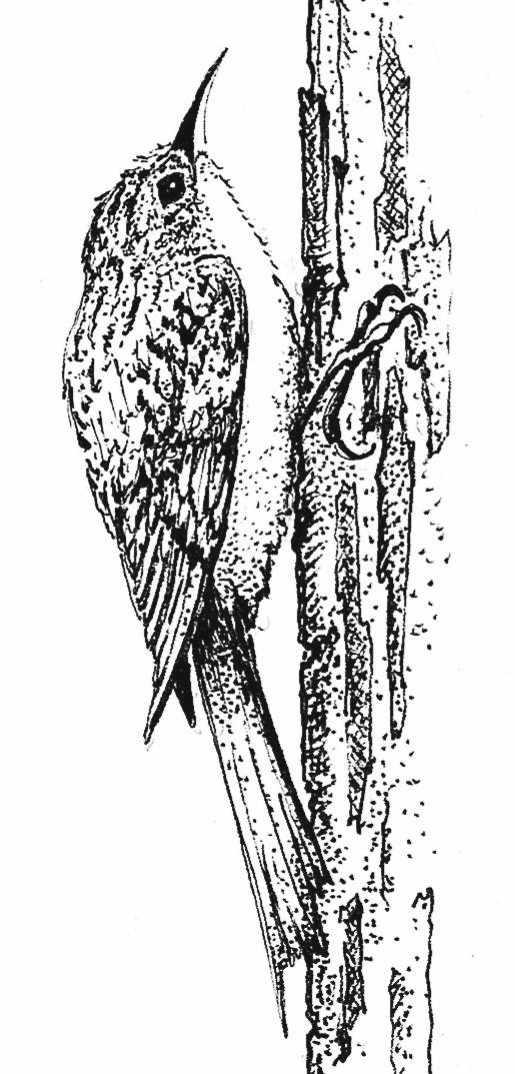
Take some time to appreciate nature with this month’s noticing exercise.
April is a month of bustling busyness in the natural world, and yet this increased activity can be easy to miss in the midst of the frenzy of our human lives.
Make sure you look after yourself by finding a different way to interact with the natural world around you this month, and by noticing with all your senses.
Why not try a spot of forest bathing? Find a comfortable spot under trees and tune into the woodland around you. Turn off your phone and be still, even if it’s only for a few minutes. Watch for movement – you may be surprised by how many small rustlings and flutterings you start to hear and see. Notice and smell the fresh greens around you.
From Nature’sCalendar:TheBritish Yearin72Seasons(Granta) by Kiera Chapman, Lulah Ellender, Rowan Jaines and Rebecca Warren.
Aside from fresh eggs, there are many benefits to keeping chickens. They are very therapeutic creatures to have around and don’t need much to thrive: clean surroundings, a stress-free environment, fresh feed and water, access to grit and grass, perches, clean bedding and somewhere to dust-bathe. The choices of breeds are varied, but here are a few that are long-established and always welcome new keepers.
Words by Grant Brereton. Visit the Poultry Keeper website for an extensive list of chicken breeds (poultrykeeper.com)

The Light Sussex is just one variety of the Sussex breed, but by far the most popular. Its white body plumage with contrasting black markings, mainly in the neck and tail areas, make it undeniably attractive. It has a single comb, and most strains are hardy, placid and reasonably good layers of tinted eggs. There are both large fowl and bantam versions available. This variety is a true British gem, created in the 1860s from light brahmas and Dorking fowl.
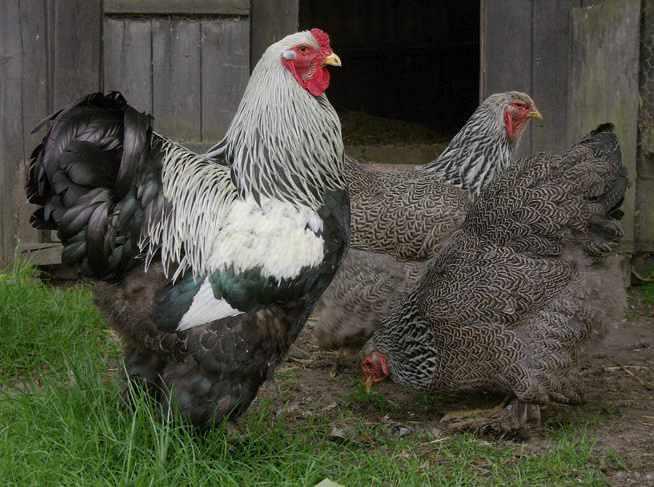
The Brahma is a huge big-boned fowl that has a ‘stately’ gait. It developed in the US from imported ‘Shanghai fowl’ and was perfected in the UK after a consignment of birds was sent to Queen Victoria in 1852. With a charming disposition, this breed has a unique feature: its brow, formed by a wide skull and slightly overhanging feathers above the eyes, making them appear ‘hawk-like’. It has heavily feathered legs, and comes in large fowl and bantam sizes.
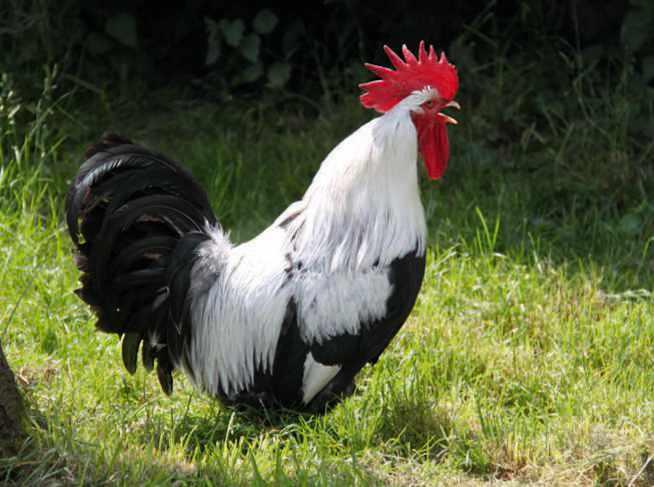
The Dorking is considered Britain’s oldest breed, and believed by many to have been brought over by the Romans. The most popular variety is the silver-grey, where the female is predominantly silver with a whitish neck and salmon-coloured breast. The male (pictured) has black in the breast, wing bar and tail, with the remainder of its plumage white. This calm ‘meat breed’ has relatively short legs and a long, deep body with five toes, not the usual four, on each foot.
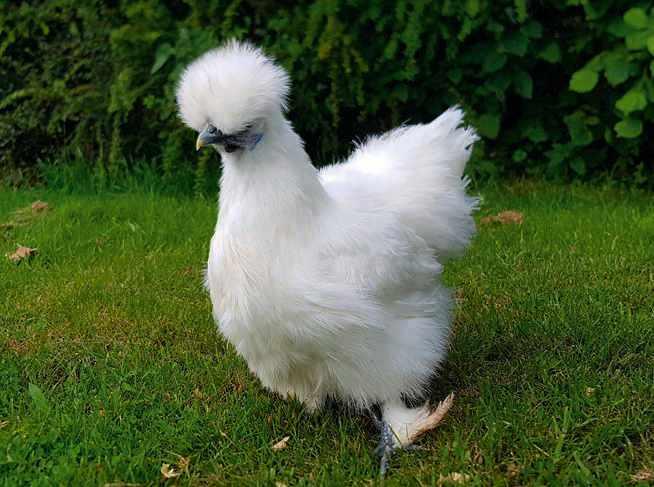
The silkie breed, originating in China, has a special kind of feather that looks very similar to fur. This is caused by the feather barbules not ‘hooking’ together as they do in other chickens. The silkie is a very placid breed renowned for its mothering qualities and is good for children. It has black skin and five-toed moderately feathered feet. Its crowning features are its rose comb and crested head. Silkie bantams were only established in the UK in the early 2000s.

The Buff is by far the most popular of the Orpington varieties and was created here in the UK by William Cook in the 1890s. Its orangeybuff plumage is striking. Its most famous devotee was Queen Elizabeth, the Queen Mother, whose birds were tended to by Royal Poultry Keeper, the late Will Burdett MBE. The Orpington is profusely feathered and has white legs and a short single comb. Its temperament is graceful but active.
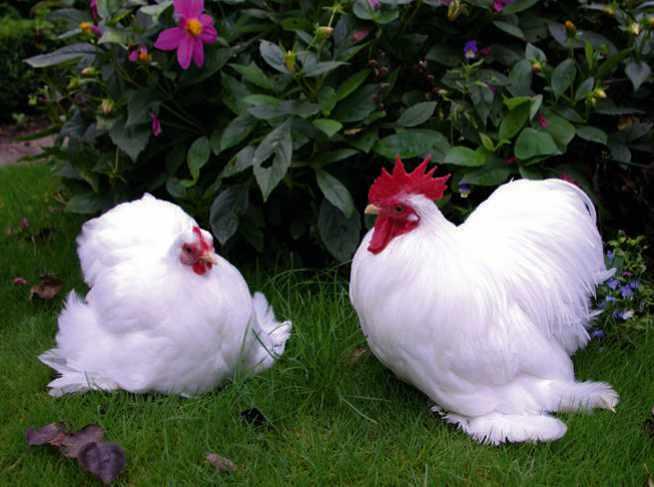
PEKIN
The Pekin is a great breed for children and, being a true bantam with feathered feet, is suited to smaller spaces. A good specimen looks like it is sitting down when standing, and the head should sit lower than the tail giving the appearance of ‘forward-tilt’. With its soft feathers, small size and tame personality, the Pekin positively enjoys being handled. Its comb is single and its legs are yellow. There are many different colour options to choose from.
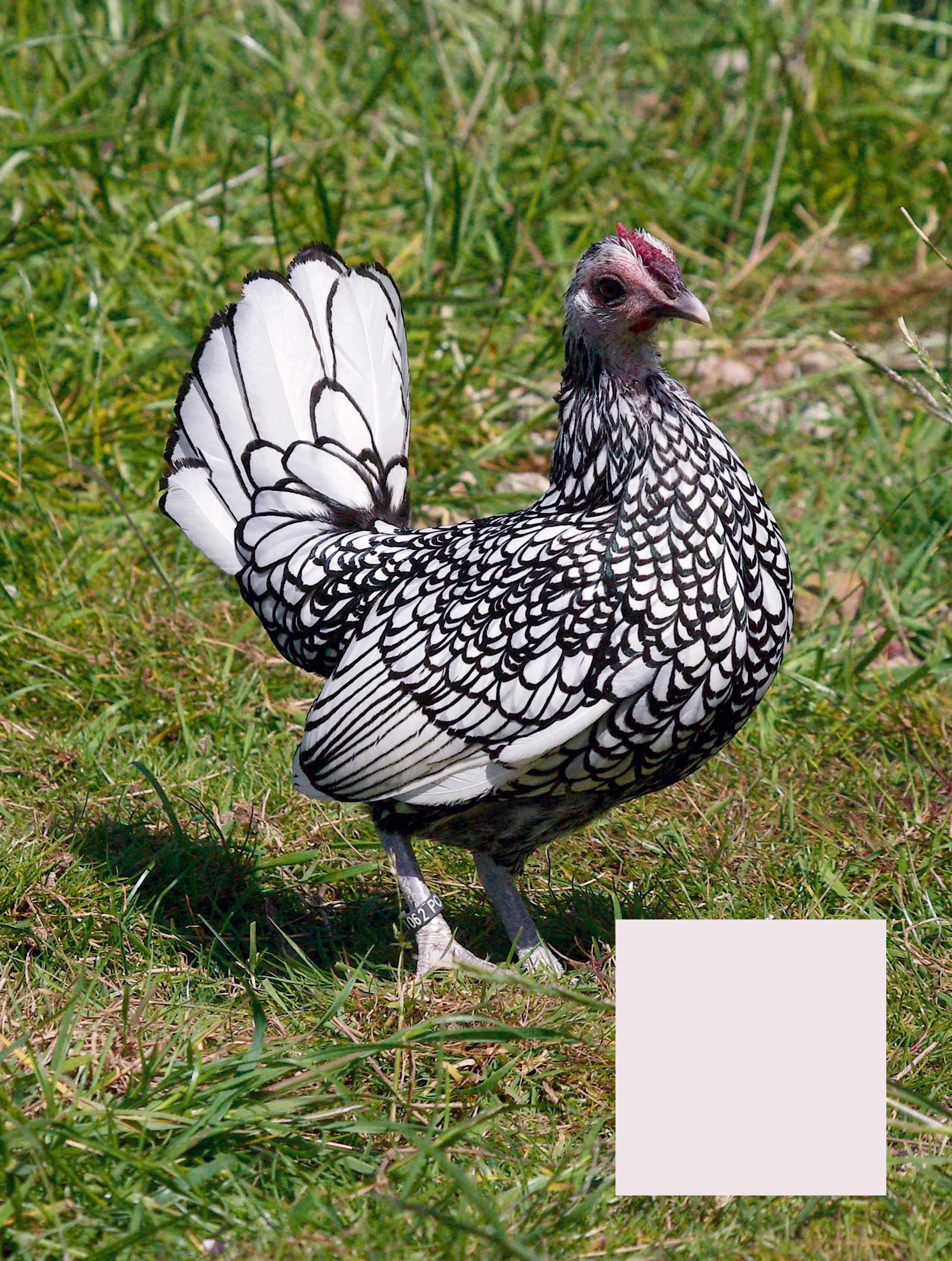
Sebrights are diminutive true bantams that are breathtaking in appearance. They are available in a few colour varieties, but only two are officially recognised: the gold and silver. Their plumage is either golden-brown (the gold) or white (the silver, pictured) and each feather is edged with black lacing. They were created in Britain by Sir John Sebright in the 1840s. The males boast beautiful ‘hen-feathering’, which means their plumage is virtually identical to the females. They have ‘sprightly’ personalities, and surprising confidence for such tiny fowl.
Photo: AlamyTake time to notice the little things as you walk through the woodlands in spring and summer. One of the first to carpet the understorey is white-flowered, lemon-tasting wood sorrel.
Thriving on the edges of woodlands and hedgerows across the British Isles, abundantly flowering wood sorrel (Oxalis acetosella) provides a feast of pollen and nectar for early pollinators.
The whole plant is edible to humans – the tangy, tender leaves are ideal as a thirst-quenching, mid-walk pick-me-up or taken home to make tea or add a lemony zing to salads, desserts, soup or fish dishes.
Carpets of wood sorrel proliferate at the base of trees where the ground is damp and shady and has been left undisturbed for long periods of time. Follow the earthy smell of moss as you wander through the woods in early to mid-spring and you’re likely to find clumps of this native perennial arising from light-dappled soil, but also from mossy tree stumps. Wood sorrel prefers wellestablished woodland and is therefore considered an indicator of ancient forests.
The plant’s distinctive foliage – three brightgreen heart-shaped leaflets joined at the tips that emerge in a rosette from which delicate nodding stems of white, purple-veined flowers arise –makes it easy to recognise. Forage the plant sparingly to avoid disturbing the ecology, or grow some in your own garden. It looks especially pretty at sunrise, just after the flowers and leaves open after folding up for the night – security against stormy weather and high dew.
Wood sorrel was traditionally used as a medicinal herb to treat scurvy and mouth ulcers – it is now known to be high in vitamin C – as well as relieve nausea and digestive issues. The acid taste (Oxalismeaning sour, acetosellameaning vinegar salts) is due to the presence of oxalic acid, also found in rhubarb, coffee and Rumexspecies of sorrel. Too much of this crystallising compound can cause kidney stones and slow blood clotting, so only ingest wood sorrel in small quantities; avoid it if you have health issues.
Due to its Easter appearance, wood sorrel was named ‘alleluia’ by monks, a fitting greeting for one of our loveliest harbingers of warmer weather.
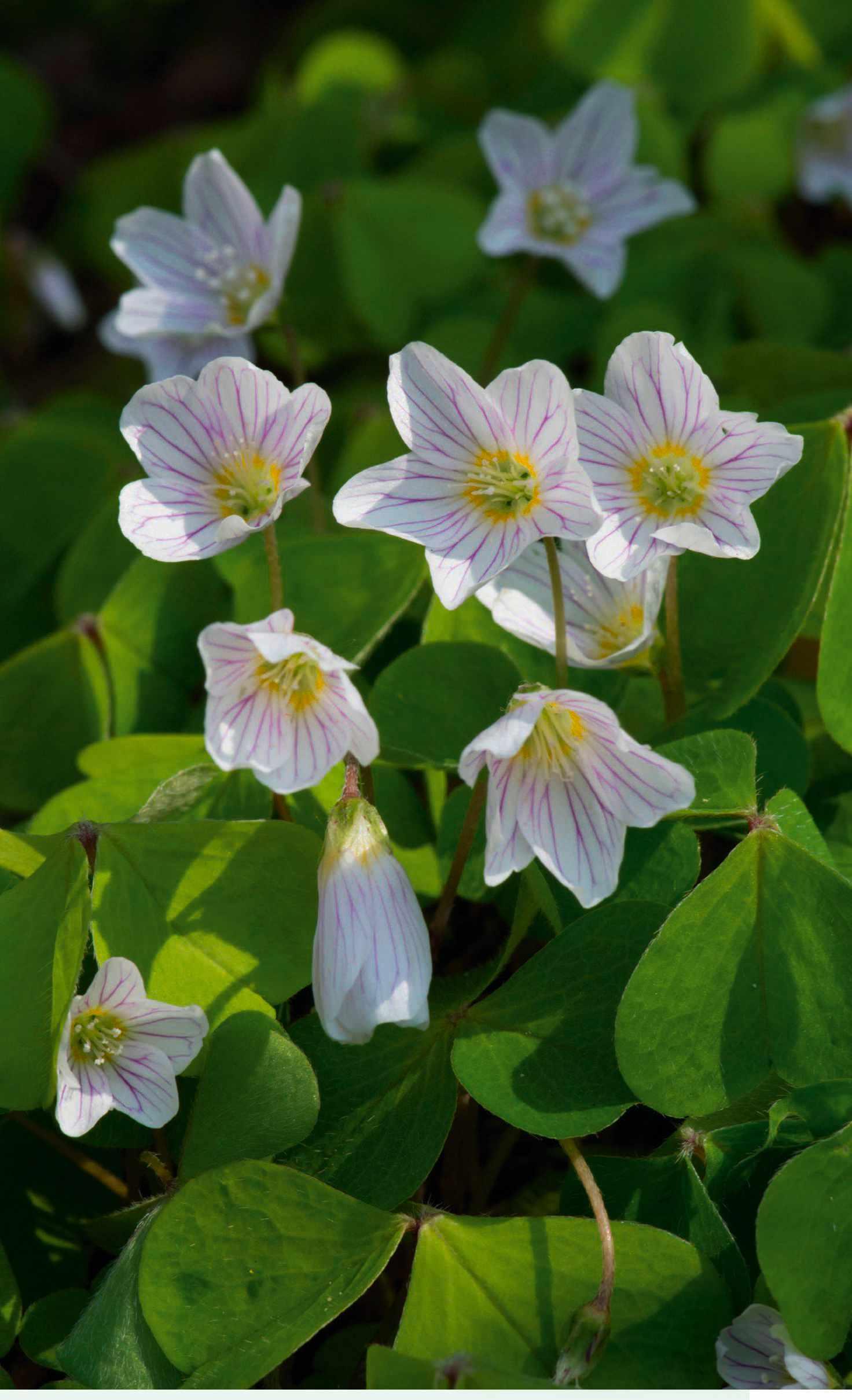
Author Sonya Patel Ellis is senior content creator atBBCGardeners’World. Her books include Collins BotanicalBible , TheHeritageHerbalandTheHerbBook.
In ancient folklore, it was said that cuckoos snacked on wood sorrel to strengthen their voices

Rhododendrons and azaleas bloom in a riot of colour in Bodnant’s superb Wild Garden
Easter fun
Enjoy bug-themed activities for the whole family at Bodnant Garden this Easter, 23 March – 7 April. nationaltrust.org.uk/visit/ wales/bodnant-garden/

If you really want to know spring has arrived, lift your eyes to the thousands of pink goblets on a magnolia tree the size of a sycamore, silhouetted against a blue sky. Where better to do that than at Bodnant, on Wales’ north coast?
Bodnant is one of Britain’s grandest plantsman’s gardens, set out according to the classic recipe of formal spaces around the house which overlooks Eryri (Snowdonia) and a wilder valley garden below. Every last bit of it is planted with flowering trees and shrubs from all over the world – especially China, Tibet and North America – brought back by the great collectors in the late 19th and early
20th century, then planted and hybridised by the first, second and third Lord Aberconway. The writer Harold Nicolson, of Sissinghurst fame, called it “Wales’ wonder of the world”. Swathes of parkland are spangled, naturalistically so, with golden daffodils. Pink and white magnolias of all sizes are everywhere, as well as cherries and bluebells, of course. Camellias and early rhododendrons abound, even blue ones. Streamside ferns unfurl under giant redwoods and, finally, sheets of vibrant, fragrant azaleas fill the air, as white wisteria pours down the terrace walls. It’s an amazing spring spectacle. nationaltrust.org.uk
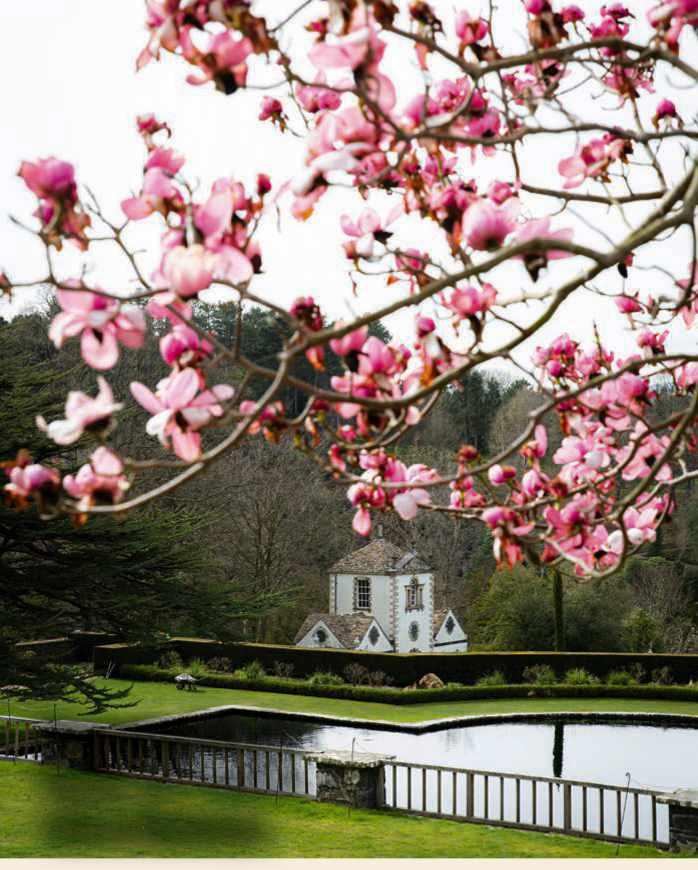
Magnolia blooms frame the historic mill at Bodnant

Stephen Anderton is the former National Gardens Manager for English Heritage, an author and a gardening columnist for TheTimes. His books include DiscoveringWelshGardens

Departures: May – September 2024
Bergen – Longyearbyen – Bergen
Book Now
Reimagined from a route we first started sailing in 1968, The Svalbard Express ventures along the Norwegian coast in summer to the last town before the North Pole high in the Arctic. Spend an average of six hours in each of the hand-picked ports, savour exquisite Nordic cuisine, and be awed by nature under the glow of summer’s Midnight Sun. Call
Ny-Ålesund
Longyearbyen
Bjørnøya
Tromsø
Senja Træna
Stokmarknes
Svolvær 66°33'N ARCTIC CIRCLE Honningsvåg
Brønnøysund
Ålesund Åndalsnes
Urke
Bergen


Winter has gone and spring encourages lots of us to put on walking boots and anoraks and revel in the simple but life-enhancing pleasure of being out in the countryside. But how many will have skin that is not white?
Too few, according to researchers who are trying to discover the truth behind the missing faces. According to official figures, 16% of the UK population is from ethnic minority backgrounds, so what is it about rural Britain that puts many of them off?
Do they find it unwelcoming?
Recently, Richard Benwell, CEO of Wildlife and Countryside Link, a coalition of 82 nature groups including the National Trust and the RSPCA, said “there are many accounts showing that some people of colour continue to experience racist comments and abuse when visiting nature. This is wellevidenced, including in reports from Government and from public bodies.”
But is racism any worse in rural areas than in our towns and cities?
Now a research team from Leicester University aims to find out the true extent of rural racism through a two-year survey. Researchers will question people from all races who live or spend time in rural spaces about their experiences.
Some of the results so far are disturbing. Researcher Dr Viji Kuppan tells me about two women who live in rural areas, one brown and one black. “Both were subjected to racist taunts, spat on in one instance and weapons with intent to harm produced in
another – very stark incidents of racial and engendered hostility.”
Dr Kuppan adds: “There are also subtler moments of ‘unconscious racism’ in the countryside that aren’t wilful but are still difficult to be on the receiving end of. On a field trip to a National Trust property with a white colleague, it was striking how many of the white people we encountered would acknowledge her but not me.”
Dr Kuppan points out that a sense of belonging in the countryside is crucial. “People of colour have a connection to rurality,” he says, explaining that one refugee told him
“Is racism any worse in rural areas than in our towns and cities?”
that the hills of the Peak District reminded him of his home landscape of Afghanistan. It’s something Dr Kuppan feels himself. “My connection to the natural world and wild places of England is of vital importance to my health and wellbeing,” he says. Of course, many white voices would insist there is no racial prejudice in the green acres – that, at worst, there might be curiosity about someone from a different ethnic background. Dr Kuppan points out that racism can be communicated in mundane ways – through stares, avoidance, silence, laughter, gestures, or mutterings when people of colour appear in rural places.
“How do you think white people would feel about moving to the countryside if it was made up of 97% people of colour?” he asks. “Wouldn’t it be understandable for white people to feel anxious?”
But there can be conviviality as well as conflict. While walking stages of the Pennine Way, Dr Kuppan came across “many moments of generosity, humour and warmth from local people”. Recent moves to make minorities feel more at home include waterproof prayer mats for Muslim hikers, signs pointing towards Mecca on a Derbyshire trail and an outdoor activity centre where instructors speak Urdu and Pashtu and Halal food is on the menu. Some minority country-lovers have set up groups, such as Brown Girls Climb, the Black Cycling Network, Muslim Hikers and Bristol’s Steppin’ Sistas. The project acknowledges that rural communities face problems, with cuts to public services such as health, schools and transport. “The irony is that these rural areas could be revitalised if more people of colour could be encouraged to visit, work and live there,” says Dr Kuppan.
When the results of the survey are revealed, my hope is they will help to lead towards a countryside where everyone, no matter what their colour or background, feels they belong. CF

England’s historic hedgerows would wrap around the world 10 times, shows new high-tech aerial
Hedgerows are a precious wildlife habitat and England has a lot of them, a new and highly accurate survey reveals.
Hedgerows have been used to divide fields across Britain since the Bronze Age, keeping farm animals contained. But they are also vital for wildlife, like ribbons of minirainforest, say conservationists.
Now, a remarkable new map tells us exactly how much hedgerow we have in England: a startling 242,300 miles (390,000km), which is enough to circle the world 10 times.
Who did the counting? Scientists from the UK Centre for Ecology & Hydrology (UKCEH) used LiDar technology – lasers mounted on aircraft – to make 3D scans of the countryside. The result is the first accurate map of England’s hedgerow network. It shows that the highest densities of hedgerow are in Cornwall, with an astonishing 5km of hedgerow per square kilometre. Surrey has the lowest density at 1.2km per square km.
Hedgerows are valuable to nature because they allow wild animals the opportunity to move around under cover. They offer a rich variety of
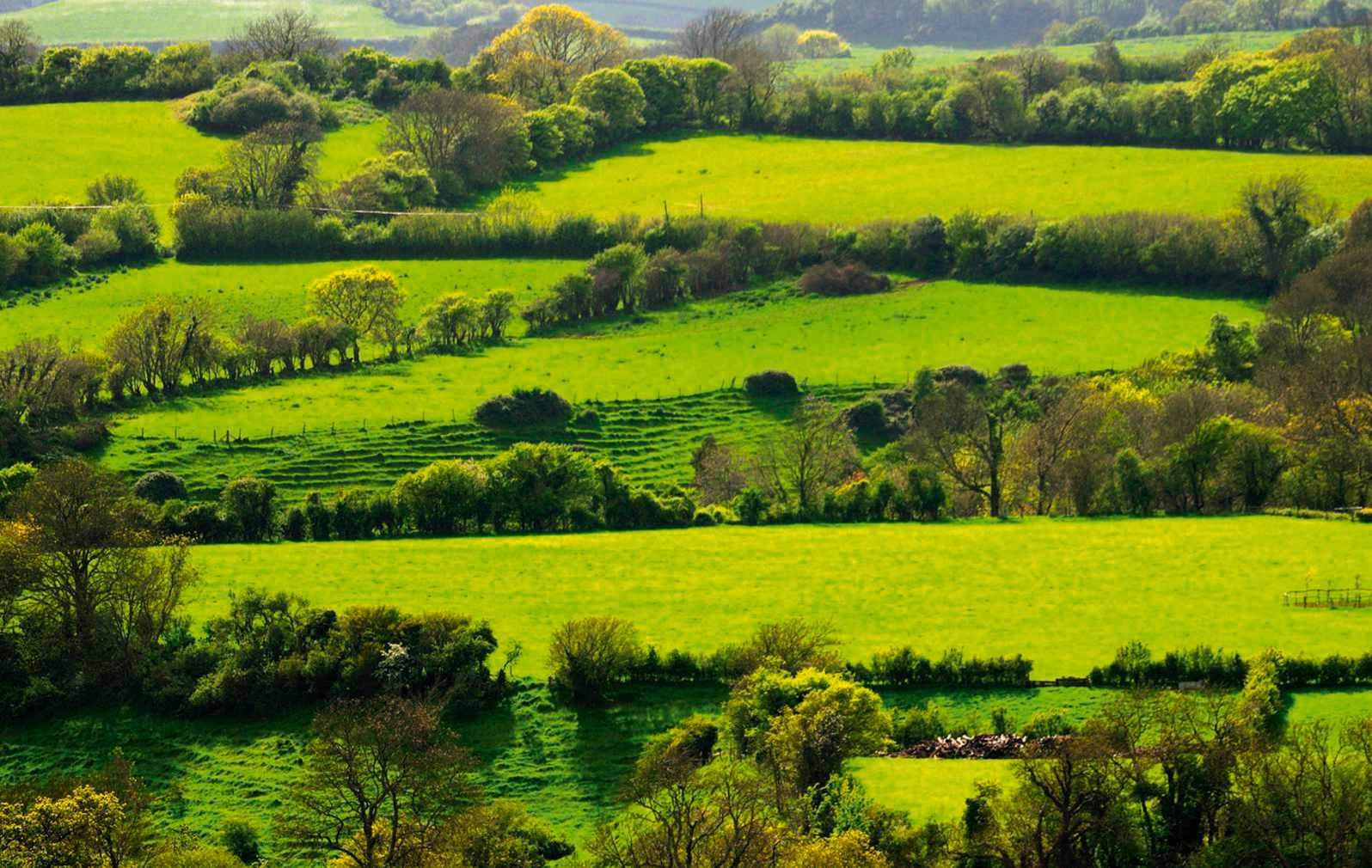
micro-habitats for plants, birds, invertebrates and mammals. And they absorb surprisingly large amounts of carbon dioxide, too, locking up this greenhouse gas in soil, roots and woody matter.
Britain lost half its hedgerows between the 1940s and the 1990s due to changes in farming practices. Despite the losses, the numbers still impress – England has much more
If you find yourself resting on a rock on the Isle of Skye, beneath your beating heart may lie the stony tomb of a flying dinosaur.
Scientists have confirmed the remains of a dinosaur discovered on the west coast of Skye is an entirely new species of pterosaur – a flying reptile that lived more than 160 million years ago.
The pterosaur – named Ceopteraevansae– would have had a wingspan of
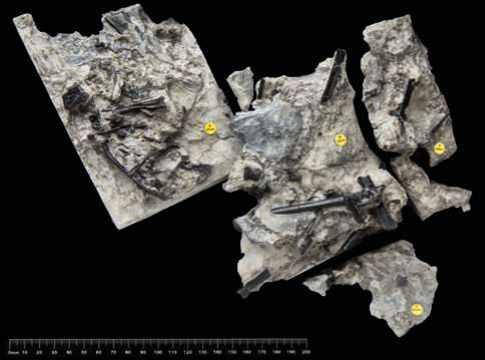
around 1.6m, about the same as a modern-day whooper swan. Its partial skeleton was first discovered in 2006. The bones remain embedded in rock on the island and can only be studied using CT-scanning.
hedgerow per square kilometre than France, for example. But many are now in a poor state. Well-maintained, dense hedges are more biodiverse than neglected ones: wild animals won’t stay in gappy, overgrown hedges because they can’t hide from predators. Researchers hope their mapping will now be used as a tool to guide planting and restoration of these crucial wildlife habitats.
A West Country museum is celebrating the extraordinary hidden life of John Brown.
Brown worked as a herbalist in Dorset in the 1860s, but his early life had been very different. He was born a slave in the USA, around 1811. In his mid-30s, he escaped the cotton fields of Georgia and by 1850 he had arrived in London, a free man. Find out more in a new display at Dorset Museum & Art Gallery, until 30 May. dorsetmuseum.org


Cornish artist pays tribute in an exciting new exhibition
Grey seals are the stars of a new art show by one of Britain’s top landscape painters, Kurt Jackson. When working outdoors on the coast, Jackson became fascinated by the curious seals bobbing among the waves offshore and decided to study them, “their form and movement, their haunts and habits”. The result is new exhibition, ‘The Cornish Seal’, a series of vibrant large-scale works that Jackson painted nestled above rocky coves or on sandy beaches in all weathers.
Alongside his art is ‘A Seal’s Story’, an exhibition in partnership with charity the Seal Research Trust on their work to protect these magnificent mammals. See both from 16 March to 10 August at the Jackson Foundation in St Just. jacksonfoundationgallery.com

In orchards of April skies. The stars blossomise. Simon Armitage
Poet Laureate Simon Armitage celebrates the irrepressible exuberance of spring in his new collection of poems Blossomise
What is it about the blossoms of spring that you find inspiring?
I think it’s to do with irrepressibility, if that’s a word! No matter how severe the winter, no matter how dead the trees appear to be or how they seem to have turned to iron or stone when gripped by frost, these fragile blooms emerge with just the first gentle coaxing of warmth and light. Of course, the seasons are all over the place these days, so rather than just being an indicator of spring the blossom has become yet another marker of our damaged environment.
Has the environment become a stronger theme in your work in recent years?
Definitely. I think for long periods of my writing life I took nature for granted, probably because
I grew up in the countryside and thought of it as a given. It’s only over the last couple of decades, when I’ve been travelling more and visiting big urban areas around the world, that I’ve truly understood the contrast and found the language to articulate what is precious and sacred about the natural world. Nature invites our imagination towards it and we learn more and dream more as a consequence. Without it, we’re just looking in a mirror.
Why was creating the Laurel Prize for nature-themed poetry important to you?
I announced it as one of the central ambitions of my Laureateship, and in four years it has become an international prize and attracted submissions from some of the world’s leading poets. Nature writing, which we might now define as ‘eco’ poetry, was occasionally seen as a literary backwater or somewhat old fashioned. That’s changed; you can’t be a nature writer now – or maybe any kind of writer – without addressing climate change, either directly or indirectly, and most poets I know want to take part in the conversation, raise their voice in a time of unprecedented emergency.
ABOVE
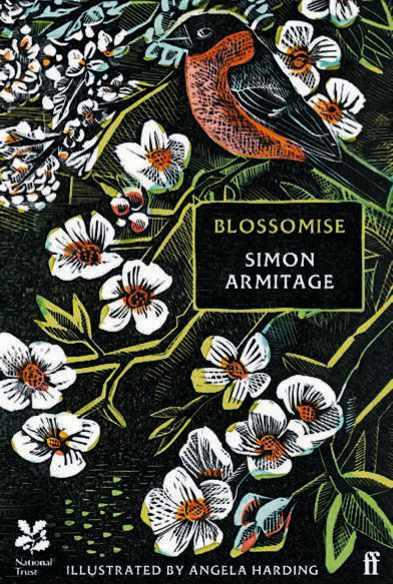



















The Great Grid Upgrade is the largest overhaul of the electricity grid in generations. It will help the UK switch to renewable energy, connecting clean wind power to your blowdry Stunning
EXCLUSIVE OFFER! WAS £89 NOW £59

Cecilia Nightdress
S503 £89 OFFER PRICE £59
Rafaela Nightdress
S502 £89 OFFER PRICE £59
nightdresses available in these colours:
Spirit of the Andes brings you beautiful artisan-made clothing crafted from the finest Baby Alpaca and Pima fibres. The softness and hypoallergenic properties of Pima Cotton make it the ideal luxury fabric for nightwear. Warming in winter and cooling in summer, our Peruvian Pima Cotton is the best in the world! 90 DAY FREE
To order yours, or to receive a FREE Spirit of the Andes catalogue call 01908 991 069 quoting CTF15 or visit www.spiritoftheandes.co.uk/ctf15 For


If you haven’t heard of dingers, you could be in for a shock. So-called dinger crime is a new internet trend, where quadbikes and off-road motorcycles are stolen before being ridden dangerously to gain hits and likes on social media.
Some riders even provoke police with reckless driving and then upload the videos of their taunting to sites such as TikTok. It’s terrifying stuff. One police force alone has received more than 6,000 complaints about dingers; officers are calling it “a plague on society”.
For farmers, as big owners of quadbikes, the dinger craze is a serious worry and the latest assault in the ongoing war against rural crime. Like most farmers, I have come to realise thieves will try to steal anything that moves and quite a lot of things that don’t: power tools, livestock, tractors, trailers, sat nav units and even diesel.
When criminals break into barns and outbuildings, it leaves farmers feeling angry, violated and vulnerable. Farms aren’t just workplaces, they are also homes. In many cases, the farmhouse is next to other farm buildings, so when thieves strike, the feelings of personal invasion are similar to those felt by victims of domestic burglaries.
But what makes farm thefts doubly devastating is that what is taken is often valuable equipment essential to the running of the business, important in producing the nation’s food, and crucial to the profitability of the farm.
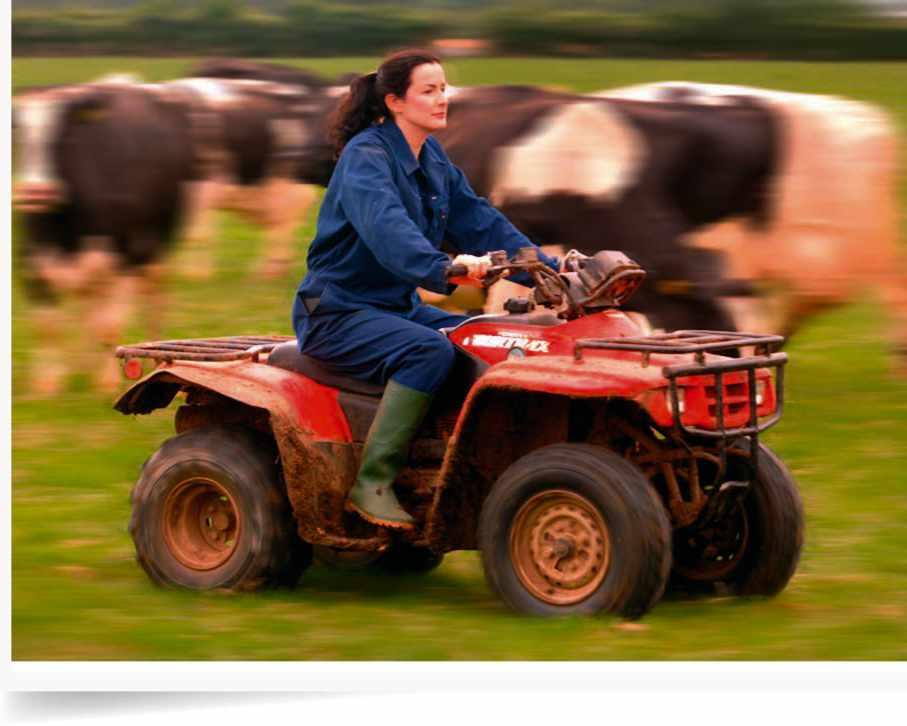
“I’ve come to realise thieves will try to steal anything that moves”
In summer, the delay in replacing a stolen tractor or a GPS receiver could mean the difference between a successful harvest and one ruined by the rain.
Thankfully, there is good news: technology and the law are on the side of farmers. On our farm in the Cotswolds, we protect our vehicles with a sophisticated anti-theft security system. Every piece of kit is given a Datatag ‘fingerprint’ with several unique markings, including forensic liquid DNA that is invisible to the thief. Like similar systems on the market, it gives us confidence that any stolen equipment will be recovered and also reduces the cost of insuring it.
Mounting pressure on MPs to do more to help prevent rural crime culminated in the passing of the EquipmentTheft (Prevention)Actin 2023.
Under the legislation, the manufacturers of new quadbikes and all-terrain vehicles (ATVs) are obliged to fit immobilisers and forensic markings, while owners will have their details logged on a central database to help the police reunite farmers with their stolen kit.
It’s too early to say if the new act is working, but the idea of putting responsibility for anti-theft measures on to the manufacturers has gone down well across the industry, from farmers to insurance brokers.
The National Farmers’ Union is urging ministers to go further. Its vice president David Exwood says: “We welcomed the passing of the EquipmentTheft (Prevention)Actbut urge the Government to pass secondary legislation to widen its scope to include other equipment, such as larger machinery or GPS systems...”
As it stands, the measures in the act may have come just in time. The most recent figures from the insurers NFU Mutual suggest quadbikes and ATVs were the top targets for rural criminals, with reported thefts in 2022 valued at £3m – a 34% increase on the previous year. But will the new act be enough to stop dinger crime? I hope so.
Ask Adam: What topic would you like to know more about? Email your suggestions to editor@countryfile.com
I can’t recall a time when an event at a village hall wasn’t on the calendar.
Humble, functional buildings, village halls are beacons of hope and action, ‘owned’ and run by their community, for their community.
When you think about it, it’s a beautiful, radical idea. And a rural one, at that. But I wonder, is it something others associate with fading use and a nostalgia for a bucolic past? Not if me or my village can help it.
From preparing for invasions during the Second World War to harvest suppers, WI meetings and jumble sales, playgroups, farmers’ markets and yoga, 8th, 18th or 80th birthday parties, barn dances, fundraisers and parish council meetings, all the way through to weddings, wakes and lectures, the capability of village halls is inexhaustible. Cheap to hire, with a kitchen, serving hatch and sometimes a stage, the 10,000 village halls in Britain are a remarkably progressive institution.
Ours is 100 years old, and rather lovely. Purpose-built in a simple 1920s modernist style, it has a polished wooden floor, wonderful rafters and is currently surrounded by fields of spring lambs. It might surprise people that most village halls will celebrate their centenary this decade.
The aftermath of the First World War threatened to decimate low-populated, isolated rural communities more than most, with much of an entire generation lost and country
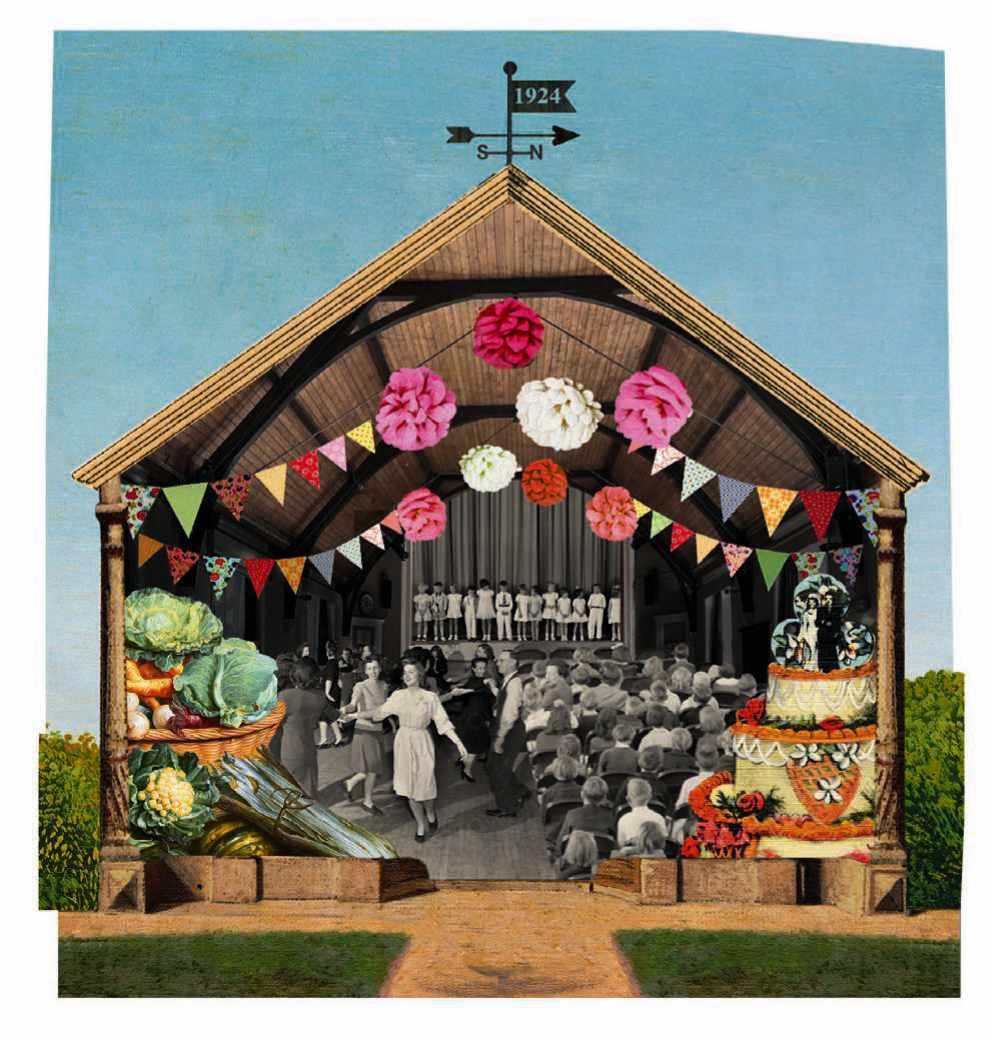
estates broken up. Women weren’t welcome in pubs and often had children to care for.
The newly created National Council of Social Service set up a Village Halls Department and communities rallied behind a desire to provide lasting memorials to those young men in buildings of purpose: ones that were forward-looking and provided recreation as much as support, self-governance and education, in a dream of social cohesion and wellbeing.
Newly redundant military huts were co-opted, while others like ours were built by landowners. Most were completed between 1919 and 1929, and came into their own in the Second World War, as the base for a rural Home Guard, gas mask distribution, communal jam or rosehip-syrup making and, behind blackout curtains, defiant dancing.
Wherever I’ve lived, we’ve frequented the village hall for toddler groups, Brownies and

Nicola Chester is the author of Richard Jefferies Award-winning and Wainwright Prize Highly Commended book OnGallowsDown.
plays, parties and youth clubs, and my children have done the same. I have photographs of the older two at playgroup, and casting their first vote. Our memories are wrapped up with them: our wedding reception in a hall bedecked for harvest; a 40th birthday where we drank floral gin in Beryl Ware teacups and wobbled from our bikes into the village pond on the way home. Dance classes with Mum, when she moved to the village then lost her husband (my Dad), but went on to join the carpet bowls club and the farmers’ market. And there was the moment we paused during a fundraiser for Ukraine to step outside and marvel together in awe at life, luck and a most beautiful sunset.
But can a village hall survive an imbalance of second homes, Airbnbs, cars and wealth that take some of us to more salubrious places? The village hall is a survivor. Expenditure has almost always outweighed takings, yet these quietly radical halls foster a sense of belonging, improving quality of life and combating loneliness for many.
As long as a diverse, healthy community survives, there will be a need for vibrant village halls, with warmth, laughter and camaraderie as much a part of its fabric as the bunting in the rafters – as well as uses we haven’t even dreamt up yet.
Have your say What do you think about the issues raised here?
Write to the address on page three or email editor@countryfile.com
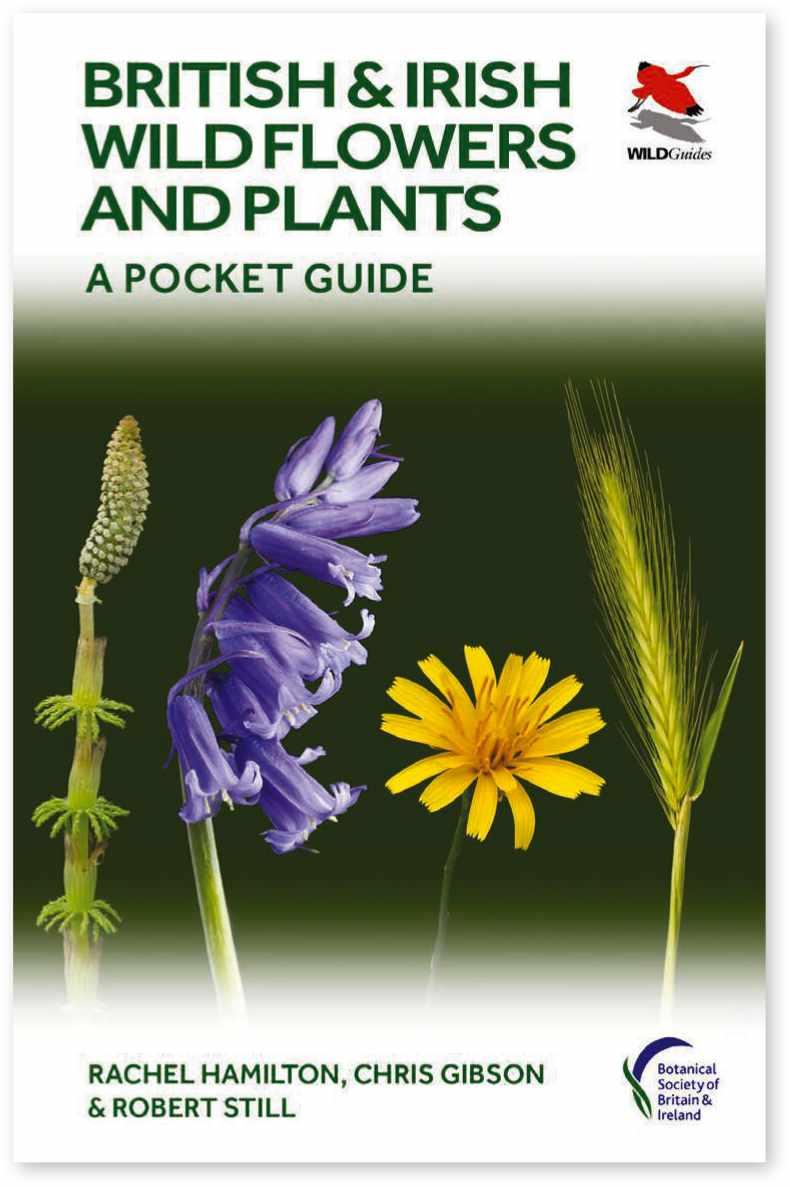
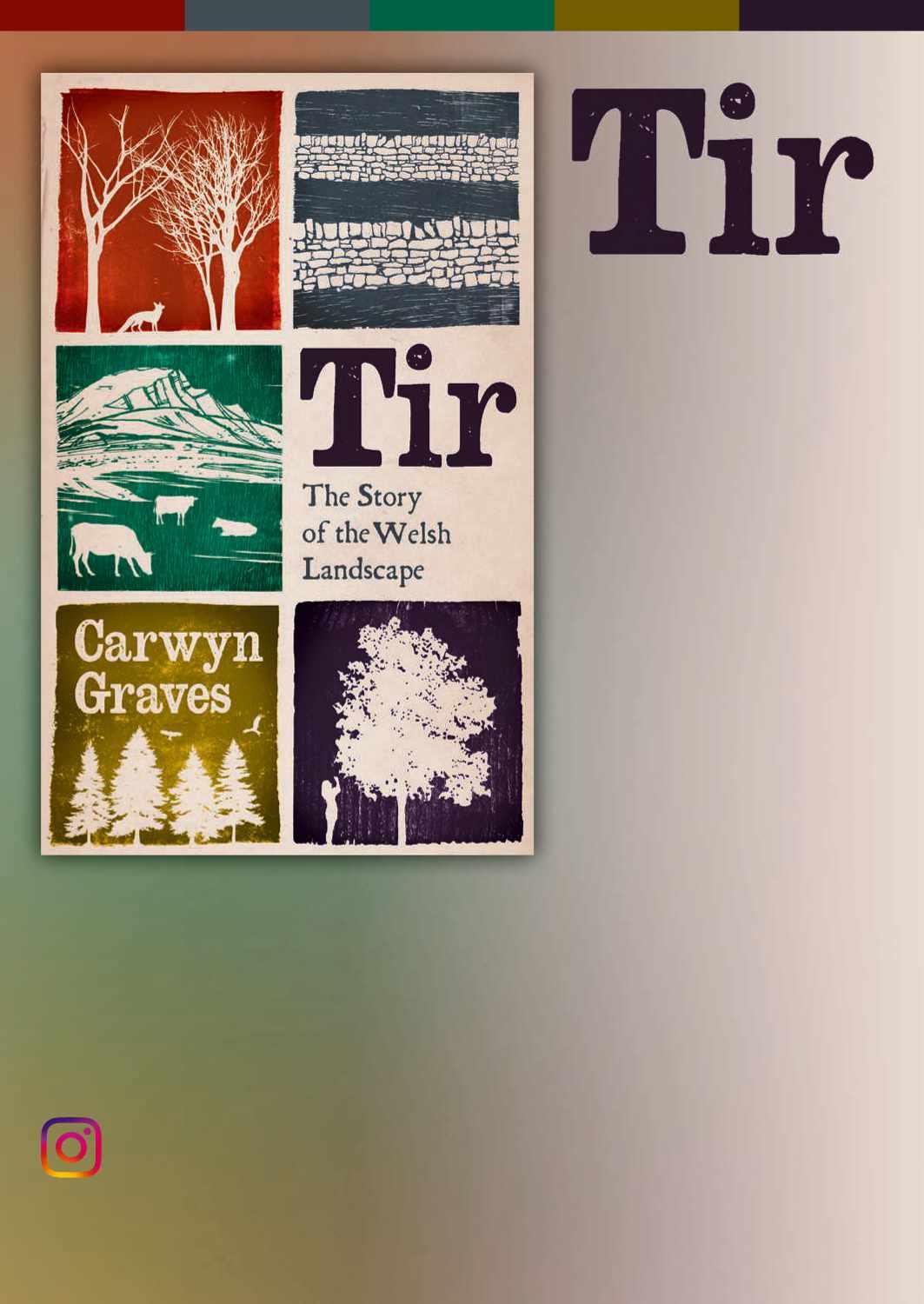
Carwyn Graves
HB ISBN:
9781915279668 £18.99
‘Tir is not just a natural history book, but a human story told by the scientist, the ecologist and the literary man. In revealing how the landscape was made and recorded in placename and poetry in Welsh and in English, it shows us how to read our history in every patch of land through the scientific, human and literary language that names it.’ Gillian Clarke calonbooks calonbooks
 A highly illustrated and portable identification guide to the most common wild flowers and other plants
A highly illustrated and portable identification guide to the most common wild flowers and other plants

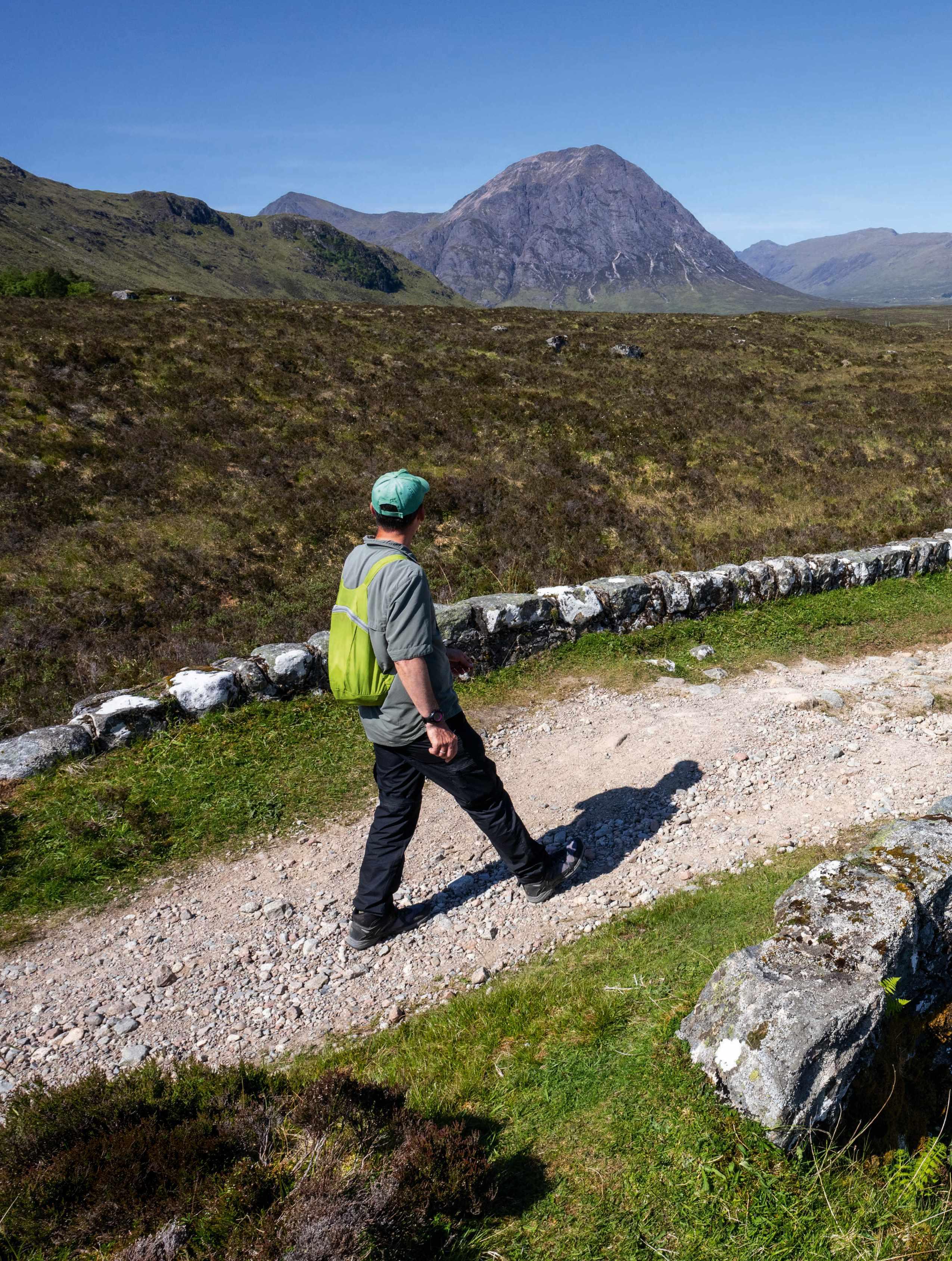 Author Dixe crosses Rannoch Moor, a vast, wild expanse of heather and bog covering an area of 50 square miles, encircled by mountains
Author Dixe crosses Rannoch Moor, a vast, wild expanse of heather and bog covering an area of 50 square miles, encircled by mountains
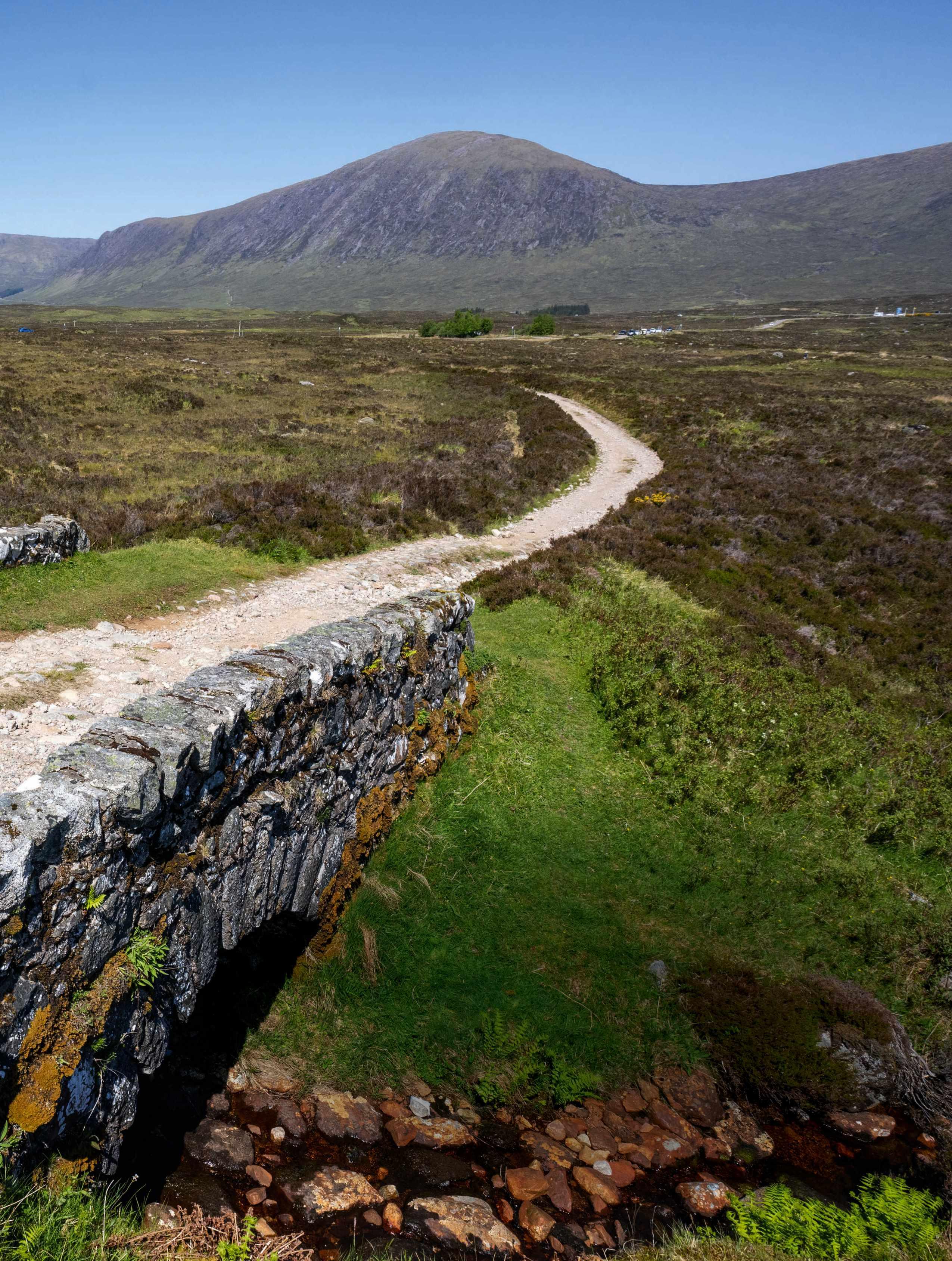
From the sparkling shores and sylvan islands of Loch Lomond to the soaring peaks and hanging valleys of Glen Coe, Scotland’s most celebrated long-distance trail will take your breath away, writes Dixe Wills
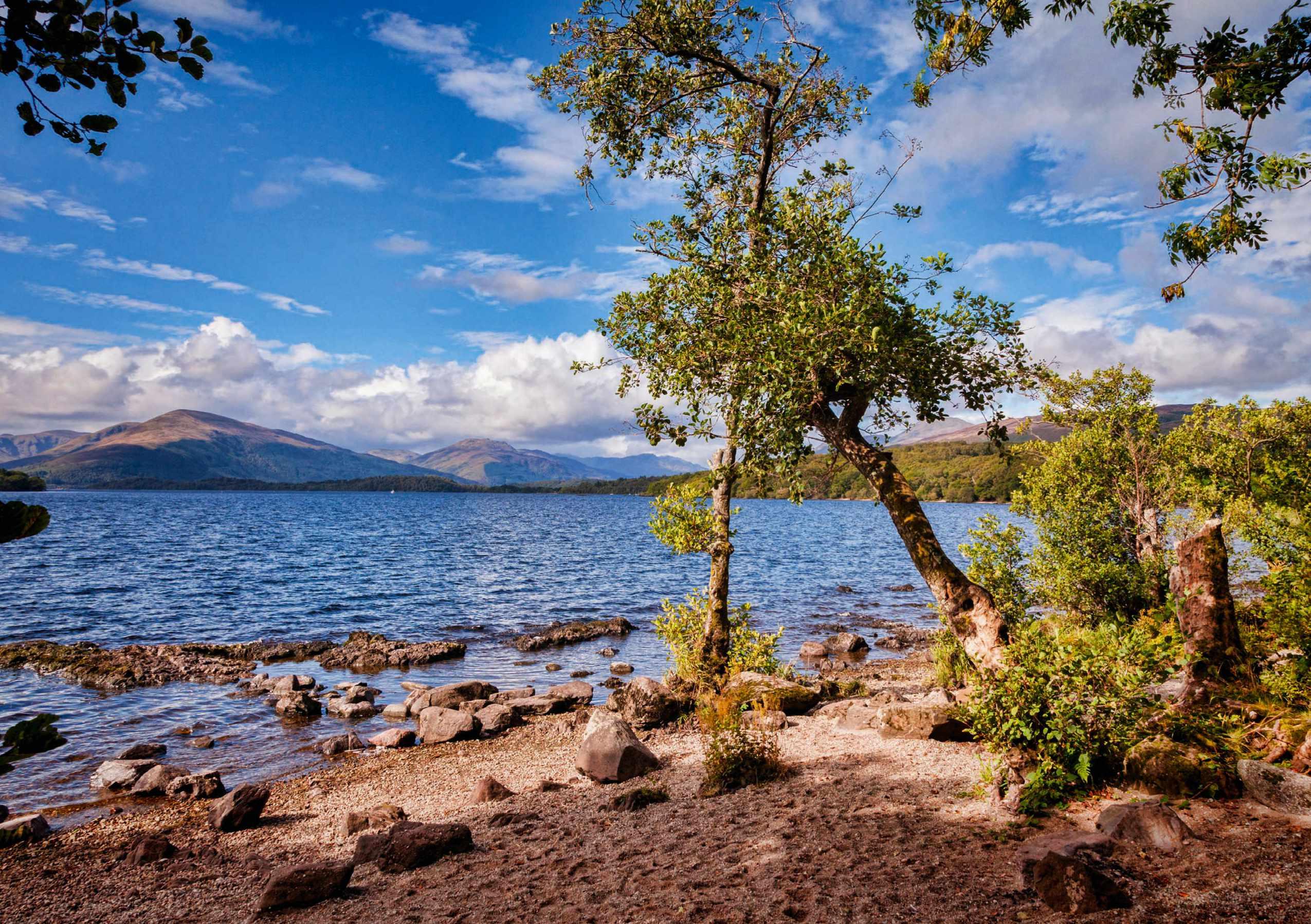
What has been your highlight of the walk so far?” I asked Isaac and Ethan, teenage brothers I’d passed – and been passed by – several times in the final miles of the West Highland Way.
“All of it!” Isaac replied enthusiastically, to nods of approval from his younger sibling.
And that is, perhaps, the key to why this is one of the world’s most popular longdistance hikes. With its ever-changing scenery, it’s constantly rewarding the efforts of those who walk it with something fresh and interesting around every corner.
Opened in 1980, the West Highland Way was the very first official long-distance walk in Scotland and is now one of the nation’s designated Great Trails. Usually walked in five to eight days from south to north, the well-waymarked route begins in Milngavie (pronounced mul-guy), on the outskirts of Glasgow, and ends in the town of Fort William on Loch Linnhe.
On the way, it flanks the eastern shore of Loch Lomond, heads along impressive valleys such as Glen Falloch and Strath Fillan, rises up on to wild Rannoch Moor,

passes the entrance to Glen Coe and tiptoes around the towering hulk of Ben Nevis.
At 96 miles (154 km) and around 4,000m of ascents (three climbs of Ben Nevis), it gives a taste of several distinct Highland landscapes without being too daunting. On my six-day end-to-end hike, I bumped into walkers of all ages: groups of cheery silverhaired Canadians, fathers with sons,
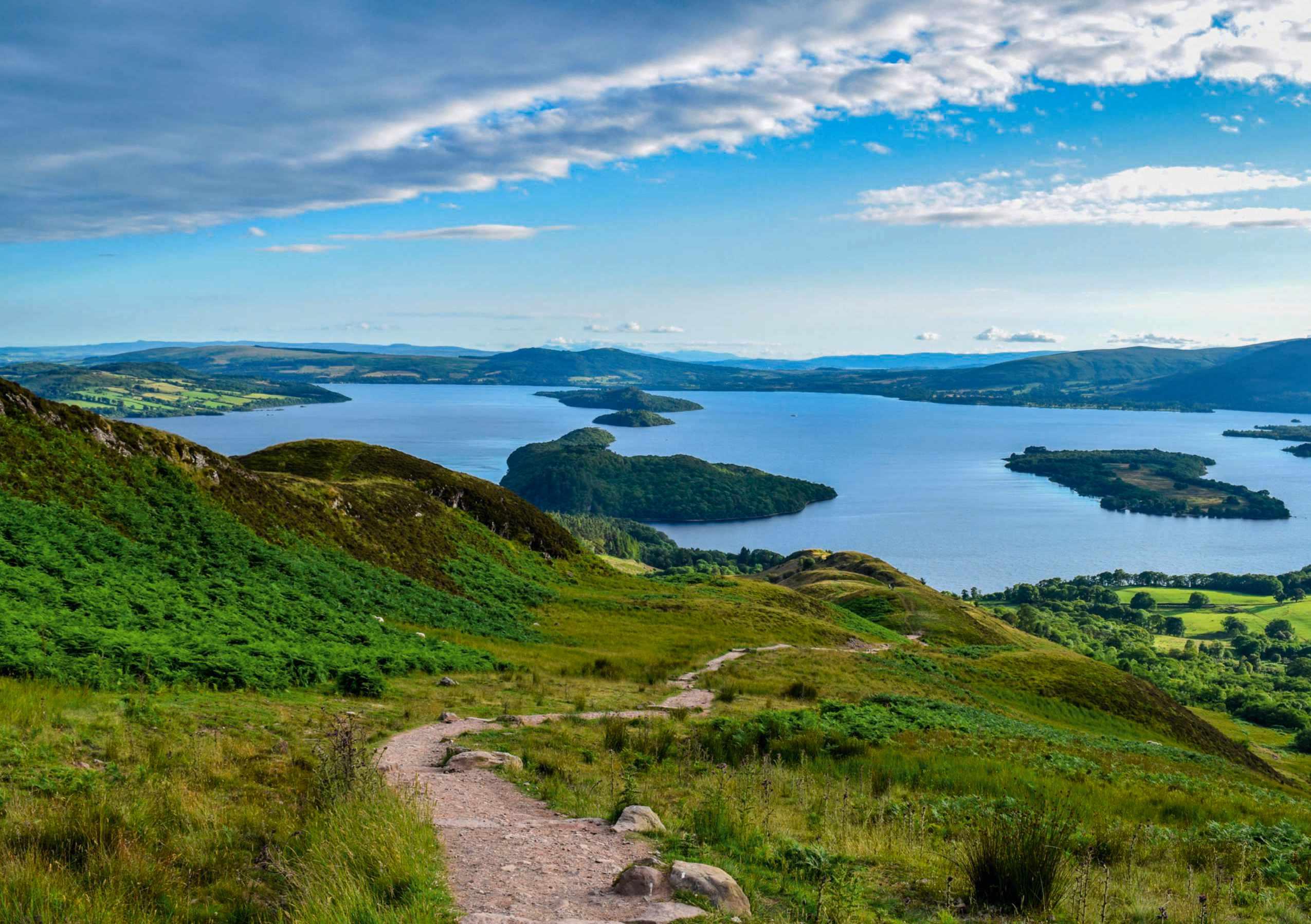
mothers with daughters, and those out on a parent-free adventure like Isaac and Ethan.
That’s not to say that there are not challenges, as I was to discover. And, thanks in part to global warming, the dreaded midge may now be encountered from as early as April through to September, but take some repellant and a head net and you should be fine.
Milngavie, with its railway station and plentiful shops, makes an ideal jumping off spot for a long-distance walk. I pushed some last-minute purchases into my pack, headed beneath the archway that marks the official start of the West Highland Way and, wandering into a wood, soon left all traces of urban life behind.
I emerged upon a gentle scene of golden gorse bushes wafting coconut scents into the breeze, soft waves of green lapping out to low distant hills, with white dabs, as from an artist’s brush, indicating hawthorn trees. Swallows and goldfinches sped around, their easy flight making me feel somewhat lumpen.
ABOVE LEFT On day two, Dixe expects an easy walk along the shore of Loch Lomond – but the trail here is surprisingly hard work
ABOVE The jaw-dropping view from Conic Hill over the islands of Loch Lomond
“I emerged upon a gentle scene of golden gorse bushes wafting coconut scents in the breeze”
Twelve miles in, the village of Drymen is many walkers’ first-night stop. But I was pressing on to Balmaha, so I merely paused for a quick pick-me-up at the Drymen Inn. Then, right at the end of the day, came the first proper climb – Conic Hill – whose heights offered some eye-easing views of a low sun casting its light over the islands of Loch Lomond.
I’d mentally marked the second day as an ‘easy day’ – an amble along Loch Lomond’s shore. I thus indulged in a little side trip first: a short ferry ride from Balmaha to the
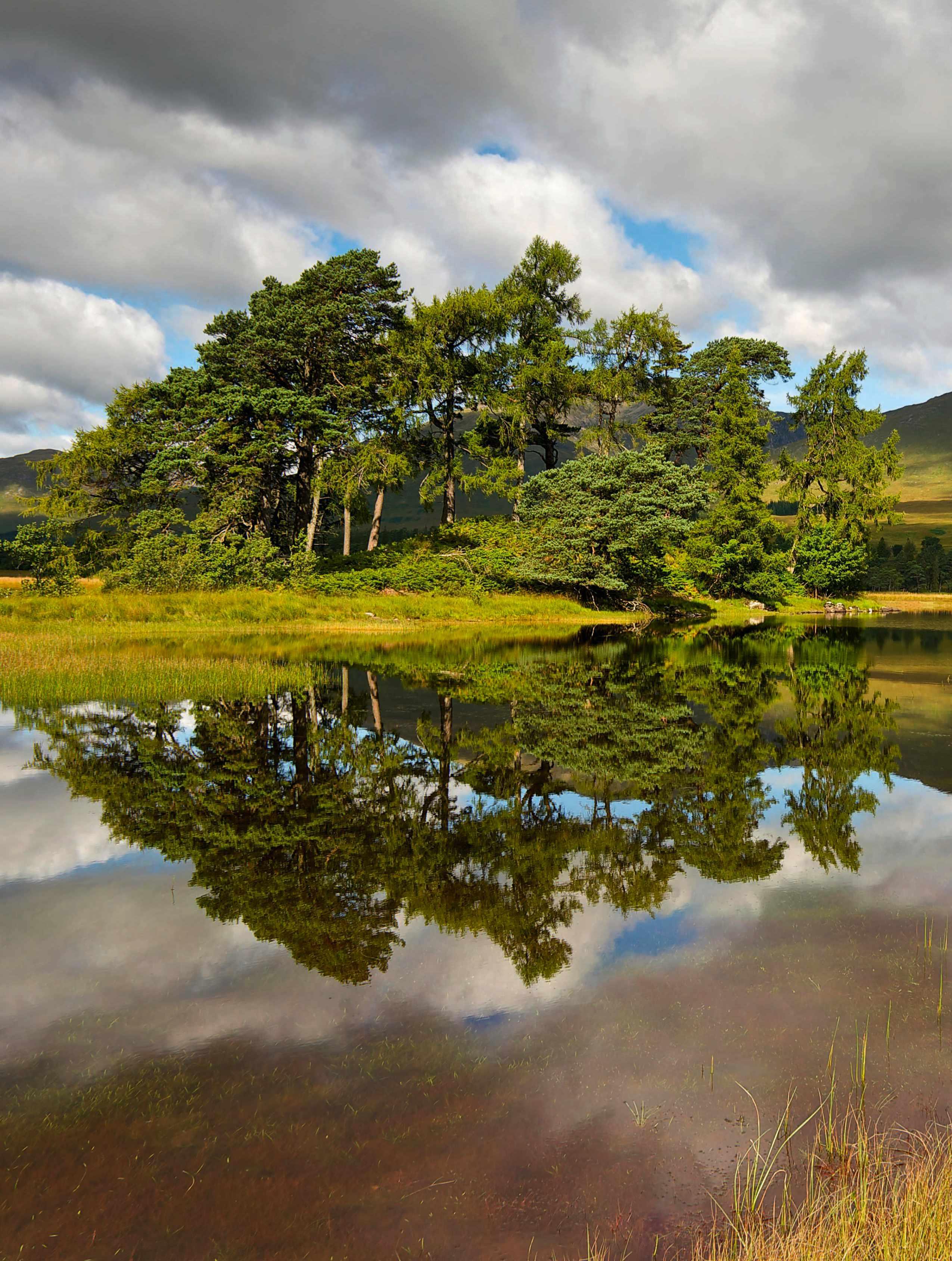
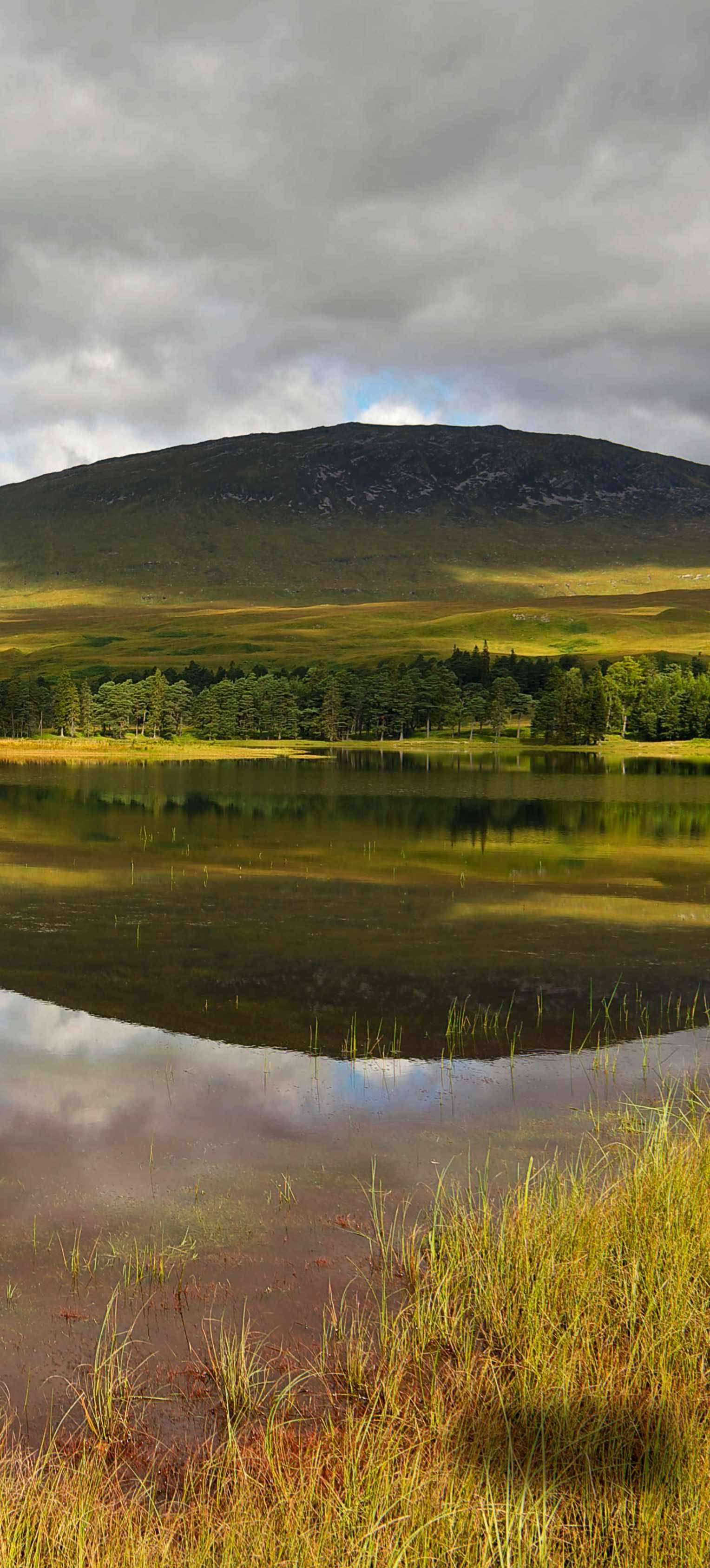
“With the sun sparkling on the loch, I could have been on a Greek island”
island of Inchcailloch. I breathed in the wild garlic, admired the bluebells, fine oak trees and ancient Clan MacGregor burial ground, and lay on a jetty. With the sun sparkling on the loch, I could have been on a Greek island. To cap it all, I saw a fallow deer – possibly a descendant of a herd introduced to Inchcailloch by Robert the Bruce – standing up on its hind legs to reach tender oak leaves.
The day’s walk came as something of a shock. Initially straightforward, it developed into mile after mile of testing path that wiggled and squirmed and fought its way through the woods. If you’re into bouldering, you’ll love it. If not, an alternative, less challenging route cuts out a section of the character-building rough stuff.
Rising early, I had a farewell-to-LochLomond breakfast on the beach after a final stretch of taxing path, passing Rob Roy’s Cave, which may have been used by both the rapscallion and, earlier, by Robert the Bruce.
After a climb away from the head of the loch, I joined an old military road, built in the 1700s to aid in the suppression of Jacobite rebels. The scene before me couldn’t have been less war-like: a tranquil glen where a herd of wild goats, all chocolate-brown-andcream, grazed contentedly in the sunshine. A lizard ambled away at my approach, while an unafraid frog posed for photographs.
My way now followed the River Falloch, via the Beinglas campsite, where I quenched my thirst at the Stagger Inn. Passing the attractive Falls of Falloch, the path heads through forestry land before dropping into Crianlarich below Ben More. The village marks the Way’s half-way point and is home to a youth hostel with very comfortable beds.
Strath Fillan provides the next pathway through the mountains. I paused by the
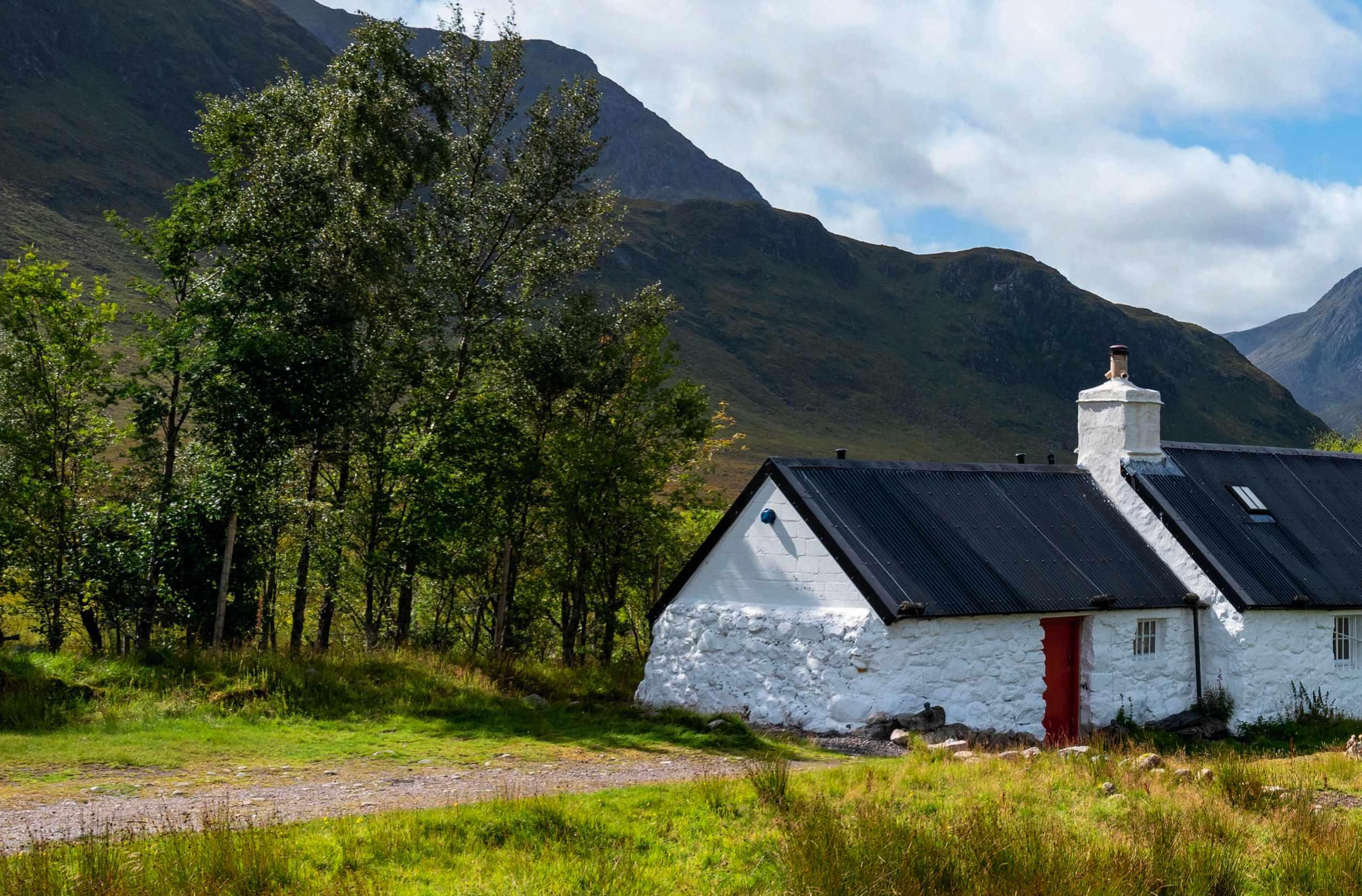
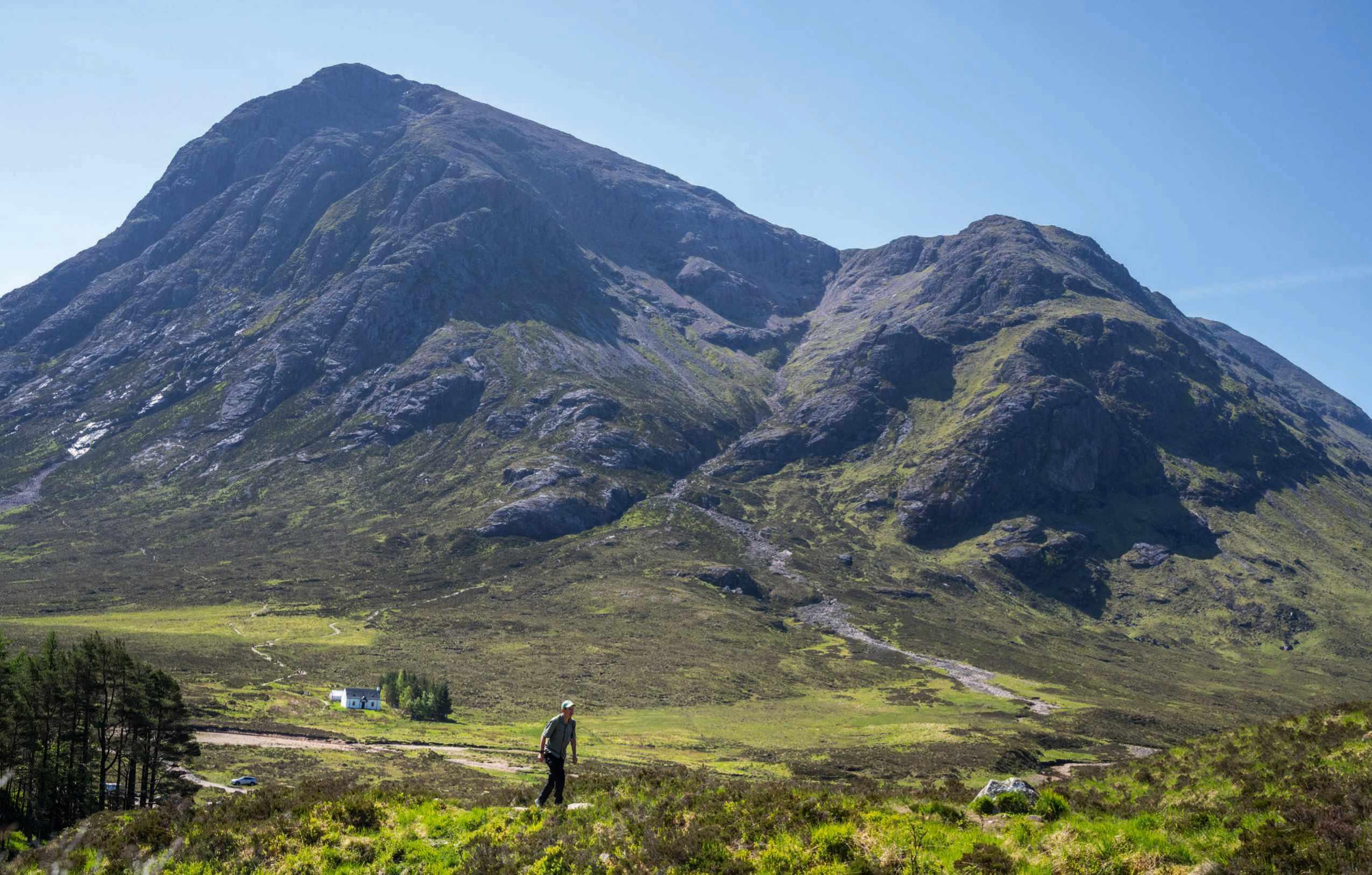
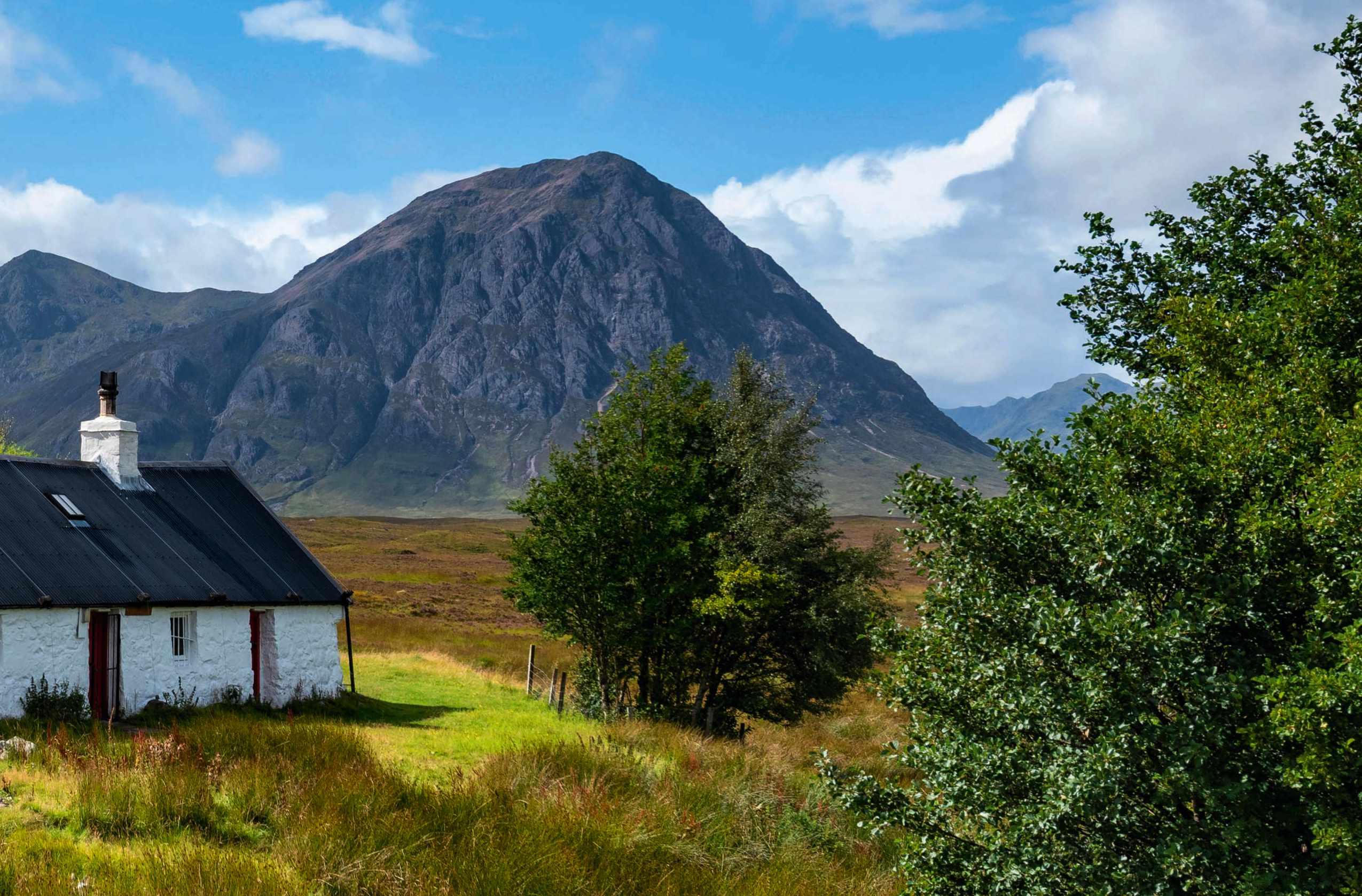
ABOVE The striking, white-painted Blackrock Cottage – one of the most photographed cottages in the world – stands near the entrance to Glen Coe. The mighty Buachaille Etive Mòr rises in the background
LEFT Charles Dickens wrote of Rannoch Moor: “All the way, the road had been among moors and mountains with huge masses of rock… giving it the aspect of the burial place of a race of giants... anything so bleak and wild, and mighty in its loneliness, it is impossible to conceive.”
ruins of the 12th-century St Fillan’s Priory, where the monks once enjoyed life in a broad river valley set within a crown of emerald mountains.
Further on, once-tiny Tyndrum, unlikely possessor of two railway stations on two separate lines, has sadly become a rather soulless place where coach parties sleep, eat and buy overpriced souvenirs. But at least it also has Brodies, a friendly little convenience store where all the savvy hikers go.
I was soon following the railway line through a slender valley that opened up to offer sumptuous views of pyramid-like Beinn Dorain. Resting on the bridge over Allt Kingloss, I was befriended by a bold chaffinch who companionably shared my (somewhat late) lunch. And before long, the brilliant white façade of the Bridge of Orchy Hotel came into view, named after another bit of Highland infrastructure created to subdue those pesky Jacobites.
Having carried my gear with me thus far, for the final two days I tried one of the many baggage transfer companies that ply the Way (see page 43). I can report that, aside
“There’s a wonderful loneliness about the moor and I luxuriated in it for hours”
from the slight shame I felt when passing heavily burdened ‘proper’ hikers, it was a glorious experience, especially in the heat.
Gazelle-like, I picked up the old Glen Coe drovers’ road by Loch Tulla, emerged from behind a small plantation of firs and found myself on Rannoch Moor, my arrival heralded by the manic chirruping of skylarks. There’s a wonderful loneliness about the moor and I luxuriated in it for hours before the busy A82 came into view. Hurrying across it and up the Devil’s Staircase – despite its name (and reputation), it’s not a diabolical climb – I began the long slow descent to Kinlochleven. Almost encircled by high proprietorial mountains, some parts of the village lie in shadow for a third of the year. Perhaps it’s
Photo: Brodie Hood
“The only sounds came from horned black-faced sheep, a trickling burn and cuckoos”
just as well that, thanks to an Edwardian hydroelectricity scheme, Kinlochleven became the world’s first village with electricity in every home, when London was still lit by gas.
And so came the final push. Once I’d climbed out of Kinlochleven, I breezed along another old military road through the glen of Lairige Mòire, passing occasional roofless farmhouses whose former occupants doubtless scraped a difficult living among the mountains. The only sounds came from horned black-faced sheep, a trickling burn and cuckoos, whose calls had provided scraps of a melody to my stride’s percussive beat almost every day.
Ben Nevis, Britain’s tallest mountain, hove into view: a challenge for another day, for
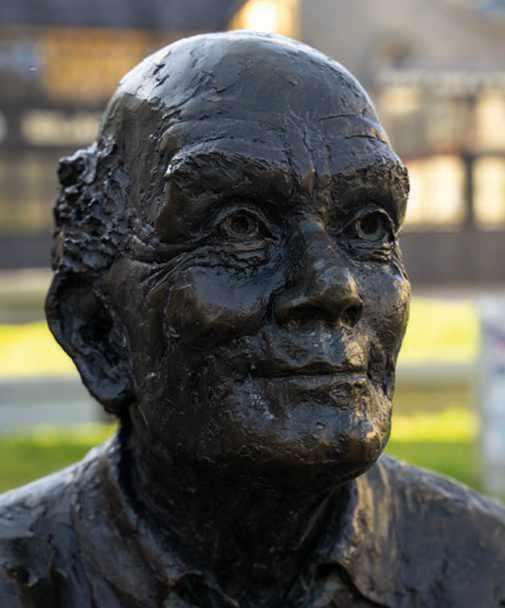
Fort William beckoned. The official end of the West Highland Way was extended in 2010 to the far end of the High Street. There sits David Annand’s statue ‘Man with Sore Feet’ next to whom – looking appropriately footsore – it’s now customary to take a commemorative photo.
But my real celebration happened a few minutes later as I downed a refreshing iced mint coffee at the café-bar of the town’s fancy new Highland Cinema.
Relaxing in my cabin on the sleeper train out of Fort William, I reflected on my walk. Though there had been plenty of highlights – the view from Conic Hill, the ramble over untamed Rannoch Moor, the camaraderie with fellow walkers, some of whom I bumped into again and again – I was glad, too, of the more testing times.
And I was reminded of the words of John Soave, the affable manager of the Inveroran Hotel’s little shop near Loch Tulla. He had told me why he loved walking the West Highland Way: “You take off your emotional baggage and let your wings fly free.” CF

Dixe Wills is an author, travel writer and hiker. He has completed many of Britain’s longdistance paths and created one, too: the 100mile coast-to-coast ‘Wewey’ from Somerset’s Weston-super-Mare to Weymouth in Dorset.
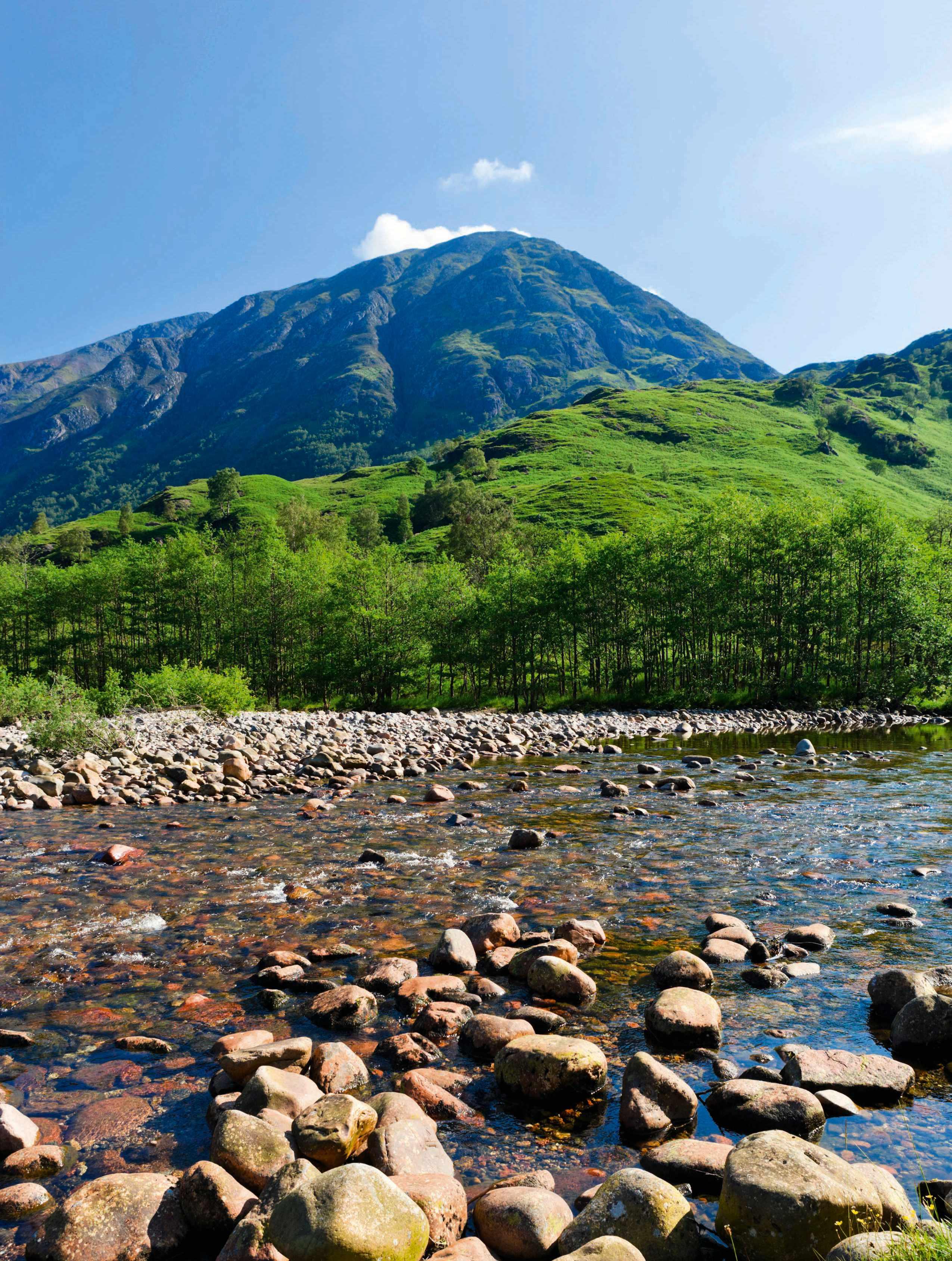
As you reach the end of the route, Britain’s tallest mountain, Ben Nevis, comes into view – you can detour to cool weary feet in the Nevis
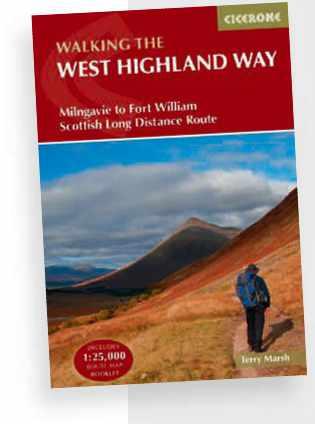
While a guidebook isn’t strictly necessary, Walking theWestHighland Way (Cicerone) is a cracker. It contains all the directions both ways, itinerary suggestions for six to nine days, accommodation, shops, eateries and some history too. Best of all, it comes with a separate booklet with end-to-end Ordnance Survey 1:25,000 mapping. i er r
NIGHT 1
Oak Tree Inn, Balmaha
Balmaha, at the southern end of Loch Lomond, is more resort than village, with the Oak Tree as its bar-cum-hotel. I stayed in one of their fancy ‘superior pods’ – a sort of outdoors hotel room near the shore. theoaktreeinn.co.uk
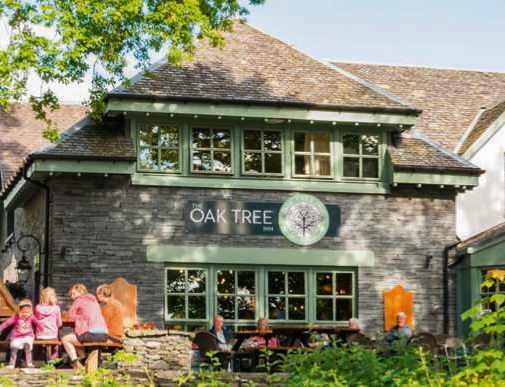
NIGHT 2
Campsite at Inversnaid Bunkhouse
A converted 19th-century church, the seven-room bunkhouse has its own bistro, complete with stained-glass windows. I pitched up on their small lawn, which has room for a dozen or so tents. inversnaid.com

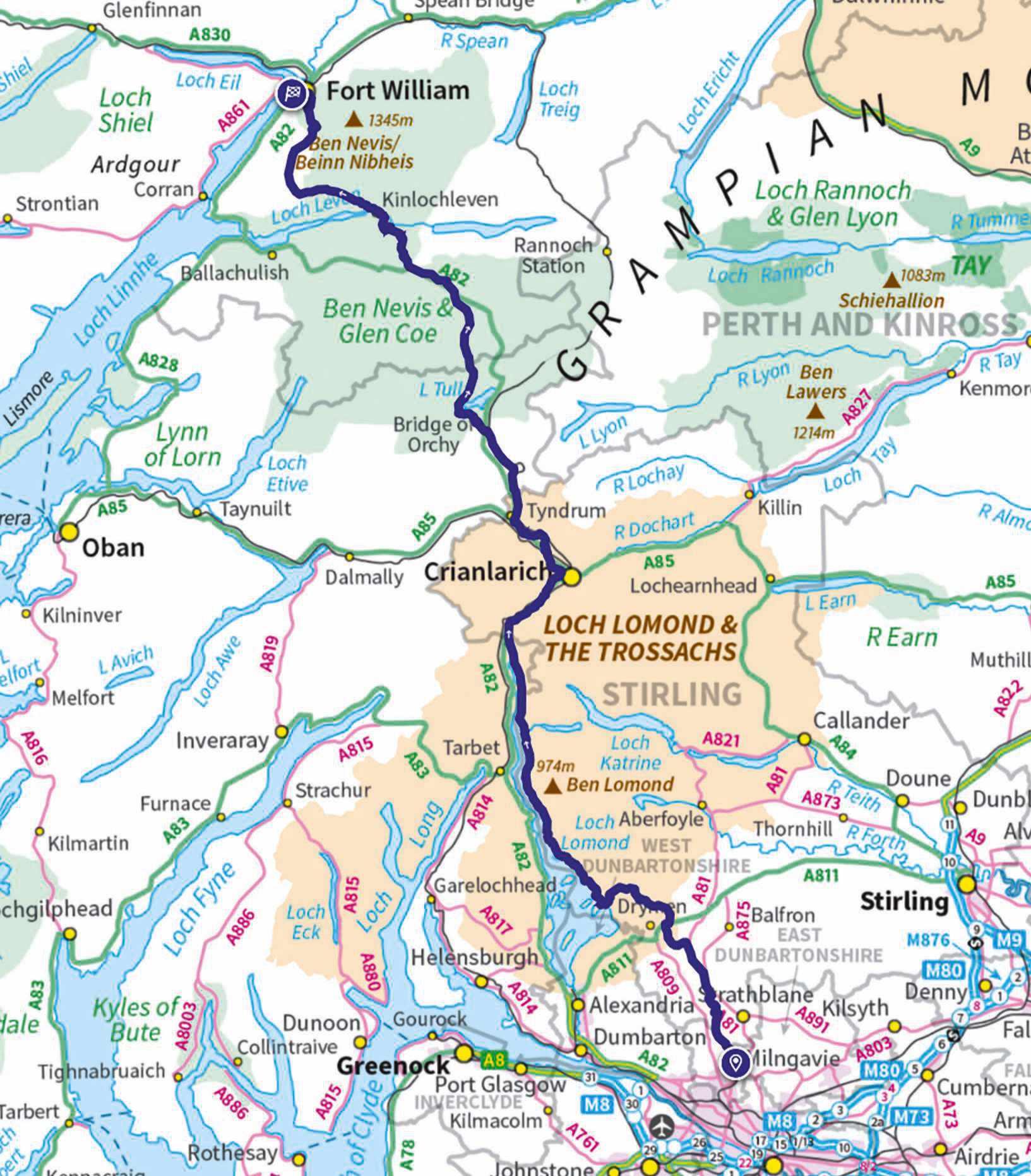
NIGHT 3
Crianlarich Youth Hostel
A friendly place with a mixture of dorms and private rooms, a well-equipped kitchen, dining room and (often a godsend) a drying room. hostellingscotland.org.uk/ hostels/crianlarich/
NIGHT 4
Bridge of Orchy Hotel
Arguably the swishest place on the whole Way (right). I stayed in one of the venerable hotel’s annexe rooms
with a patio and view towards the eponymous bridge over the River Orchy. bridgeoforchy.co.uk

For a cheaper option, try the neighbouring Greenstone Lodge B&B. greenstonelodge.co.uk
NIGHT 5 Edencoille Bed & Breakfast, Kinlochleven
A family-run establishment with a very particular style and some lovely touches in the room, such as a mighty array of teas and a foot spa. kinloch levenbedandbreakfast.co.uk
NIGHT 6 Glen Nevis campsite, nr Fort William
The closest campsite to Fort William, Glen Nevis is large but split into smaller fields, and has a restaurant/ bar too. glen-nevis.co.uk/campsite
Rising out of Glen Coe, Dixe climbs the Devil’s Staircase on the penultimate day of the hike as he heads towards Kinlochleven
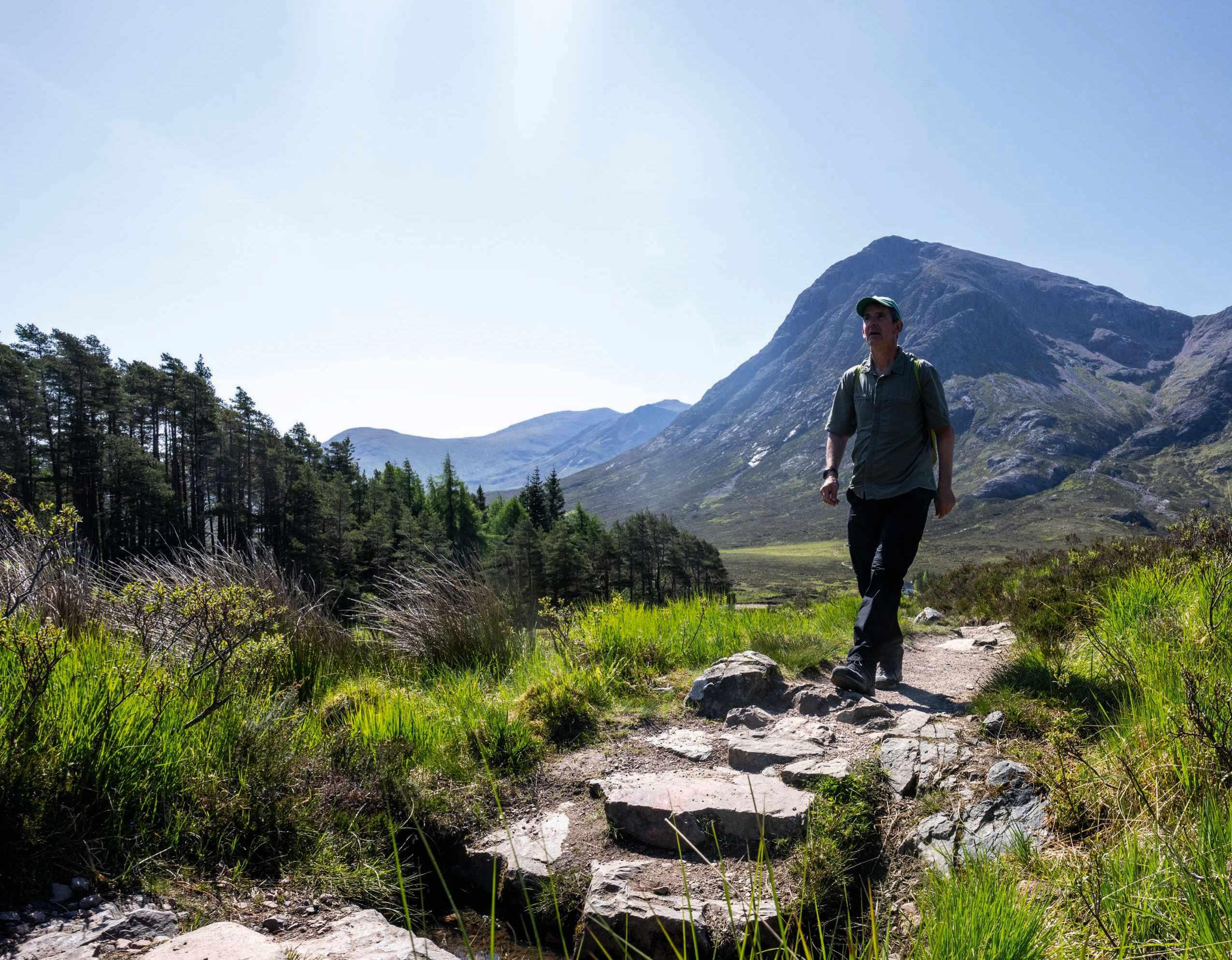
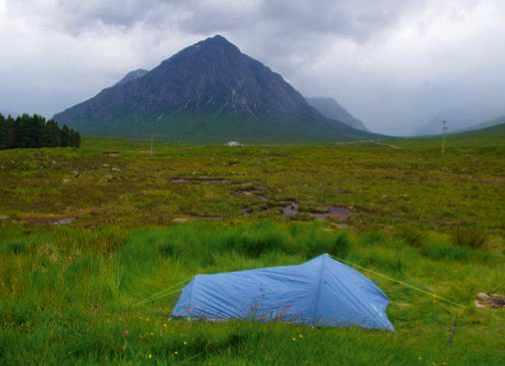
It’s possible to wild camp from end to end; just remember to respect nature and fellow walkers and leave no trace.
One favoured spot is next to the bridge at Bridge of Orchy, where there are free portaloos for campers. Things get more complicated when you pass through Loch Lomond & The Trossachs National Park, which has wild camping restrictions between March and September. lochlomond-trossachs. org/things-to-do/camping
There’s no camping on forestry land.
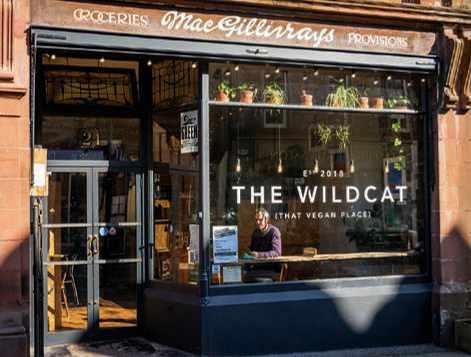
The Wildcat, Fort William
A vegan café with a reputation for great coffee and extremely tasty wraps. facebook.com/
TheWildcatFortWilliam
The Stagger Inn, Beinglas Campsite
A West Highland Way institution, with its beer garden and filling pub grub. beinglascampsite.co.uk
The Bistro, Inversnaid Bunkhouse
Open to all, with a friendly, lively vibe. inversnaid.com
Hungry between stops?
There’s a host of tiny (albeit slightly pricey) ‘honesty shops’ along the way. At a repurposed telephone box, for example, I invested in an energy-boosting homemade flapjack.
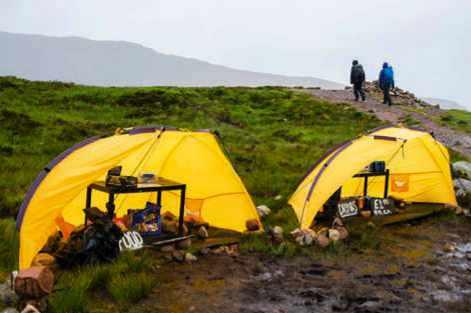
Served by railway stations at both ends (and at Crianlarich, Tyndrum and Bridge of Orchy), the West Highland Way is easily accessed by train (scotrail.co.uk). I took the sleeper (sleeper.scot) to Glasgow Central, walked to Glasgow Queen Street and caught a train to Milngavie. From Fort William, there are four trains a day to Glasgow, plus the sleeper to London.
Luggage-transfer services deliver your bag to your next port of call. I used Travel-lite (travel-lite-uk.com), who were very efficient, but there’s also Baggage Freedom, Ecosse Travel and more. Expect to pay around £65 per bag (max. 20kg) for the full trail and £15 for single transfers.
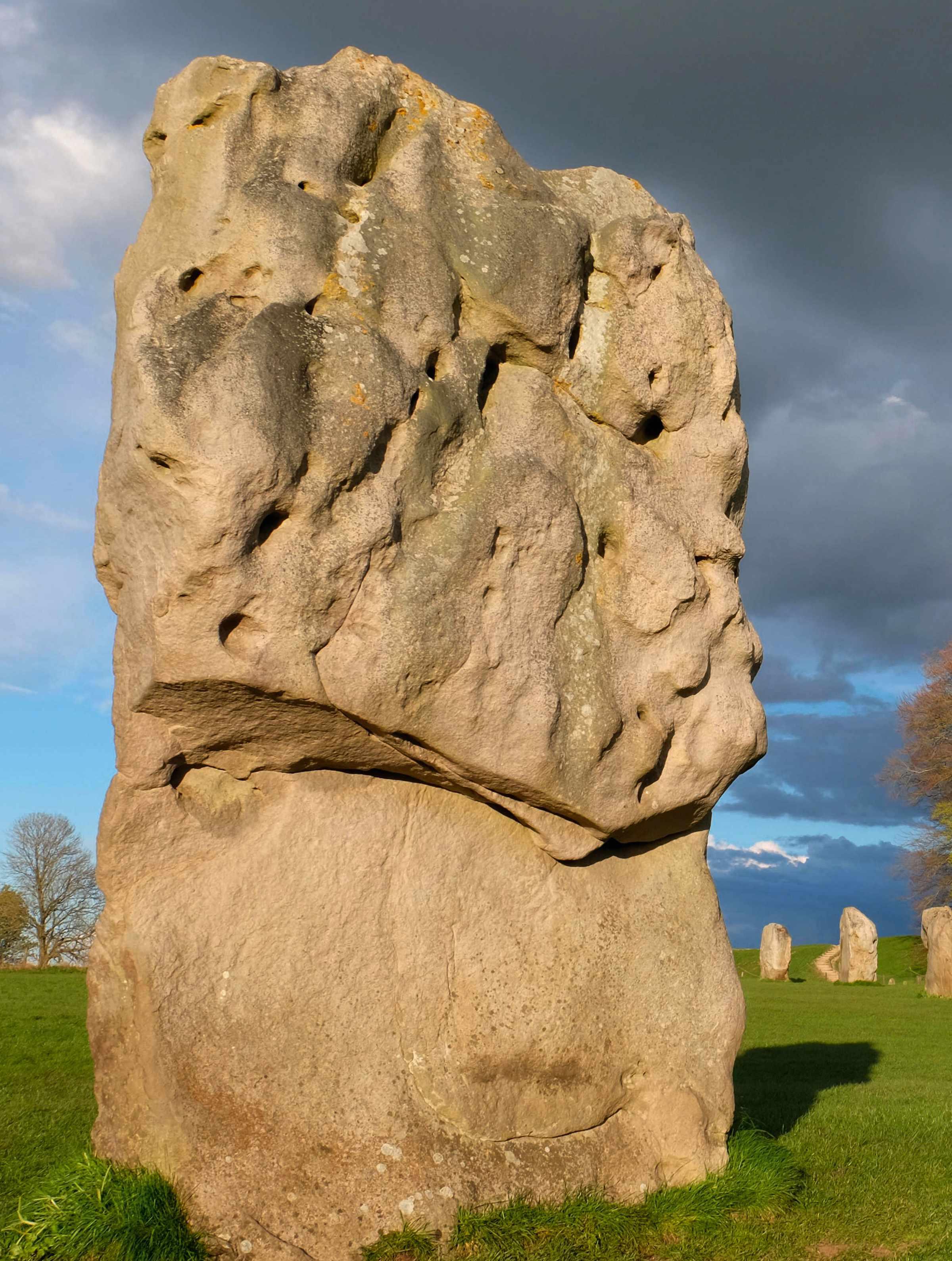
Stone circles, Iron Age hillforts and sleepy villages... Mary-Ann Ochota leaves modern life behind to roam the Ridgeway, the ancient trail through southern England’s mysterious chalklands
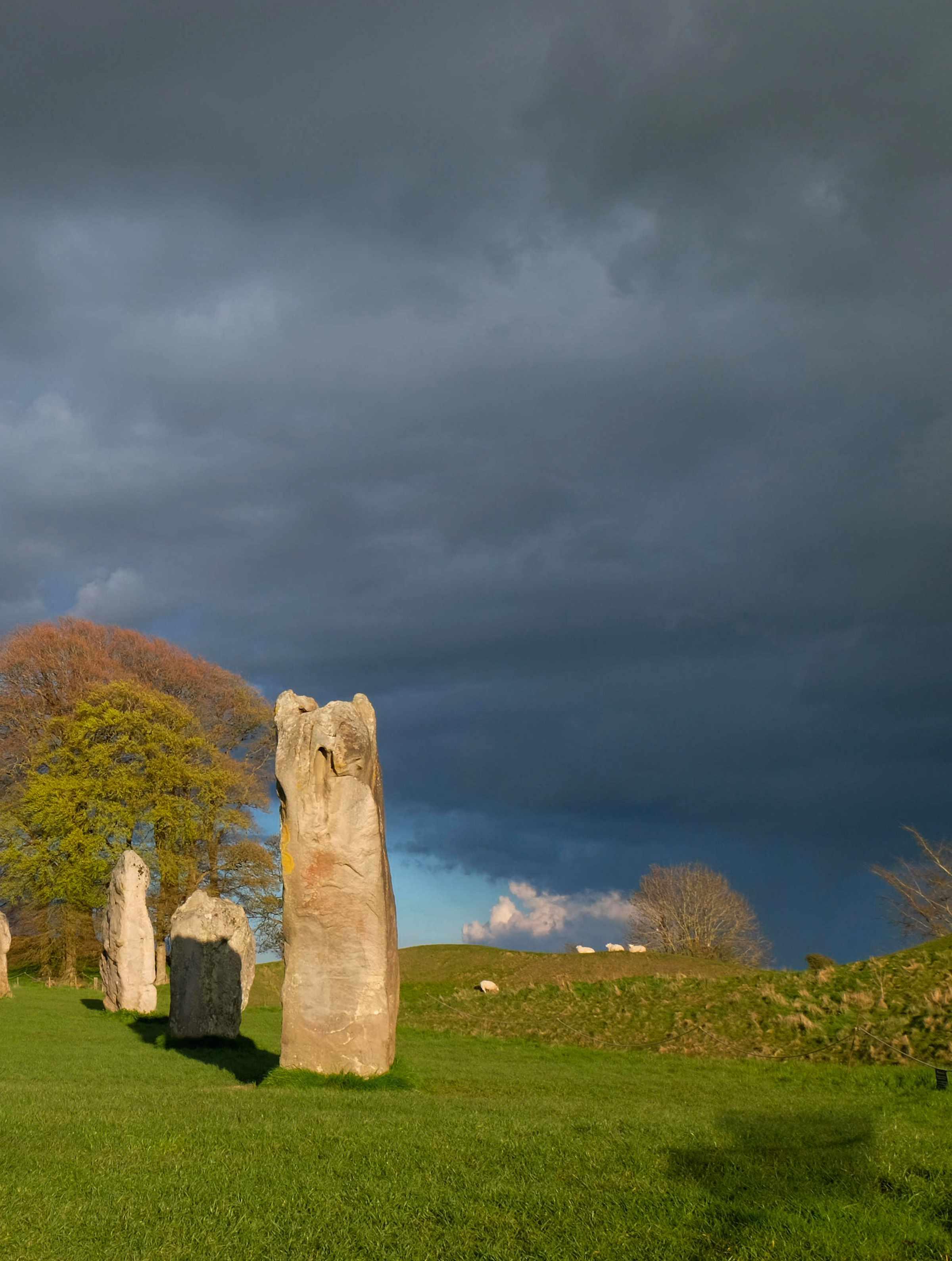
Start your journey along the Ridgeway at atmospheric Avebury, an astonishing complex of prehistoric monuments that includes the world’s largest stone circle
Photo: AlamyWriter Mary-Ann gets up close to an Avebury stone; only 76 of the estimated 600 original stones in the
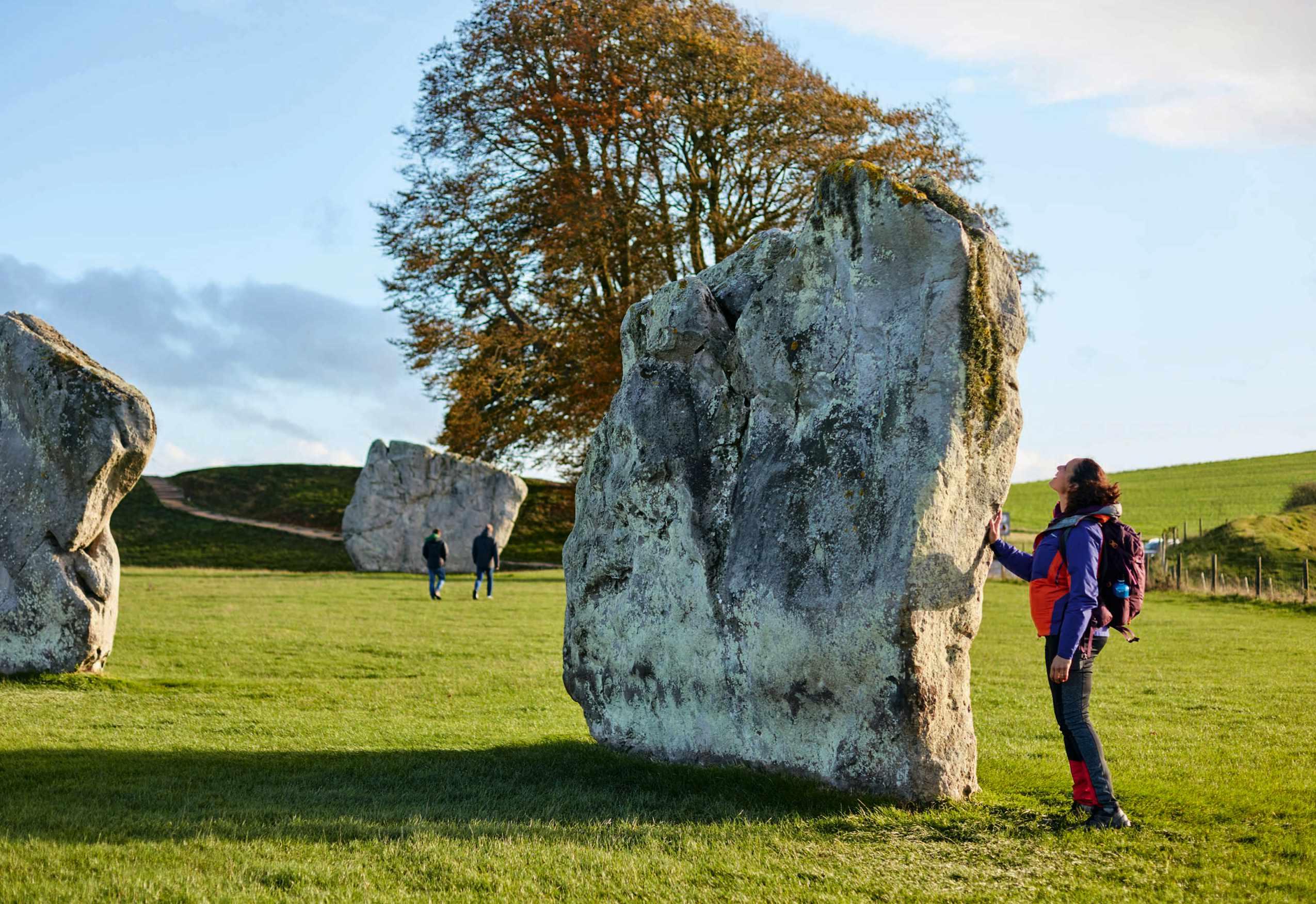
The wind whips over the wide fields and a flock of starlings skitters across the sky, tumbling in the gusts. We lean into the weather, eyes stinging and cheeks burning. A few moments later, the squall has blown through and a glittering haze hangs in the air. The landscape is gilded and magical. This elemental world, with huge skies and bold weather fronts, isn’t in a remote corner of Britain’s mountains – it’s in Wiltshire. And the route I’m following is an ancient one, a line cut through the landscape by pilgrims, traders, raiders and travellers for some 5,000 years.
intriguing prehistoric monuments. If you like geology, geography, history and archaeology, wildlife or birdwatching, then the Ridgeway is a route for you.
Many walkers take on the challenge of walking the whole route – either in one go, over a week, in a couple of long weekends, or a series of day walks (see box, page 51). Others prefer to explore a shorter section as part of a circular walk. Whether you’re on foot, bike wheels or horseback, the gentle terrain and easy-to-follow route make the Ridgeway a perfect introduction to Britain’s longdistance National Trails.
“Wherever you travel on the Ridgeway, you’re walking in the footsteps of the ancients”
The route is the Ridgeway. Now a designated National Trail, it follows a chalk ridgeline that rises and falls for 87 miles across southern England, from Wiltshire eastward to the Chiltern Hills north of London, via the counties of Oxfordshire, Berkshire, Buckinghamshire and Hertfordshire. For the walker, the Ridgeway offers sweeping views across wide fields, through ancient woodlands, along wide droveways with wizened hawthorns, down deep green holloways and a string of
My Ridgeway adventure started at Avebury, at the western end of the trail. It’s such an extraordinary place that I gave myself a day to explore the ancient sites there before setting off on my hike.
The village is in the centre of a vast earthwork henge – a circuit of banks and ditches 10 times the size of Stonehenge and built by hand, using only stone tools, almost 5,000 years ago. Inside the earthwork is a circle
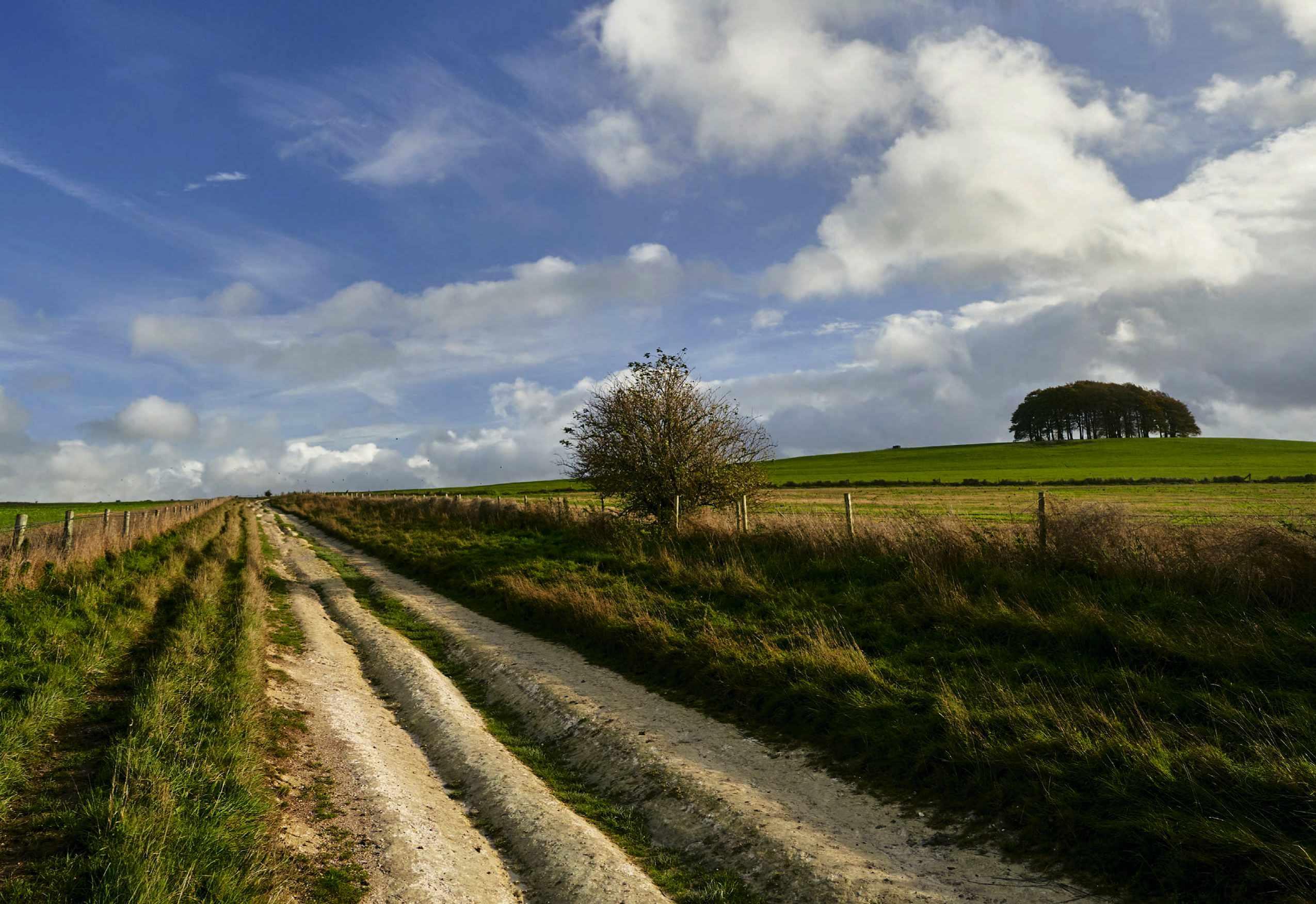
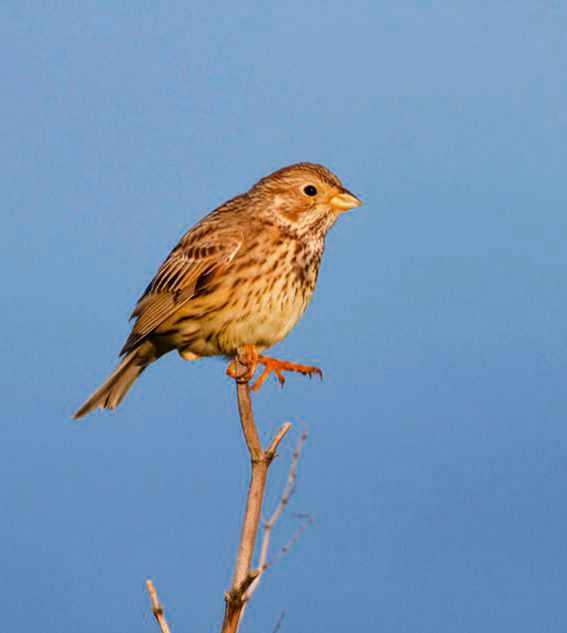
ABOVE LEFT Wiltshire is a stronghold of the corn bunting, a red-listed farmland bird whose numbers are in decline
ABOVE RIGHT Completed around 4,000 years ago, enigmatic Silbury Hill is the largest artificial mound in Europe
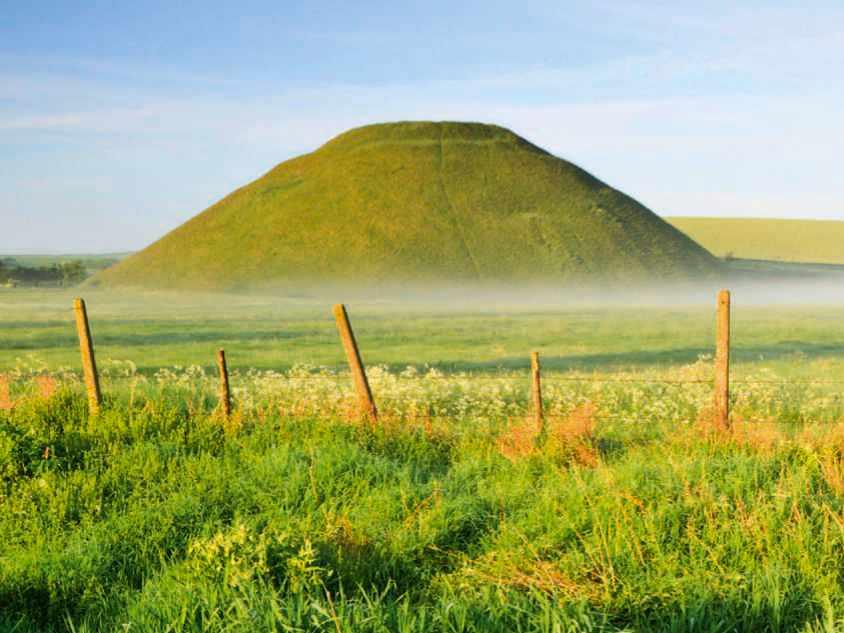
of standing stones – absolute whoppers. From the circle, a stone-lined avenue leads towards other nearby ceremonial spots, including Silbury Hill and the Sanctuary.
There are no tickets or barriers in Avebury –anyone can move around the stones and explore, getting a feel for this mystical and ancient place. I give a big squarish stone a hug. With my cheek pressed against the cold roughness, I try to imagine all the things this stone has seen, the generations of human lives: the people of the late Stone Age who erected it; the Bronze Age people who ignored it; the Romans who marvelled at it; the medieval
Christians who reviled it as the Devil’s work and tried to destroy it; and now us, including tourists, dog-walkers, modern-day pagans and any number of scientific researchers.
The bedroom window of the Silbury House B&B looks on to the stones of the ‘Cove’, an arrangement that has so far defied archaeological explanation. Is it strange, I ask owner Steve, to live in the middle of a prehistoric monument? “Odd things do sometimes happen here,” he smiles. “But it never feels malevolent. Obviously the ancestors approve of what we’re doing.”
The following morning dawns clear and I set off along a green lane that runs out of the village, the Herepath, from the old English words for ‘war path’. It would likely have been used by Anglo-Saxon soldiers under the command of King Alfred in the ninth century AD. It’s another reminder that wherever you travel on the Ridgeway, you’re walking in the footsteps of the ancients.
A round brown bird perched on a fencepost repeats a song that sounds like jingling keys. The corn bunting is an iconic species in arable
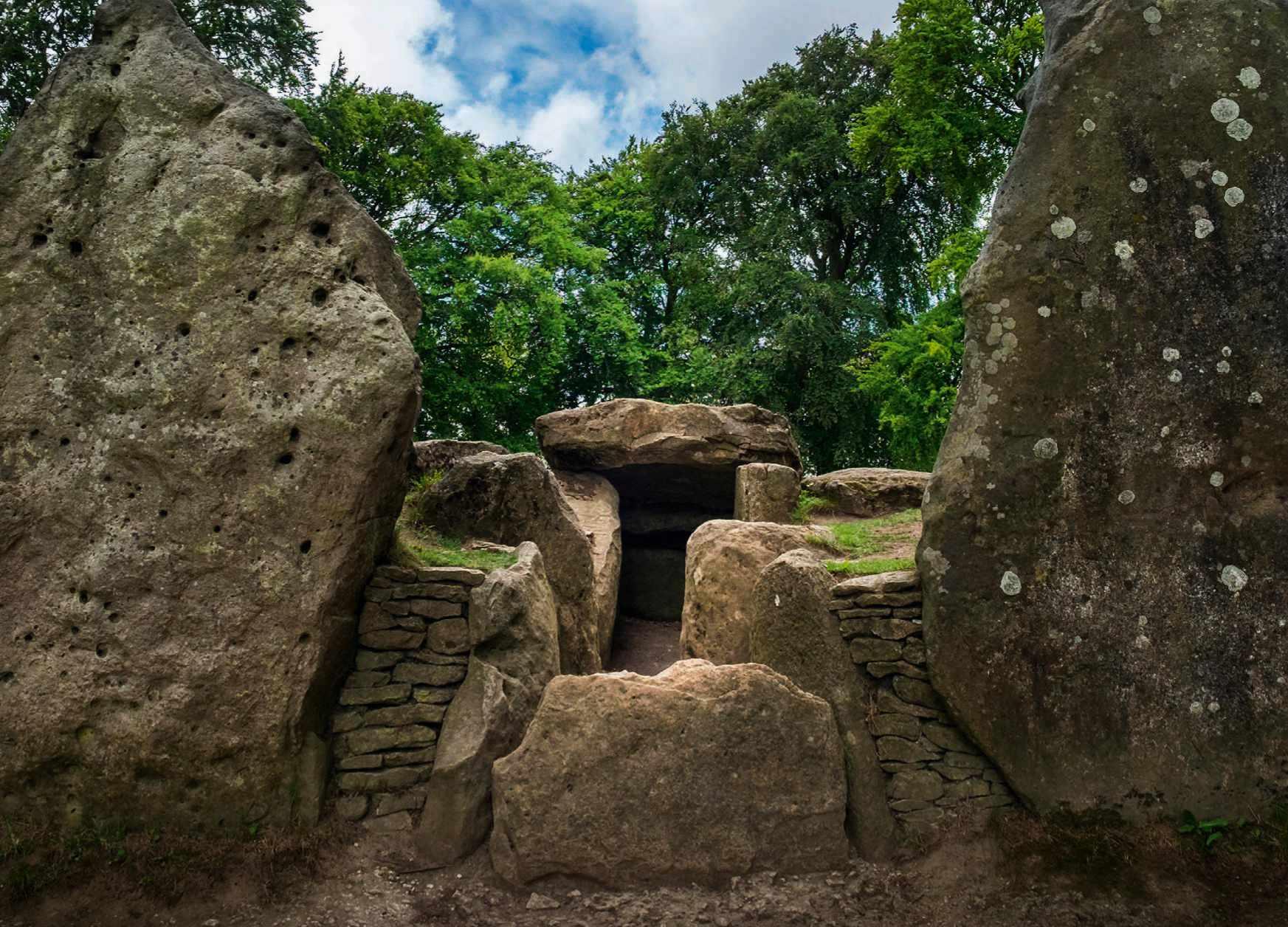
Hillforts and long barrows are hard to miss, but subtler clues to our ancient ancestors are also written into the landscape of the Ridgeway. Look for small depressions; these may be where ‘dewponds’ (pictured below) were created, lined with clay and straw to hold rainwater for the animals to drink as drovers gathered their stock on the droveway near market towns. Many dewponds fell into disrepair once livestock were no longer driven on foot. Now they are being restored for nature, including some alongside the Ridgeway at Berwick Bassett and Barbury Castle (see the short film spacefornature.net/ponds).
There are natural features, too, awash with geological wonder and layers of folklore, such as the Devil’s Punchbowl, a vast natural amphitheatre at the northern edge of Lambourn Downs.
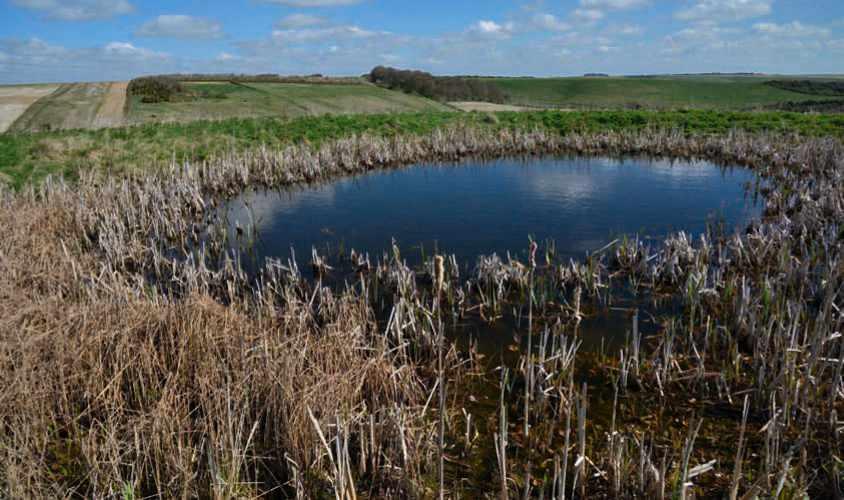
farmland like this. Later, there are meadow pipits and skylarks, a spindle tree in vibrant colour, wax cap mushrooms in the verge and a beetle known as a ‘devil’s coach horse’, which looks like a little scorpion.
I make a detour at Fyfield Down. The rough grassland is scattered with boulders, a kind of sandstone called sarsen – the same as the standing stones at Avebury and the largest stones at Stonehenge. I head downhill, looking for a low flattish boulder with a series of deep, smooth grooves rubbed into it. This is a polisoir, or ‘polisher’ stone (pictured far right), used thousands of years ago by Stone Age people to polish axe-heads to a mirror finish.
It’s a gradual climb from Fyfield Down over wide, windswept fields to Barbury Castle hillfort, the first of a chain of Iron Age hillforts along the route; others include Uffington, Liddington and Segsbury. Beech trees grow in clumps on the top of ancient burial mounds.
My bed for the night is in the pretty village Ogbourne St George. Look out for the unusual thatched cottages built from blocks of chalk.
After 10 miles or so, the Ridgeway passes two more remarkable ancient monuments: the boulder-and-earth remains of a 5,500-year-old tomb at Wayland’s Smithy (pictured above), and a mile or so further, the astonishing

ABOVE LEFT Built more than 5,500 years ago, the long barrow at Wayland’s Smithy was the focus of ritual for generations of prehistoric people
ABOVE RIGHT To remain visible, the Uffington White Horse needs regular ‘scouring’, with fresh chalk beaten into its surface
RIGHT The Fyfield Down polisher stone may have been used to polish stone axes from as far afield as the Lake District
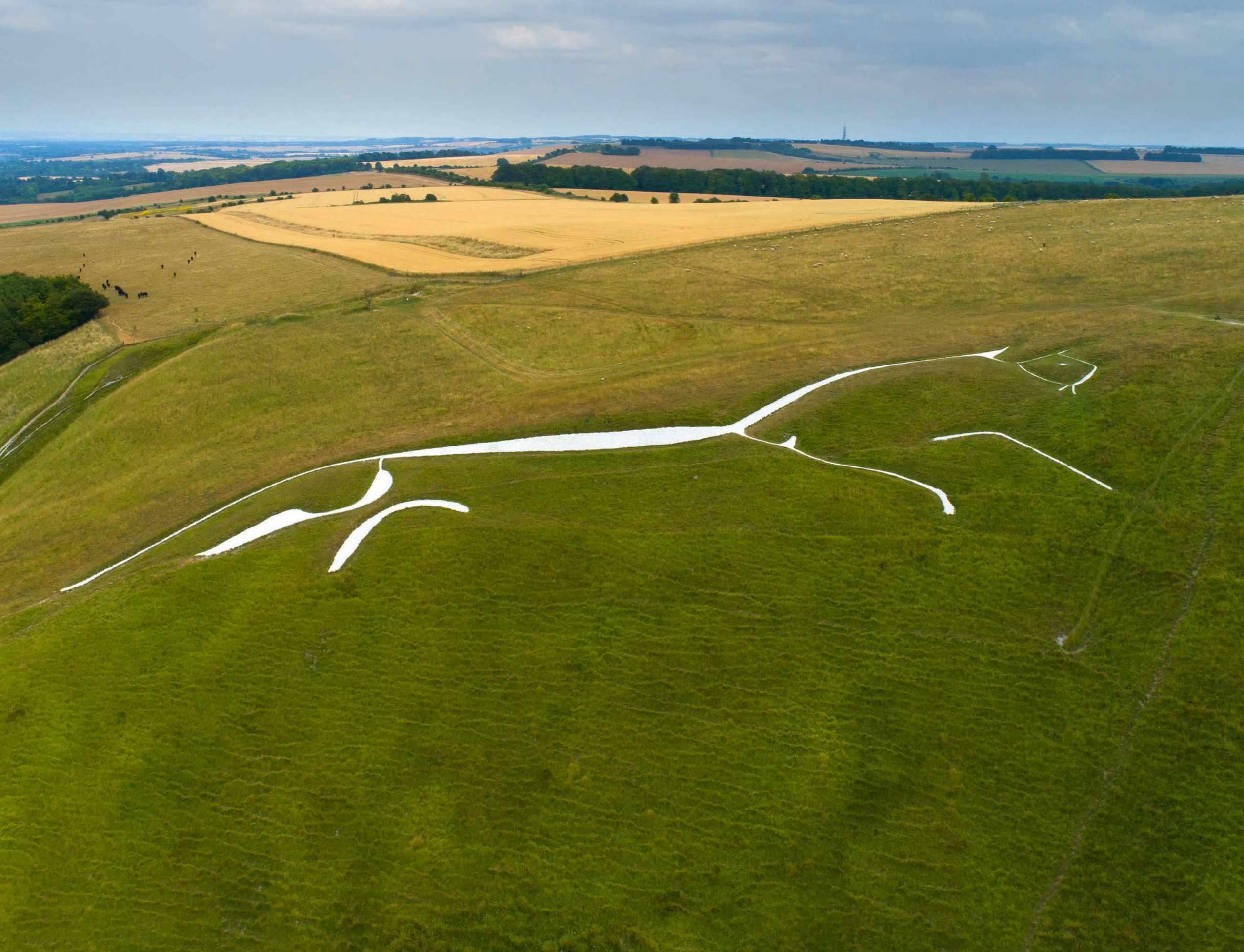
Uffington White Horse hill figure, which was cut into the chalk hillside about 3,000 years ago. A string of villages lies at the foot of the chalk ridge: among them Woolstone, Kingston Lisle and Sparsholt, and many have inns that offer a bed for the night.
The next day begins with one of the most dramatic natural landmarks on the Ridgeway: the Devil’s Punchbowl. This gaping chasm, according to legend, was created when the Devil fought with the god of thunder. When Thor tried to strike the Devil with a bolt of lightning, the vengeful Devil tore a giant fistful of earth from the hillside and flung it back.
Over the rolling downland, you might spot strings of racehorses being exercised. The open ridge can feel exposed in windy weather; there’s also little shade in summer. But in parts there are small patches of ancient mixed woodland; hawthorn and thick hedges create an abundant corridor for wildlife, so keep an eye and ear out for chalkland birds and butterflies.
On Bury Down, the Ridgeway is up to 40m wide; this area was once used by drovers to Photos: Alamy
“The astonishing White Horse figure was cut into the chalk hillside about 3,000 years ago”
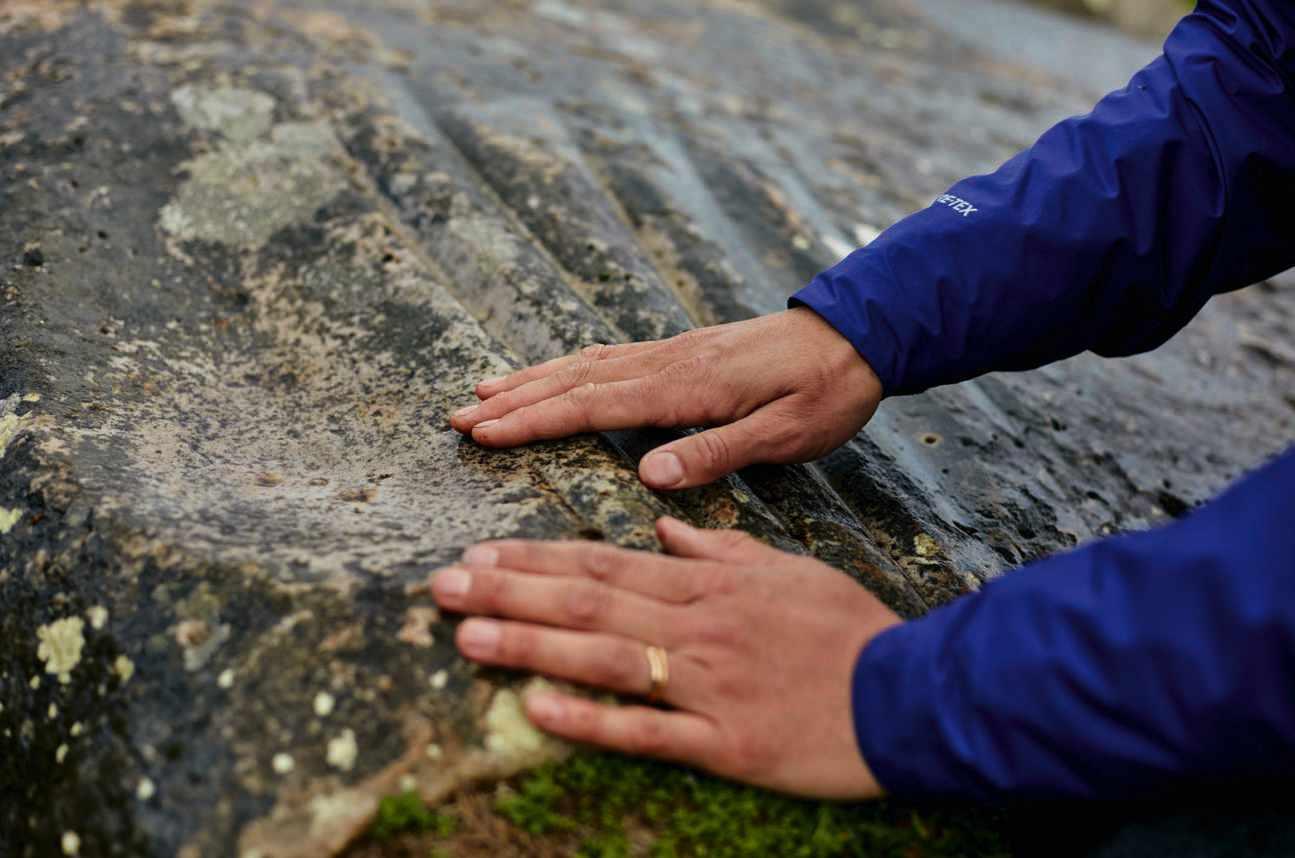
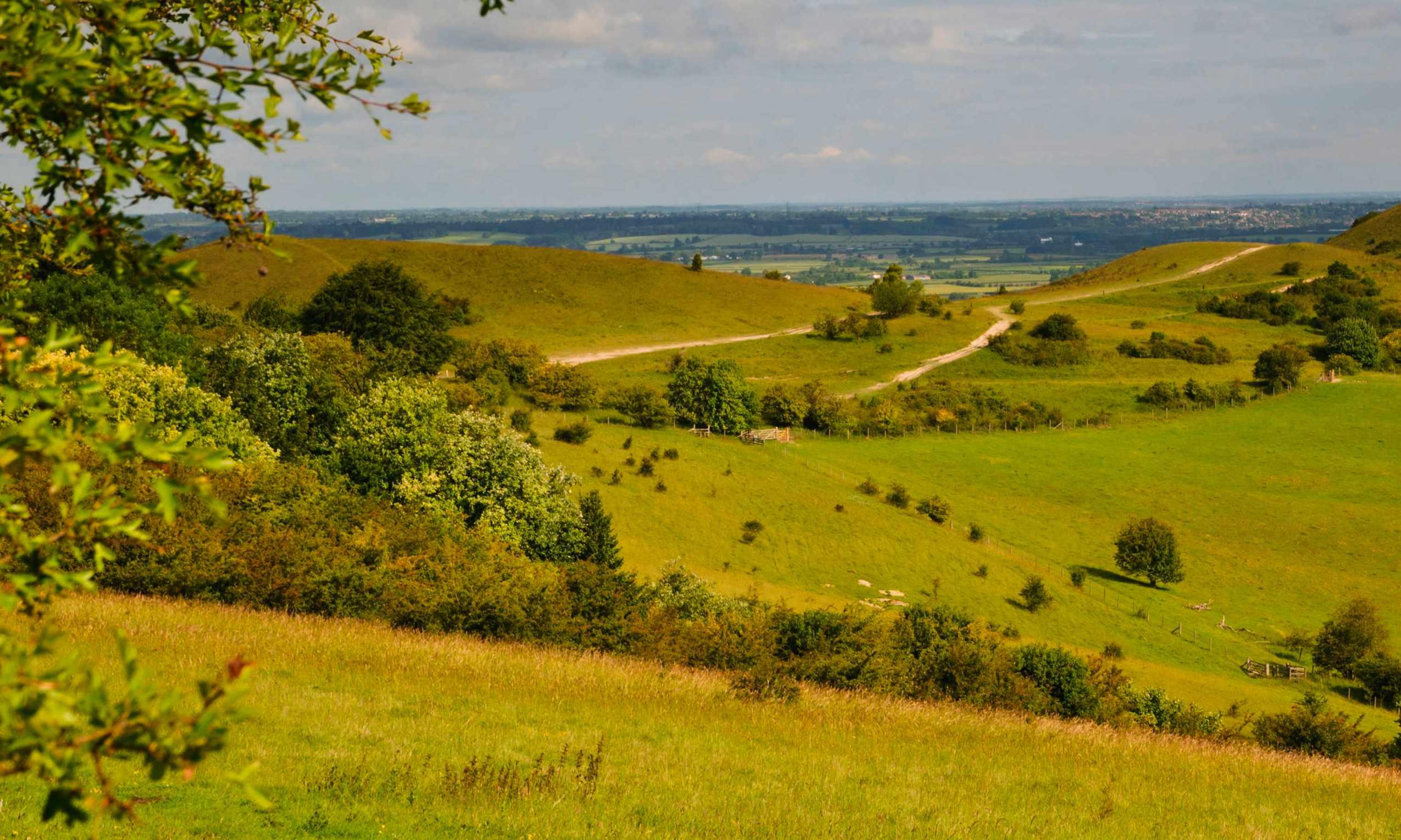
gather sheep before the sales at nearby East Ilsley village. The day ends on the banks of the River Thames, at the twin towns of Goring on Thames and Streatley (pictured right).
The Ridgeway winds north from Streatley along the banks of the Thames, then turns east on the route of the ancient Grim’s Ditch, one of a number of earthworks that probably marked tribal boundaries in the pre-Roman period.
Now into the Chilterns Area National Landscape (what used to be called an Area of Outstanding Natural Beauty), you will notice that the scenery is more wooded and the path meanders through and around the rippling landforms of the Chiltern Hills. Some inclines are steep and can be slippery after rainfall, but all of them are short. The path remains well marked – look for the acorn icon on waymarkers. The undulating section between Watlington and Wendover will feel a little more strenuous than the others, especially if your feet are already tired.
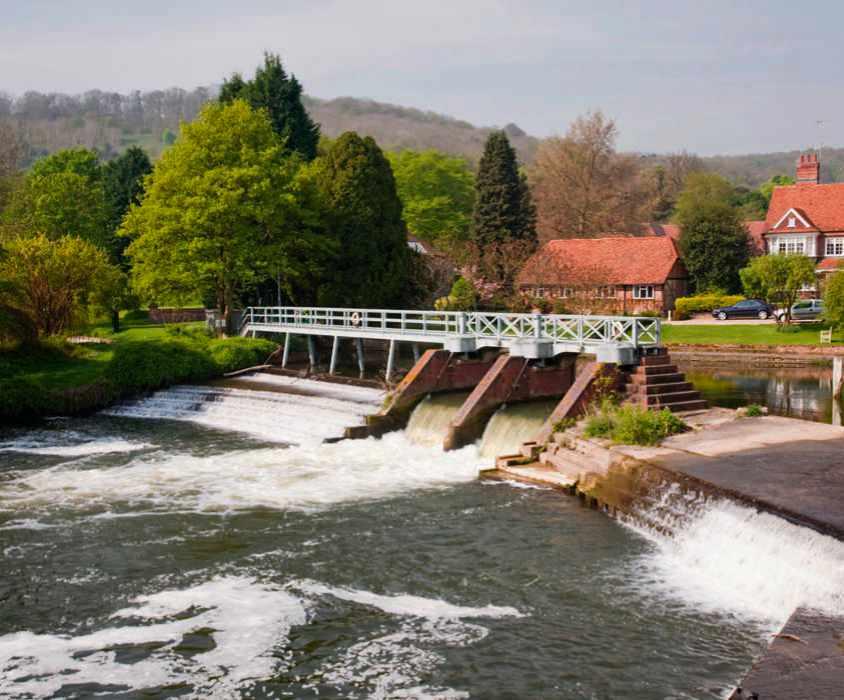
ABOVE Leafy Goring-onThames marks the mid-point of the journey
ABOVE RIGHT Pyramidal orchids are one of the many rare wildflowers found among the chalk grasslands of the Ridgeway
“Peer closer and you’ll spot rare orchids, tiny native herbs and a host of uncommon butterflies”
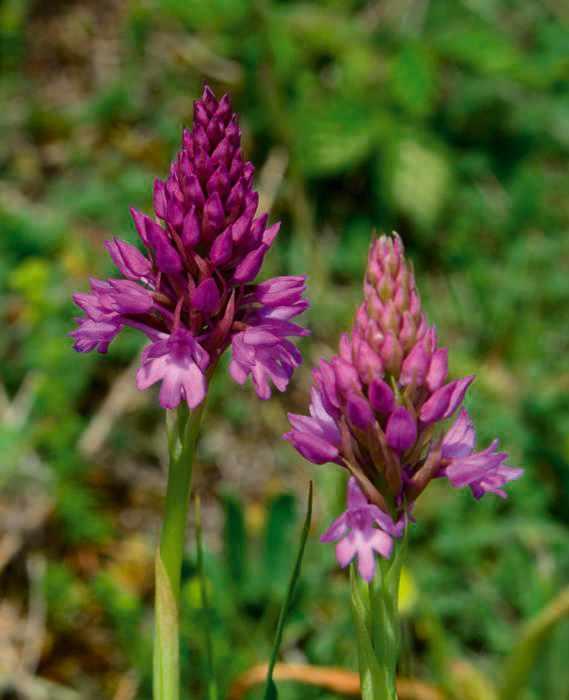
Start the day following the ancient Icknield Way, through the glorious Aston Rowant National Nature Reserve and then over the fields to Princes Risborough. Between mature beech woodlands lie stretches of open, ‘unimproved’ chalk grassland. This means it has never been ploughed or fertilised in the past. It can look unkempt, but peer closer and you’ll spot rare orchids, tiny native herbs and a host of uncommon butterflies. Many quaint villages are just off the trail, often well signposted.
A slightly shorter final day to the heights of Ivinghoe Beacon through multiple patches of ancient woodland – lime green in early
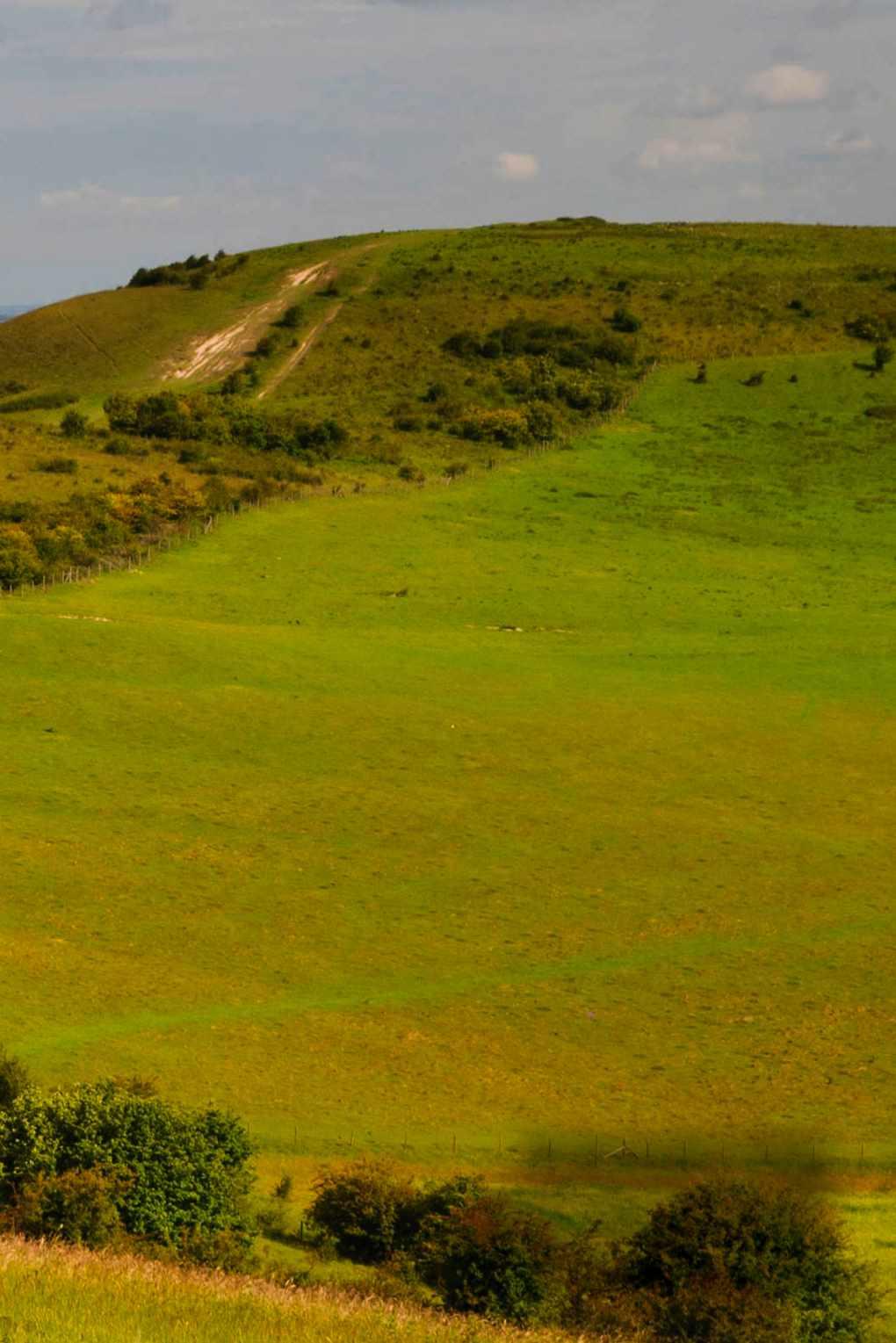
For thousands of years, people have beaten a path to the top of Ivinghoe Beacon in search of a viewpoint
summer, gloriously golden in autumn. Around Wigginton, you will cross road, rail and canal in quick succession, squeezing into the flat valley floor between two chalk scarps. It’s a reminder that geology always has a say in this busy landscape.
After Tring station, the final miles offer glorious views over the Vale of Aylesbury and your end goal, the trig point at Ivinghoe Beacon. The Chilterns’ most prominent landmark, the Beacon rises high above the fertile plains of Bedfordshire. This beautiful spot is a fitting place to end our trail: dramatic and windswept in winter, sun-kissed and speckled with wild orchids in summer. Red kites wheel overhead, making their plaintive cries.
Whether you commit yourself for the week, or dip in for a few hours of calm, the Ridgeway will deliver. It’s a walk through the history of Britain. It’s also a walk into nature restoration, and into the future, with makers’ spaces and microbreweries finding their place alongside veteran hawthorns and corn buntings. Explore and enjoy – along its length or bit-by-bit. The Ridgeway is waiting to weave your story into its ancient fabric. CF

Mary-Ann Ochota is a broadcaster and author specialising in archaeology and anthropology. Her book SecretBritain:UnearthingOurMysterious Past(Frances Lincoln) is out now in paperback. maryannochota.com
If you want to test the path before committing to the whole route, here are some of my favourite days out on the Ridgeway.
Best afternoon stroll
Take in the section of the Ridgeway through the water meadows of the River Thames, from Goring on Thames to North Stoke.
Best stile-free circular walk
Fully way-marked and free of stiles, the 5½ mile (9km) Aston Rowant Discovery Trail south of Thame begins at the 1,000-year-old church in the village and heads into the woods. In the spring, the bluebells are glorious.
Best sunset spot
Myriad paths take you to the Coombe Hill monument commemorating the men of Buckinghamshire who died fighting in the Second Boer War (1899–1902) in South Africa. The hilltop is the highest point in the Chilterns, with panoramic views across Aylesbury Vale.
Top off-road wheelchair route
Ashdown House to Wayland’s Smithy, Oxfordshire. As recommended by Disabled Ramblers, this is a ramble for experienced mobility scooter users who have an off-road scooter like the Tramper. First journeying through the grounds of Ashdown House estate, you
Dorwyn Manor B&B Avebury
Walking distance from the ancient henge, this environmentally conscious B&B with helpful owners offers a generous breakfast. dorwynmanor.com
White Mark Farm Campsite Watlington
Alongside the Ridgeway trail, this small campsite and adjoining glamping is simple and clean, with a small on-site shop. You can reserve a fire basket to make a campfire, and you’ll see red kites overhead. whitemarkfarm.co.uk
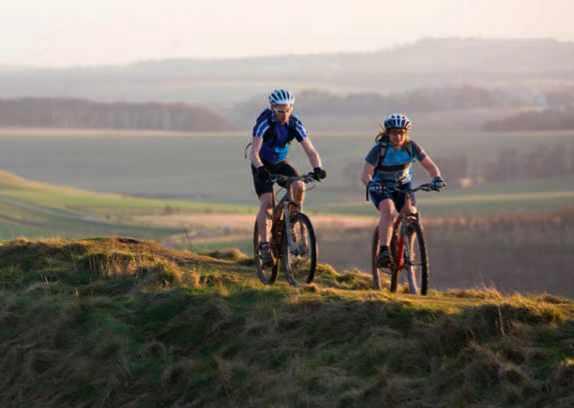
then follow the Ridgeway and other green lanes to reach Wayland’s Smithy burial tomb. Details here: out.ac/EZOsK
Best bike ride
The wide droveway near Bury Down in West Berkshire makes for a rolling ride with plenty of space and views galore. Opt for a there-and-back, or pick out a circular route taking in quiet lanes and bridleways that link the Ridgeway with the villages in the valleys.
Sections of the Ridgeway form part of the 350km King Alfred’s Way bike route, from Winchester, to Stonehenge, along the Ridgeway and to the South Downs. cyclinguk.org/king-alfreds-way
Top family adventure spot
Uffington White Horse and Barbury Castle are both easy to park at and fun to run around and explore.

YHA hostel
StreatleyonThames
Private rooms from £30 per night (above); use of the kitchen, and with cooked breakfasts available. It’s right on the junction of the Thames Path and Ridgeway National Trails. yha.org.uk/ hostel/yha-streatley-on-thames
Photos: Alamy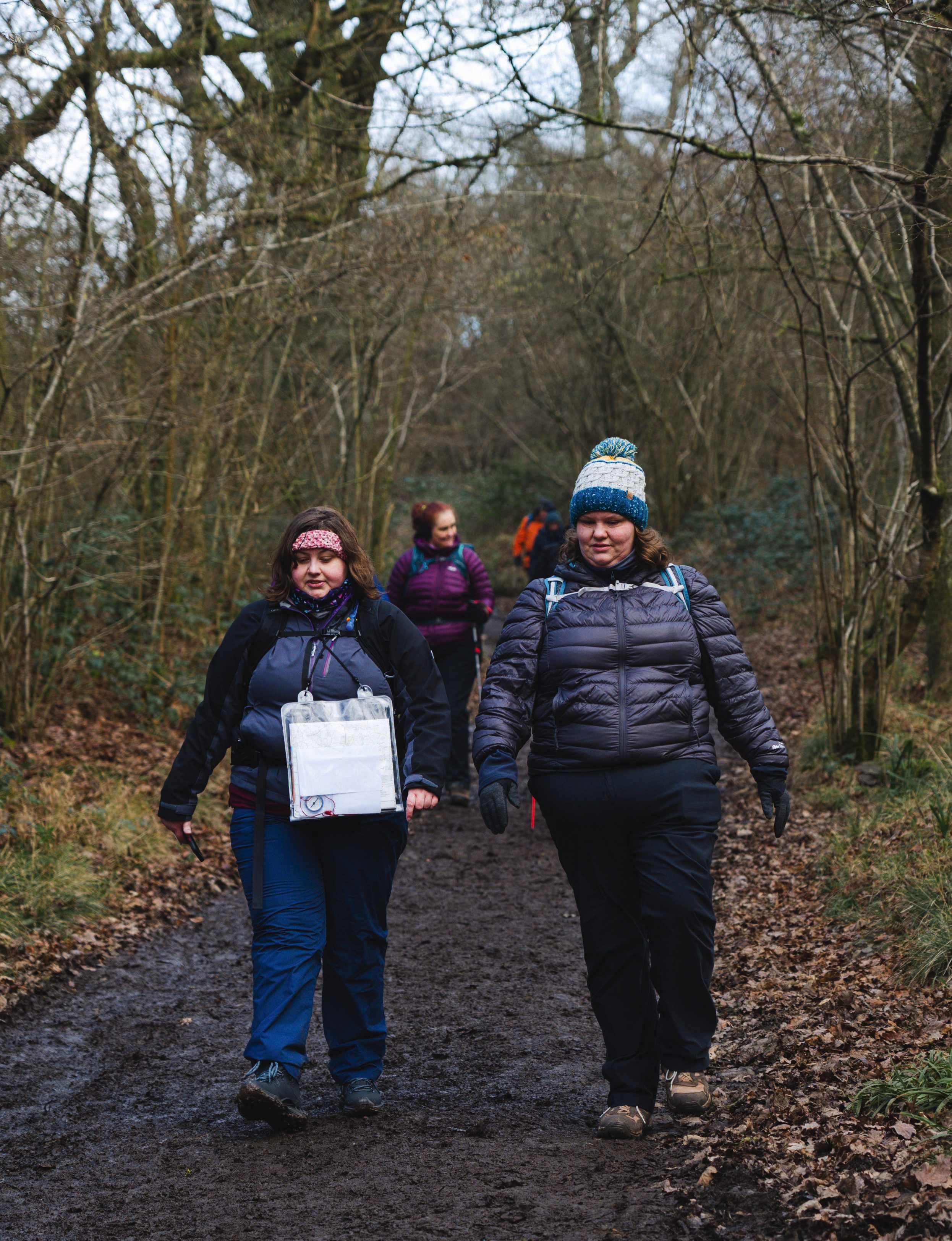
Some plus-size people think the outdoors is not for them. They should think again, urges size-20 Steph Wetherell. With some smart gear choices and support from others, every body can enjoy the benefits of being active in the countryside
Five years ago, I spent a fortnight solo walking and wild camping along St Olav’s Way, a pilgrimage trail in Norway. I walked more than 160 miles, camping on hilltops and in sleepy woodlands, wearing leggings I’d bought at the supermarket, tops from a high street retailer and a cheap ill-fitting men’s waterproof. You might presume I was unprepared, but the reality is I couldn’t find suitable outdoor clothing to fit my size-20 body.
As I developed a love of long-distance trails, I discovered the limits of these items – my clothes were heavy and bulky, the only jacket that fitted me was uncomfortable and not very waterproof, and my layers weren’t quick-drying or breathable. This didn’t stop me from getting outdoors, but it made it uncomfortable and more challenging.
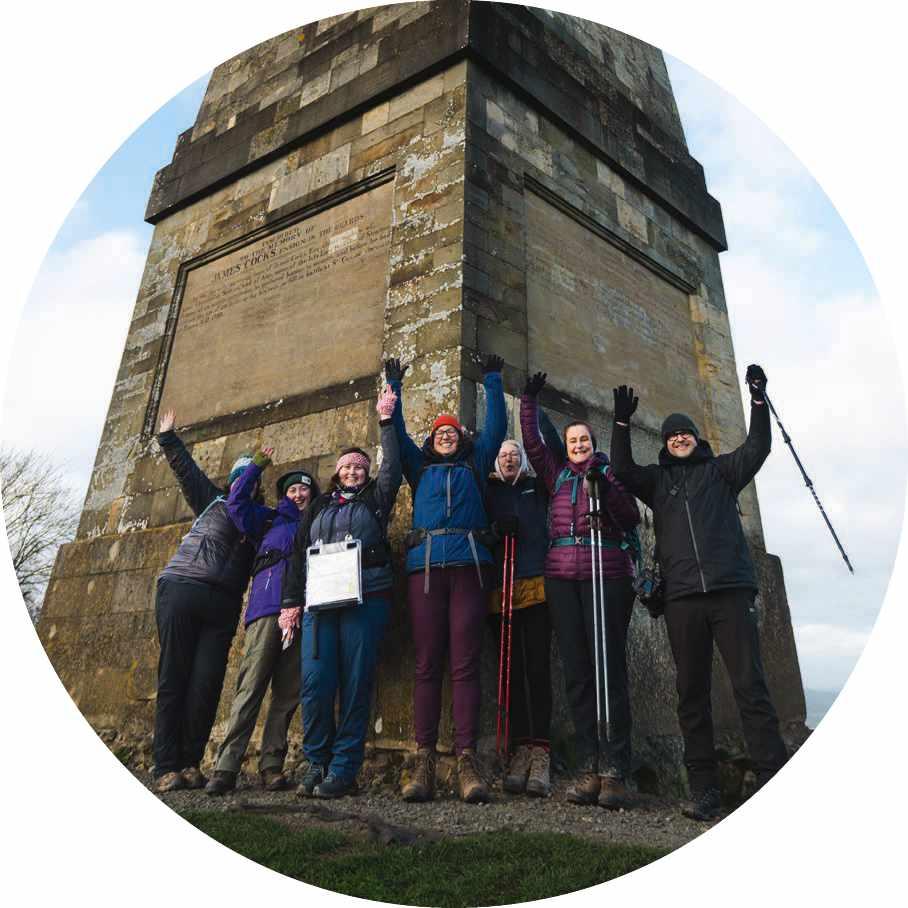
Over the next few years I began to connect with other UK-based plus-size outdoors enthusiasts over social media, and inspired by groups such as Unlikely Hikers in the US, five of us decided it was time to try and create change within the UK outdoor industry. In January 2022, with little more than a vague plan, we created Every Body Outdoors (EBO), bought a domain name and set up an Instagram profile.
The response was overwhelming, from plussize hikers, cyclists, paddleboarders, climbers,
ABOVE Members of the South Midlands Every Body Outdoors community celebrate reaching the Somers Family Obelisk in the Malvern Hills LEFT Regional volunteers lead local walks and are trained in map-reading and orientation skills
kayakers and more, all struggling to find the clothing and kit they needed to do these activities comfortably and safely. While EBO was set up by women, it was clear that larger men were facing a lot of the same issues accessing gear, confirming that our work needed to span across genders. The problems aren’t limited to clothing either – there are similar issues with rucksacks, climbing harnesses, personal flotation devices and sleeping bags. As well as appropriate gear, people spoke about other barriers faced when getting outdoors, including common incidents where people were left behind by group leaders or made to feel unwelcome by other participants, and the widespread issue with judgemental comments or verbal abuse from others in the outdoor community.
As our community grew, it became clear there was a need for physical spaces where people in larger bodies could gain skills and confidence in the outdoors. This led to the creation of hill skills courses specifically for plus-size people, and training up the first group of regional volunteers to run local walks around the UK. These courses and walking groups have proved incredibly popular. “This was a lifechanging experience,” one participant shared: “I felt so empowered at the end of the
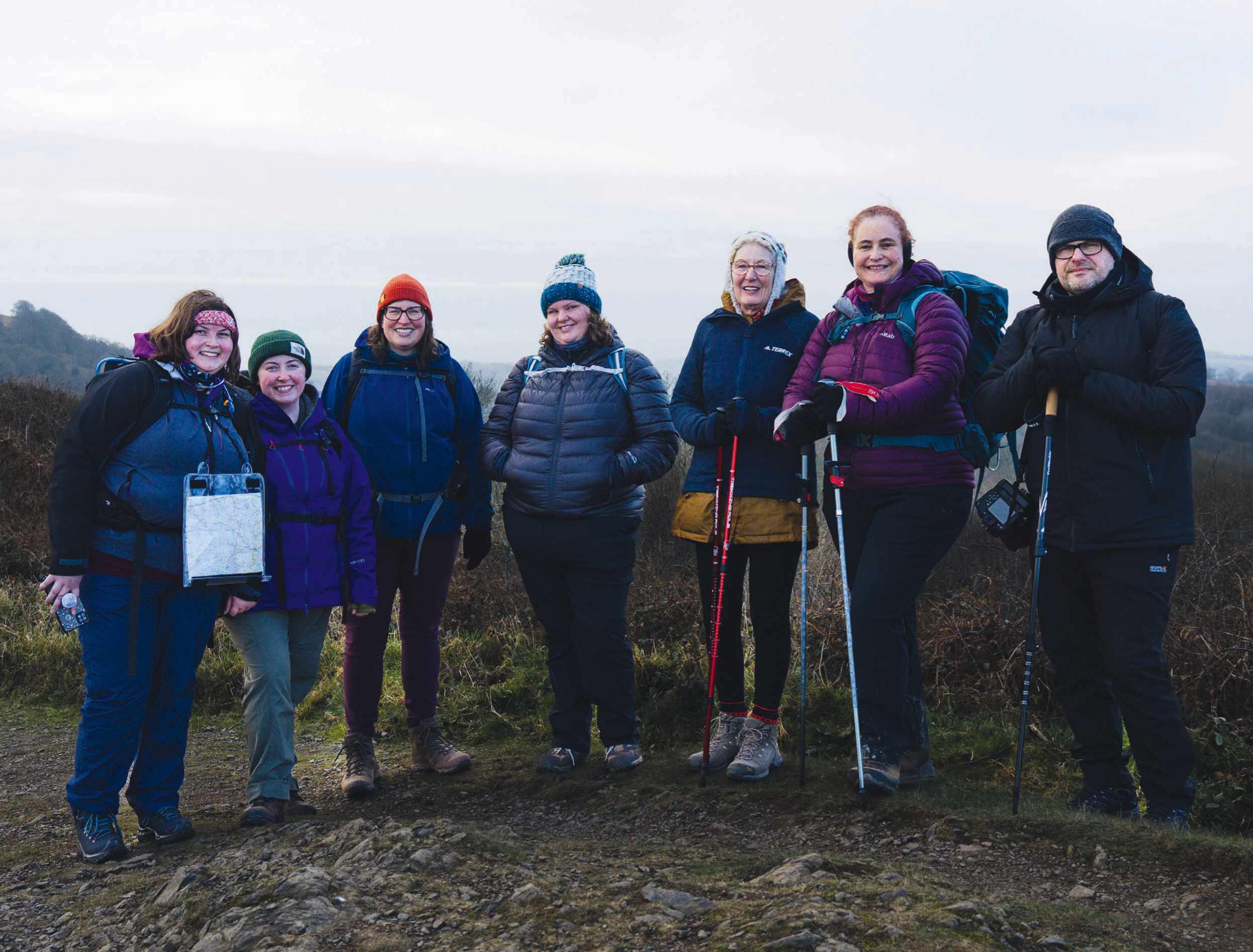
Naida got involved with EBO because, as a plus-size person, she sometimes felt like an outsider when accessing the outdoors. “I’ve found a community in shared experiences, and it’s encouraging and motivating to come together to help change people’s perceptions around plus-size people,” she points out. She encourages people to find a local EBO group walk: “It can really help to find like-minded individuals to keep you motivated.”

“This was a life-changing experience; I felt so empowered”
weekend, like I could take on anything.” There are now 11 EBO groups across the UK, from north and east Scotland to south-west England, with plans to start more groups in other areas of the country. Over the coming years, the aim is to increase the training offering, too, to create more safe and supportive spaces for plus-size people.
Naida’s favourite bit of kit is a pair of Alpkit waterproof trousers that she first tried on at an EBO event. “They’re super lightweight and breathable, and best of all they fit!”
On the EBO Instagram and Facebook pages there is representation of larger bodies taking part in outdoor activities, kit reviews of plussize clothing, and a private Facebook group where the EBO community can ask for advice and share their experiences. Members regularly share what a difference the group has made to them; how they’ve tried a new activity because they’ve seen someone do it on EBO social media, how they feel more comfortable
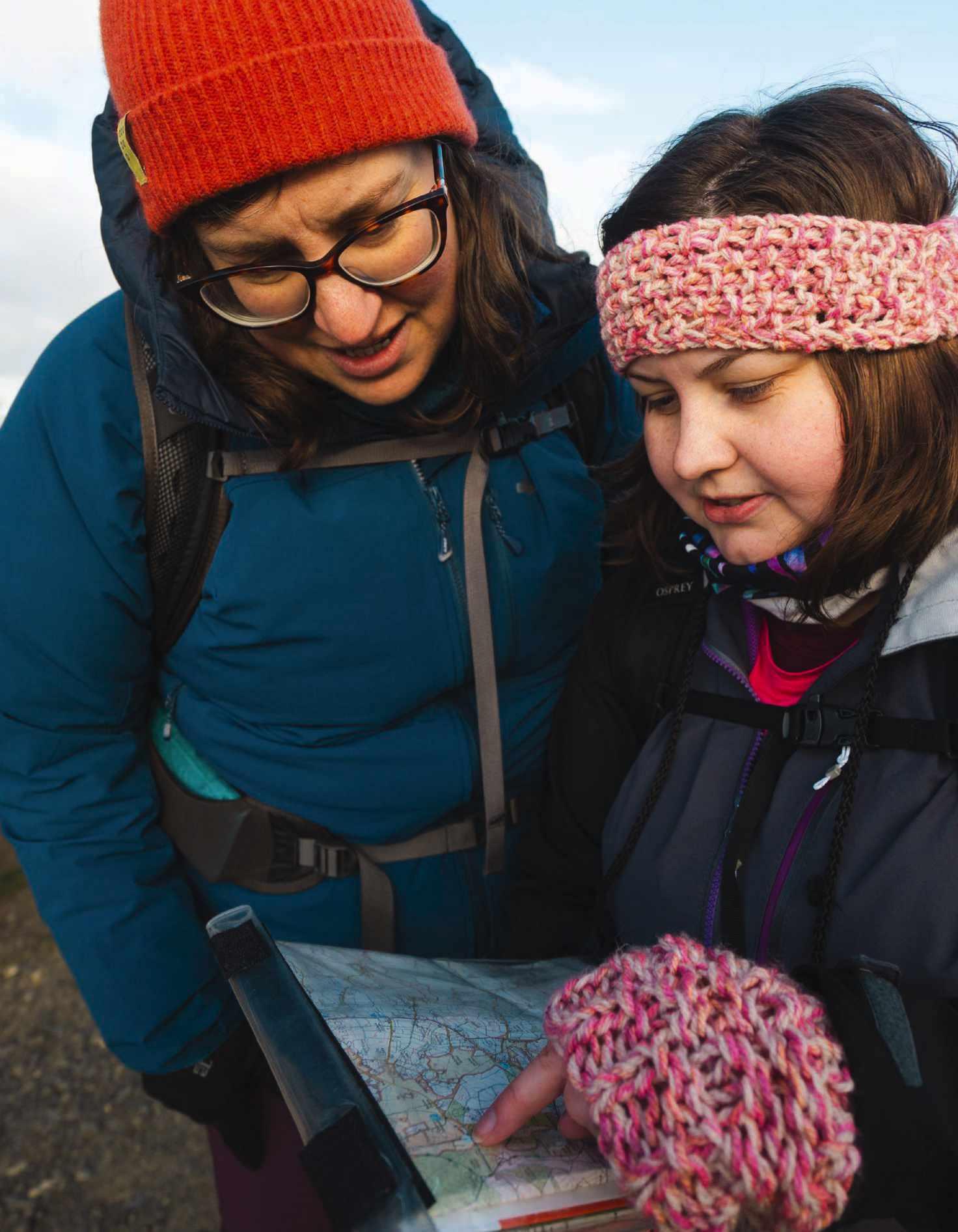
with their body since seeing others who look like them, and how they felt more confident advocating for their needs.
You don’t need expensive gear to get started –a waterproof jacket and boots are a great place to start. For entry-level items, Craghoppers offers up to a size 24, Regatta up to a size 26 (5XL) and Mountain Warehouse to a size 32 (5XL). The majority of more technical clothing stops at a size 16–18, but several companies – such as Patagonia, Sprayway, Alpkit and Mountain Equipment – offer options in a size 20. US-based brand Outdoor Research is now stocked in a few UK online outlets, including Vampire Outdoors and Valley and Peak, offering technical clothing up to a 4X (UK size 30). Most plus-size clothing is only available online and sizes can vary hugely between brands, so using a tape measure is vital to find the right size. Cotswold Outdoor is working on expanding its range of plus-size clothing.
www.countryfile.com
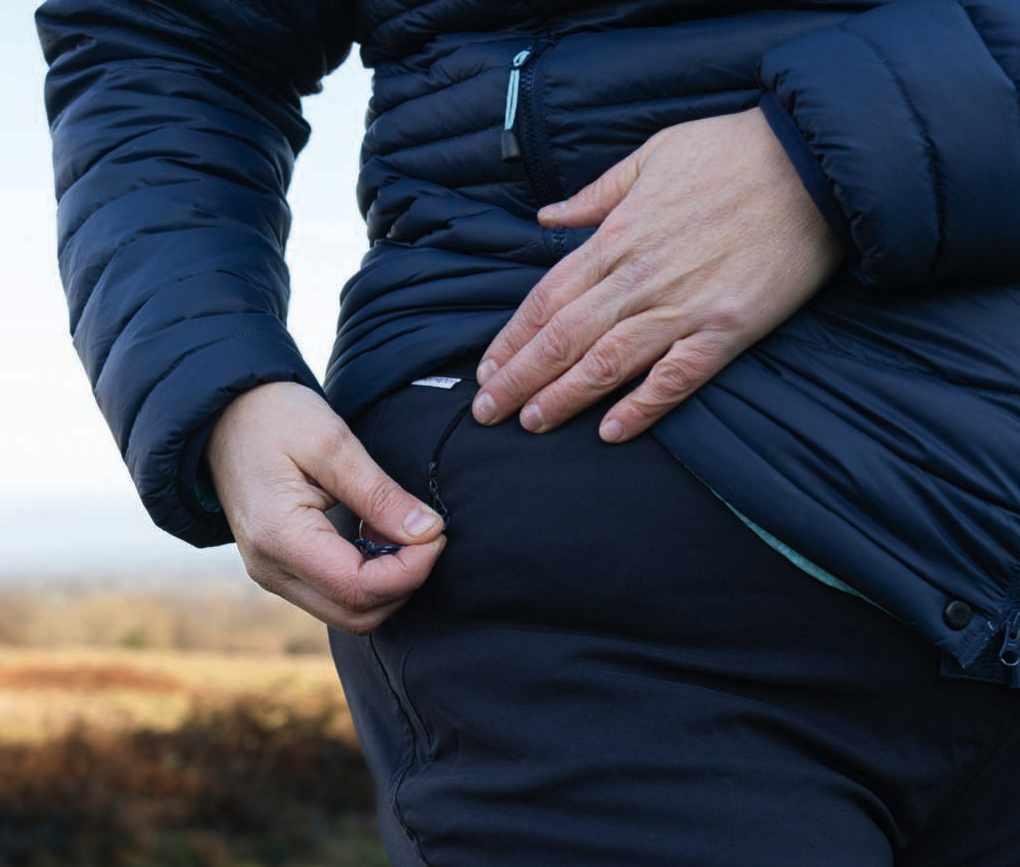
EBO members post useful plus-size kit tests on social media
Waterproof jacket This is the most important item you will need. Options vary in technicality and price. The jackets from Sprayway (up to a size 20/3XL) have proven a good fit among our testers and offer a range of options at different price points (sprayway.com). The Outdoor Research Aspire II jacket provides a Gore-Tex option up to a size 30/4XL (vampireoutdoorgear.com).
Base layer The layer you wear next to your skin should wick away moisture and help regulate your temperature, and can be made from synthetic fibres or merino wool. The Isocool range from Mountain Warehouse is popular with our community and is available up to a size 32/4XL (mountainwarehouse.com).
ABOVE LEFT Making new like-minded friends is one of the many bonuses of joining EBO
ABOVE Writer Steph (left) helps volunteer Sarah Hindley plan the route
Trousers Whether you prefer wearing leggings or trousers, avoid cotton fabrics; cotton takes a long time to dry and doesn’t wick moisture, so it will feel damp and cold when moist. Craghoppers Kiwi Pro II trousers are available up to a size 24 (craghoppers.com).
Rucksacks Both Osprey (osprey.com/gb) and Gregory Packs (eu.gregorypacks.com) offer plus-size/extended fit options with longer hip belt, repositioned pockets and longer padding on the shoulder straps – perfect for larger bodies.
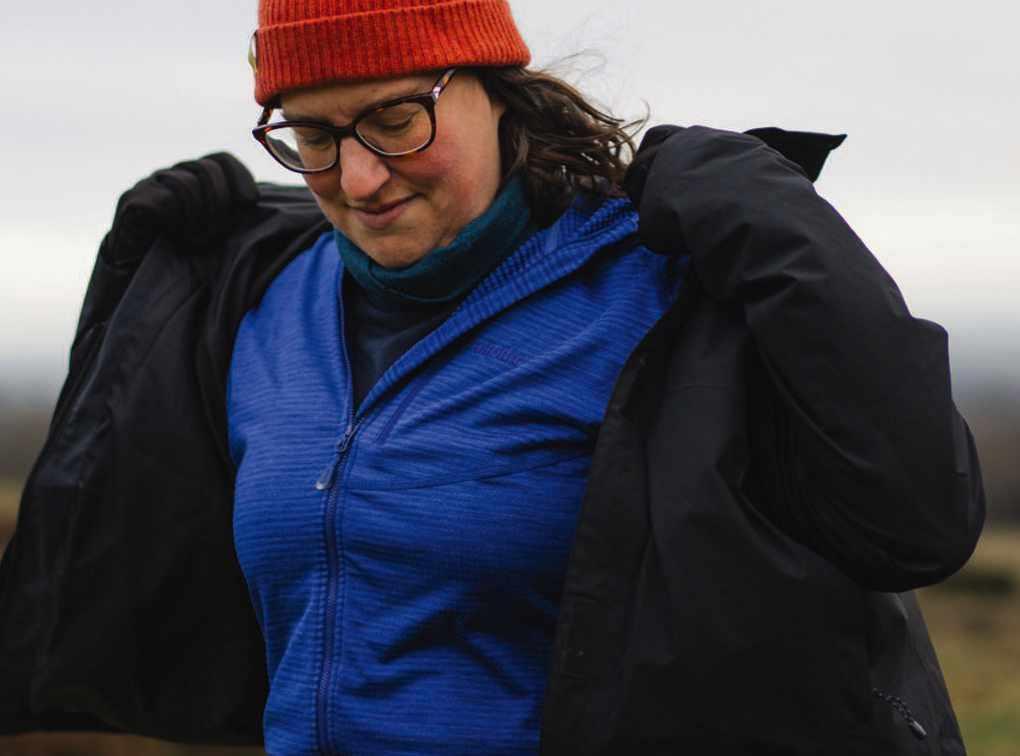 A larger jacket allows room for winter layers underneath
A larger jacket allows room for winter layers underneath
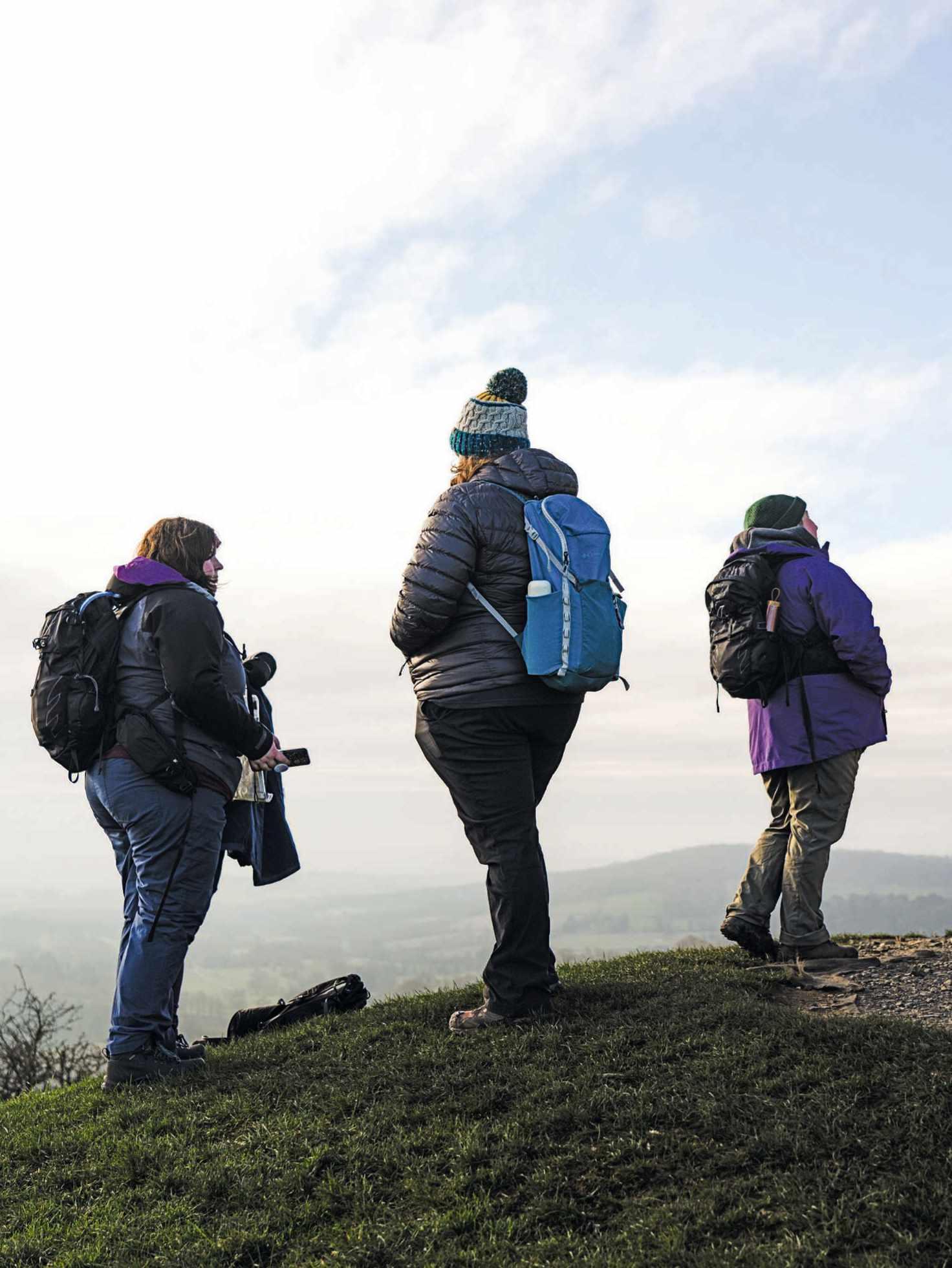
CASE STUDY
Elaine Ryrie Regional volunteer
When Elaine stumbled across the EBO Facebook page, she was in awe of all the people in plus-sized bodies engaging in different activities. She has recently become an EBO regional volunteer, running walks in North East Scotland. “It is a privilege to support and encourage plus-sized people to get outdoors,” she explains. She’s also been enjoying finding clothing that fits, including a pair of Alpine Parrot trousers from Vampire Outdoors (vampireoutdoorgear.com). Her top advice: “There is no such thing as too short a walk or too slow a pace – it is your walk, so you do what is most comfortable for you.”

ABOVE Being able to walk at your own pace and take time to enjoy the experience is a big draw for many EBO members
How to boost your confidence, get the support you need and find the right outdoor kit.
Try not to judge yourself by other people’s abilities. It doesn’t matter how slowly you need to walk up a hill or how short a distance you walk/cycle, just take your time and enjoy it.
Don’t be afraid to ask questions. If a group walk gives a distance but nothing more, ask about pace and elevation. Call outdoors centres in advance to find out about the sizing of the kit they have available for their activities.
Find people who walk at your pace. It can be exhausting to be constantly at the back of a group or feel like you’re slowing people down. Lots of people who aren’t plus-size also prefer a slower pace, or look up our EBO groups.
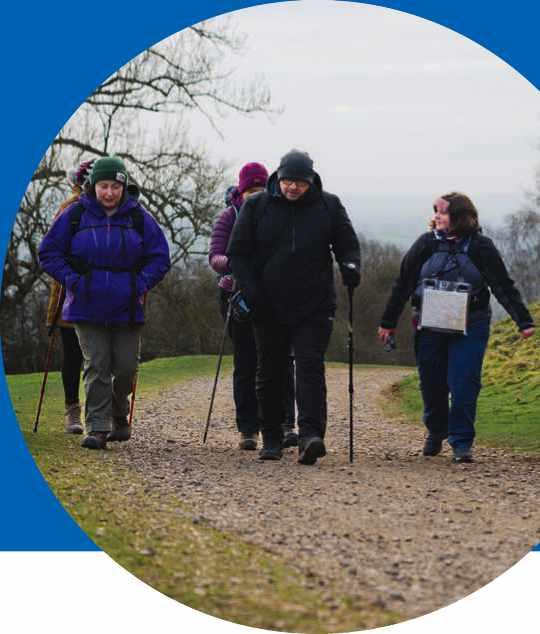
“We believe everyone deserves access to the right kit that supports their outdoor adventures, whatever their size,” says Caroline Manning at Cotswold Outdoor.
Fit is also important, and varies from brand to brand, so it can be worth trying on multiple brands to see what fits your shape. For example, Craghoppers has increased the rise on some of its trousers to better fit plus-size bodies. Bex Luke from Craghoppers explains: “Applying feedback on our plus-size legwear is one of the steps we have taken to offer quality kit to adventurers of all sizes.”
We all have a right to access the great outdoors, no matter our size, so join the fight for well-fitting kit and I’ll see you on the trail. CF everybodyoutdoors.co.uk

Steph Wetherell is a freelance writer and a co-founder of Every Body Outdoors. She specialises in writing about local and sustainable food and farming.


The mellow landscape of late spring offers wonderful walking – but whether you are going for a day-trip or a week’s adventure, it pays to be prepared. Turn the page for inspiration on planning the perfect holiday, as well as the must-have essentials to take along with you.
The railways of Devon & Cornwall offer some of the most scenic train journeys in Britain, from the spectacular Calstock Viaduct on the Tamar Valley Line to the rolling green countryside on the journey to Barnstaple on the Tarka Line. The train is an ideal way to explore on foot as well with many walks starting and ending at rural branch line stations. Visit the website to download more information on our walks and trails. greatscenicrailways.co.uk/walks

WalkingWomen brings women together for walking adventures: holidays to challenge and connect, so women can explore new places and feel exhilarated, cultured and relaxed. From Spain’s Camino Way to the Isles of Scilly, magical Norway to the Bernese Alps. Walk, connect, revive with us.
Helaine from Norfolk on the benefits of walking for body and mind: “There is an openness when you walk side by side. A vulnerability. I’ve had some of the best conversations of my life with friends old and new as we walk together.”
Winner of ‘Best of British Getaways 2023’.
01784 664063 | walkingwomen.com
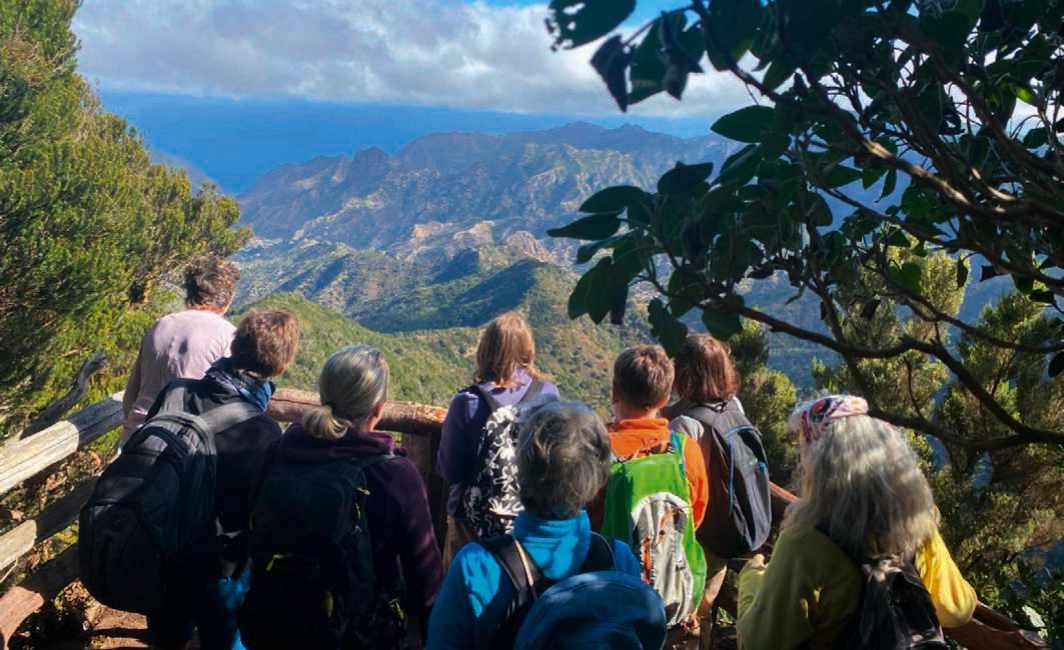



A British heritage brand founded in 1913, HF Holidays is well-versed in organising guided and self-guided walking holidays for those with a passion for the great outdoors. Fresh air, friendship, fellowship, fun, and the feelgood factor is always at the heart of what we do – and this is brought to life at our 16 country houses where the coastline or countryside takes centre stage.
Our collection includes cosy Victorian manors, elegant Georgian mansions, converted granaries and farmhouses, lakeside hideaways, and much more – all located in some of the UK’s best-loved national parks or National Landscapes.
Full-board comes as standard and includes a cream tea on arrival, daily cooked or continental breakfasts, generous packed lunches, and three-course evening meals. The menus are seasonal, focusing
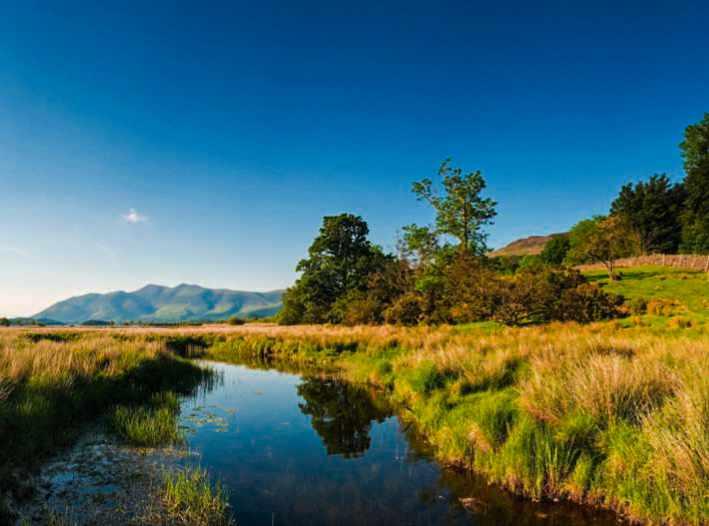
on dishes made with fresh ingredients and home-grown herbs and vegetables from our own gardens whenever possible.
Comfortable lounges, communal dining rooms, and well-appointed guest rooms in up to three categories: Classic, Premium, or Superior. There’s also boot and drying rooms, licensed bars, and the choice of walking as part of a guided group with an experienced HF Holidays Leader or on your own using our easy-to-follow routes and 24-hour emergency support.
Choose from 16 stunning locations including the Brecon Beacons, Cornwall, Cotswolds, Exmoor, Isle of Wight, the Lake District, North York Moors, Northumberland, Peak District, Shopshire Hills, Snowdonia (Eryri), South Downs, Yorkshire Dales, and the Scottish Highlands.
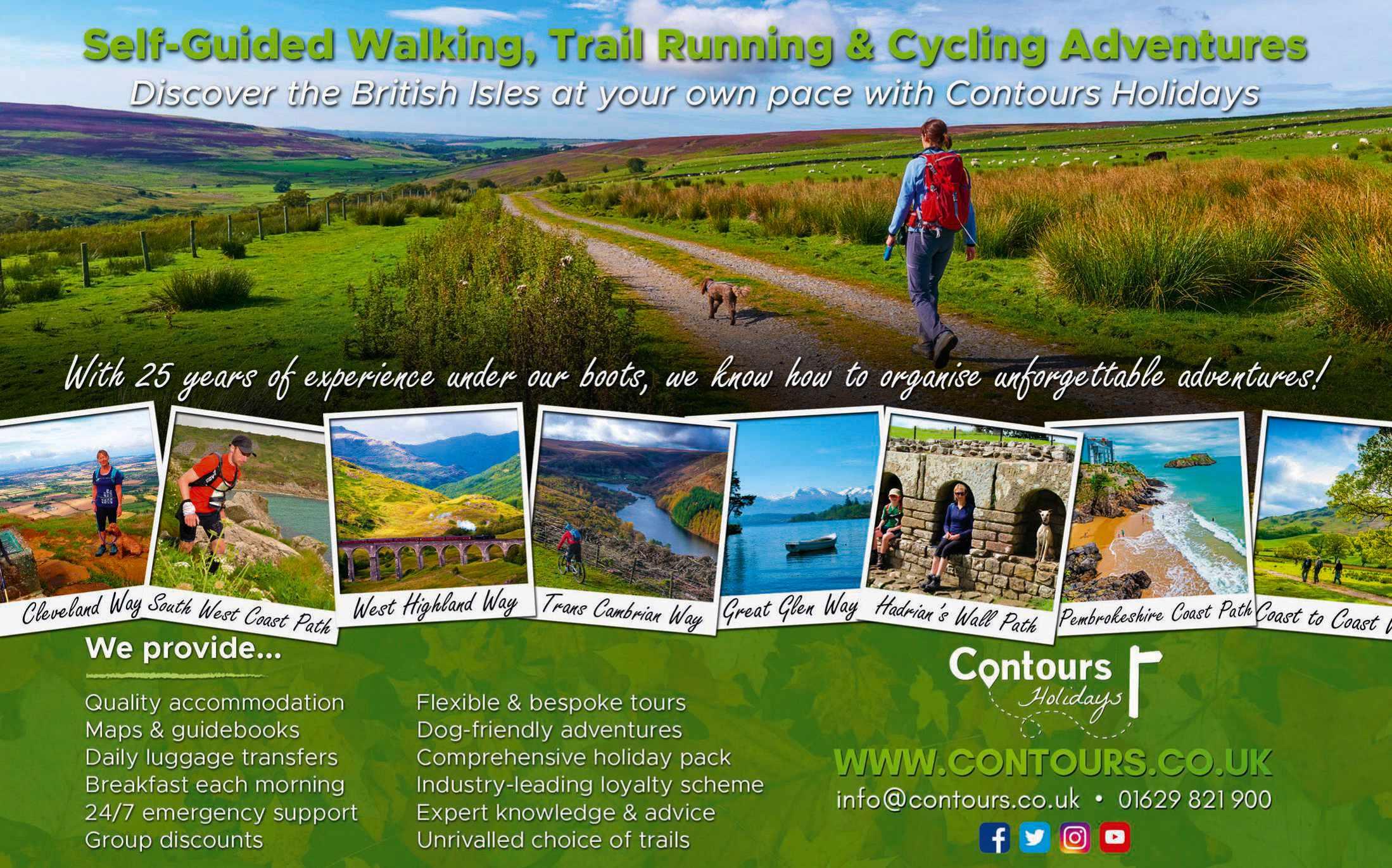

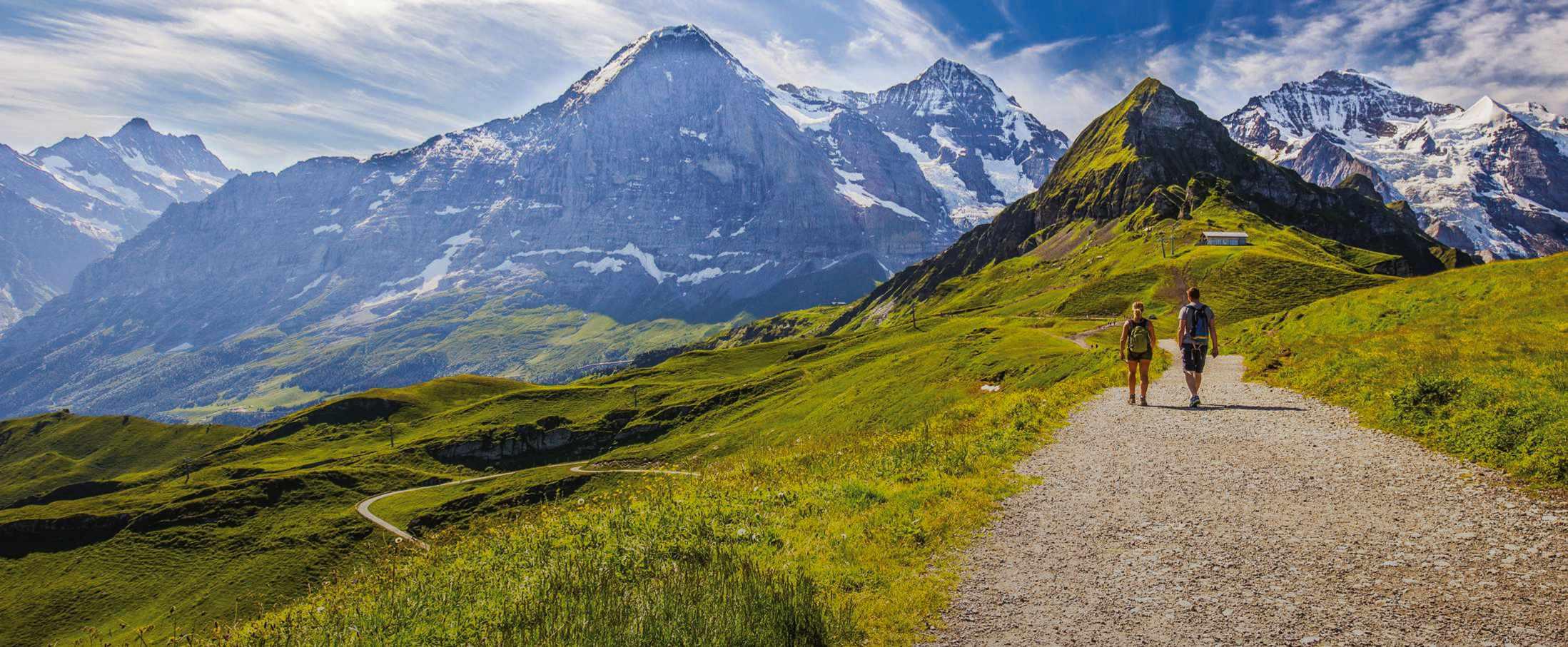
Say hello to Stay-and-Walk holidays with the freedom to do whatever you feel like With Inghams Walking, there are no set itineraries, just pick your base, unpack and explore
Whether you are an experienced walker or you’ve just started to appreciate the joys of a gentle ramble, we’ll help you find the perfect destination to explore on foot Pick your base from our handpicked collection of the best walking destinations across Europe, from 79 resorts across 7 countries: Andorra, Austria, France, Italy, Madeira, Slovenia and Switzerland
Hike to the top for that epic view, or simply sip on a spritz in the sunshine Your choice, your pace. Relax, explore and walk as much as you choose
We handle everything - from getting you there and a place to stay, to sharing the inside track on our favourite walks Plus, with local Inghams representatives in many of our resorts you’re never short of local secrets or must-visit lunch spots
Explore with the best: Guided Walks Included
Ever dreamt of exploring breathtaking landscapes with an expert by your side?
With us you can join up to two Inghams exclusive expert-led walks a week all included your holiday
Join a small group of fellow travellers and choose from one easy-to-moderate walk and one that’s a bit more challenging - or do both!
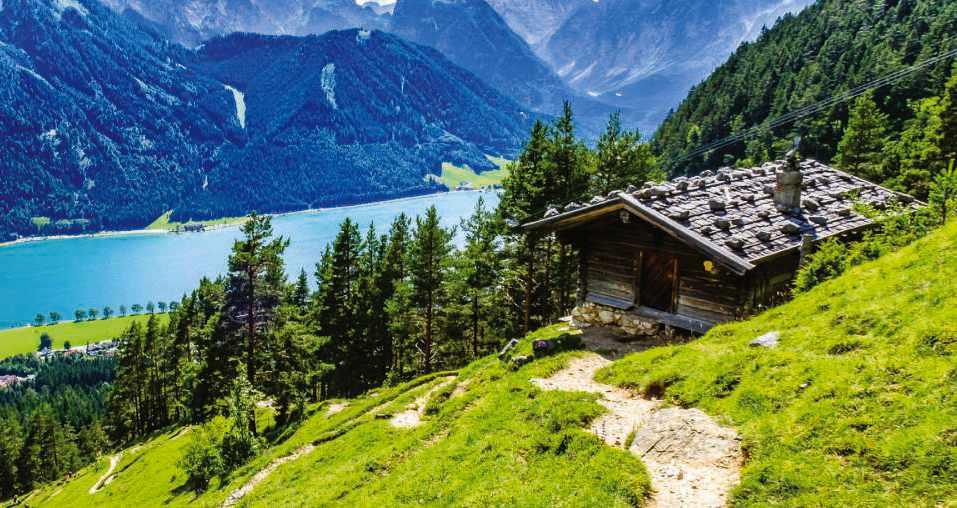
Your local guide will be your go to for anything you need to know, from taking you on hidden trails to sharing their love of nature and respect for the local landscapes
Starting and finishing in your resort on the same day, you won’t have to worry about overnight stays or carrying all your kit – and will still be back in time for dinner
Boots On or Boots Off, You Set The Pace Village Trails or Mountain Treks? Sunrise Hike or Breakfast in Bed? Whether you’re lacing up or kicking back, you set the pace
To discover more scan the QR to visit our website
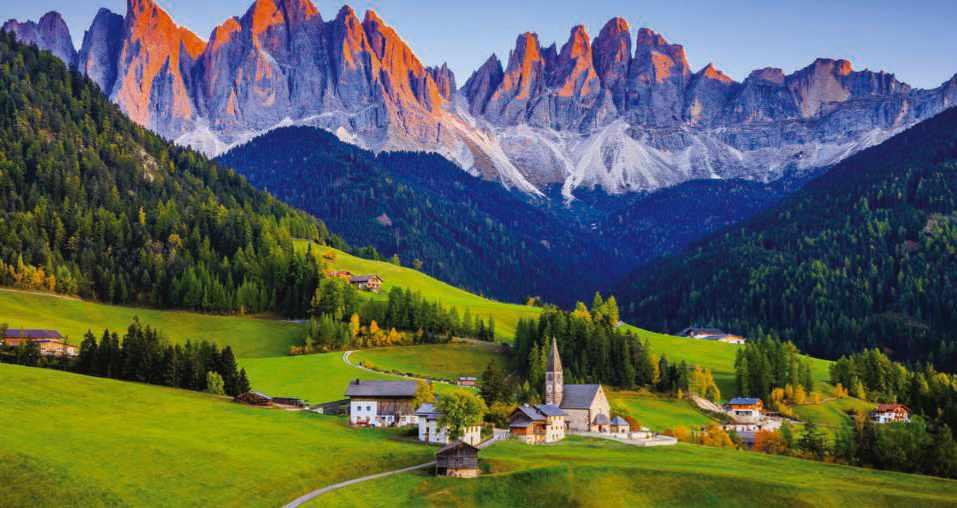
Walking Holidays

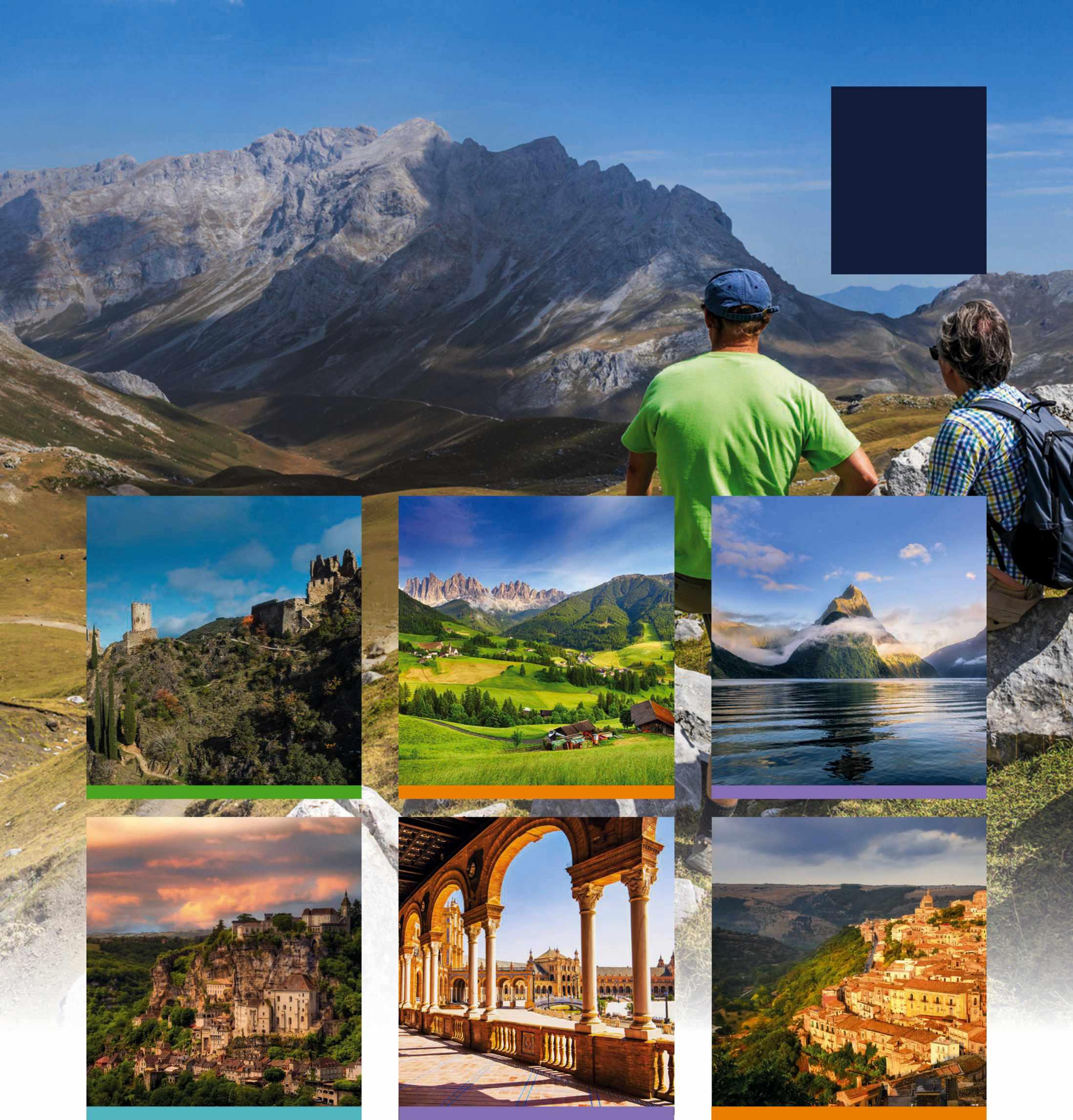
With Ramble Worldwide, previously known as Ramblers Walking Holidays.
Our expert guides have all the knowledge and experience to make your holiday truly unforgettable. With almost everything included, experiencing a world more beautiful on foot has never been easier.
Where will you ramble next?
Get in touch today and book for 2024 rambleworldwide.co.uk 01707 537 965

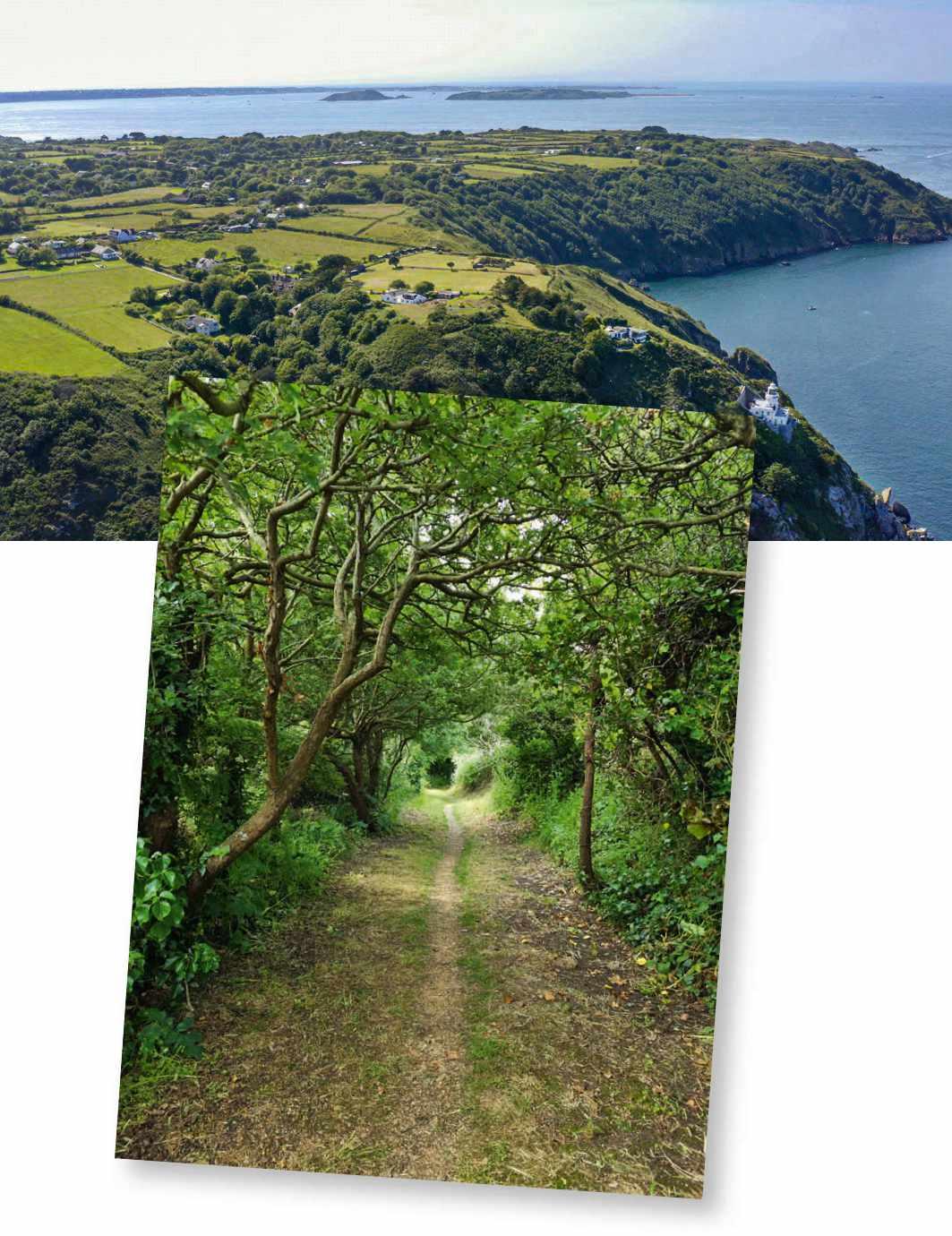
An award winning village inn and a favourite stopover of Coast to Coast walkers from around the world, The Shepherds Arms is ideal for exploring Ennerdale, a little-known gem in the Lake District. Off the tourist trail and free from traffic, Ennerdale is tranquil, rugged and wild. A National Nature Reserve, and undergoing rewilding, the valley is a home to a wide variety of wildlife, as well as important Bronze Age and Medieval archeological sites, and is a Dark Sky Discovery Centre.
The surrounding fells include Brandreth, Great Gable and Pillar, and the ridge walk from Red Pike to Seat, towards Wainwright’s beloved Haystacks.
Close by too are the west-coast attractions of St Bees and the historic towns of Whitehaven and Maryport.
Relaxed and welcoming, The Shepherd’s Arms enjoys a reputation for excellent homemade food using local produce, accompanied by Cumbrian ales and selected wines, and is just the place to relax in traditional surroundings after a day away from the crowds.
01946 861249 | shepherdsarms.com
The fourth largest of the Channel Islands, Sark is a true walker’s paradise. Measuring only 3.5 miles long by 1.5 miles wide and, with no cars, traffic on Sark consists of bicycles, horse-drawn carriages and the few tractors used for carting and agricultural work. This means no air and noise pollution, although you may have to navigate around a herd of sheep taking up the path or crossing the road!
The walking trails cross over open headlands, meander through lush, wooded valleys and wind down to pretty little bays or beautiful beaches with breathtaking scenery and stunning panoramic sea views along the way. In Spring, the paths are lined with colourful wildflowers, while in Autumn the burnt orange of the fern-covered cliffs against the steely blue sea is most striking.
Sark is not only wonderful for walking by day. Named the world’s first Dark Sky Island in 2011, owing to its lack of light pollution, visitors can enjoy the most spectacular starry night displays from anywhere on the island, including our observatory.
The beauty of Sark does not end with the views either, the people are full of personality, the history is most intriguing, and the local fish and fresh produce are superb!
01481 832345 | office@sark.co.uk
sark.co.uk


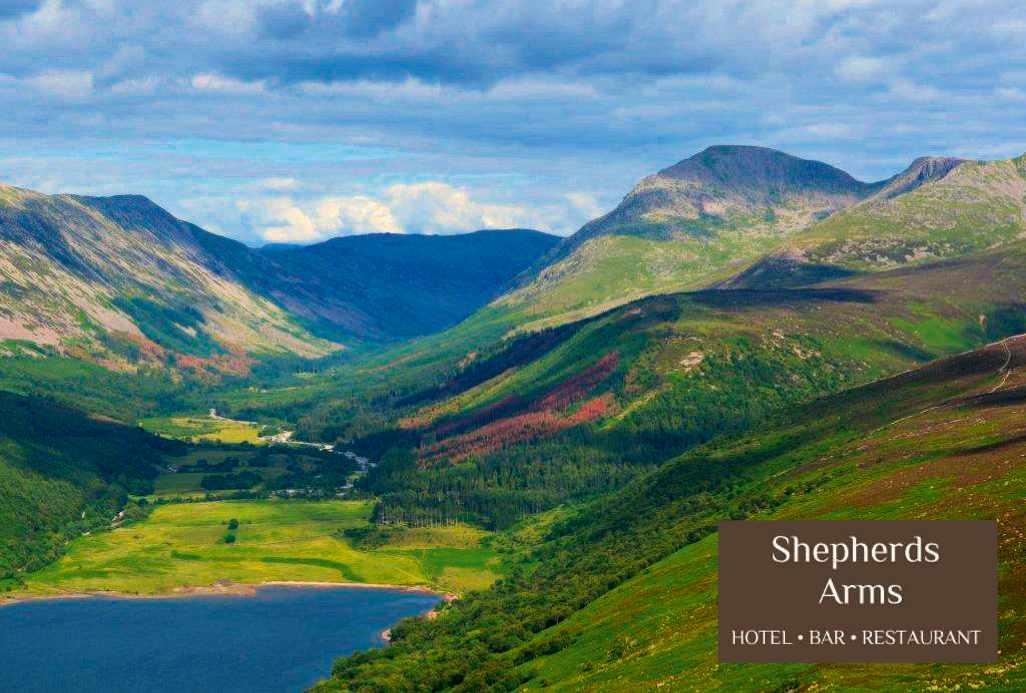

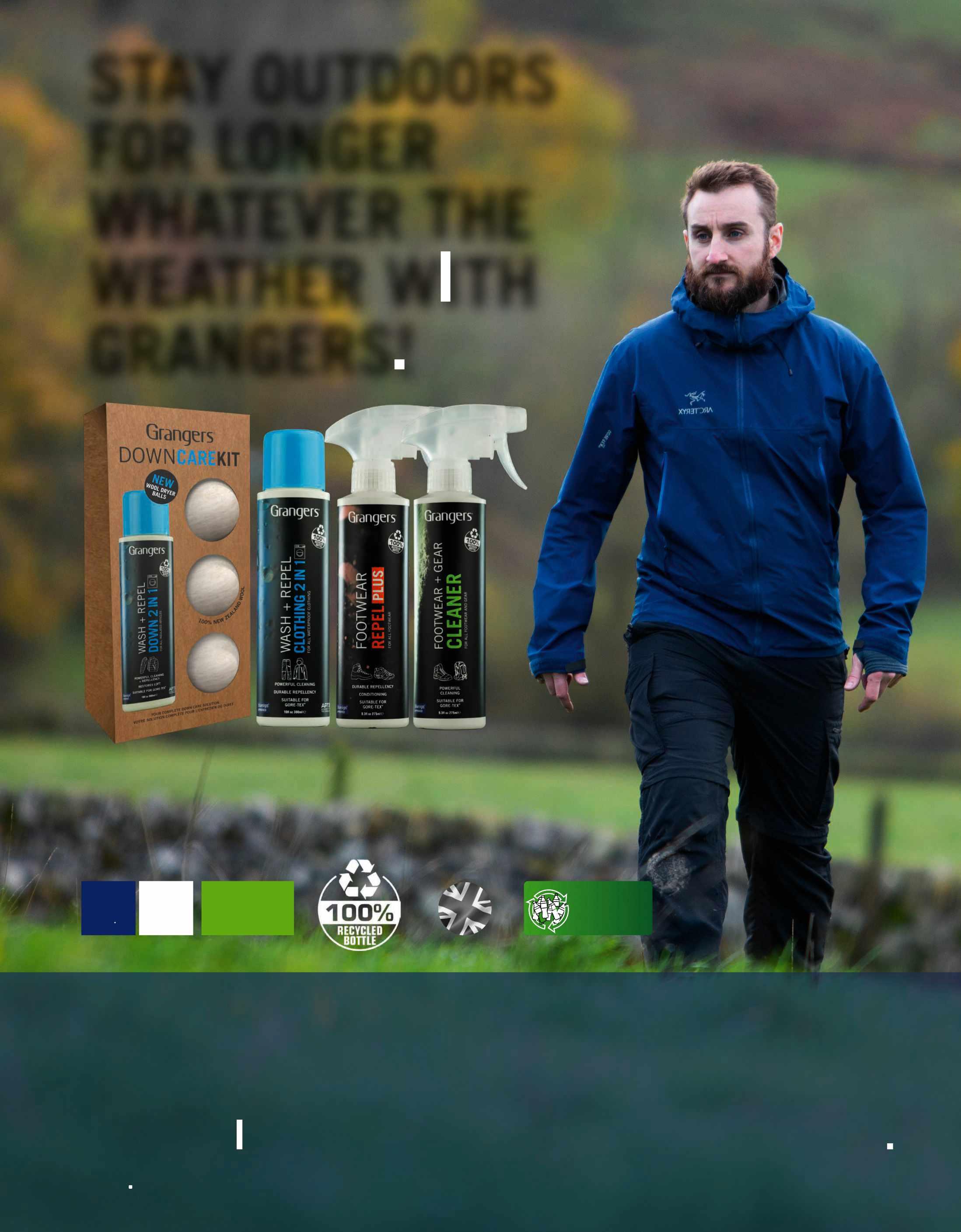
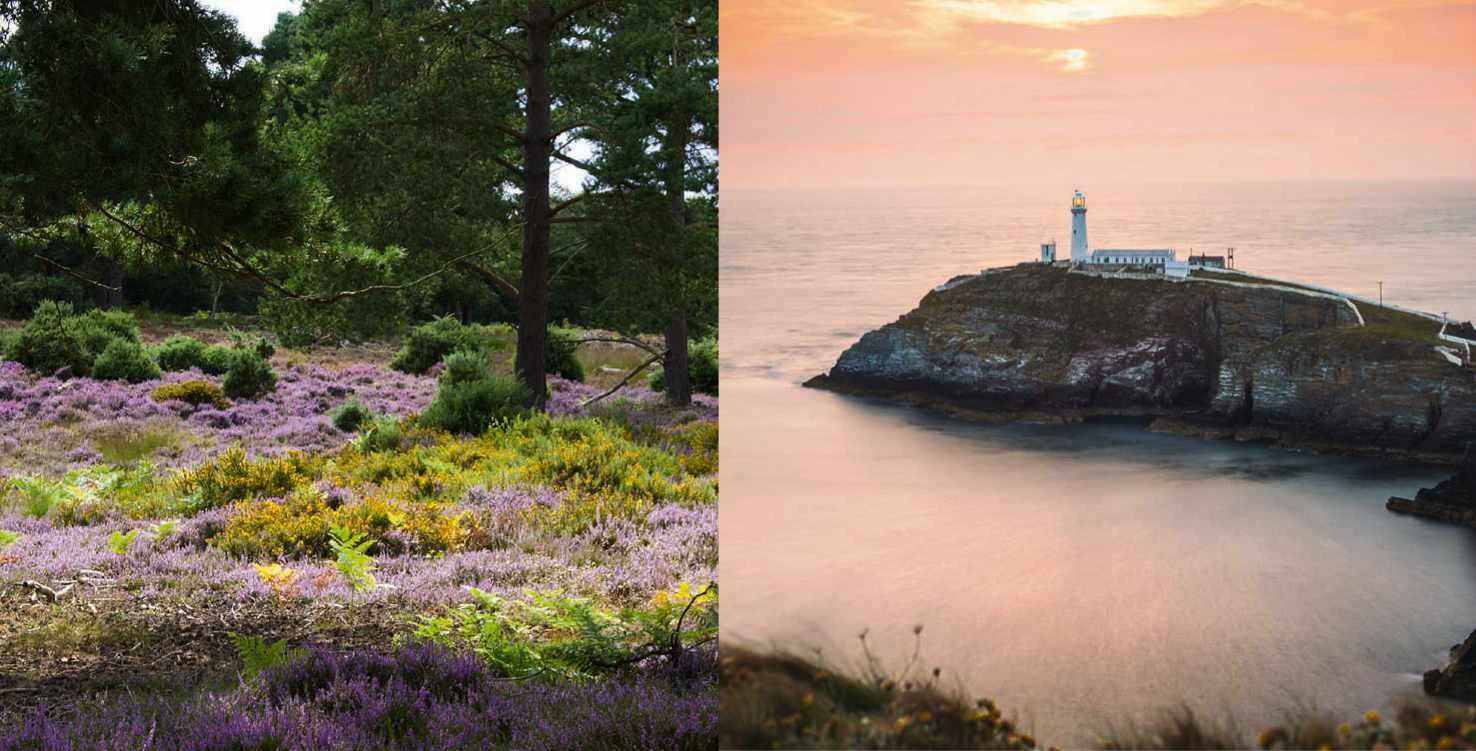
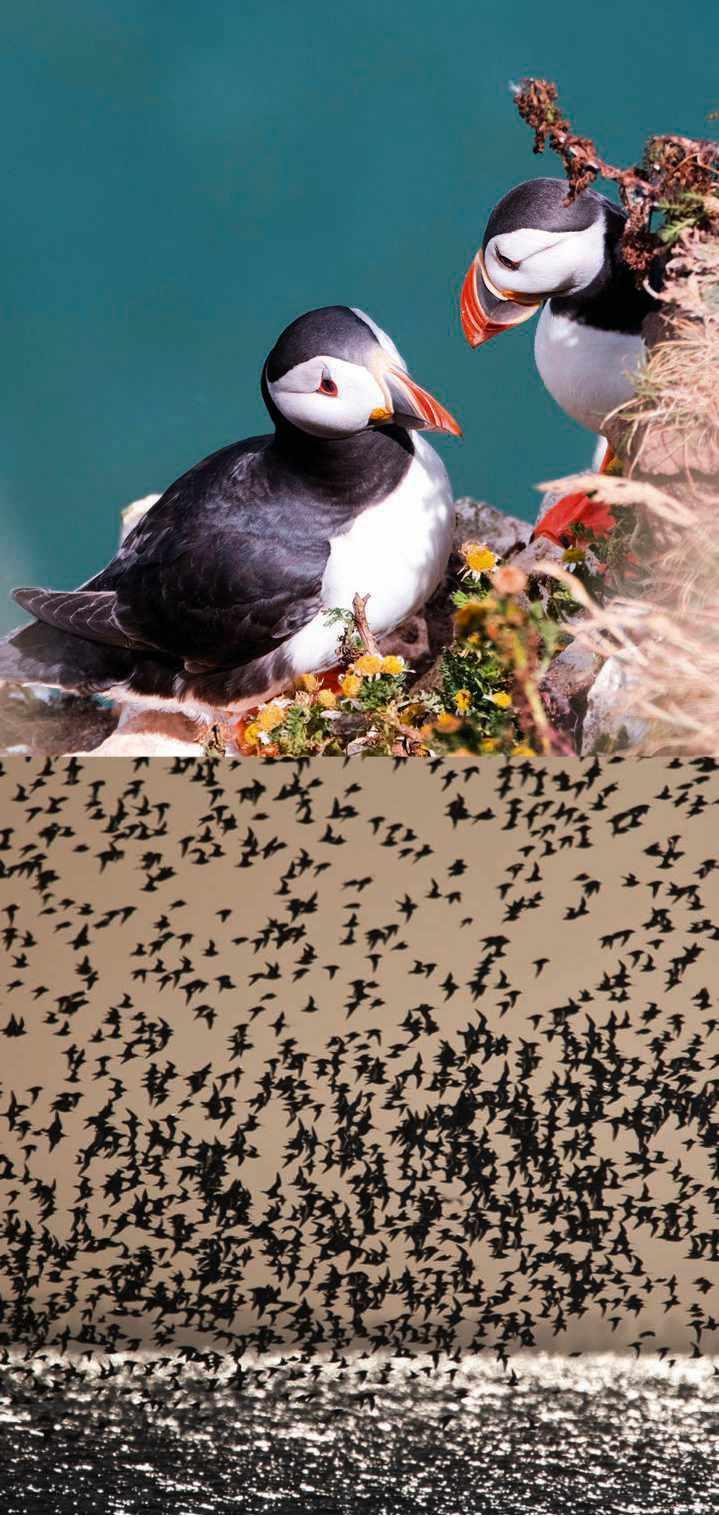
Witness the greatest avian spectacles in the UK this year with our pick of the RSPB’s most remarkable reserves,
by James Lowen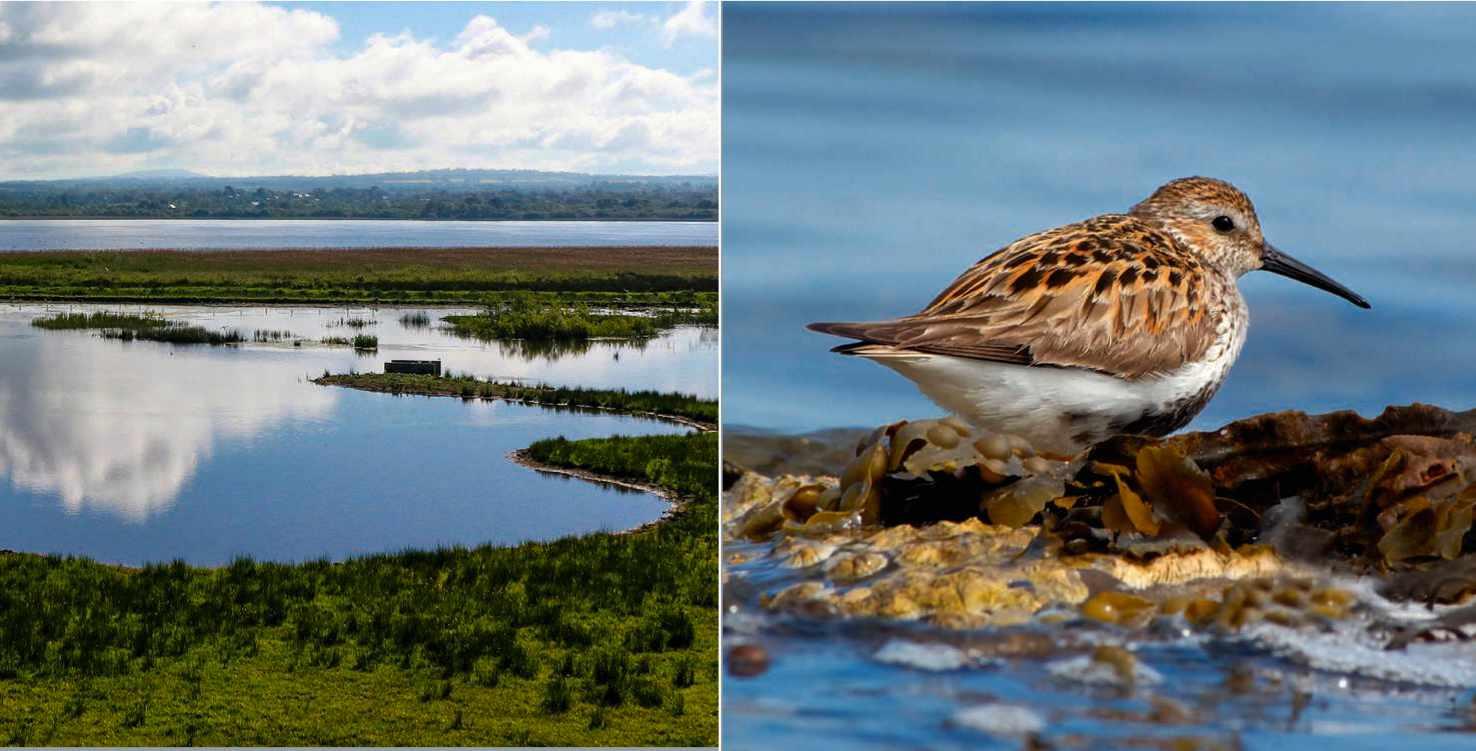

The Royal Society for the Protection of Birds cares for 180 wildlife-rich reserves across the country, but arguably none offers more spectacular views than Bempton Cliffs. Standing tall on the northern flank of Flamborough Head, a vast promontory that presses stubbornly into the North Sea, Bempton’s chalk escarpment plunges 100 metres into raging waves. Even better, between January and October –particularly April to September – narrow ledges on the rockface hold mainland Britain’s mightiest seabird colony.
In 2022, an astonishing 166,576 breeding pairs crammed on to the cliffs between Flamborough and Filey, north of Bempton. In healthy counterpoint to many declining colonies around our coastlines, Yorkshire’s seabird metropolis has expanded by 10% in five years.
These seacliffs are feathered bedlam. Bempton is the sole location in England where gannets nest; our largest seabird can be watched easily from astutely sited platforms along the coastal path. Peering down the seabird skyscraper, you can pick out serried ranks of guillemots, interspersed with plenty of razorbills and puffins, the latter flaunting their jaunty gait, clown-like mascara and colourful beak. All the while, the onomatopoeic calls of kittiwakes – a delicate, globally threatened, ocean-faring gull – echo around the coves.
Even outside the seabird breeding season, there is much to occupy visitors. Bempton and Flamborough are one of Britain’s finest locations to watch migrating birds, from skuas to shrikes.
For prices, opening hours and visitor information on all these reserves, visit rspb.org.uk/daysout/reserves
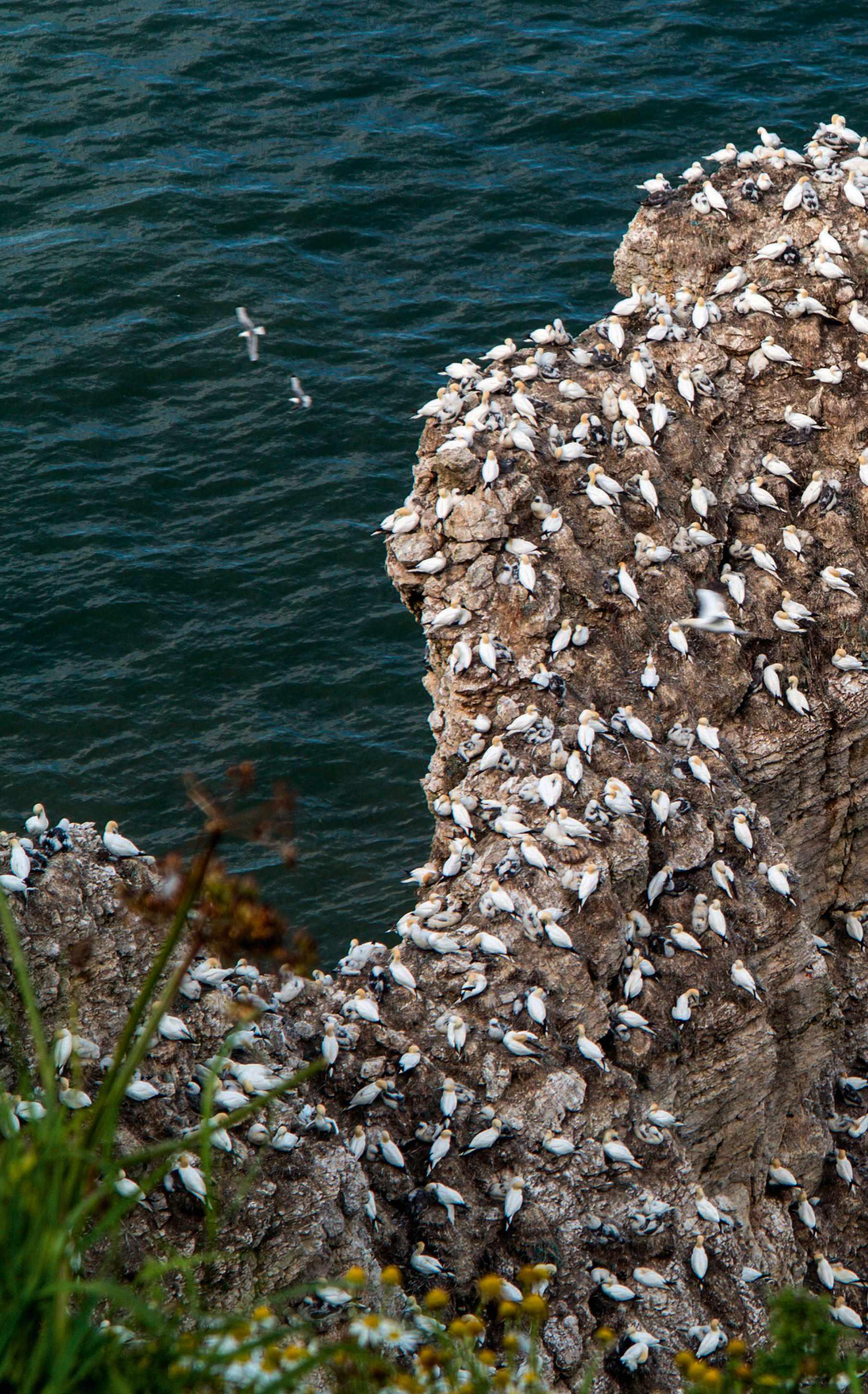
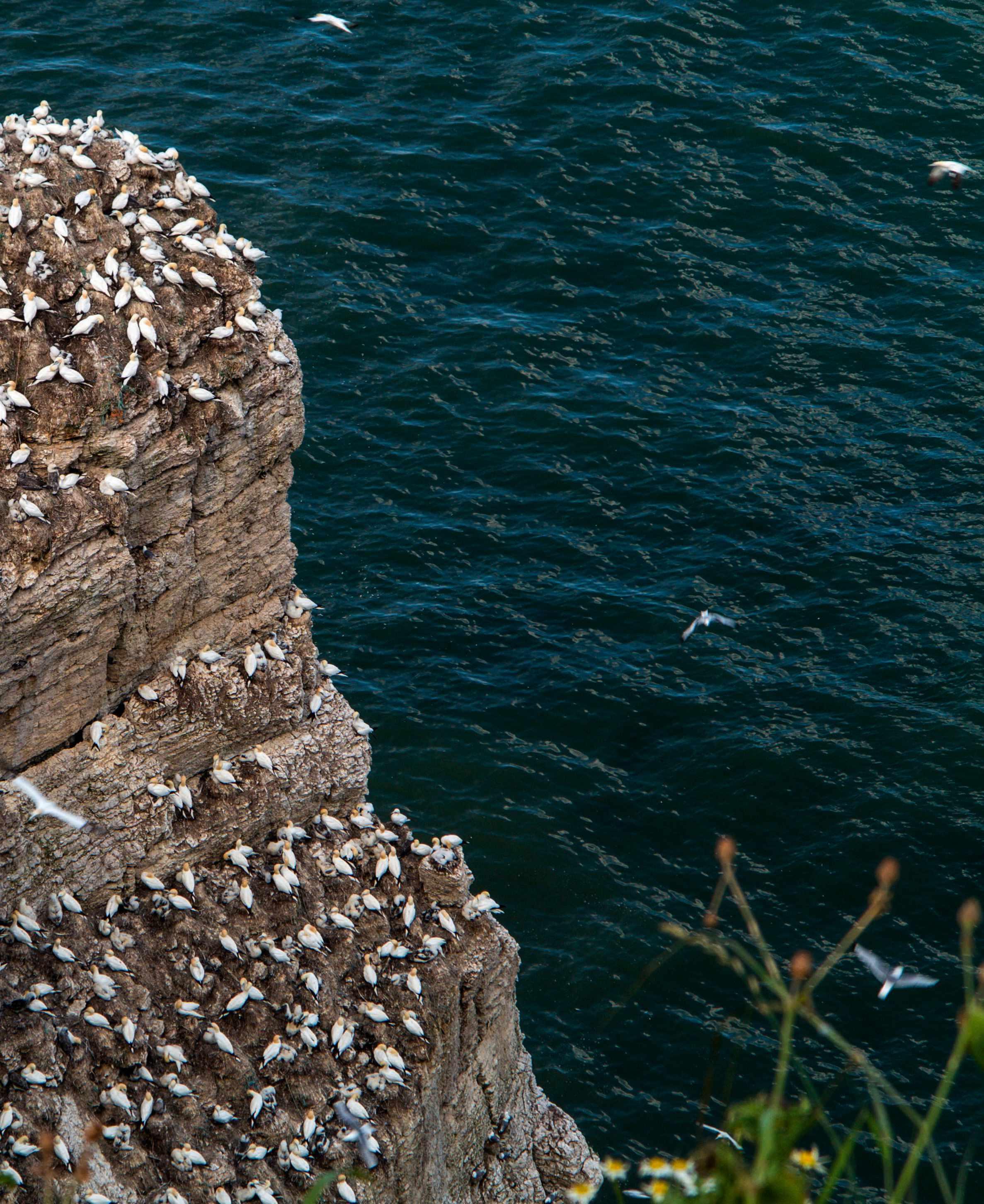
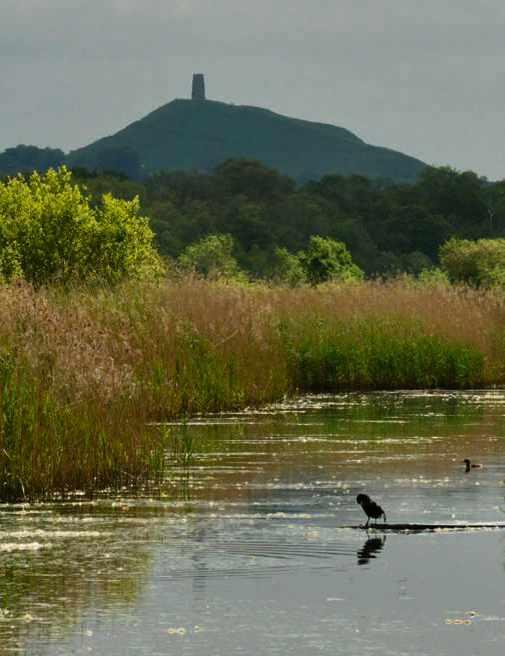
Lying just five minutes’ drive apart and managed by the same RSPB team – so treated here as a single site – are two hidden gems. The lowland raised bog of Montiaghs Moss has recently been restored following 19th-century peat extraction.
Plant it, and they will come. In the mid-1990s, the RSPB took ownership of a peat-extraction site in Somerset, then set about reimagining it as a wetland wonderland. The land was sculpted with machines, then flooded to create open water, before thousands of reeds were planted by hand. Now Ham Wall boasts double the number of reedbed-breeding bitterns than existed in the entire UK in 1997.
The bittern is most readily seen in spring, when females use regular flightpaths as they provision hungry chicks. Spring is also the time to gawp at hobbies – aeronaut falcons that pluck flying insects from mid-air, as seen in a BBC Wild Islessequence filmed at Ham Wall. Some of those unfortunate invertebrates are four-spotted chaser dragonflies, thousands of which roost here.
An even more jaw-dropping wildlife sleepover happens in late autumn and winter, when half-a-million starlings congregate. Backlit by the sunset, the murmuration shapeshifts incessantly: no two minutes are the same.
In summer, Ham Wall also treats you to Britain’s largest population of great egrets.
Explore the brand-new boardwalk and grassy pathways that weave between dark pools, damp meadows, willow carr and stately hedgerows. In May, the rare marsh fritillary flits between nectar-rich flowers.
In June, another localised butterfly, cryptic wood white,
frequents rough grassland, while scrutiny of the manifold dragonflies could reveal a fragile-looking Irish damselfly. Come July, star billing goes to Irish lady’s-tresses, a delicate swirling, ivory orchid.
At nearby Portmore Lough, many more dragonflies and damselflies dart, chase and hawk as you zigzag down another boardwalk to reach a hide overlooking the water. Here common terns plungedive before returning to their chicks with a fish supper.
Earlier in the year, Portmore’s spring air resounds with the territorial
calls of breeding waders, for whose benefit wet grasslands are managed. Lapwings tumble through the air, calling out their country name – peewit! pee-wit! – while redshanks chivvy and snipes bleat. Tree sparrows peer nervously out of special nestboxes, while Irish hares scamper past as if late for a meeting.
In winter, the lough fills with wildfowl. Teal and tufted ducks rub shoulders with two visitors from Iceland –whooper swans and greylag geese – the latter compact, nervous birds quite unlike their raucous brethren.
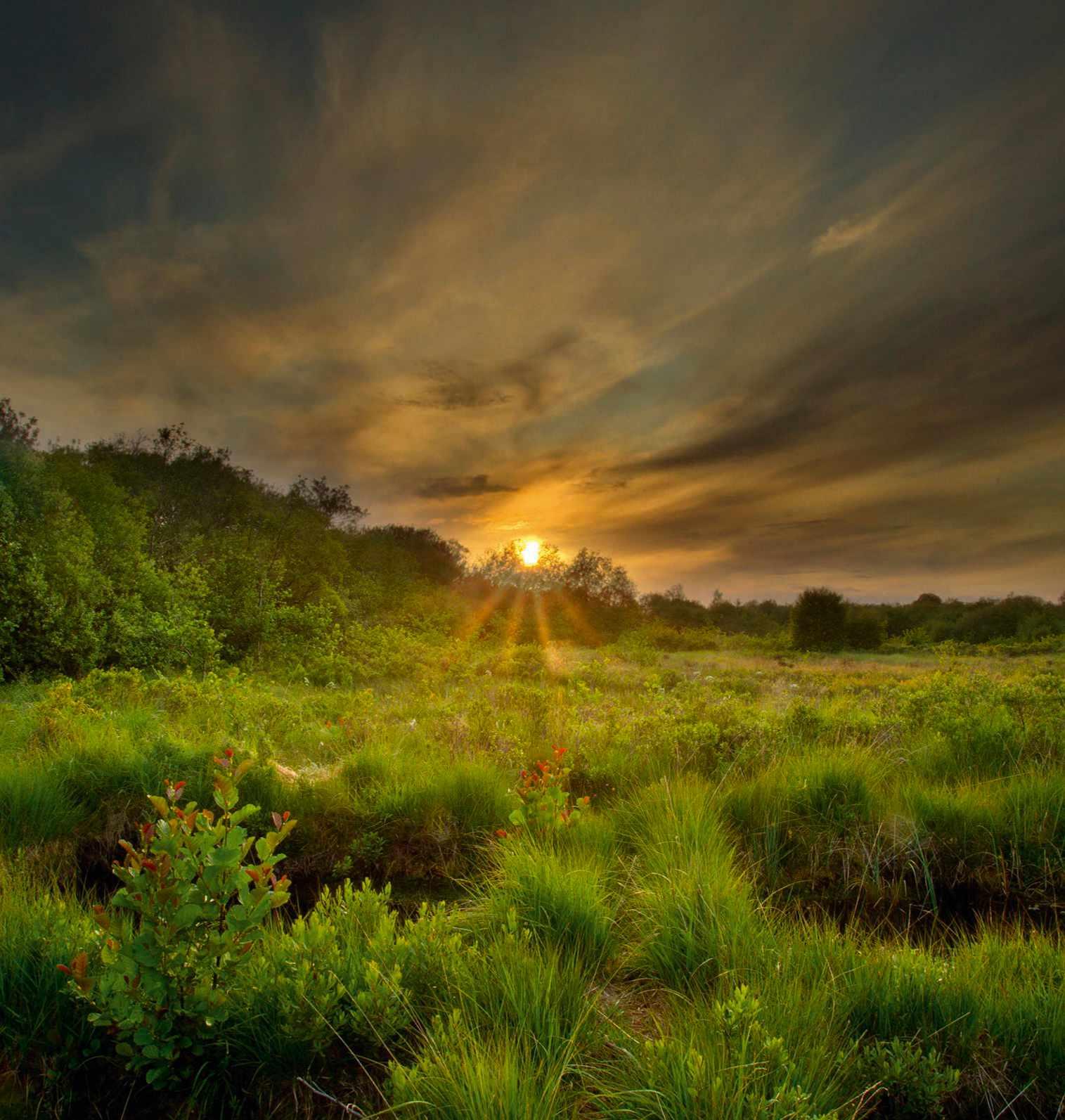
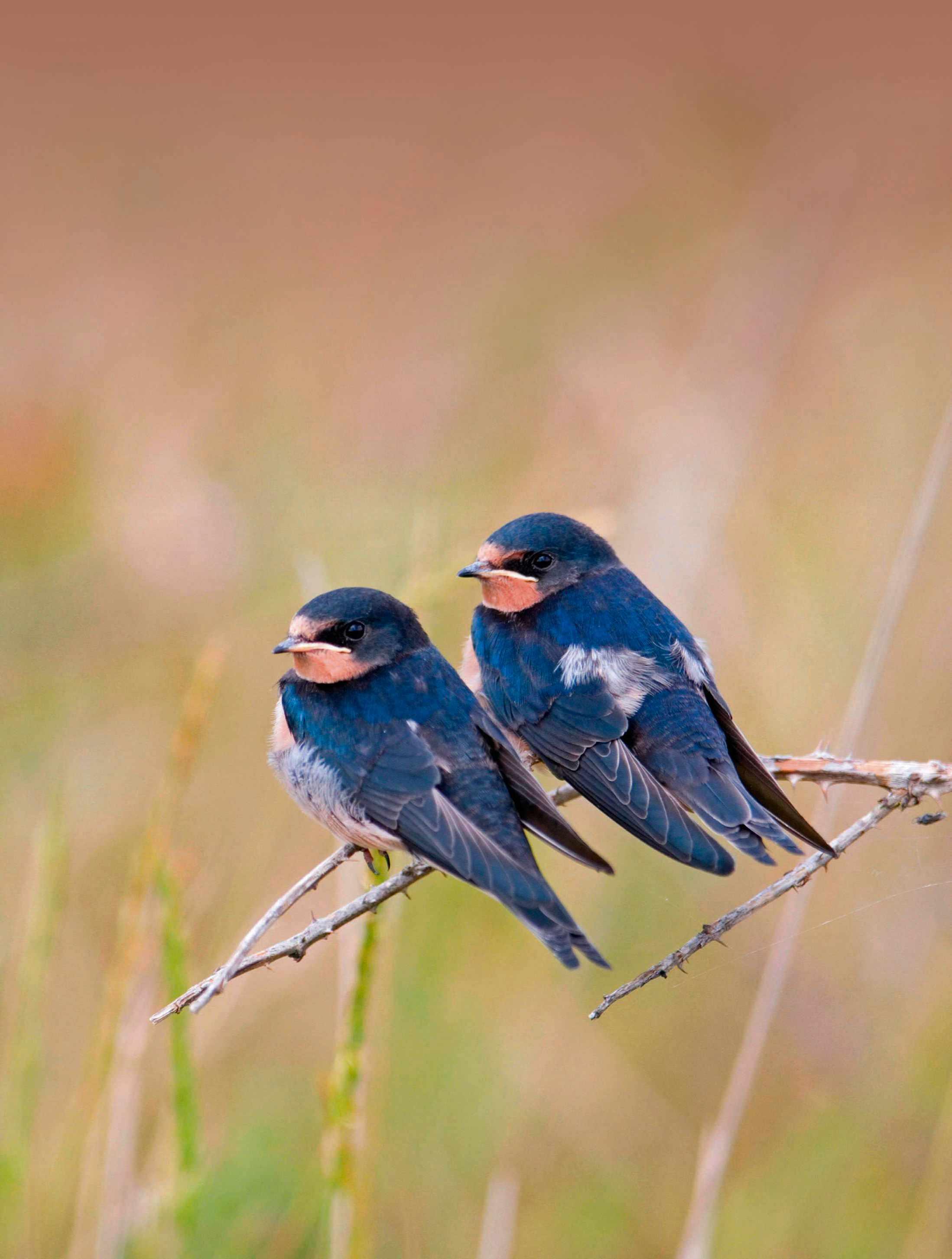
With a rich diversity of habitats – woodland and reedbed, heath and beach, scrub and scrape – that are home to 6,000 species of plants and animals, little wonder that the RSPB’s fourth-oldest reserve hosted BBC Springwatchfor three consecutive series. It also means visitors to Minsmere’s 1,011 hectares can see plenty of wildlife whatever the season.
Adders love Minsmere’s lilac heaths and rolling sand dunes. Mid-April is prime time to gawp at males writhing in combat when vying for females. In both landscapes, Dartford warblers scold from gorse clumps: these punkcoiffured birds are now re-established in Suffolk after 50 years’ absence. A few pairs of swallows breed every year; two juveniles are
pictured on this page. Come autumn, the heaths rumble with deep, throaty bellows from red deer stags; watching a rut is an unmissable experience. The muddy, island-dotted lagoon known as ‘The Scrape’ drips birds at any season. Ducks and gulls cram the water in the colder months, while spring and summer soundtracks are characterised by the
quipping of avocets: a pied wader with an upturned bill. Vast reedbeds glister gold in the wintry sun before turning verdant in summer. This realm is painstakingly managed to accommodate marsh harriers, bearded tits, otters and bitterns. Finally, Minsmere is proud of its summer minibeasts. Rare insects called antlions can be seen. From birds to bees, Minsmere has it all.
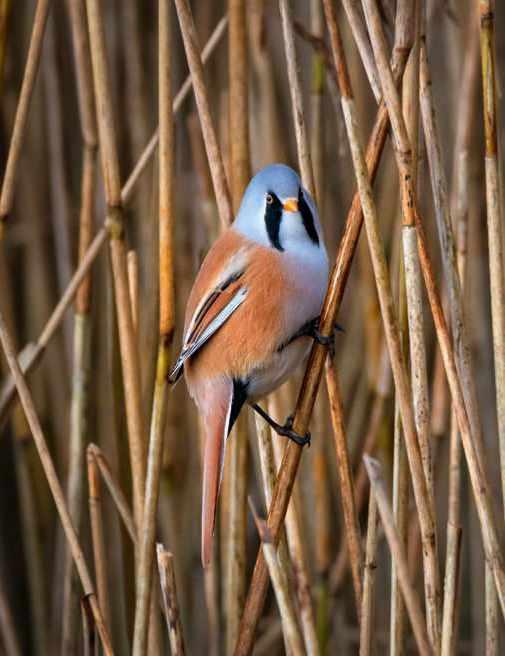
5
A rumpus among the coots crowding the reed-fringed mere offers the first clue. A roll of mammalian back through the water followed by a splashing tail confirms your hunch: an otter! Across the entire RSPB portfolio, there is probably no more reliable location to sight this once-rare mammal than Leighton Moss.
Flanking the silty sweep of Morecambe Bay, this famous reserve safeguards a habitat mosaic. A winter amble through damp woodland can reveal nuthatches, redpolls and marsh tits, while at foot level, scarlet elf cup fungi brighten rotting logs.
Then there’s north-west England’s largest reedbed, where 50,000 starlings amass in autumn and winter. The reedbed is also home to bearded tits (pictured above) and bitterns; the males’ ‘booming’ call characterises late winter. The same period sees male marsh harriers dance in the sky to impress females. In summer, ospreys come to fish and hobbies to plunder freshly emerged dragonflies.
On the saltmarsh, avocets breed, spoonbills lope through shallows and the black-tailed godwit numbers exceed 2,000.
Closer to Northern Ireland than it is to Glasgow, the Inner Hebridean island of Islay is renowned for whisky and golf courses. But in this peaty land of Lagavulin and Laphroaig, wild grazing marshes, heathery moors, rocky coasts and sandy beaches make for excellent
wildlife-watching. For nature enthusiasts, the island’s metaphorical centre is Loch Gruinart reserve, a working farm that dovetails food production with conservation.
Between October and March, Islay is home to three-fifths of Greenland’s barnacle geese (pictured on these pages) and onequarter of its white-fronted geese – totalling tens of thousands of birds. Loch Gruinart is a fine place to watch them nibble rich vegetation in packed flocks. But they are also observed by white-tailed eagles. As featured in the BBC’s Wild
6
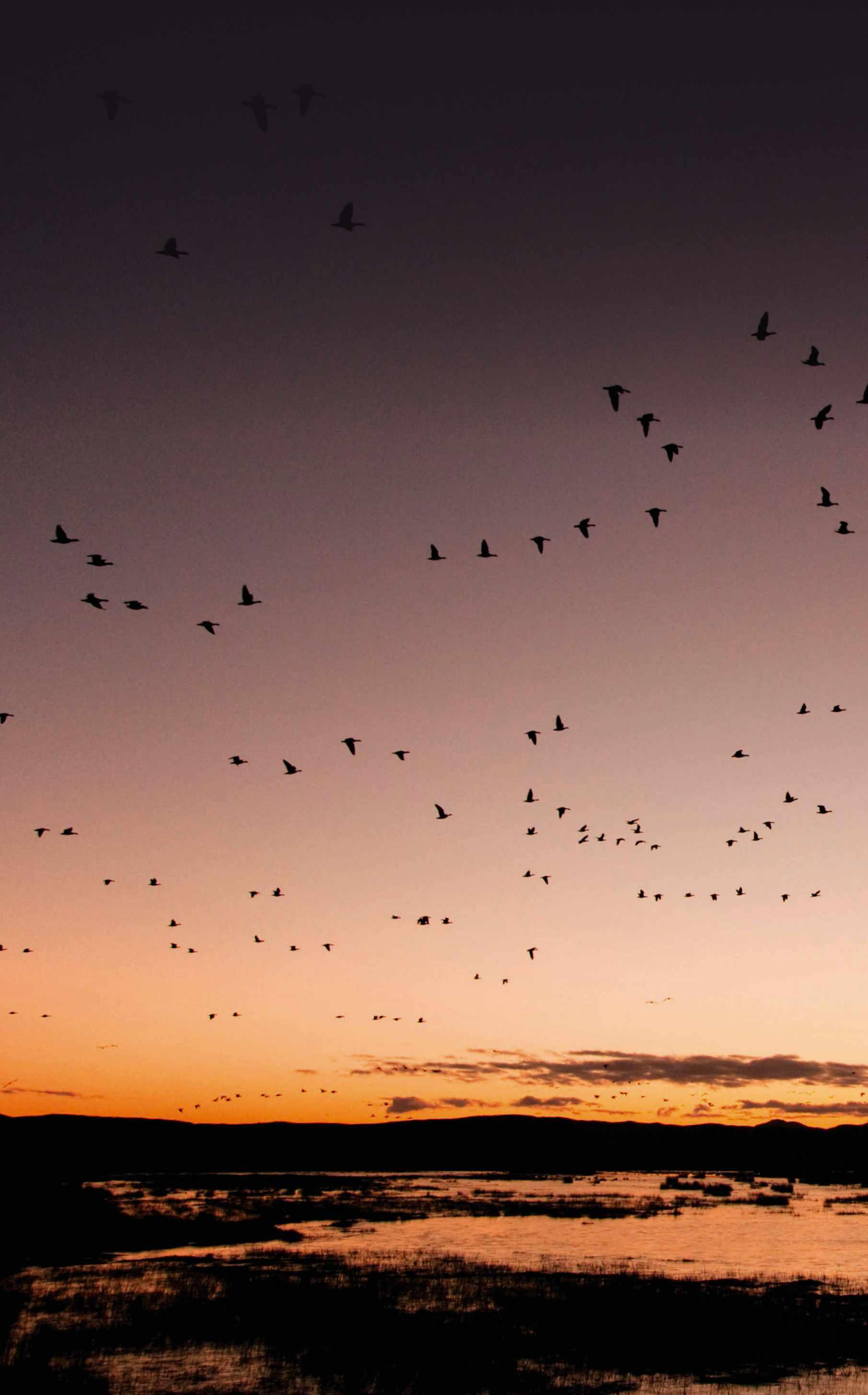
Isles, the dozen wintering eagles, have developed a taste for goose. When spooked by an eagle, the goose throng whooshes upwards, yapping and festooning the sky with monochrome forms. As the panic passes, the feathered mass returns to ground.
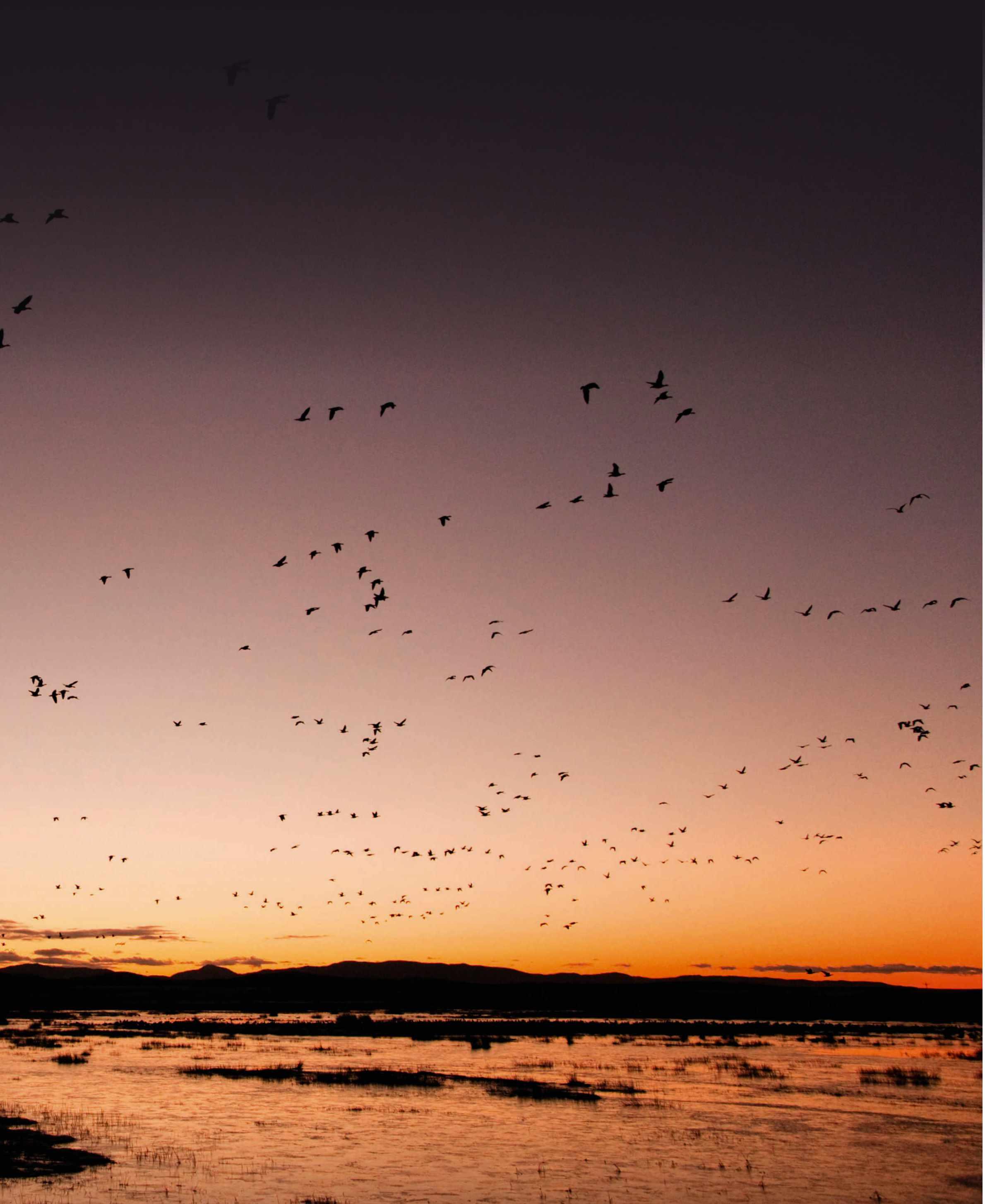
While winter provides the most exhilarating visits, spring and summer are fabulous, too. Hen harriers can be seen from the RSPB’s moorland trail, which weaves through mires scattered with carnivorous plants called sundews and decked with bright yellow bog asphodel.
Alternatively, follow the woodland trail, where roe deer browse the bluebellcarpeted understorey, otters might be viewed from hides and the air reverberates with the rasping song of corncrakes, reclusive fugitives from the world of intensive agriculture.
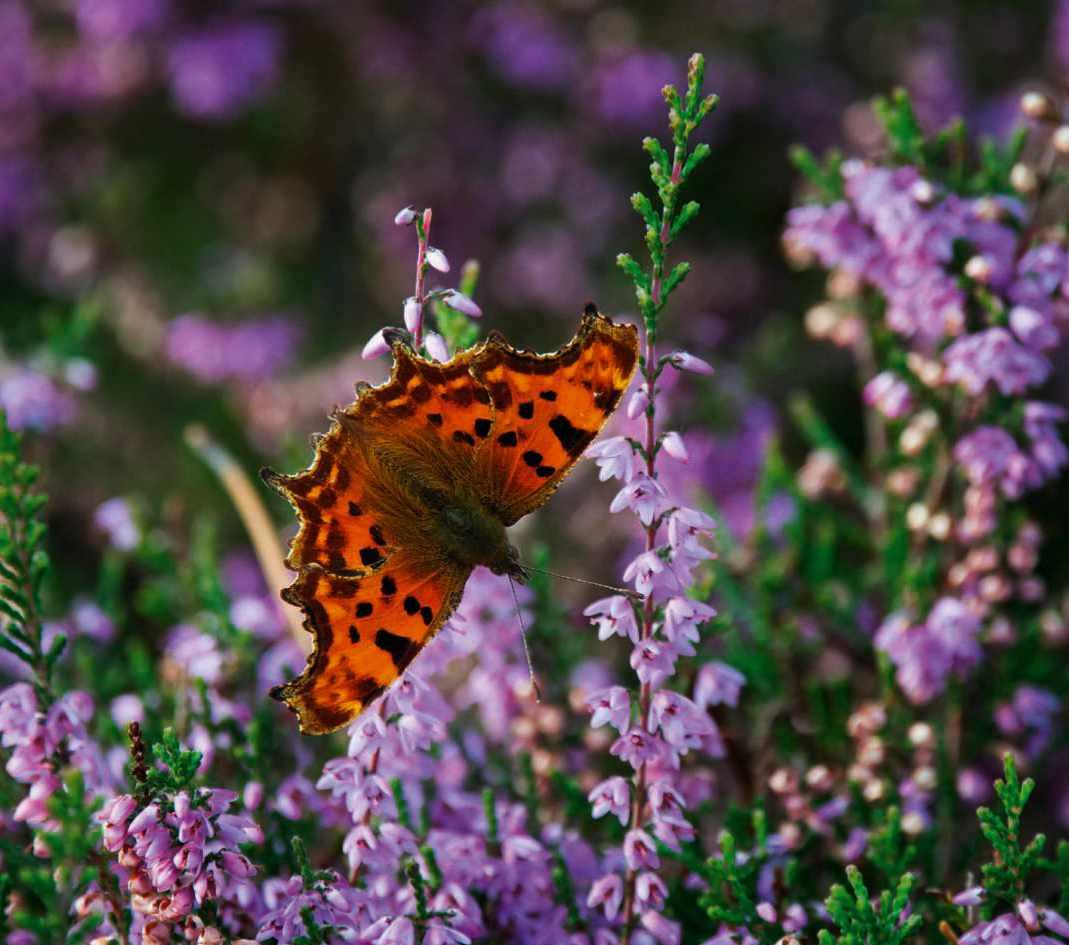
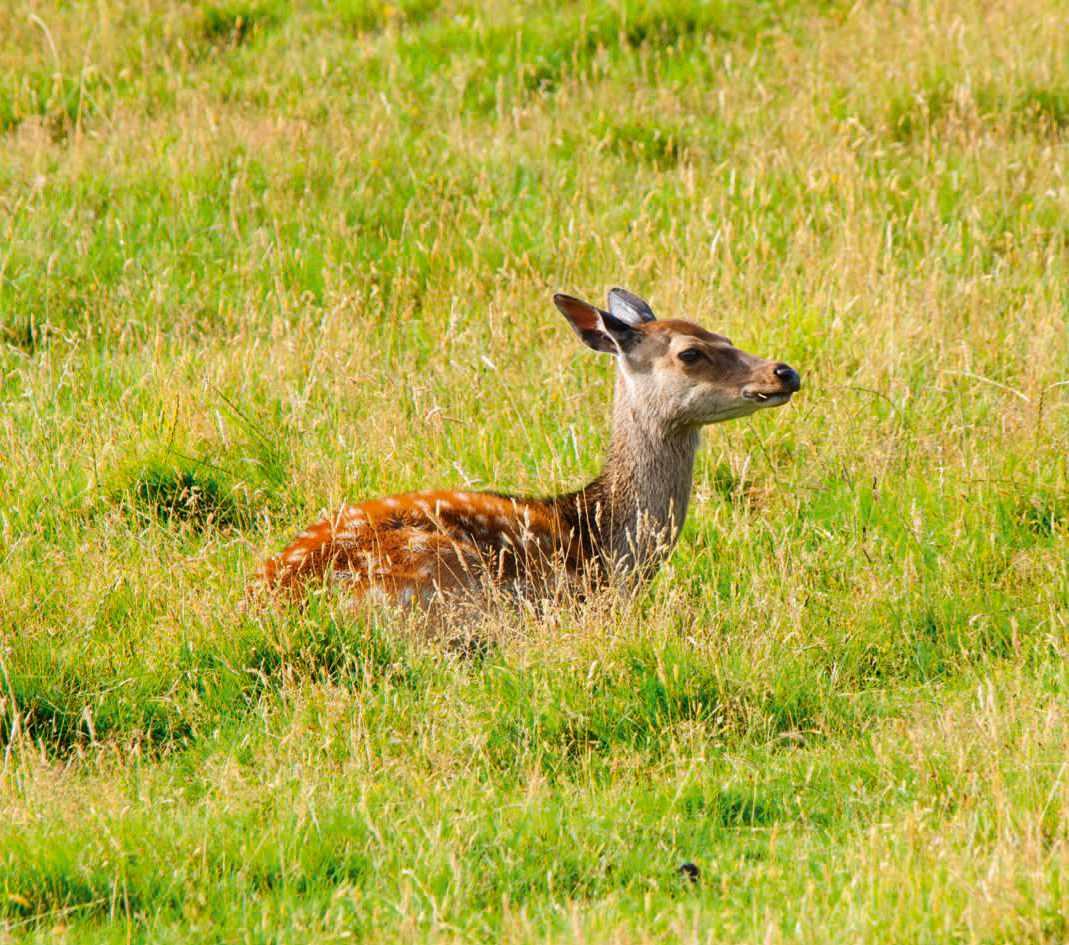
As dusk thickens the sky above the purple haze of Purbeck heathland, so a bizarre sound issues from an isolated pine tree. The mechanical churring is the mating song of a male nightjar, a nocturnal bird that claps its rakish wings in display and hunts moths with its enormous mouth agape. As featured on BBC Springwatch last year, Arne is among the country’s finest places to see this remarkable summer visitor.
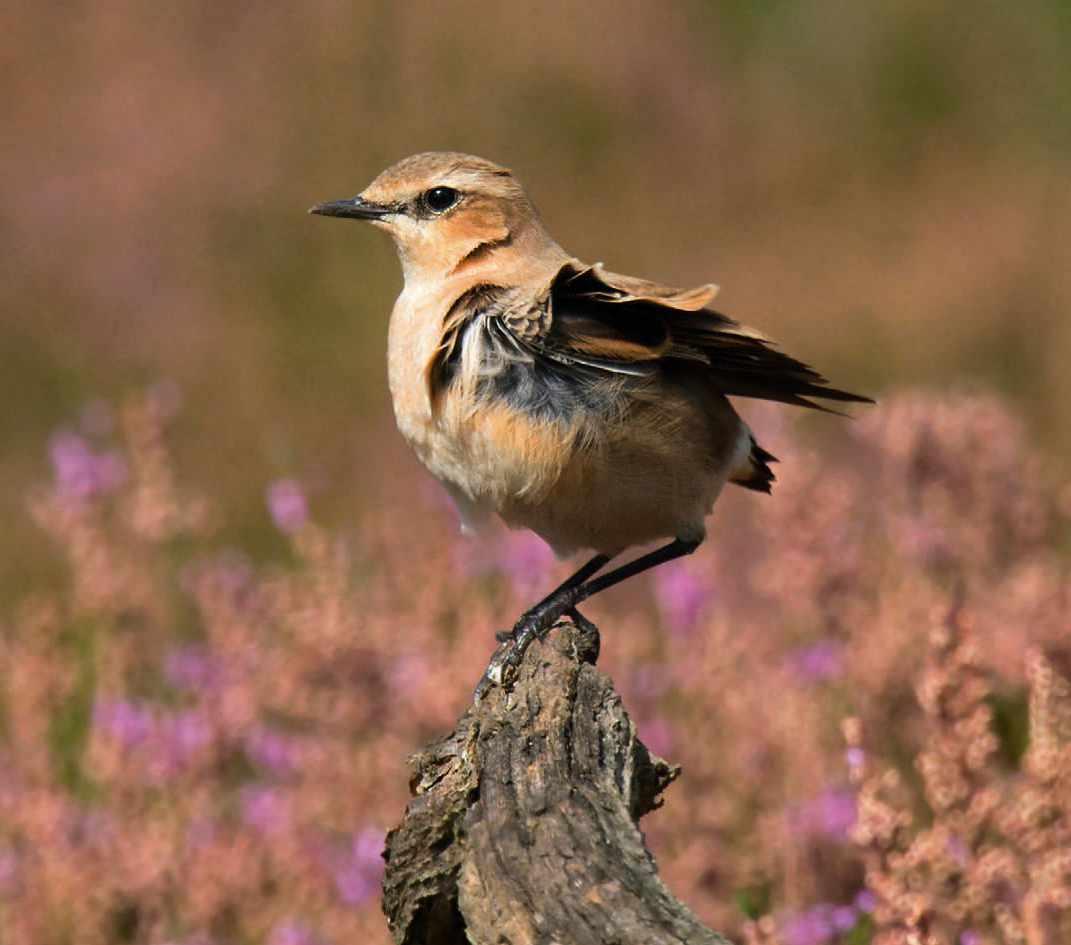
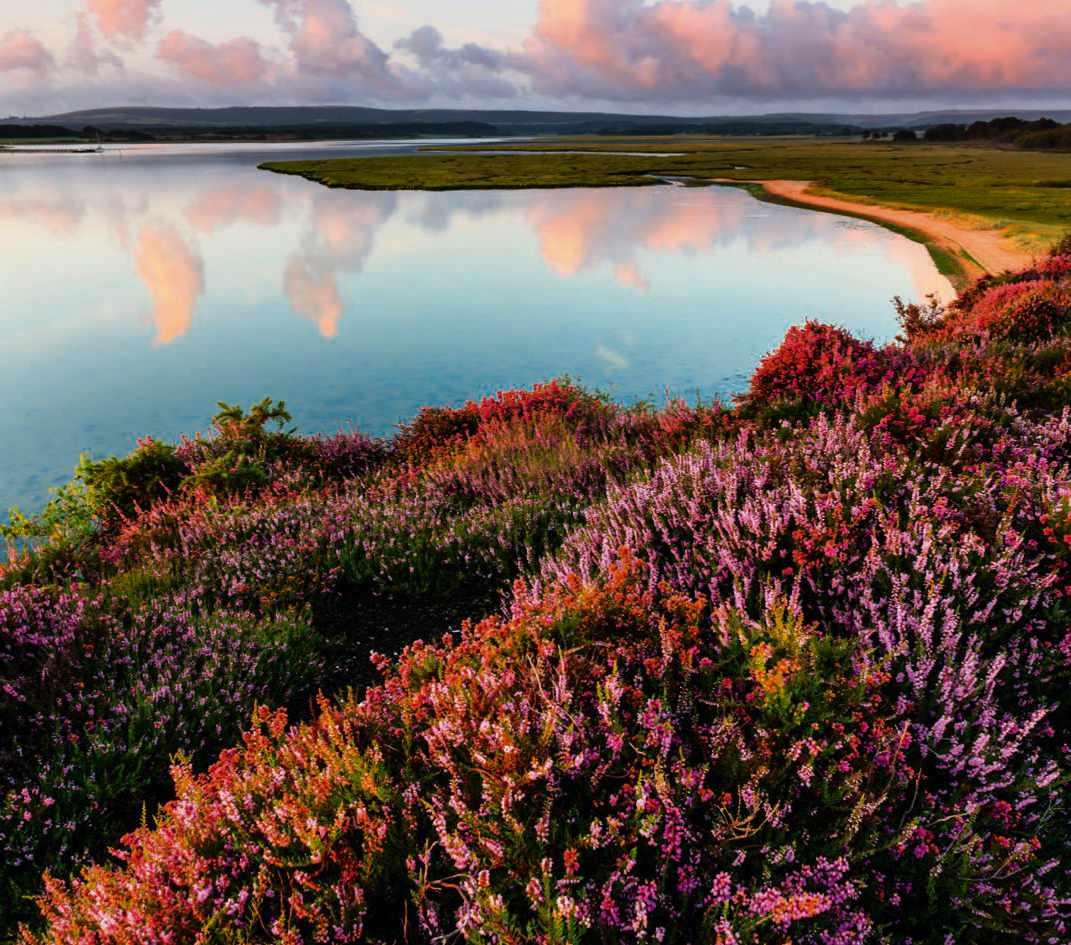
Arne’s peninsula protrudes into the expansive waters of Poole Harbour. Here, impressively sized birds provide eye candy. Spoonbills, avocets and black-tailed godwits gather in winter, ospreys have started to breed and white-tailed eagles loiter for months. The smaller wheatear (pictured top right) visits in spring.
On Arne’s sandy, heathercosseted ground, where commas (top left) flit, similarly
thrilling but less anticipated wildlife treats await. Arne is one of Britain’s few remaining locations to host all six native reptiles. In spring, prospects are high of bumping into grass snakes and adders, sand lizards and common lizards. Joining a guided walk should raise your chance of adding a sighting of the rare smooth snake and the unobtrusive slowworm.
Wandering along Coombe Heath trail, with its view towards
the ruins of Corfe Castle, keep your ears pricked for a woodlark’s viscous lullaby, sharpen your eyes to notice the nervy flit that betrays a Dartford warbler and scan peat-black pools for a raft spider – one of Britain’s largest arachnids –treading water. And as your route winds through wellestablished oak woodland along Shipstal Trail, a herd of sika deer (like the one above left) observes your arrival.
Crunching on to the shingle beach path, Snettisham’s vastness is right in your face. The interminable shoreline extends left and right, while the expanse of The Wash estuary stretches to a distant horizon, both topped by huge skies that promise warming sunrises and fiery sunsets. The openness frees your spirit, and that’s even before the ‘Snettisham spectacular’ has commenced. From late summer through autumn and winter, high spring tides provide a scintillating wildlife experience that is firmly established on Norfolk’s tourist trail.
The supporting act is brief but intense. At dawn, tens of thousands of pink-footed geese depart their coastal slumber pad for feeding grounds inland, their yelping skeins fissuring the sky.
Pacing your walk with the incoming tide, stride south past water-filled pits where cormorants and grebes dive for fish, on past the skeleton of a wooden jetty that creaks into the mudflats, until you reach the saltmarsh. As rising waters smother the gloopy feeding grounds of up to 100,000 migratory shorebirds, so the air fills with feather and sound.
Groups of oystercatchers pipe hysterically as they wing over your head to assume position on the banks of the southernmost lagoon. Tearing overhead to join them, curlews bubble away, turnstones quip, dunlins wheeze and redshanks shriek. Best of all, thousands of knots cloud through the air, billowing and whirling, flashing silver and white – the shorebird equivalent of a starling murmuration – until they too settle below Shore Hide, waiting out peak water (like the flock pictured below) with some much-needed shut-eye.
8
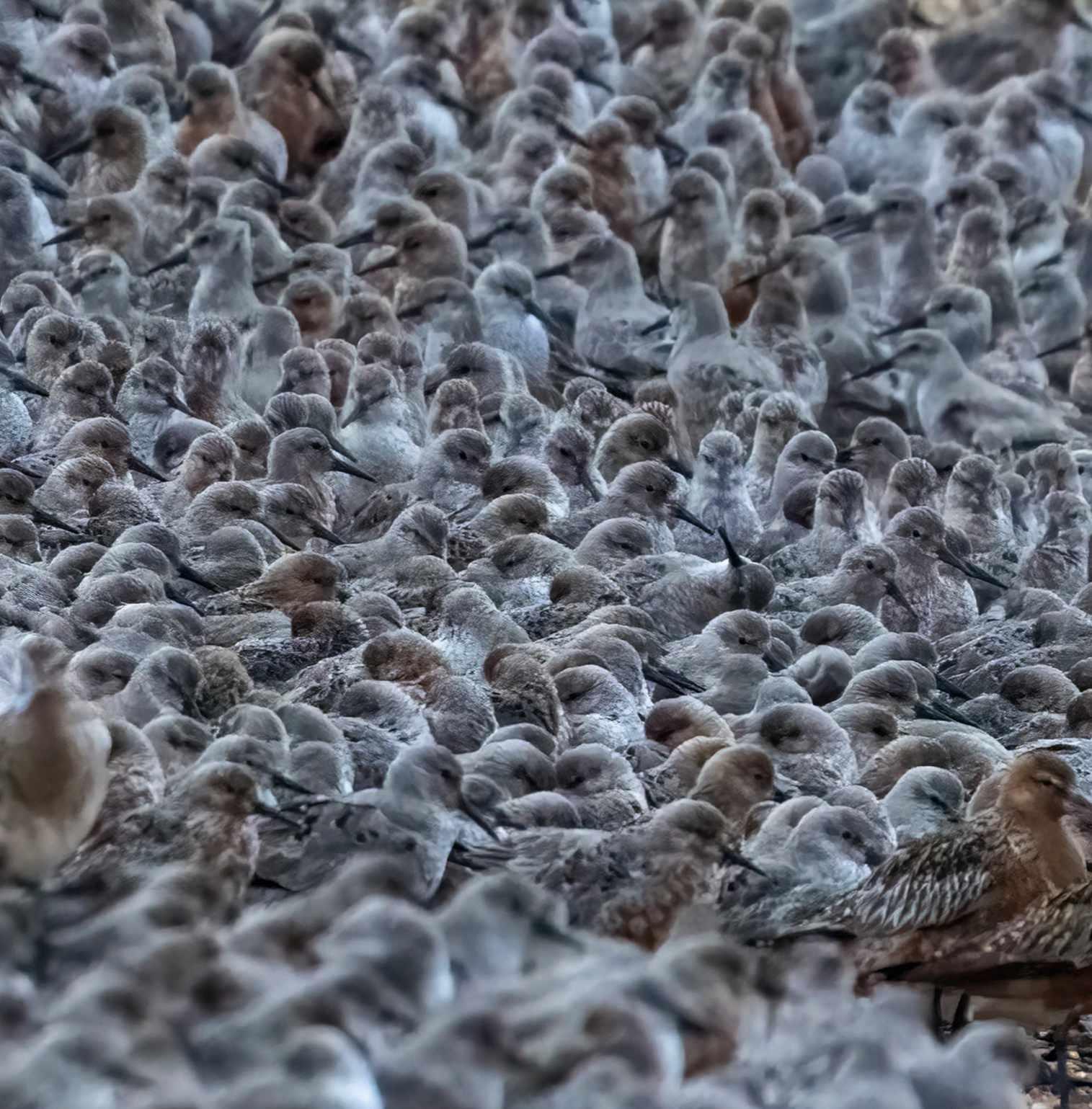
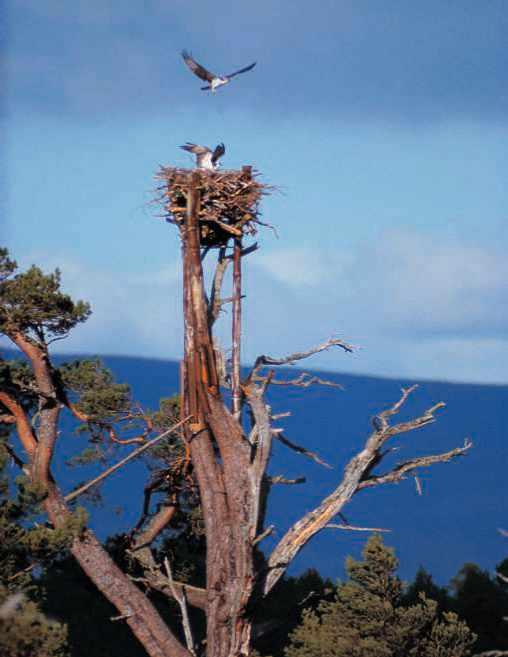
9
No RSPB reserve is more synonymous with a single type of bird than Loch Garten. Ospreys have bred here in nearly all of the past 70 summers, attracting up to 45,000 visitors a year to admire the nesting pair through telescopes at what was long called the ‘Osprey Centre’.
That is impressive enough. But as the recent name change to ‘Nature Centre’ implies, there is much more to this reserve than ospreys. Open April–September, the revamped centre treats visitors to live feeds from white-tailed eagle and goshawk nest-cameras. Outside the building, peanutstuffed feeders coax red squirrels down to eye level, while feisty crested tits draw attention with their purring call.
Loch Garten is part of the RSPB’s Abernethy Forest reserve. Principally protecting Britain’s largest remaining Caledonian pine forest, Abernethy is home to 5,000 species of plants, animals and other life forms. An understorey rich in blaeberry and cowberry harbours capercaillies (our largest grouse) and mounds of wood ants. Abernethy even stretches 1,100 metres up to Ben Macdui, where summits host dotterel and ptarmigan.
Gusting unimpeded across the Irish Sea, the wind makes its presence felt at this clifftop reserve – but that makes it a perfect choice for blowing away the cobwebs. Stride across maritime heathland to reach the RSPB’s glass-fronted café, but – for now – resist the temptation to enter. Instead make for a crenellated white building, a 19th-century summerhouse called Elin’s Tower.
This lofty vantage point grants intimate views of nesting seabirds in spring and summer. Thousands of guillemots form orderly rows on the precipitous rockface, complemented by hundreds of razorbills and several puffins. Offshore, Manx shearwaters flicker black and white, passing the day at sea before returning after nightfall. Meanwhile, summer also sees South Stack’s heathland at its
prettiest, clad in purple and pink. Here, spot silverstudded blue butterflies, common lizards and thrift clearwing, a day-flying, wasp-mimicking moth.
If you can’t visit in summer, fret not. With its wavelashed cliffs, network of trails and snow-white lighthouse facing off the sea, South Stack excels for wild walks at any season. Autumn is best for watching harbour porpoises rotate
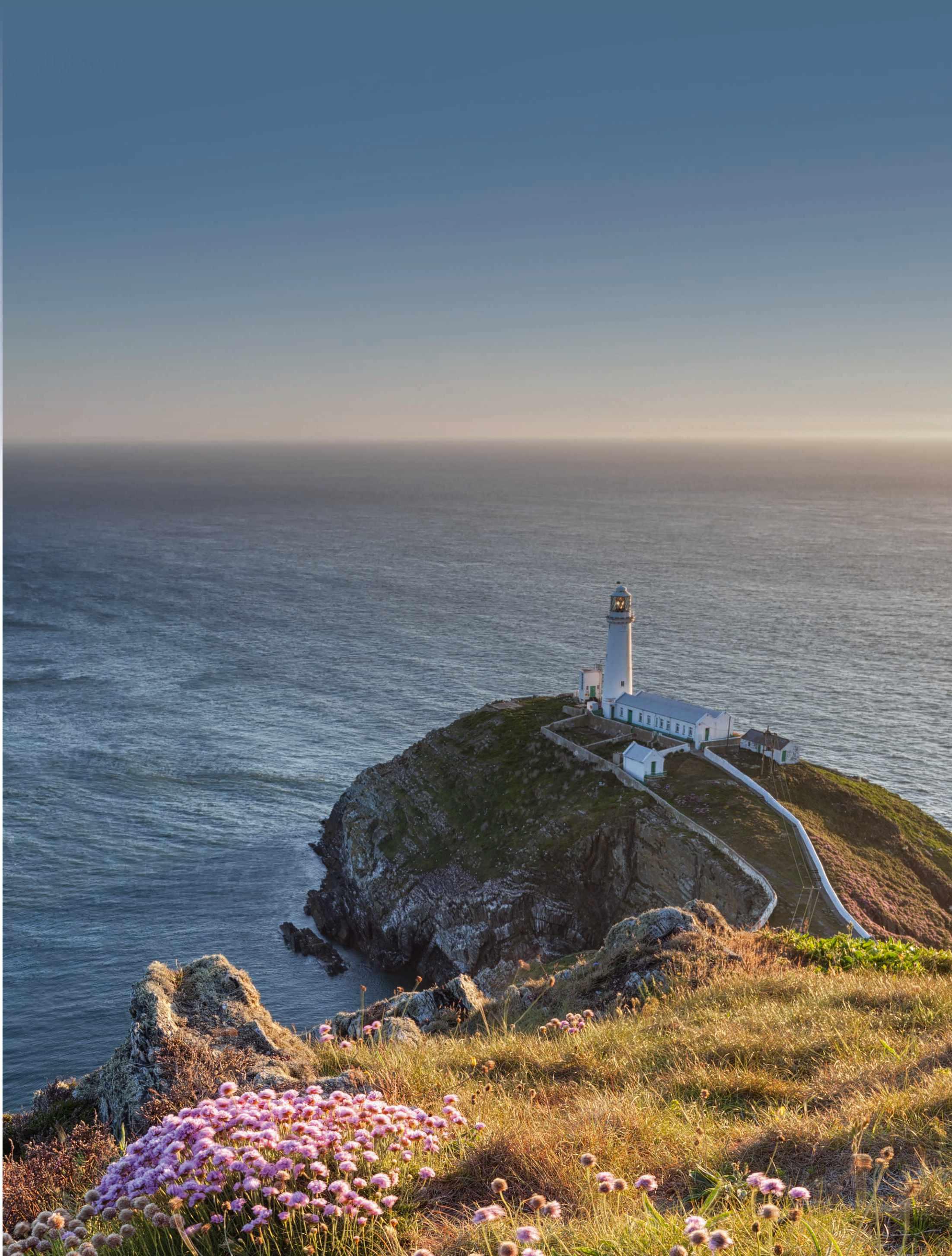
through the metallic swell. Peering downwards into sheltered coves, you may chance upon a grey seal pup. Ravens and peregrines boss the skies year-round, as do choughs: few crows are as fun to watch as these red-billed ragamuffins as they hang in the wind, then plummet on crumpled wings before twisting upwards with a loud, echoing call. Now it’s time for the café and a well-deserved cuppa.

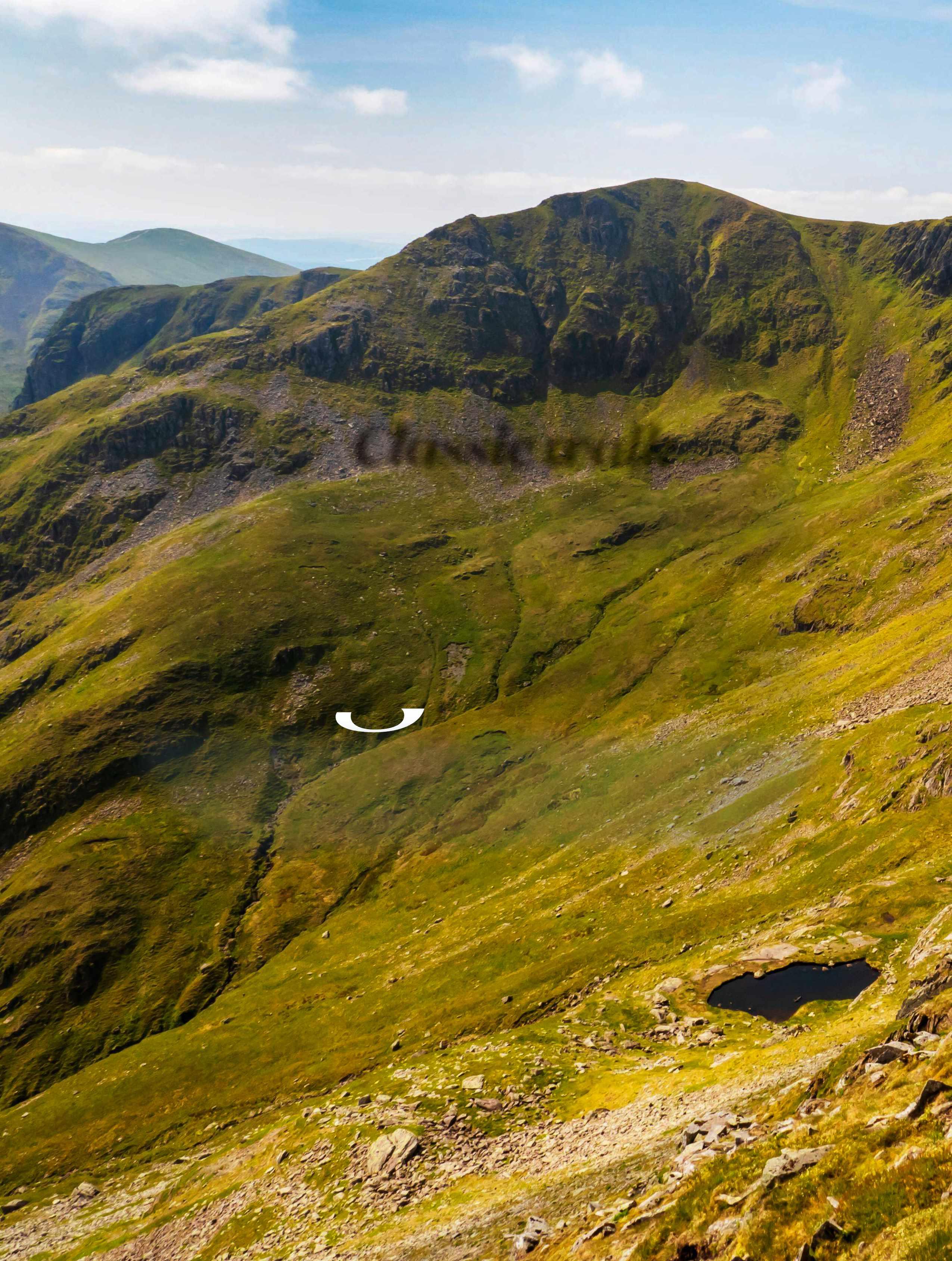


In the first of our new series on classic country walks, Vivienne Crow scales a Lakeland peak in search of the remote pond that inspired one of Britain’s greatest outdoor writers
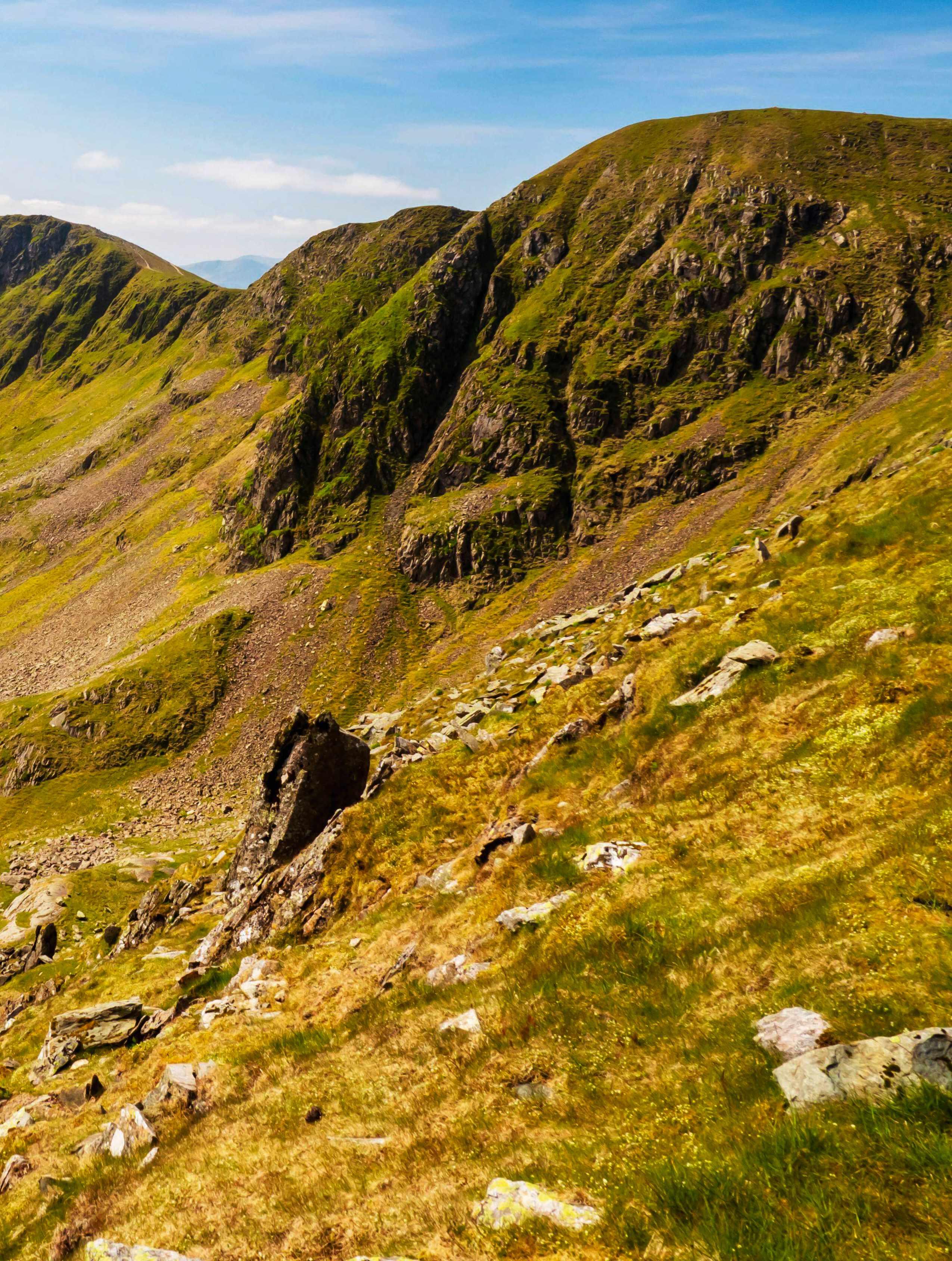
All is calm on the sprawling plateau that stretches south from England’s third-highest mountain. Despite lingering patches of snow clinging to the escarpment edge and the disorientating cloud occasionally drifting across the fell-tops, the Helvellyn range feels surprisingly benign today.
Peering over the precipice, though, I’m looking down into an uninviting landscape: a bowl of shattered rocks and scree resting precariously at the foot of dark, impenetrable cliffs. This lonely prospect is what guidebook writer Alfred Wainwright described as “the wilderness of Ruthwaite Cove” (the name for a corrie on the flank of Helvellyn), and it’s home to one of Lakeland’s highest and most difficultto-reach mountain pools, Hard Tarn.
“A tiny splash drew my gaze to the clear depths of the tarn”
In TheEasternFells, published in 1955 and the first of his seven Pictorial GuidestotheLakelandFells, Wainwright describes a visit to the remote tarn, lying in the sun on the narrow, rocky shelf that cradles it. “The air was still; there was no sound, and nothing in view but the shattered confusion of rocks all around. I might have been the last man in a dead world. A tiny splash drew my gaze to the crystal-clear depths of the tarn…” It was a newt, “a speck of life in the immensity of desolation”. And it got Wainwright wondering about its purpose in life and, in turn, his own. A new book, ANewtinHardTarn, examines why this encounter was so important to Wainwright. Author and former secretary of the Wainwright Society Derek Cockell explains: “That was the only memory Wainwright wrote about in detail in his guides, and it sparked something, something he wanted to share. He was more than just a guidebook writer; he was
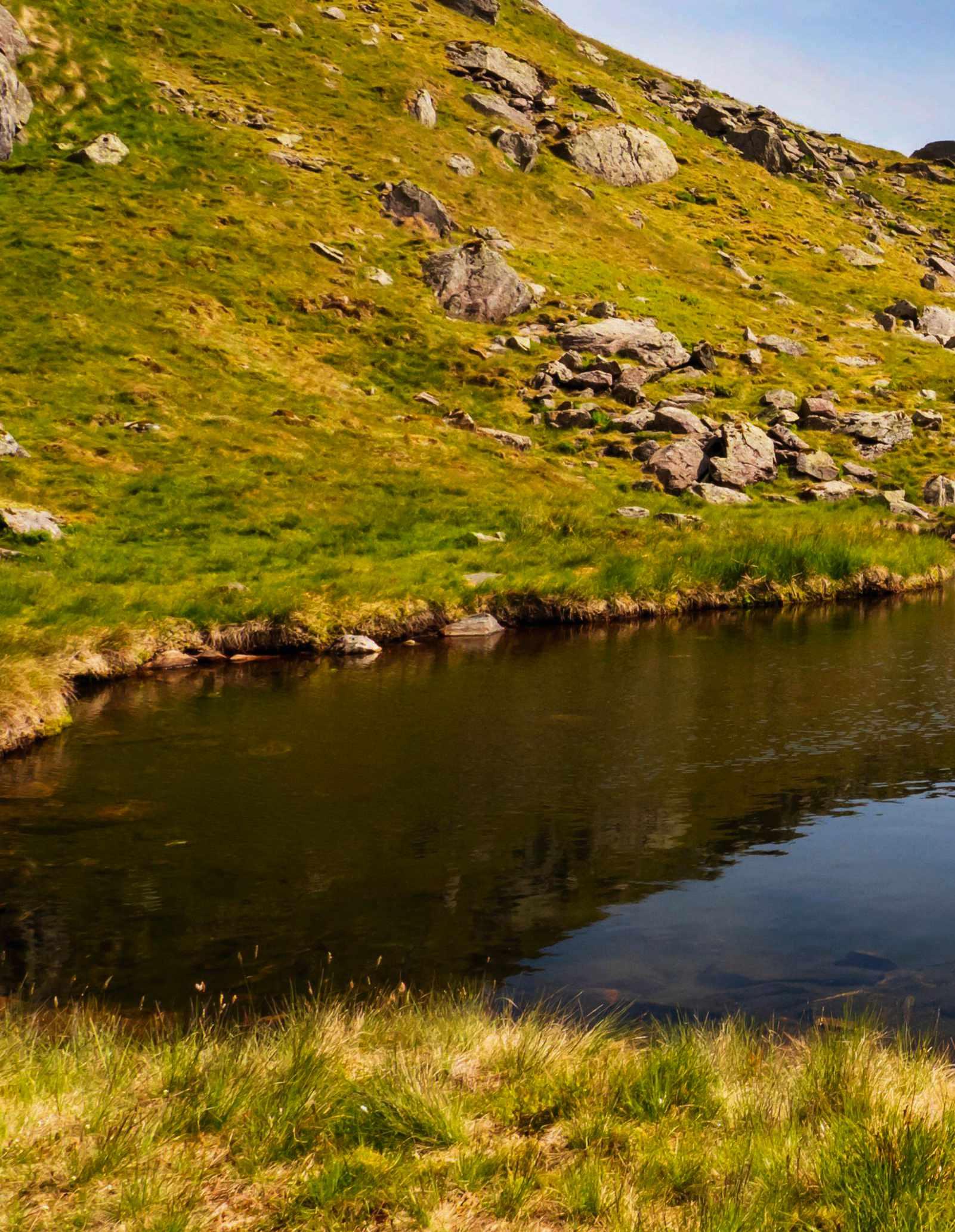
interested in the landscape and nature and how those things affected people’s personal lives and happiness.”
I’d approached the mountains from the east, climbing through the spectacular glaciated valley of Grisedale. Patches of woodland and sheep-filled enclosures adorned the valley bottom in the early stages, but the surroundings became more hostile the higher I climbed. Dark crags towered ominously while whitewater becks came crashing down from hidden corries.
Wainwright would have accessed the cove from Grisedale, clambering up steep, pathless slopes that see few visitors. But on this classic route (see page 80 for full details), I’m bypassing the tarn itself, hoping to glimpse it
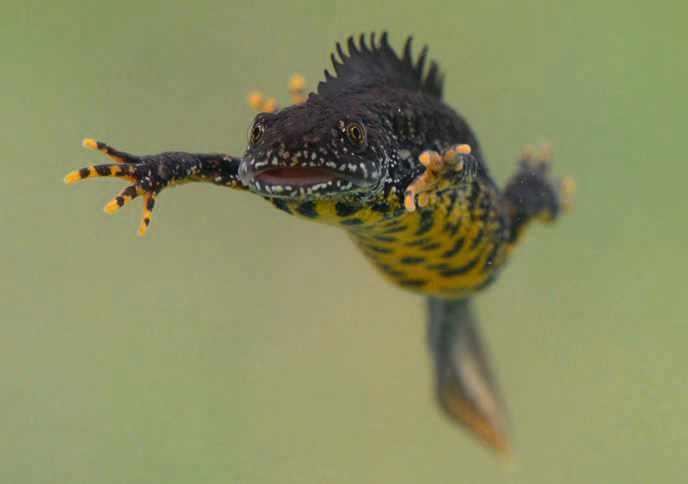
ABOVE Look for great crested newts in Lake District tarns in breeding season, March to June from above, the way most people would experience it. From Grisedale Tarn at the head of the valley, a path climbs steeply to Dollywaggon Pike, one of Helvellyn’s subsidiary tops. Leaving the main path, I head to the summit for an airy view of the range’s dramatic, glacier-sculpted east face. Scanning
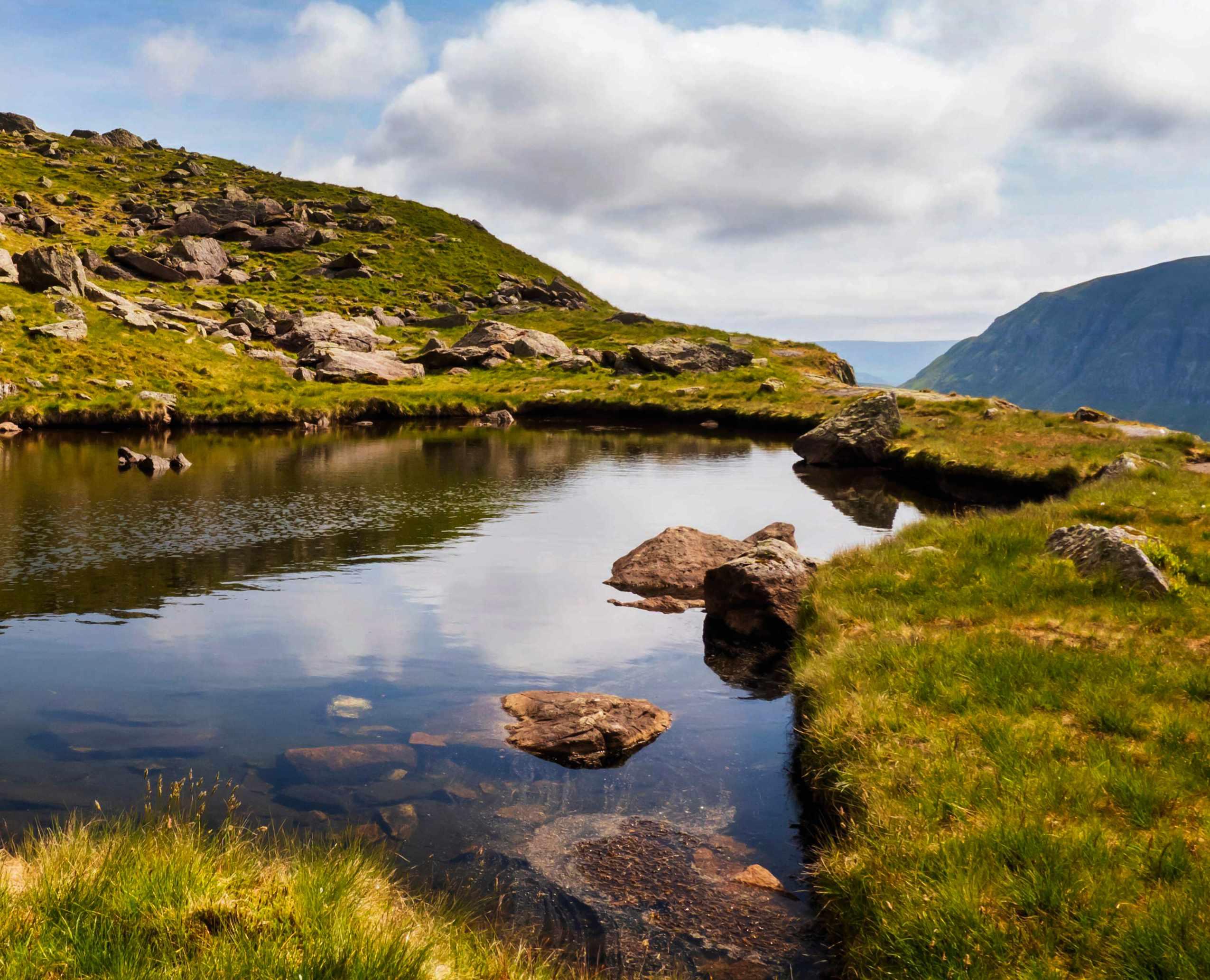
Derek says newts were still living in the tarn as recently as 2015 when he last made a pilgrimage to the site. The seemingly inhospitable slopes around it are also home to Arctic-alpine plants that have survived here since the last glacial period. The dainty flowers of purple saxifrage cling to cliff ledges in early spring, while mountain avens and Alpine cinquefoil thrive elsewhere. Some of these plants exist nowhere else in England, surviving despite the destruction wrought by Victorian collectors, grazing sheep and climate change. On the summits, walkers might be treated to the aerobatics of ravens. These huge corvids gain height then plummet earthward, performing flips and twirls as they dive.

Most fell-walkers don’t attempt the challenging climb to Hard Tarn, nestled below Nethermost Pike on the Helvellyn range
Alfred Wainwright is best known for his seven PictorialGuidestotheLakelandFells, first published between 1955 and 1966. In these books, illustrated with his own pen-and-ink drawings, he described routes on to 214 different fells. Visiting all these so-called ‘Wainwrights’ has become a peak-bagging challenge akin to climbing all the Munros in Scotland.
Born in Blackburn in 1907, Wainwright appeared in three BBC TV series in the mid-1980s, his flat cap and pipe quickly becoming trademark features. He also devised the 192-mile Coast to Coast long-distance hike from St Bees in Cumbria to Robin Hood’s Bay in North Yorkshire.
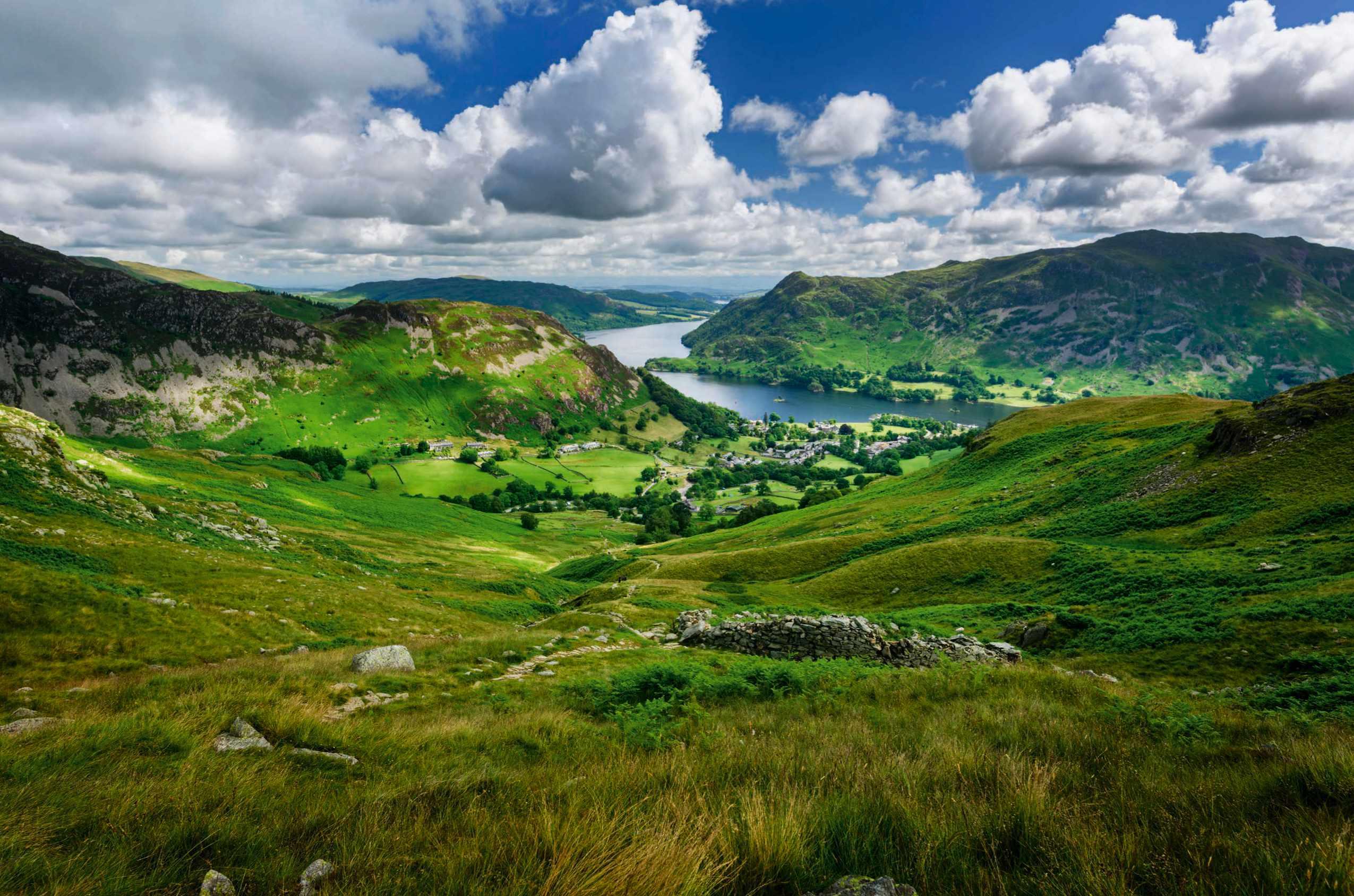
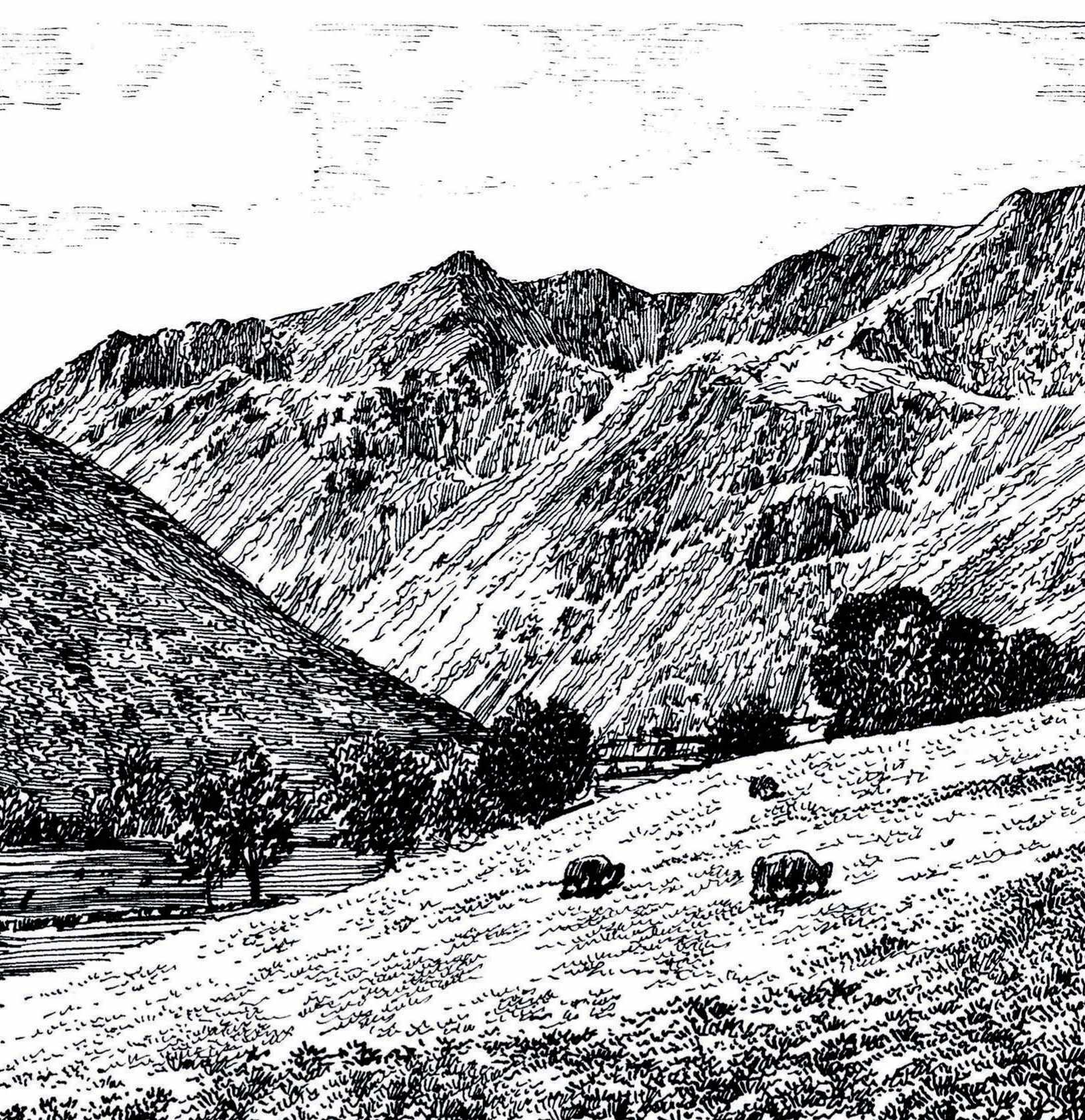
Glimpses of Hard Tarn come and go as I pick my way along the escarpment edge, across a plateau strewn with lichen-covered boulders. To the west, a 16-mile-long skyline of peaks has unfurled, including Scafell Pike and Great Gable. Beyond the many hazy layers of Lakeland ridges to the east, the horizon is filled by the bleak, lonely uplands of the North Pennines.
Still avoiding the main path, I walk out to the plateau’s easternmost edge, part of Nethermost Pike. I can see scramblers strung out along Striding Edge, one of the vertiginous arêtes Helvellyn throws out to the east, while the summit is dotted with walkers. Here though, all is silent. As Derek explains, Wainwright sought secluded places on the fells. “Like the Romantic poets, such as Wordsworth and Coleridge, he felt a deep spiritual uplift from being on the fells on his own. He’d be pleased the mountains are so popular – he wanted to encourage others to have the same experiences he had – but he advocated walking alone and in silence to immerse yourself in nature and the landscape.”
The mental health benefits of being in nature are often discussed today, but Wainwright was writing decades ago about the “tranquil mind” he gained on the hills, as though he had “escaped the disappointments and unkindnesses of life and emerged above them into… a better world”.
Derek’s book also explains how Wainwright imagined the lives of those who experienced the hills before us – miners, shepherds, Roman soldiers. Helvellyn is peppered with reminders of the past. Striding Edge has two memorials to those who died after falling from the ridge, including Charles Gough, whose dog remained beside his body for three months. A plaque also commemorates the moment when, in 1926, John Leeming and Bert Hinkler landed a bi-plane on the summit. Hinkler kept the engine going while Leeming leapt out and jammed rocks behind its wheels to act as brakes. They stopped just short of the lip of Helvellyn’s headwall.
From a high point of 950m above sea level, close to the scene of Leeming and Hinkler’s daring, I descend Lower Man’s rough, stony ridge. A zigzagging path then drops into the valley carved by Glenridding Beck, home to several small, but noisy waterfalls.
Further downstream, Greenside’s converted mine buildings and spoil heaps provide more reminders of how humans have shaped Lakeland. Over the course of two centuries, thousands of people were employed here. An eyesore perhaps? According to Derek, Wainwright didn’t think so. As much as Charles Gough or Hard Tarn’s newt, these were part of Lakeland’s rich mosaic, a place he described as a “romantic fairyland”.
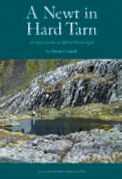
ANewtinHardTarnby Derek Cockell (£15.99) is available at wainwright.org. uk/merchandise

Vivienne Crow is an outdoor writer and guidebook author who specialises in hill-walking, natural history and human heritage. She lives in Cumbria.
Wainwright listed Blencathra in his top six favourite mountains, writing: “Blencathra is one of the grandest objects in Lakeland…”
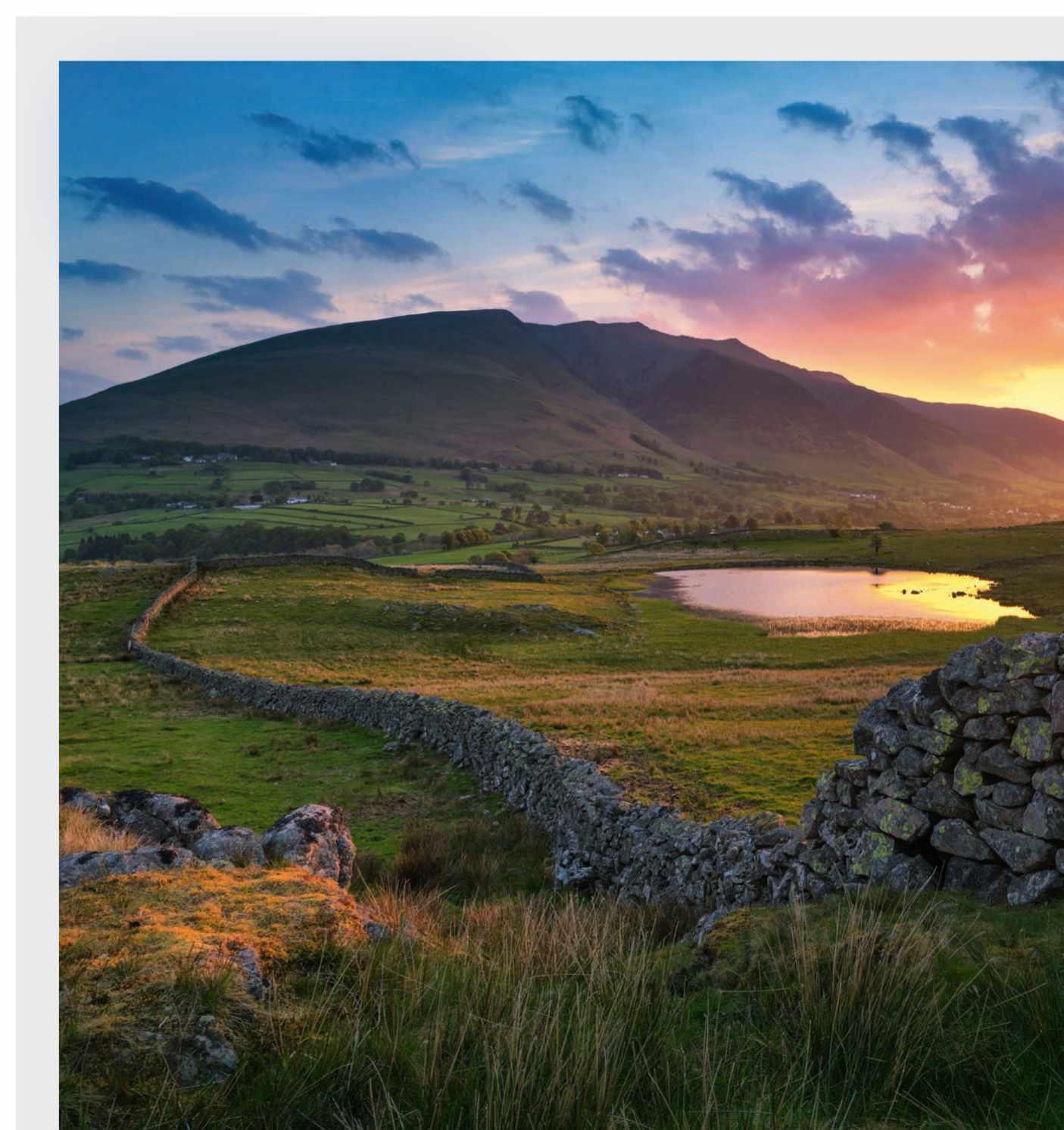
1 Blencathra Wainwright devotes more pages to Blencathra than any other Lakeland fell, describing each route in delicious detail. The most challenging is Sharp Edge, but this exposed scramble is not for the faint-hearted.
2 Bow Fell One of the guidebook writer’s favourites, Bow Fell sits at the hub of three valleys: Great Langdale, Langstrath and Eskdale. For the most exciting experience, try the vertiginous climbers’ traverse.
3 Castle Crag The only ‘Wainwright’ below 300m, he listed this summit because it’s “so ruggedly individual, so aggressively unashamed of its lack of inches”. The ascent from Borrowdale is steep, but short.
4 Scafell Pike England’s highest mountain is a rough, tough undertaking however you approach it. Wainwright describes the Borrowdale ascents as “pre-eminent”, including the Corridor Route along the range’s rugged western flanks.
5 Hay Stacks The “best fell-top of all”, it was here in 1991 that Wainwright’s ashes were scattered. The best approach? From Buttermere via Scarth Gap – a “prelude of much merit and beauty”.

For five more recommended Wainwright walks and other Lake District days out, go to countryfile.com
, The walk
11.8 miles/19km; 6½–7 hours; hard; 1,030m
Start: Lake District National Park car park in Glenridding, CA11 0PA.
Terrain: Some roads and tracks, but mostly open fell, with rough ground underfoot at times.
Map: OS Explorer OL5
Scan me for the map and route details

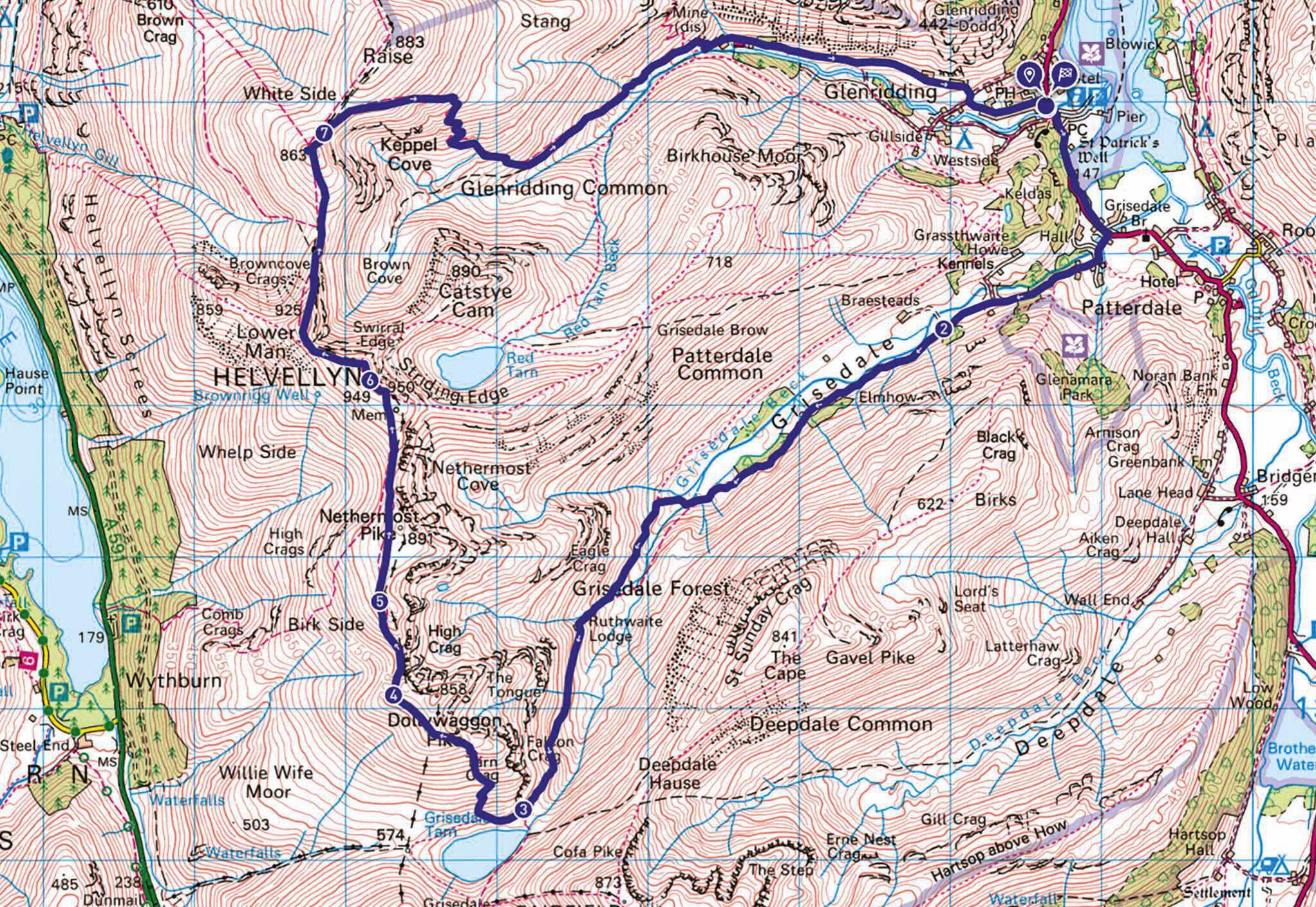
1 Start
From the car park, walk to the main road and turn right. As the road bends left after 0.5 miles, take the dead-end lane on the right. After 0.6 miles – where a track goes sharp right at a bench – pass through the gate ahead.
2 1.5 miles
Keep straight on, the wall on your left, as the surfaced lane swings right in another 0.2 miles. This track, later a rough path, eases its way up into evernarrowing Grisedale for almost 3 miles.
3 4.3 miles
At the top of the valley climb, with Grisedale Tarn ahead, you’ll see a cairn beside the path. As one path drops left, keep right, soon climbing steeply on a constructed path.
45 miles
The gradient eases considerably as you reach a cairn on Dollywaggon Pike. Leaving the main path here, bear right for the summit cairn. Descend west on a trail, quickly veering west-north-west. The trail skitters down to a clearer path, just above the saddle between Dollywaggon Pike and High Crag. As this path begins climbing, bear right along a trail rising through the boulders.
5 5.7 miles
From the sprawling cairn on High Crag, walk north across the grassy plateau to reach Nethermost Pike’s summit. Descend north-west, dropping back on to the main ridge path in another saddle. Continue north along this to climb to Helvellyn’s summit shelter and, beyond that, the trig pillar.
6 6.7 miles
Continue north-west along the eastern rim of the high ground, ignoring the Swirral Edge path dropping steeply to the right and then another path to the left. Beyond Lower Man, the descent (north) steepens. The stony path plummets to a dip then passes over White Side.
78 miles
In the next dip, just before the ridge route resumes climbing, take the path peeling off right. Nearing the valley bottom, bear left along another broad path, continuing downhill but at a gentler angle. This track later winds its way down past the converted Greenside mine buildings. Nearing Glenridding, follow the lane round bends to the right and left. Re-enter the car park via its vehicle exit immediately after Fairlight Guest House.
BOOK NOW WITH JUST A £50pp LOW DEPOSIT!
Combining luxury coach travel with hand-picked hotels and expertly planned excursions, discover Europe’s most iconic destinations on a fully escorted holiday. Award-winning and with over 40 years’ experience in planning tours, you can travel with complete confidence when you choose Leger!
WITH TWO LUXURY COACH OPTIONS, LET US TAKE CARE OF THE DRIVING AS YOU TRAVEL IN TRUE COMFORT AND STYLE THROUGHOUT EUROPE.

WE HAVE CHOICES FOR ALL INTERESTS, INCLUDING…

Enjoy a taster of favourite European destinations as you explore the highlights of Paris, Bruges, Amsterdam, Monschau and more!
Mar 2024 to Oct 2025
18 tours from only £459

From Tuscany to the Austrian Tyrol, soak up spectacular sights and scenery on a longer duration holiday without having to plan a thing.
Mar 2024 to Oct 2025
65 tours from only £879
1000s of fully escorted coach holidays to choose from!

Let destinations come to you as you gently glide along Europe’s beautiful waterways, with visits to charming riverside towns along with way.
Apr 2024 to Dec 2025
27 cruises from only £649


A comfortable, durable, weather-resistant pair of walking trousers should be on everyone’s kit list. We put men’s and women’s options to the test
Reviewed by Rob Slade, Rachel Howatson Photos by Dave Caudery
MOUNTAIN MEN’S PANT £90
mountain-equipment.co.uk
• Material: 92% polyamide, 8% elastane
• Weight: 438g (size medium)
Mountain Equipment’s Ibex Mountain Pants are a firm favourite with our reviewer, mainly thanks to their excellent range of movement, good durability and fantastic
features. There’s a microfleece waistband and an integrated belt, articulated knees for mobility, zips at the ankle and the inner fabric feels nice against the skin, so you’re covered for comfort too.
As for features, you get two roomy zip pockets on each hip, a deep zip pocket on your backside and two zip pockets on your thigh, ideal for stashing emergency snacks, maps and gloves. You may find the Ibex
Pants aren’t suitable for warm-weather hikes, and they’re not the lightest of designs, but if you’re after a durable, weatherresistant pair of trousers for coast paths to blustery summits, you’re on to a winner. RS
PROS: Excellent range of movement, good durability, fantastic features.
CONS: Original belt was flawed, not the lightest weight.
jack-wolfskin.co.uk
• Material: 90% polyamide, 10% elastane
• Weight: 340g (women’s size 36)
Instantly comfortable and allowing excellent freedom of movement, of all the trousers on test, it was the Holdsteig Pants that made us want to tackle the hills the most. Available in men’s and women’s sizes, these softshell trousers are pleasingly stretchy and offer an almost legging-like fit. The inner material is notably soft – you’ll struggle to save these trousers just for hikes, they’re that comfortable. The built-in belt paired with the high waist allows for a secure fit, while the four zipped pockets are super practical.
The Holdsteig Pants held up very well in low temperatures, so these offer decent warmth and wind protection for winter. The brand recommends sizing up, but if you prefer a slim-fitting feel, we suggest sticking with your usual size. RH
PROS: Secure fit, built-in belt, great range of movement, stretchy fabric.
CONS: Not the lightest weight for packing.
fjallraven.com/uk/en-gb/
• Material: 89% polyamide, 11% elastane
• Weight: 410g
Fjällräven’s Keb Agile walking trousers feel incredibly well made, and thanks to the G-1000 Lite Stretch patches on knees, inner ankles and thigh pockets, are extra durable. The ankle patches are useful for protection from boots, or crampons.
You’ll find two deep ventilation zips on each thigh – helpful on a warm hike. The trousers aren’t the most packable, but comfortable and fully-featured nonetheless. Available in men’s and women’s sizes, these are a reliable choice for everything from casual countryside walks to serious hikes. However, there’s no elastication on the waist and no belt, so you’ll want to find the right waist size. Our tester felt the legs came up long, so check the size charts. RS
PROS: Great vents, ankle adjustability, fantastic range of motion.
CONS: No elasticated waistband or belt, no water repellency, high price.


• Material: TACTEL nylon
• Weight: 357g
Go for a hike in Snowdonia or Dartmoor and you’ll likely spot a person wearing a pair of Montane Terra Pants. A popular choice, and for good reason, this design comes in men’s and women’s sizes, is lightweight, packable and comfortable.
The cut is neither slim fitting or baggy, a nice middle ground, and we found the webbed belt stayed tight even after a lengthy hike. We were impressed with range of movement overall, although you may find the design a little restrictive around the upper thigh when taking particularly steep steps. Despite their water resistance and versatility, these are not super warm so we wouldn’t recommend them for winter, but, of course, layering is always an option. RS
PROS: Lightweight, good range of sizes, vents, comfortable.
CONS: Can feel a little restrictive around the thigh when scrambling.
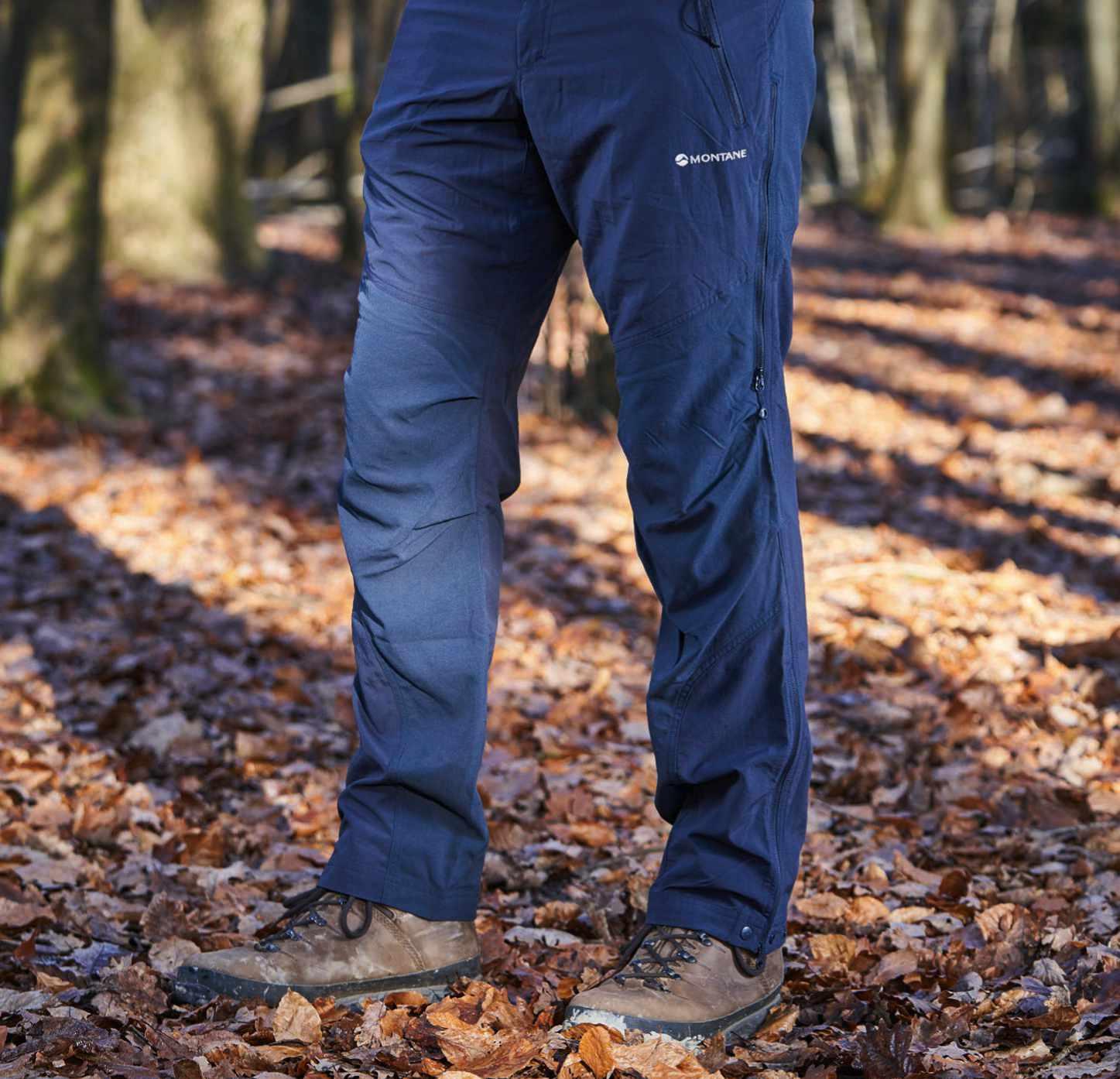
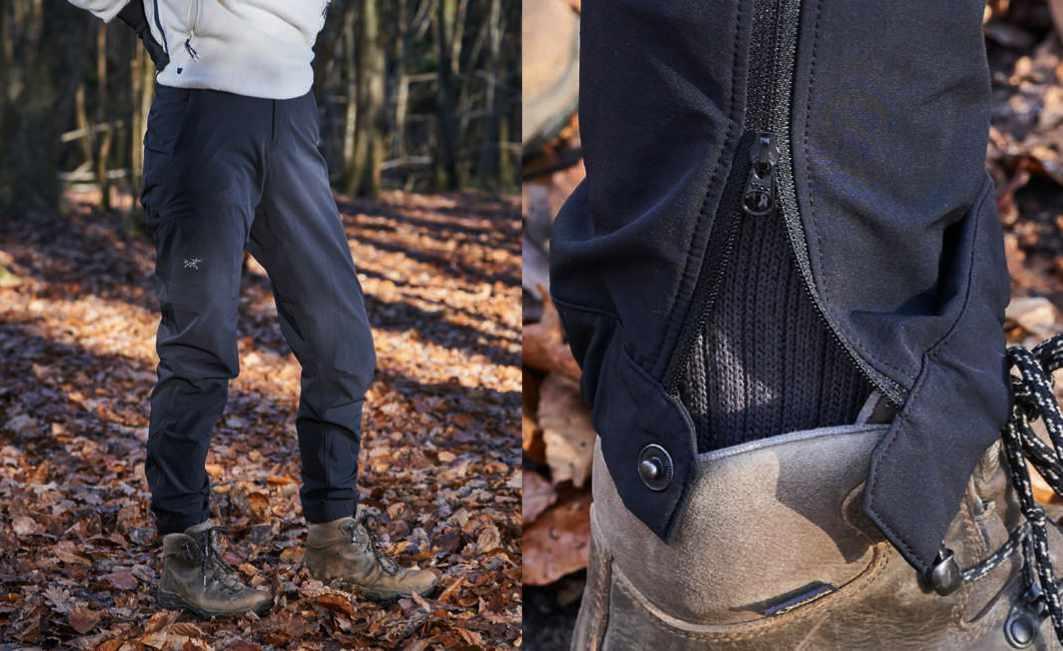
arcteryx.com/gb/en
• Material: 88% nylon, 12% elastane
• Weight: 285g
Available in men’s and women’s sizes, the material isn’t the softest, but the Gamma trousers are hardy and durable thanks to a wind- and waterrepellent finish. The women’s fit is on the baggy side, particularly around the thigh,
but with this comes great range of movement and comfort, without irritations or chafing, making them a top choice for scrambling. The long ankle zips are handy – great for muddy boots. You also have two hand pockets and two large zipped thigh pockets. The fit came up large, so size down. RH
PROS: Great freedom of movement, fast-drying, built-in belt; comfortable.
CONS: Price, large fit.
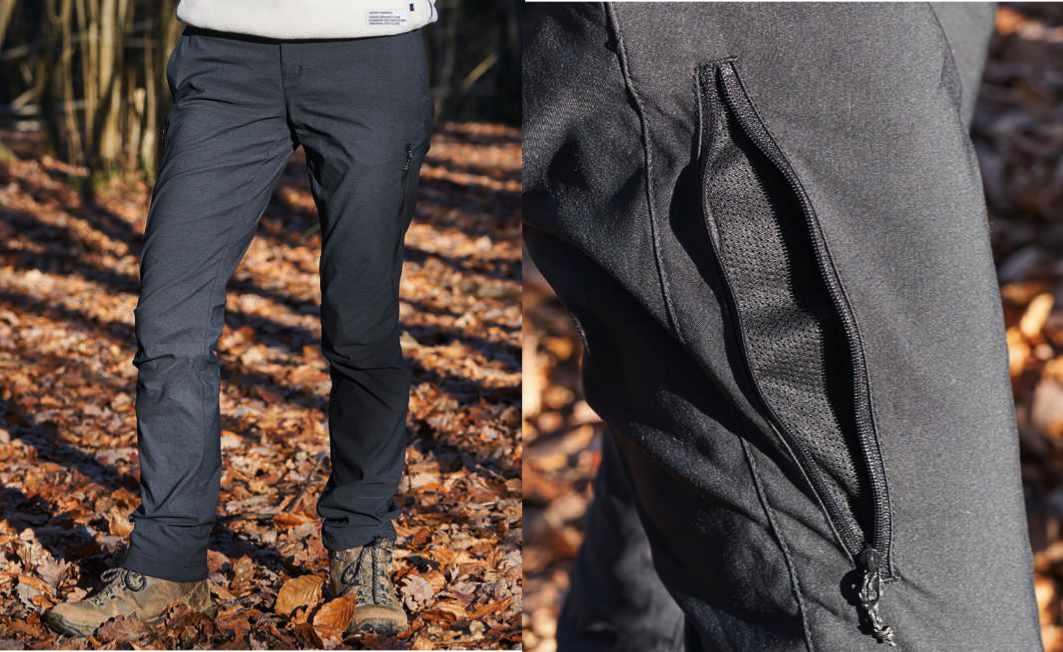
2.0 PANT £85
berghaus.com
• Material: 96% polyamide, 4% elastane
• Weight: 260g (size UK 10)
The Berghaus Ortler 2.0 Pants come in men’s and women’s sizes, are very lightweight and will roll up if you need to stash them. We were impressed with the water-repellant fabric, and the leg vents are a nice touch. The trousers aren’t overly
stretchy and feel quite fitted, but the inner waistband is soft, and the materials feel highquality. While the fit is true to size, our reviewer found them tight around the crotch area with the waistband low on the hip. There’s a security pocket for valuables and a final perk is the no-frills, smart style. RH
PROS: Decent technical features, value for money; good size range.
CONS: Low waistband, tight fit.
craghoppers.com
• Material: 96% polyamide, 4% elastane
• Weight: 285g
Winning points for affordability and comfort, there’s plenty to like about the Verve trousers, but they’re not the most technical of designs and have only one zipped pocket. The material is neither particularly soft nor stretchy, but we found the trousers very comfortable. They’re lightweight and great for packing, but the thin material means you’ll feel the chill on a cold day. Slim-fitting and unfussy, these are a good choice for style-conscious hikers.
The trousers come in men’s and women’s sizes and are true to size; a button and clip fastener on the belt means you can ensure a secure fit. Our 5’4” tester who typically wears a size 8 wore an 8R, and was happy with the length. RH
PROS: Comfortable fit, budget friendly.
CONS: Lack of technical features, more restrictive than other trousers on test.
mountainwarehouse.com
• Material: 100% polyamide
• Weight: 255g (men’s, size medium)
At the lower end of the price scale are the men’s Explore trousers from Mountain Warehouse. Fit was true to size, and you have got the added bonus of an elastic section on the waistband to help achieve a more accurate fit if necessary. The trouser material is noticeably thin, making them a lightweight, mild-weather option. We noticed they weren’t particularly breathable though, so perhaps best to avoid wearing them on humid days.
On test, they were largely comfortable when hiking on flat terrain, but there was some restriction on the uphill as the fabric isn’t overly stretchy.
We’d say the cheap price reflects the quality, however, if you tend to stick to occasional lower-level walks, then they will do the job without breaking the bank. RS
PROS: Cheap, lightweight.
CONS: Quality not as high as others, range of movement is limited.
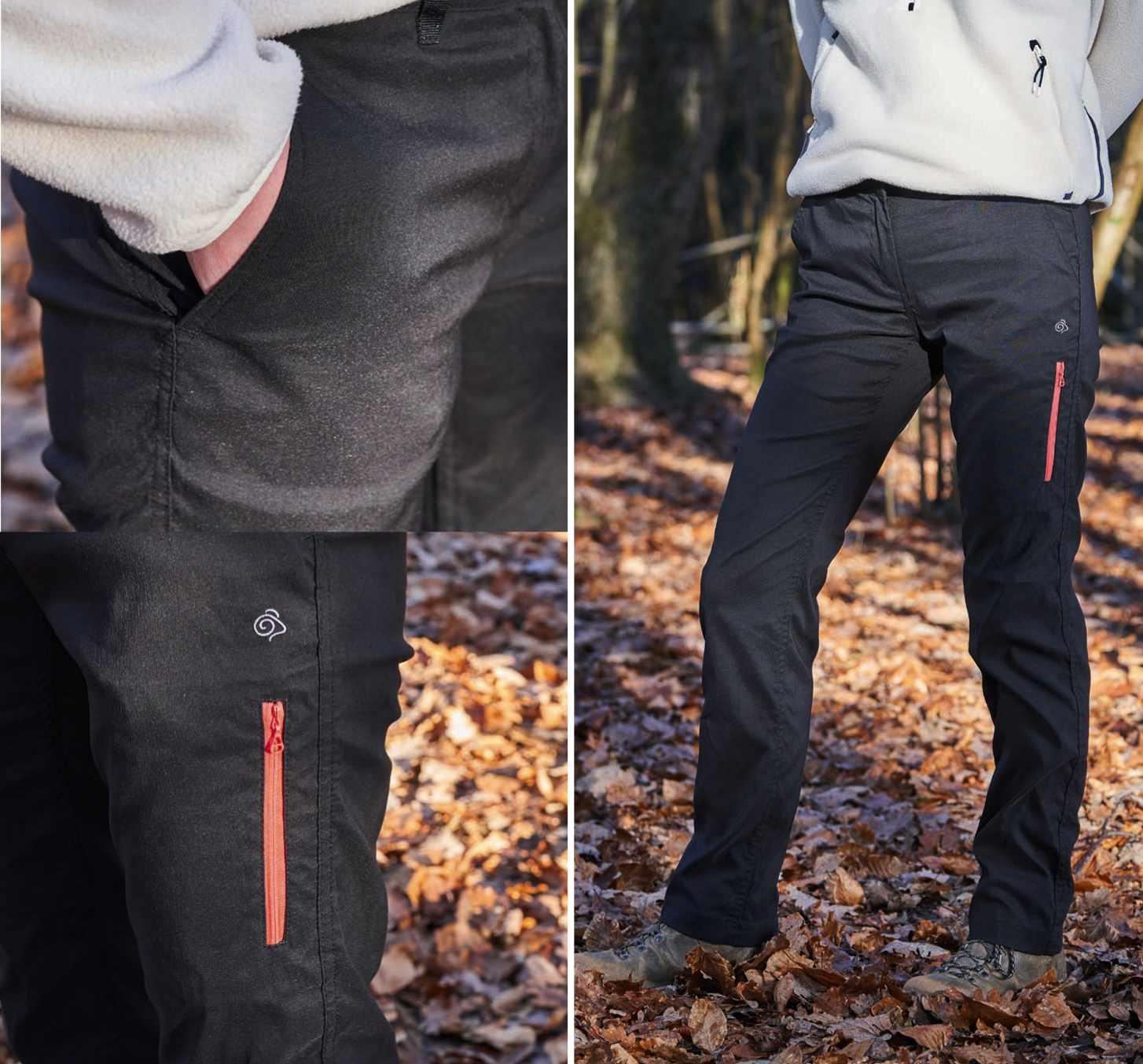
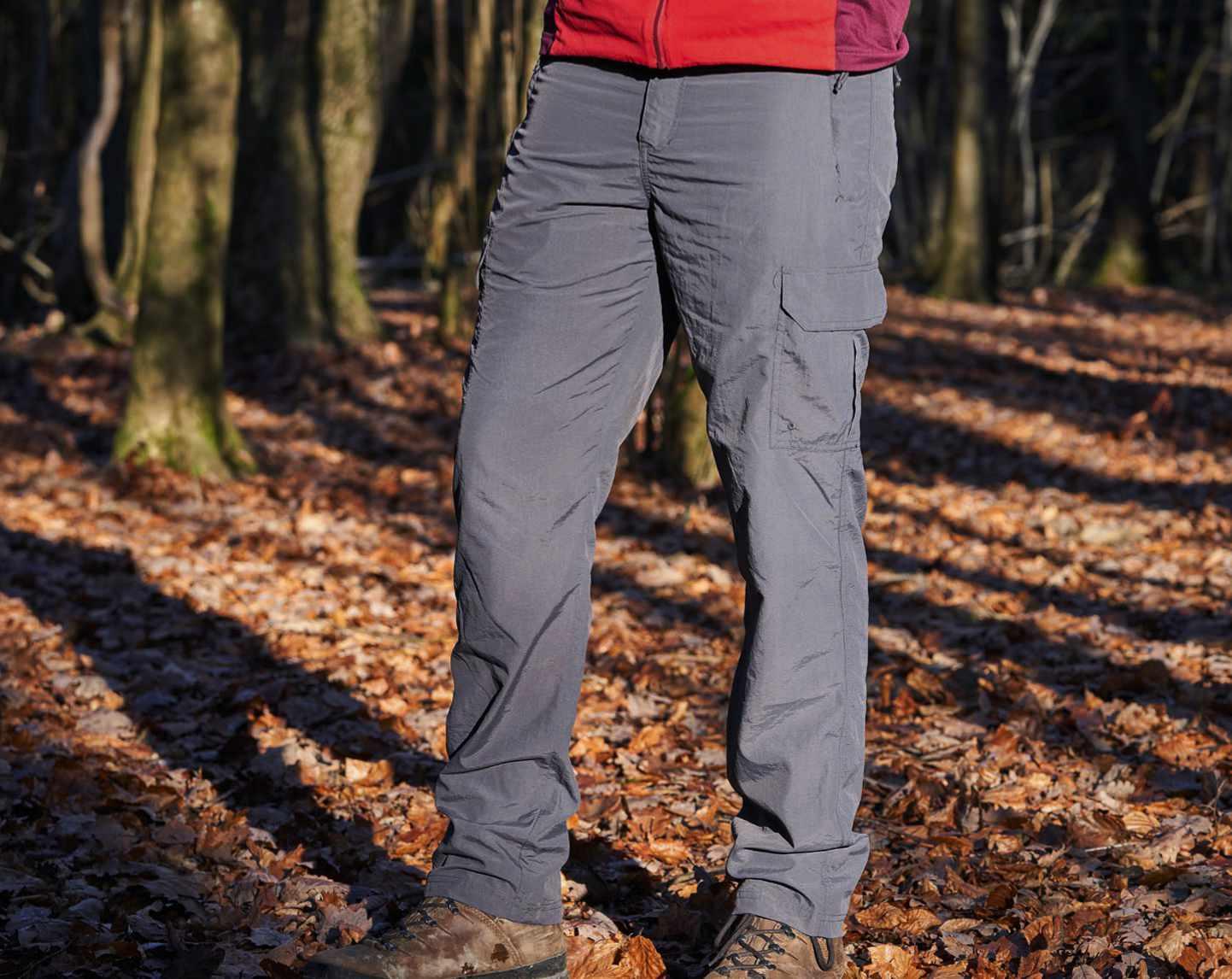

Rob Slade is a content editor for 220 Triathlon magazine and has extensive hiking and camping experience. He has been reviewing outdoor gear for over eight years.

Rachel Howatson writes for Countryfile.com. With a love of hiking and campervanning, she is most at home in the outdoors, where you’ll find her testing out the latest kit.



Share your best photos of the British countryside with us and you could see your image published in print or online and win a great prize.
Email your images to photos@countryfile.com
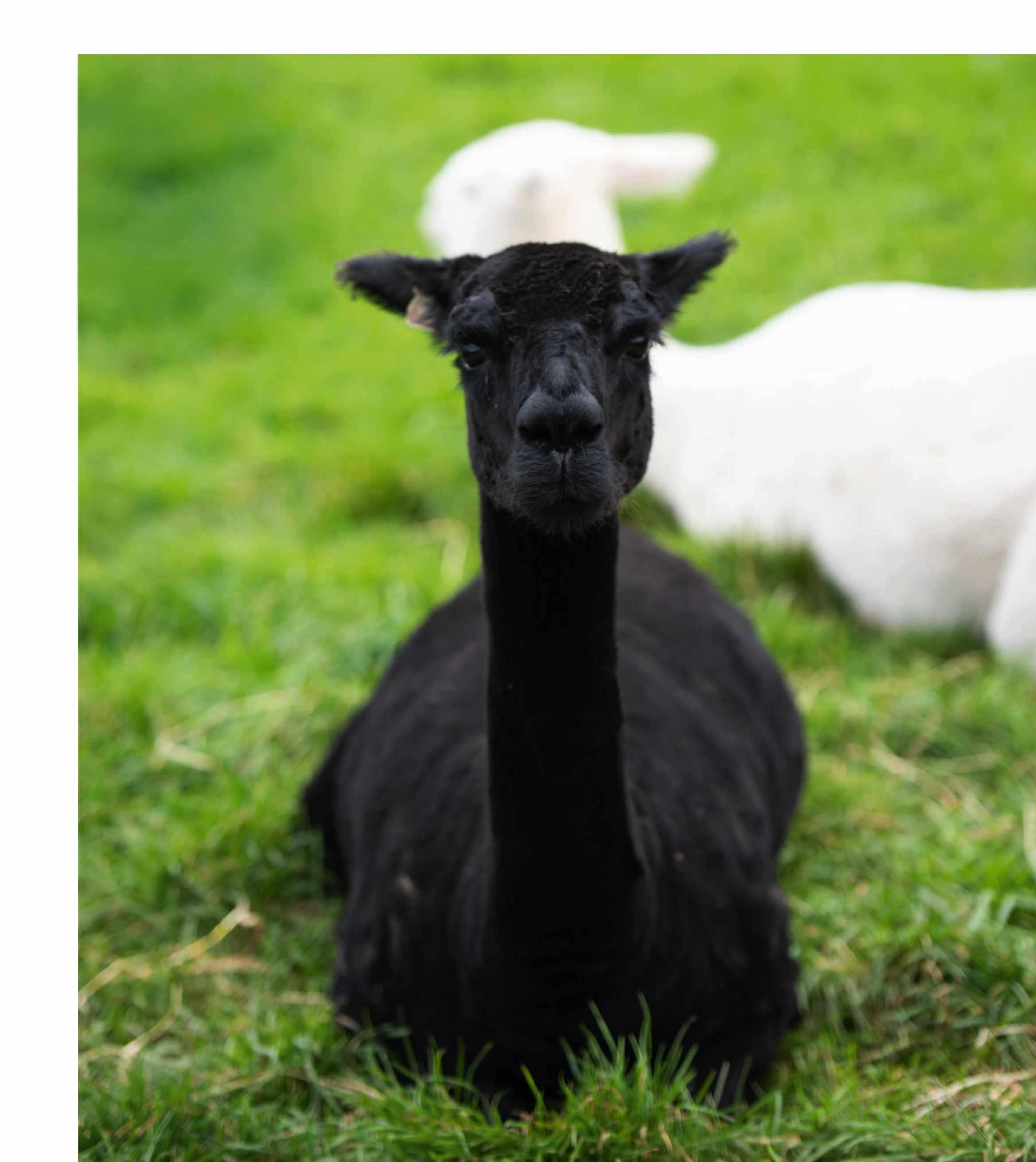
Where: Streamvale Open Farm, Belfast
“We took the kids for a fun day at Streamvale Farm’s pumpkin patch in October and met some very laidback and photogenic alpacas.”
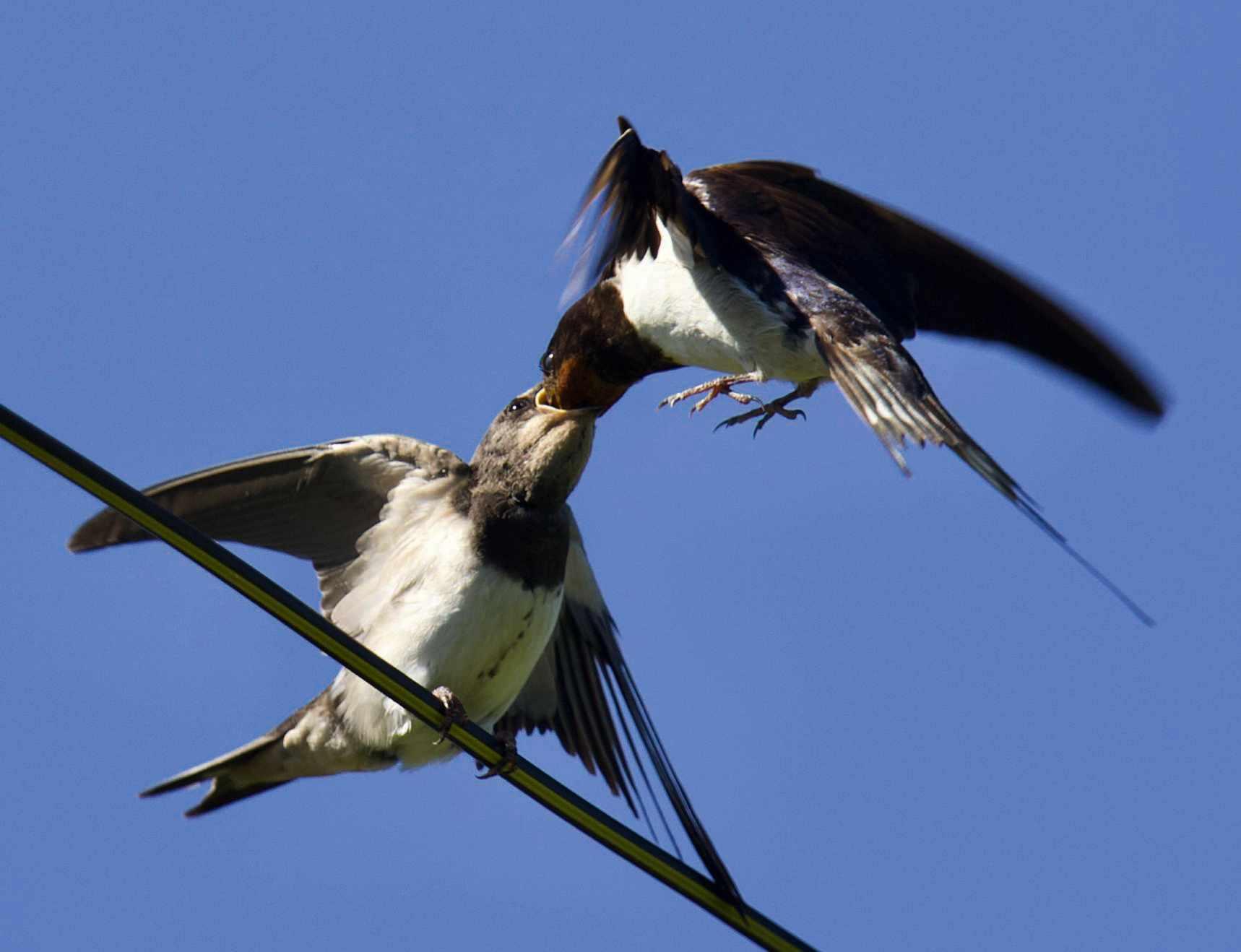
Where: Lower Moor Nature Reserve,
Wiltshire“I captured this in late September when the swallows were still feeding their young before heading south for the winter. I sat and waited for the birds to arrive, but they seemed unfazed by my presence.”
Where: Bushy Park, London
“I went to Bushy Park last August in the hope of photographing deer. I came across a number of them lying in the long grass and thought this male fallow deer’s splendid antlers made for a nice head shot.”
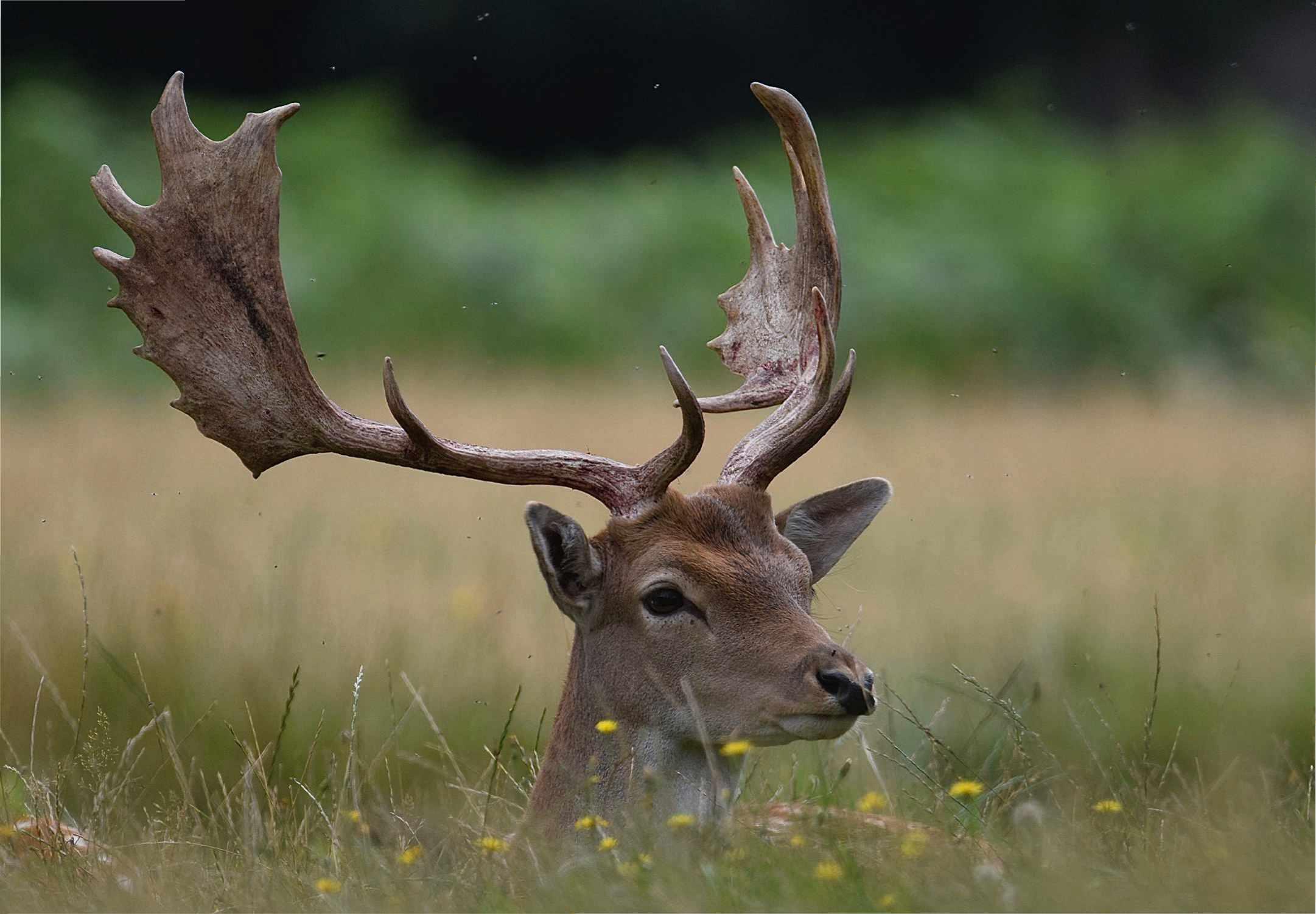
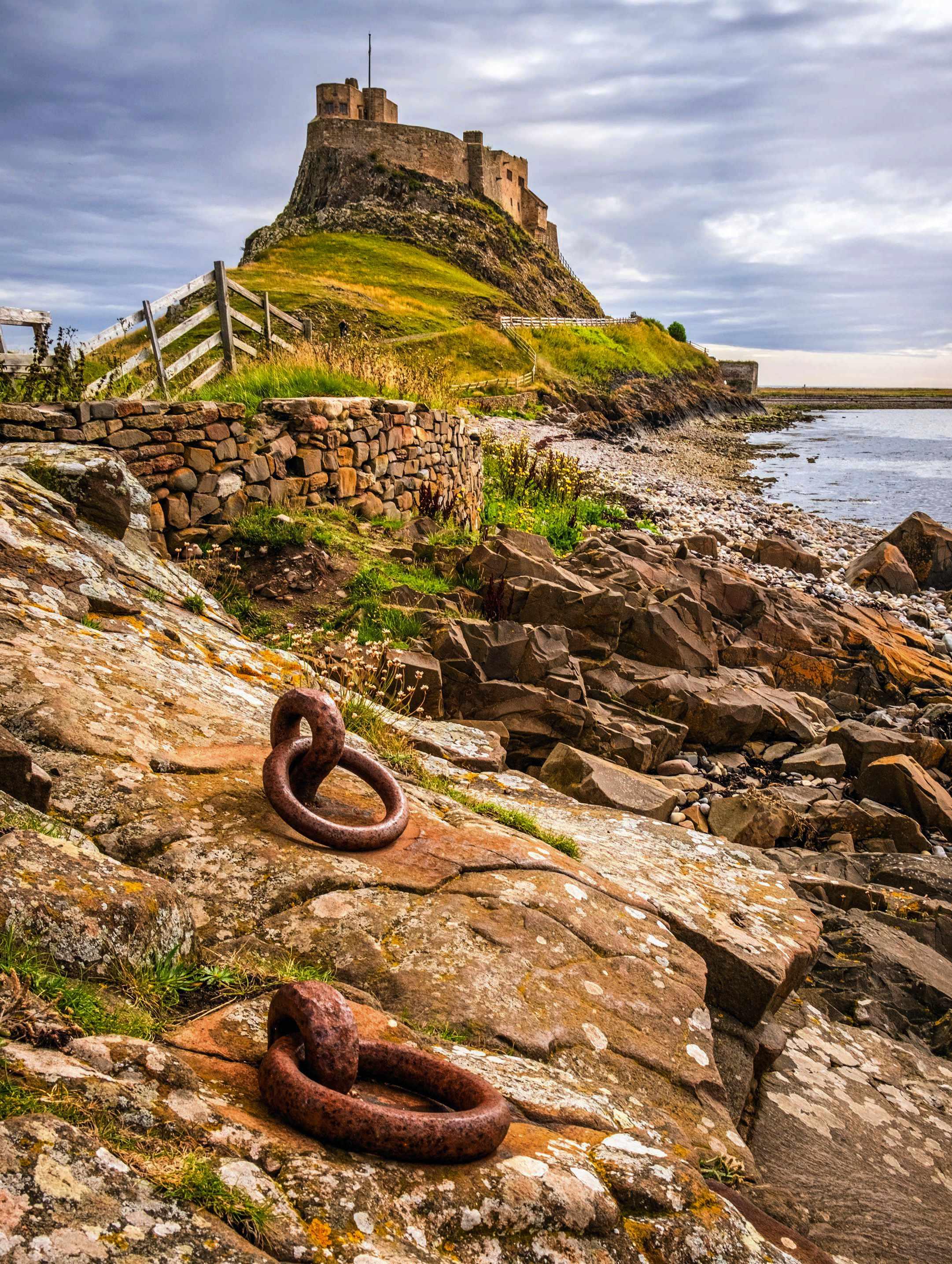
“We got up early to cross the causeway to Lindisfarne before the tide came in and had the place pretty much to ourselves. I captured this classic view of the castle, then we enjoyed a delicious scone and cup of tea!”
Share your views and opinions by writing to us at:
Have your say: BBCCountryfileMagazine, Eagle House, Bristol BS1 4ST; or email editor@countryfile.com, tweet us @CountryfileMag or via Facebook facebook.com/countryfilemagazine
*We reserve the right to edit correspondence
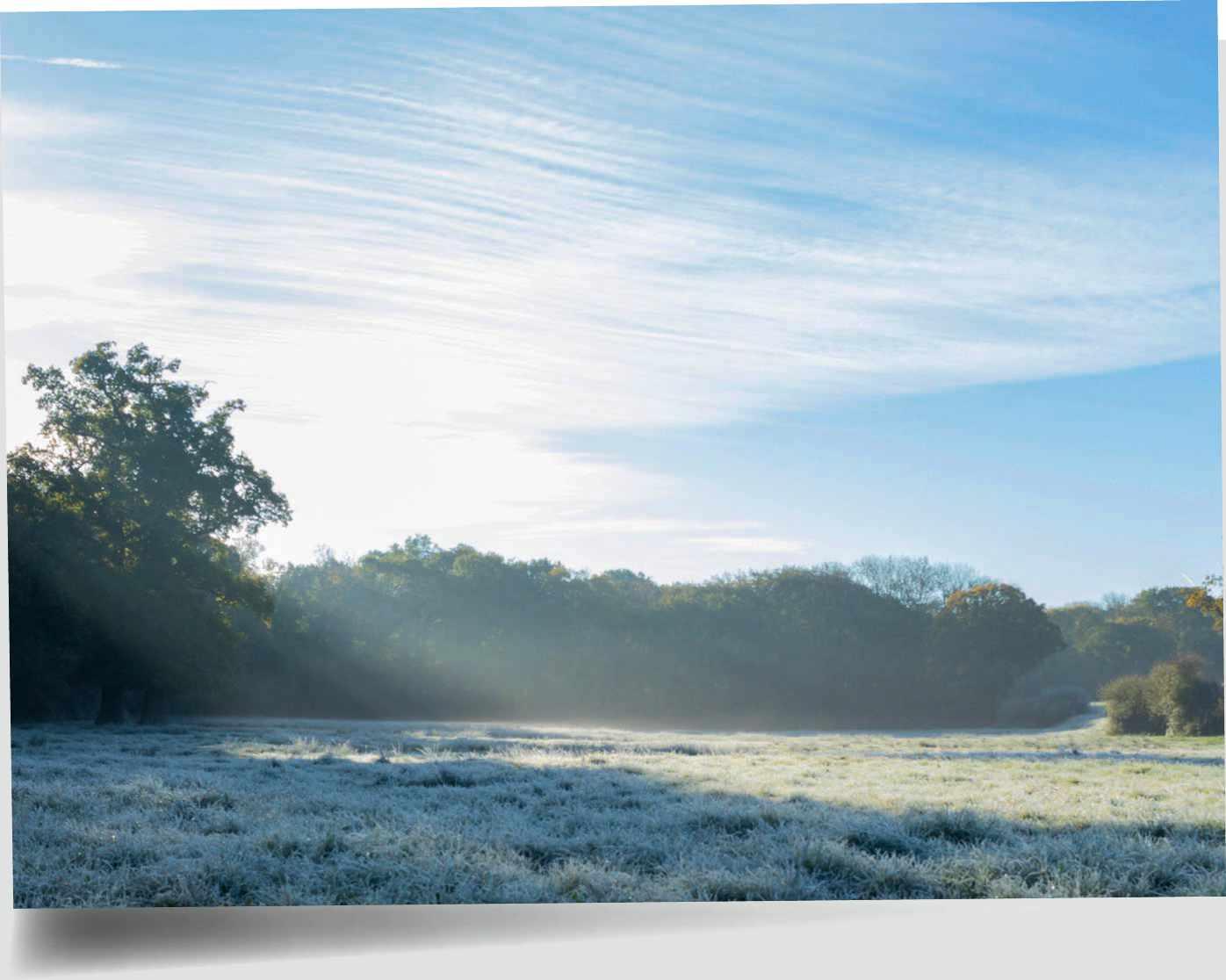
A frosty cold morning and Charlie the spaniel needed his walk. I defrosted the car and headed to one of our regular spots but, alas, I had forgotten my headphones – so no podcast, no phone calls. Within minutes, my walk took on a different personality. Walking through the woodland, I was able to hear the crisp crunch of the rusty carpet of oak and beech leaves. I heard Jenny Wren foraging among the brambles and saw her as she popped out fleetingly.
The crows were having a heated discussion and smaller birds were chitting and chatting. I caught a glimpse of moving branches, revealed to be antlers of a majestic dark brown stag camouflaged in the undergrowth.
Absorb nature’s beauty by ditching your phone and letting your senses wake
Can you please tell me why you are supporting the National Grid’s ‘Great Grid Update’ on your Facebook post. Some of this plan has not been finalised and it’s extremely upsetting to the people of East Anglia and it’s affecting our mental health.
As Countryfile is a wildlife and countryside programme, I am utterly shocked by BBC Countryfile Magazine getting behind this project. Joanne King, via email
We broke from woodland cover into an open field carpeted with shimmering frost, with the sun’s rays making even a common clover leaf glisten with beauty. Cow parsley, brown and crispy, looked like tall architectural spires and hawthorn, with its spiteful spikes, was covered in cherry red berries.
As always, Charlie rearranged fallen branches throughout the woodland, no doubt assisting nature in scattering seeds and spores ready for spring.
Maybe I need to learn a lesson from him and leave my phone at home more often.
I thought I appreciated being in nature, but writing this makes me realise that today I appreciated it so much more. Sandie Sach, via email
Editor Paul McGuinness replies: Thank you for your comments on the recent National Grid advertising. In a conversation as complex and potentially divisive as the current question of how we, as a country, meet our energy targets, it’s not for BBC Countryfile Magazine to take sides. I hope you’ll agree that in these pages, you will find balanced reporting on all aspects of a wide range of controversial subjects. It’s then for you, the reader, to make up your mind.
Regarding the article on hedgerows on Countryfile.com (‘England’s historic hedges would wrap around the world 10 times, new map reveals’), we appear to be losing more hedgerows than we are gaining.
Local and county councils do not have a finger on the problem, allowing planning permission without due process or consultation with local groups and residents, which results in the grubbing out of hedges for no real need, including old-growth oaks.
Photo: Alamy
I just wanted to let you know that I made the Sticky Toffee Orkney Broonie yesterday (January issue, page 42). The recipe was easy and straightforward to follow but I did have a bit of a wobble when the recipe called for 2½ tbsp of ground ginger. I’m afraid I chickened out from putting that amount in and added 2½ tsp of ground ginger. Was I right to follow my instinct or should I have been bolder? They are absolutely delicious by the way.
Jane Hardmans, via email
The Hebridean Baker Coinneach MacLeod replies: You were right to wobble, I did the same! But I wanted to keep to the traditional recipe from 1929 which certainly was generous with the ground ginger. I always love bakers who make a recipe their own and change things up to suit their palate or store cupboard ingredients. And I'm delighted you enjoyed the bake!
I live in Rugby, Warwickshire, on a Barrett/Wilson development. They removed 2,000 metres of hedging and were in the process of felling a number of oaks until local people took action. They apologised and the hedge was replanted. However, due to a lack of attention to detail, the newly planted hedge failed. We now have another developer across the road who is up to the same tricks simply because the council is not doing its job.
Roy Cutler, via email
I read Adam Henson’s column about farmers coming to the rescue (‘Farmers are the original first responders’, March issue) and I couldn’t agree more.
My wife and I were unlucky enough to get caught in Storm Ciaran last
October while at our house in Brittany and were amazed at how many farmers were out in their tractors clearing blocked roads and removing dangerous trees.
With all the will in the world, it would have taken the emergency services far longer in their responses had they had to contend with blocked roads first. Farmers really are the unsung heroes. John Musgrave, West Yorkshire
In your December crossword, the clue 4 down is “The term for ‘valleys’ in Wales”. Unfortunately, your solution ‘cwms’ does not exist (except to facilitate Beaumaris for 11 across).
Valley/valleys is the English version; in Welsh it is ‘cwm/cymoedd’.
Maura Bennett, Vale of Glamorgan
In the capital of the Isle of Skye, Portree, a short, insignificant road leads from the town centre to the council estate. The road is named Stormyhill Road. The poem is set in the late 1800s – I wrote it in 2009 following a holiday on Skye.
V Ballisat, via email
Stormyhill Road
He had taken to walking the Stormyhill Road
Heavy of foot to lighten the load
Treading the wild moor in the wind and the rain
Using bracken and heather to cut away the chain.
His love had departed from the northern shore
To seek her fortune and beg no more.
Looking back she saw him wave
As the boat steamed to its watery grave
Visions of eagles and shimmering lochs
Lichen coating on ancient rocks
On Stormyhill Road the wind would murmur
But Stormyhill led to nowhere except the falling of her hair.
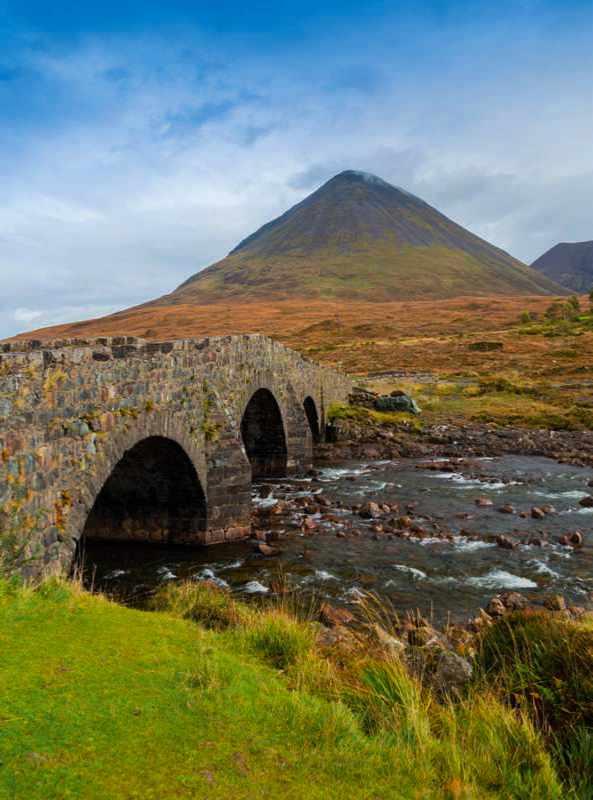 The Hebridean Baker’s tantalising Sticky Toffee Orkney Broonie
The Hebridean Baker’s tantalising Sticky Toffee Orkney Broonie
1 Sounds like a small bird’s electronic communications! (6)
5 Restrains a horse and walks awkwardly (7)
9 Earthwork like Offa’s ___ or Devil’s ___ (4)
10 Related to the countryside (5)
11 Cultivate... mushroom? (4)
12 E.g. put worm on a fish hook (4, 2)
13 Aggrieved textile workers who had a smashing time in the 19th century! (8)
15 Butterflies: e.g. grizzled, dingy and chequered – seen on vessels (8)
17 The black male of this game bird displays in a lek (6)
19/21 down Welsh National Park renamed Bannau Brycheiniog in 2023 (6, 7)
21 Fruit tree flowers (8)
23 Expanse of water at St Bees end of Coast to Coast path (5, 3)
25 Environmentalists’ vegetables? (6)
27 Cambrian valley sometimes called the ‘Welsh Lake District’ (4)
29 Gatekeeper butterfly’s alternative name is Hedge ____ (5)
30 These ruminants found wild in UK include sika and muntjac (4)
31 Acts bullishly... and raises a fee (7)
32 See 8 down

2 Direction sign to help walkers following a route – makes Mark weary (9)
3 Horse-riding trial including dressage, cross country, etc (5)
4 Fatal disease of sheep – a little bit, that is (7)
5 Wattle fences sportingly jumped over? (7)
6 Sturdy, muscular canine, British emblem (7)
7 Stage of a journey – and one of two used to walk it? (3) 8/32 across E.g. Peak District’s ‘Arbor Low’, or Ikley’s Twelve Apostles (5, 6)
14 Livestock markers... used by golfers? (5)
16 Groups of hounds that hunt... rams? (5)
18 Subsidiary peak of Ingleborough, Yorkshire – simple chap took a tumble (5, 4)
20 A fodder holder that would go to a horse’s head! (7)
21 See 19 across
22 Describes e.g. chemical-free farming (7)
24 Ancient object... found in Staffordshire (Lichfield) (5)
26 Fast-flying seaduck – get down from it! (5)
28 Scottish equivalent of an AONB; also an org. representing UK sheep producers – in Seton Sands (3)
SUBSCRIPTIONS AND BACK ISSUES
Annual subscription rates (inc P&P): UK/BFPO £61.75; Europe and Republic of Ireland £72.50; rest of world £76.50.




&
R219X POLARTHERM™ QUILTED WINTER FLEECE
This easy wear, windproof, luxury soft feel fleece provides supreme, bulk-free warmth for when temperatures drop.
shop. .com resultclothing
Heard the latest from Gardens Illustrated?
Our new podcast with top gardening guests

You can find Talking Gardens on Apple Podcasts, Google, Spotify, Acast and all good podcast providers. Subscribe so you never miss an episode.

Listen to Talking Gardens by scanning this QR code with your phone camera link.chtbl.com/TalkingGardens
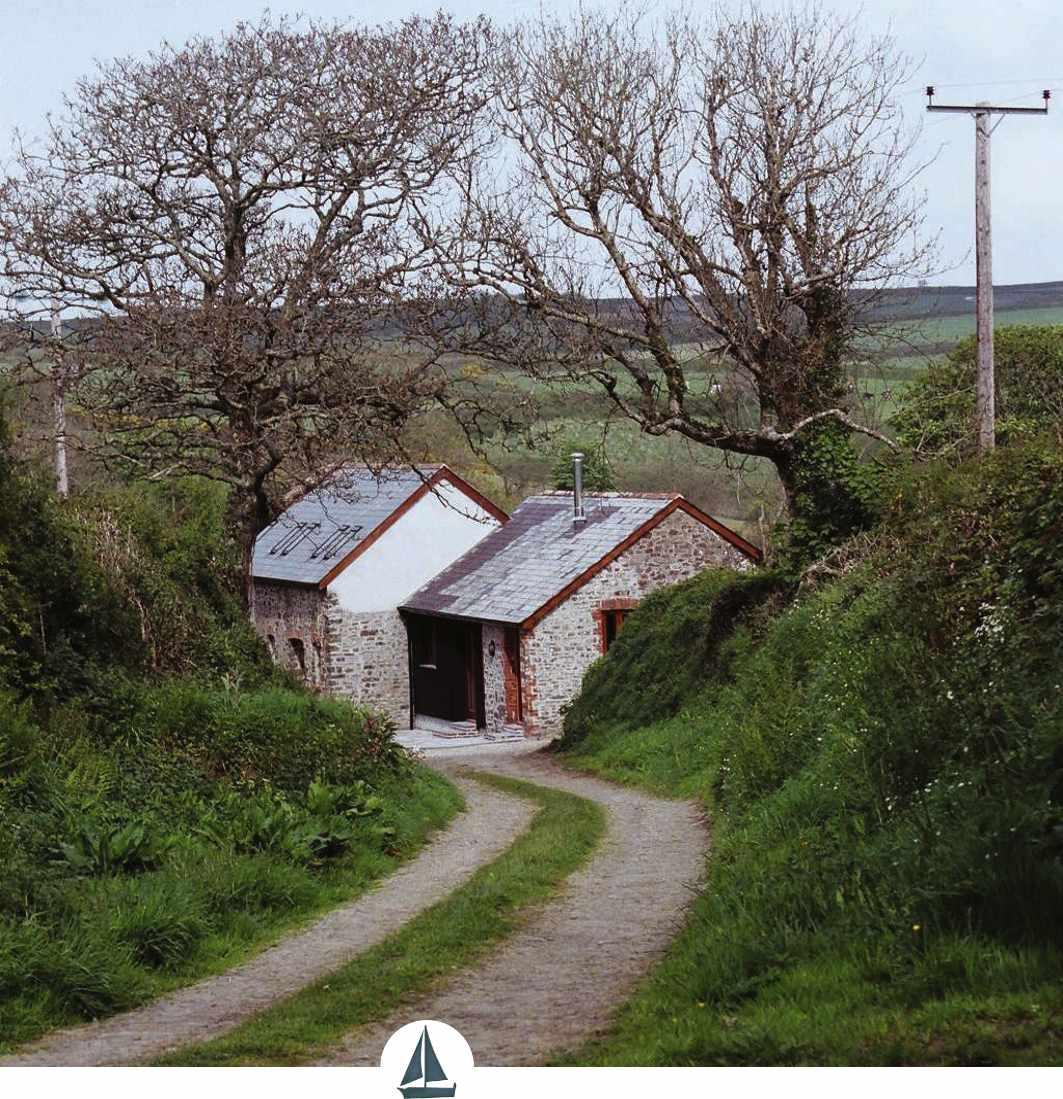
Do you seek luxury accommodation with many walks from your doorstep? Three Barn conversions sleeping two to eight. Central heating and woodburner. Pets welcome. Good pubs within 10 mins walk. Now with on site restaurant, Pattard Restaurant.
www.pattard.com – 01237 441311
www.pattardrestaurant.co.uk
Table reservations 01237 441444
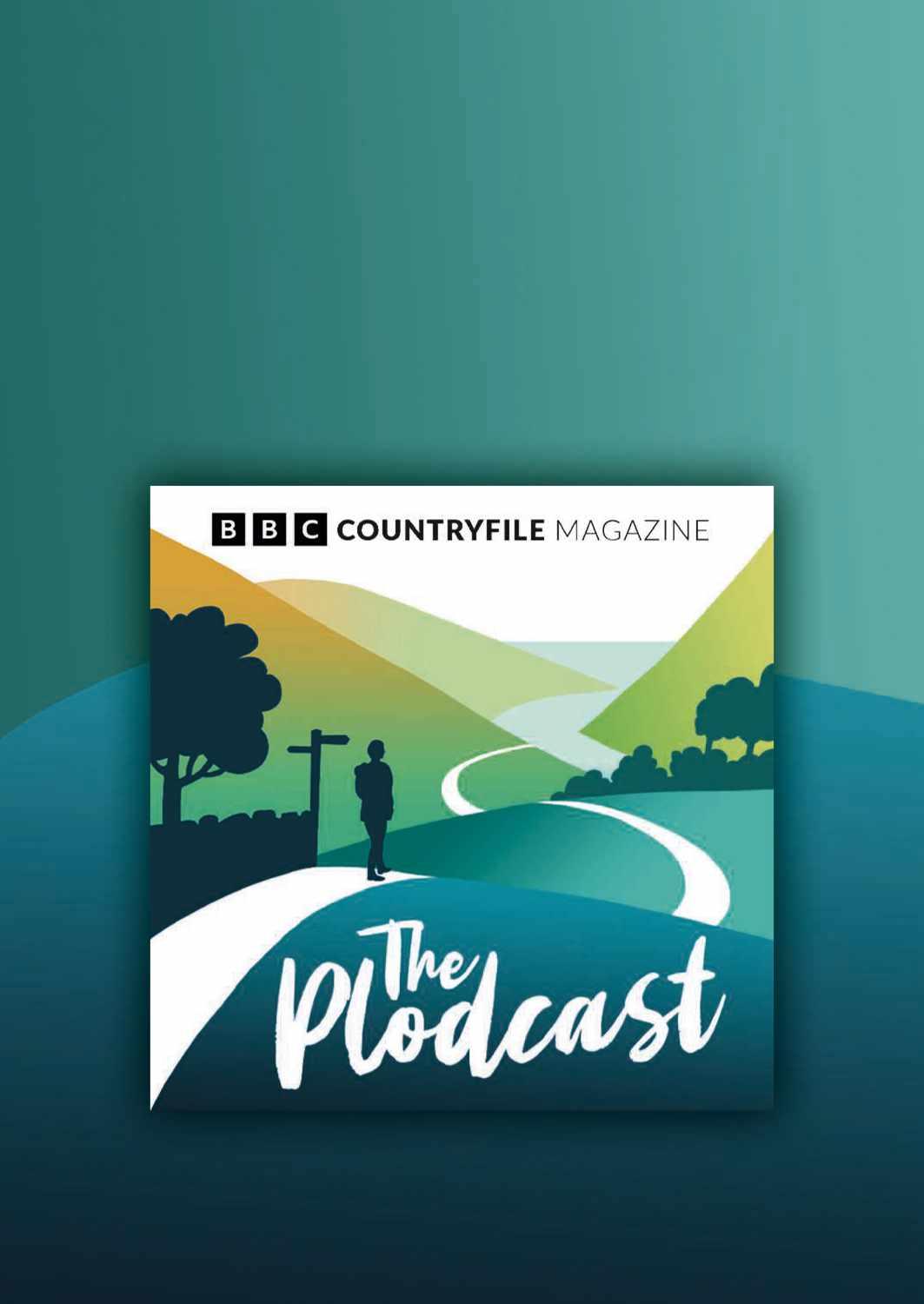





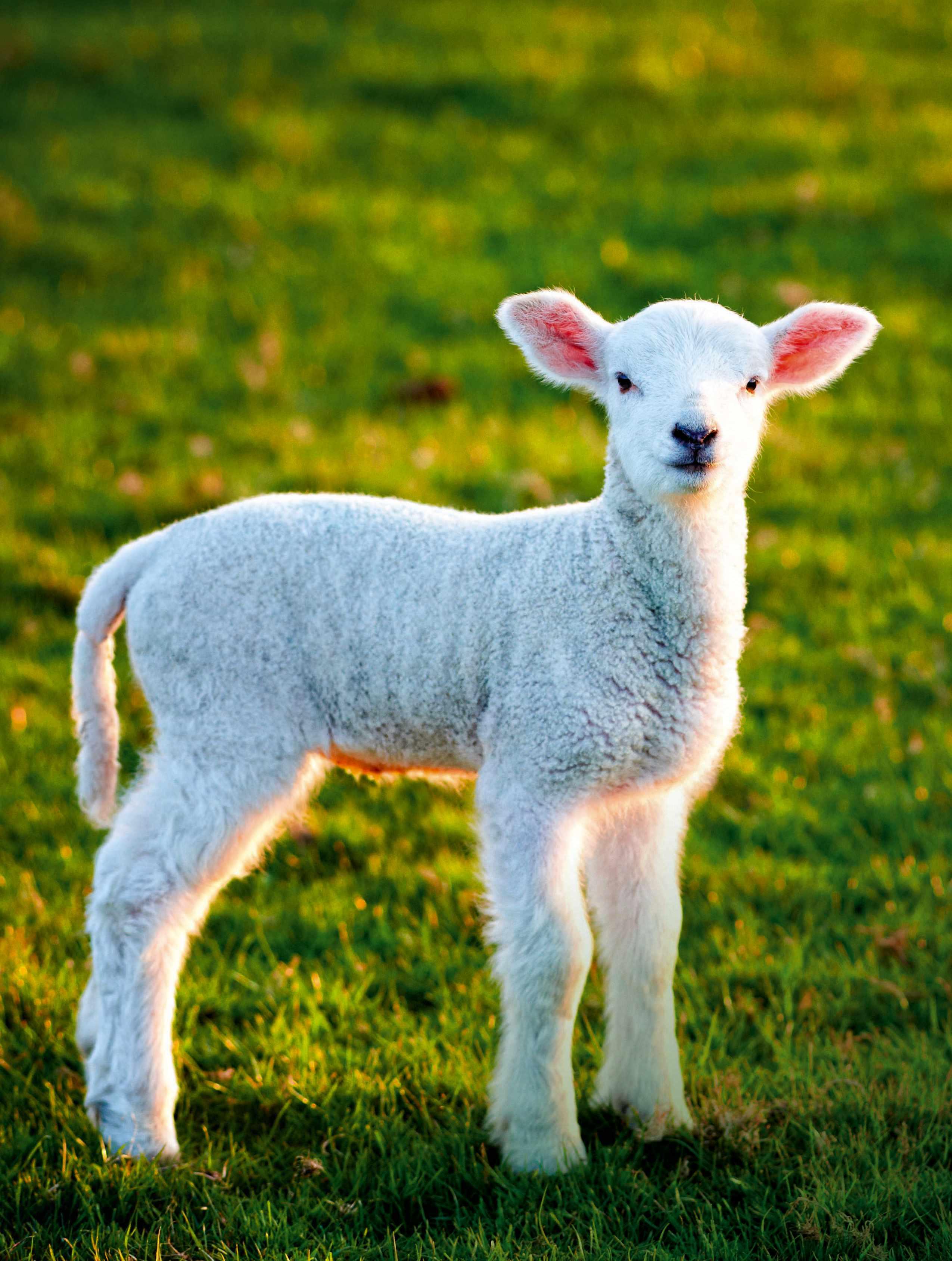
We Brits often moan about the rain. Well, we get a lot of it. But we should learn to love being out in wet weather, says Matt Gaw – it’s scientifically proven to boost your mood
Iremember seeing the rain coming. Slipping down the steep fell in sheets, in great greasy ribbons. Undulating.
Curving. Rippling over rocks and flashing light and dark, striped like a mackerel. I watched it moving in roving, quick-eyed, hungry-mouthed shoals, closer. Closer.
There was sound, too. A growing shush that reminded me of the murmuration I watch every year over the valley fen; a mass of birds that expand and contract in a billowing black pulse of wing beats and fluttering hearts. So many the air shakes with them. Fizzes.
explore and understand where weather comes from, how it transforms light and mood, how it shapes landscapes, language and, well… us.
Walking, running and swimming in rain –whether a heatwave-breaking storm, a shower, the downpour over Cumbrian crags, or a drizzle – has shown me that, contrary to cultural tropes, there is little sadness in the rain. In fact, it feels like the opposite. There’s a lightness, a joy in experiencing something fundamental about the world. It is a feeling backed up by science. Because when the clouds burst, there is something other than water in the air.
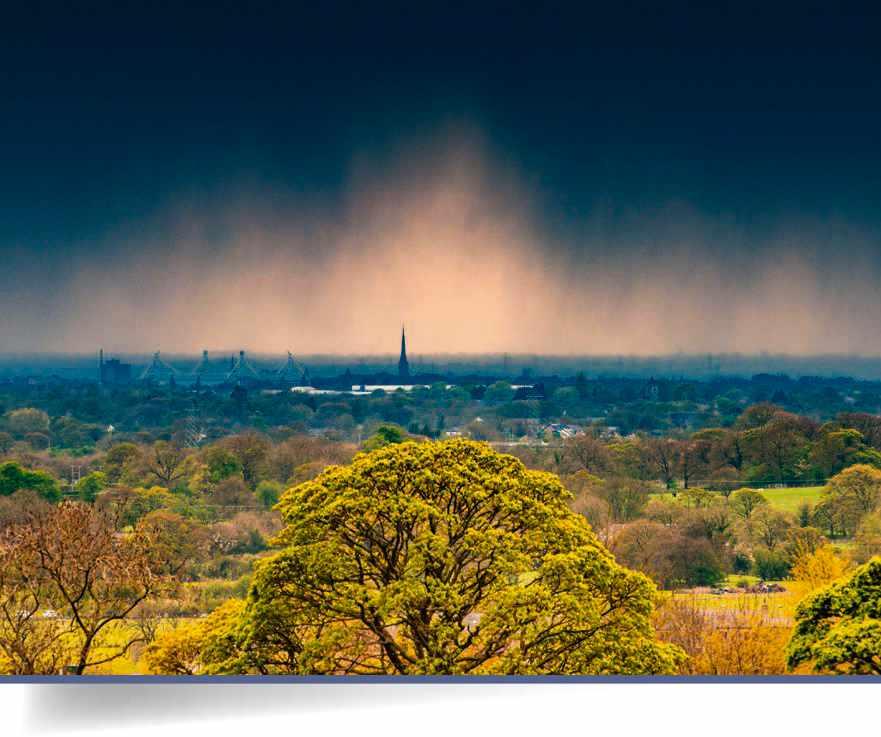
And then I wasn’t thinking about the starlings anymore. I wasn’t looking at the rain nor listening or thinking about anything – I was in it. I recall that there was a moment of shrinking away from it, of lowering my head, squinting; all the things we do to make ourselves physically smaller and escape the sensation of rain, before I reminded myself that I had come here for just this purpose: to get rained on in the wettest inhabited place in the UK.
“There is little sadness in rain. In fact, it feels like the opposite. There is a lightness, a joy”
Looking back now, I understand that driving for eight hours to Seathwaite in Cumbria to seek out the kind of weather usually written off as the worst thing possible – “well, at least it isn’t raining” –might seem eccentric. I get it. I’ve read the books, seen those films where the skies weep, raindrops stick to windows and slide down the glass like tears. Rain is metaphor for mood and misery. It is damp and dour. Soaking and sombre. It is the rain on our parade; it is the pantomime villain’s sibilant lisp.
But, following a summer that never seemed to let go, causing heat to ratchet to record-breaking, spit-sizzling heights and lurk like a physical presence long after sundown, I started to dream of rain and I resolved to not just brave ‘inclement’ weather but to actively seek it out and enjoy it: to

Negative ions are atmospheric molecules charged with electricity. They are most abundant by rivers, beaches and mountains, where air molecules are broken up by moving water. They are found near breaking waves, by waterfalls and they are there, too, when it rains.
These negative ions, which are breathed in, transferred to blood and brain, have been linked with biochemical changes that impact positively on mental health. A 2013 review of scientific literature published between 1957 and 2012 found that negative ions could have therapeutic effects on depression. In short, while we might associate wet weather with gloom and noir and misery, being out in the rain can actually boost our mood.
Dorothy and William Wordsworth were no strangers to walking in the Cumbrian rain – whether it was ‘yukken it down’ or ‘stotting’ (raining so hard it bounces off hard surfaces). They found beauty in ‘soft rain’ and the movement of showers from hill to hill that was no “less grateful to the eye” than “interwoven passages of gay and sad music”. They also recognised that to be out when it was raining made it possible to see the transition in weather – to see and feel how everything in this life is changing and dynamic.
Perhaps this all feels too Romantic. So there is at least one other advantage of heading out in all weathers – you’ll probably have the place to yourself in all its wild and wet wonder. CF
Matt Gaw is a writer and naturalist. His book InAllWeathers:AJourneyThroughRain, Fog,Wind,IceandEverythingInBetweenis out on 4 April (Elliott & Thompson, £16.99).
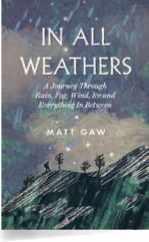


If you’re enjoying a more active life, Jointace provides expert nutritional support, including Glucosamine, chondroitin and much more. Plus vitamin C which helps support normal collagen formation1 . Use in combination with Jointace topical range Patch, Gel or Magnets. For support inside and out, that can be used for as long as needed. from , , supermarkets, chemists, health stores & www.jointace.com. Stockists may vary.


